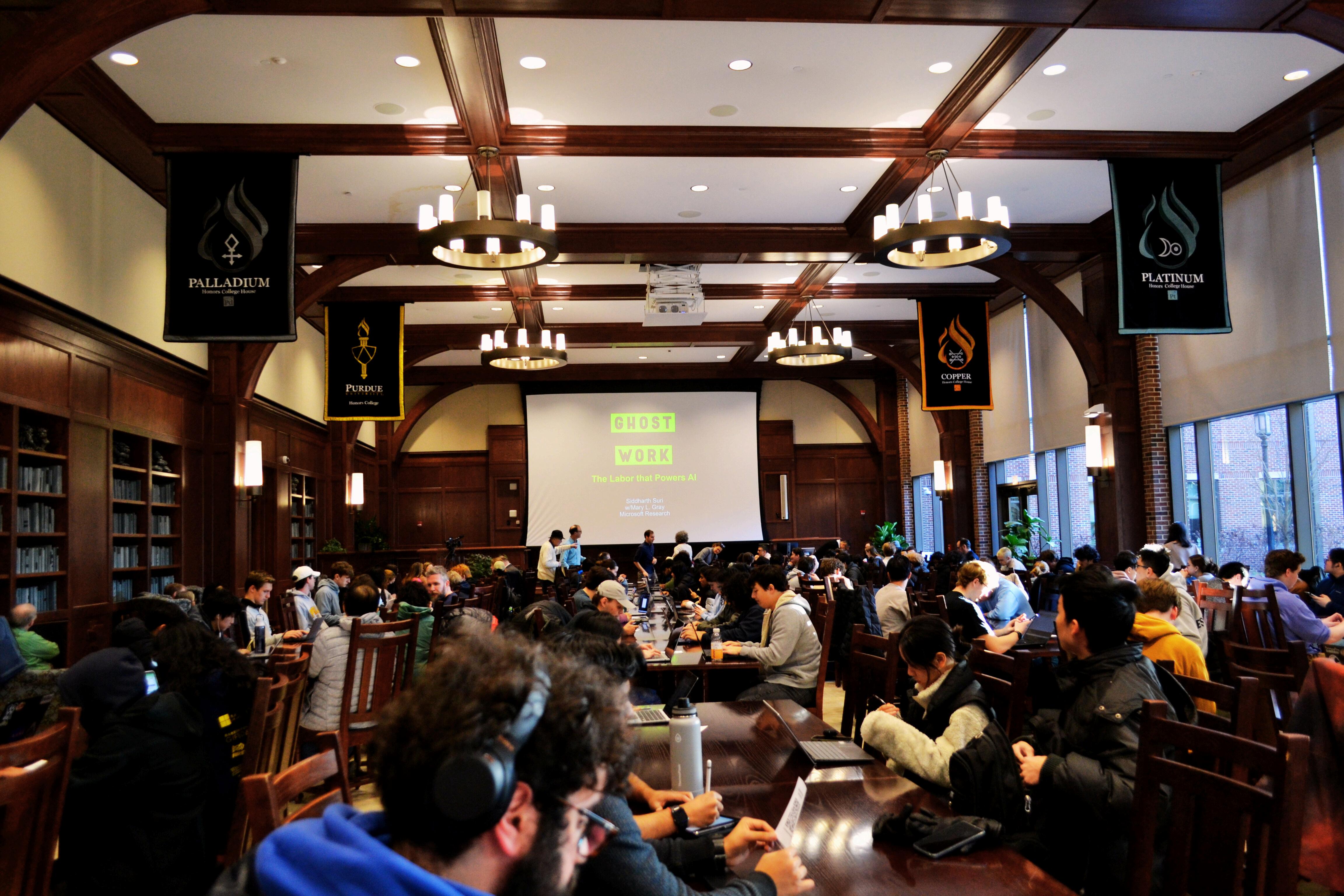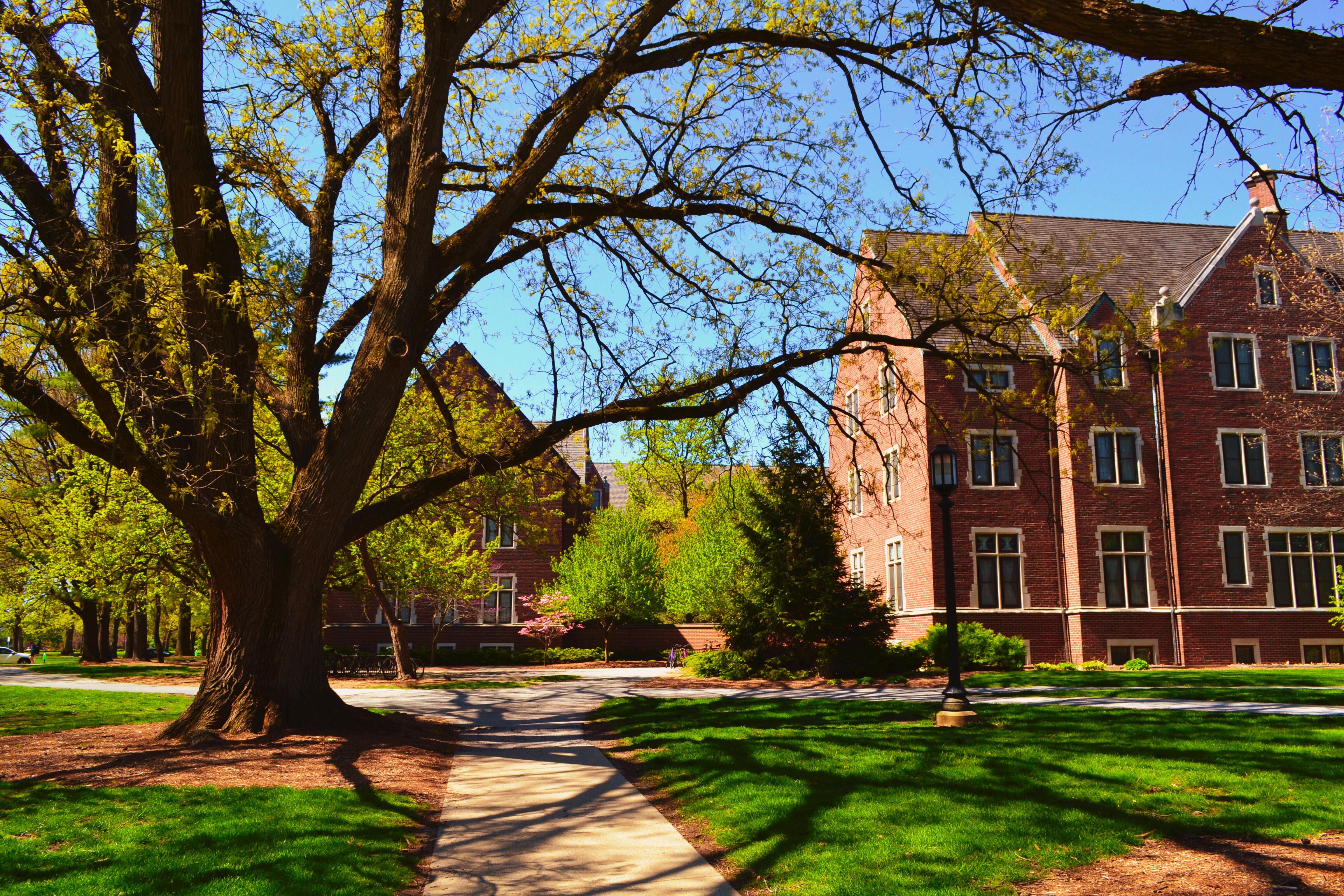2024 Spring

A faculty and student-led magazine






A faculty and student-led magazine




FORGE Magazine was launched in Spring 2023 with the aim of creating digital and print spaces for the Academic and International Affairs Unit in the John Martinson Honors College. The principal aim of this magazine is to communicate about our work to public audiences within and outside Purdue University. Under Dr. Krishna’s mentorship, two student editors learned to communicate about their work, their peers’ work, and faculty work effectively to broader audiences. The social media platforms serve as digital documentation throughout the year to highlight key moments within the College, and the editorial teams then works to curate and design the magazine, which is published in the summer of that academic year.
KRISH191@PURDUE EDU

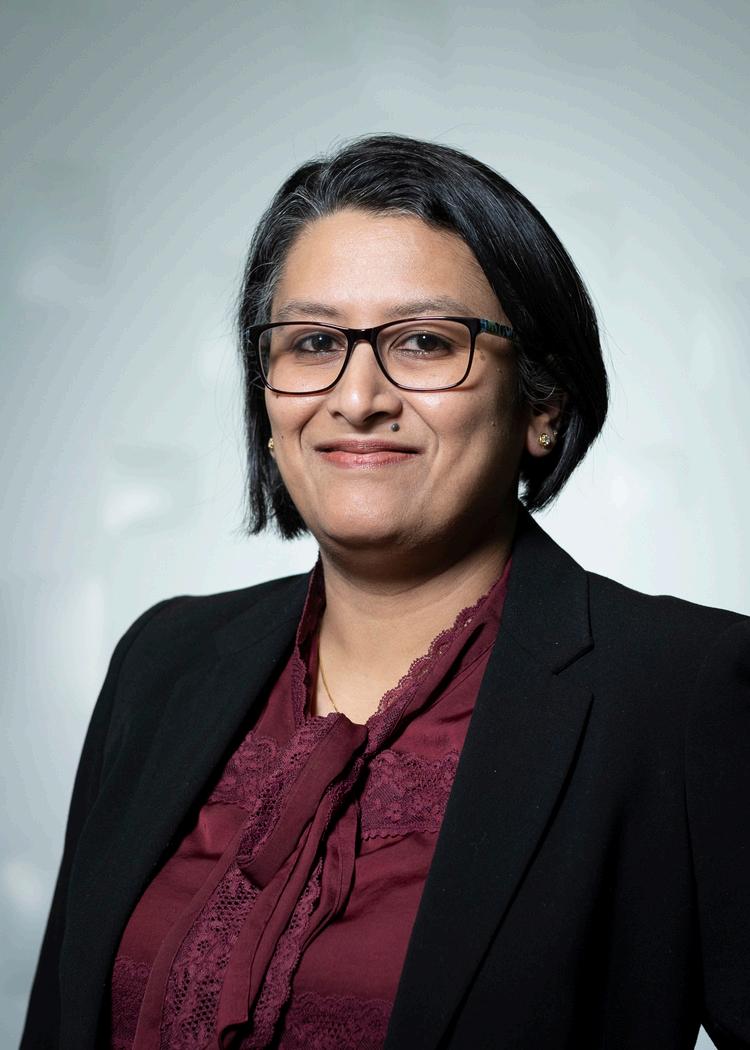
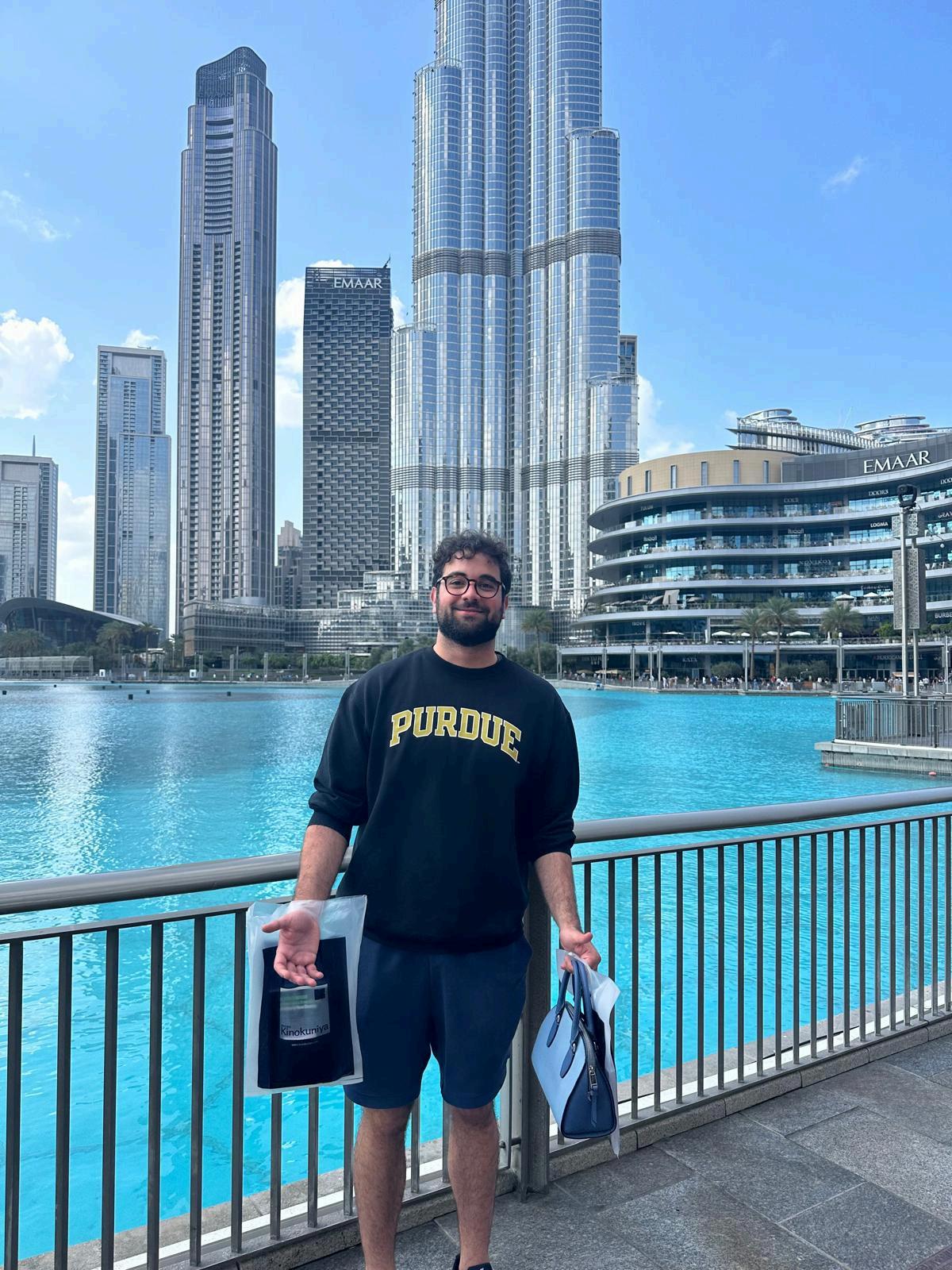
@PURDUEHONORS STORIES
@PURDUEHONORS ST
e at Purdue University, double majoring in Political he currently is one of the two interns/editors na with “Ideas” magazine and “Forge” a publication he work of faculty, students, and staff at the JMHC
Karim Hijazi is a senior at Purdue University, majoring in Political Science. He is currently working alongside Dr Krishna and Annie Cash as a media intern and editor for “FORGE,” a publication dedicated to highlighting the work of faculty, students, and staff at the JMHC
Ashima Krishna is Clinical Associate Professor in the John Martinson Honors College. She is an architect, urban planner, and historic preservation planner whose research spans the management of historic urban landscapes and adaptive reuse of religious historic structures and landscapes, with a particular focus on intersection with community development and equity issues and resulting policy challenges.


By Catharine Patrone Chief of Staff, John Martinson Honors College
Begun in 2013 by building on a long-standing legacy of disciplinary honors programs and the University Honors Program (est.2004), the John Martinson Honors College brings together highly motivated students from all majors into an intellectual and residential community of scholars. Our core values, or pillars, on which we have built the Honors College are interdisciplinary academics, undergraduate research, community and global engagement, and leadership development. The four pillars are the DNA of the John Martinson Honors College. As you read about the students, faculty, and staff in the John Martinson Honors College and their learning, teaching, research, and accomplishments in the pages of FORGE, you will see the four pillars as the college’s genetic make-up essential to its development and functioning as an organization
The ten-year development of the John Martinson Honors College is the product of many people, inside and outside of the college, for which we are ever grateful for their hard work, energy, and generosity. Myriads of highlights and high points emerged during the past decade and represent the collective effort: 300% growth in the college’s enrollment and the capacity to serve the increased demand from highly motivated students seeking a Purdue education the naming of the college by John Martinson and his transformative $25 million gift the opening of Honors College and Residences in West Lafayette: 324,000 square foot academic and residential complex the recognition by College Transitions in being ranked among the top 10 honors colleges in the country
Now it is time to say hello to the next ten years of the John Martinson Honors College. I take inspiration from the Hello Walk near Memorial Mall. During the first few days of fall ’24 semester, we said ‘hello’ to ~150 honors students at Purdue UniversityIndianapolis, a second location of our campus Soon, we will say ‘hello’ to our new Associate Vice Provost and Dean, Dr Felisa Higgins.
I am ‘ever grateful, ever true’ for the first volume of FORGE magazine and the editorial team of Annie Cash, Karim Hijazi, and Dr. Krishna as they have chronicled the key moments within the college since spring 2023.
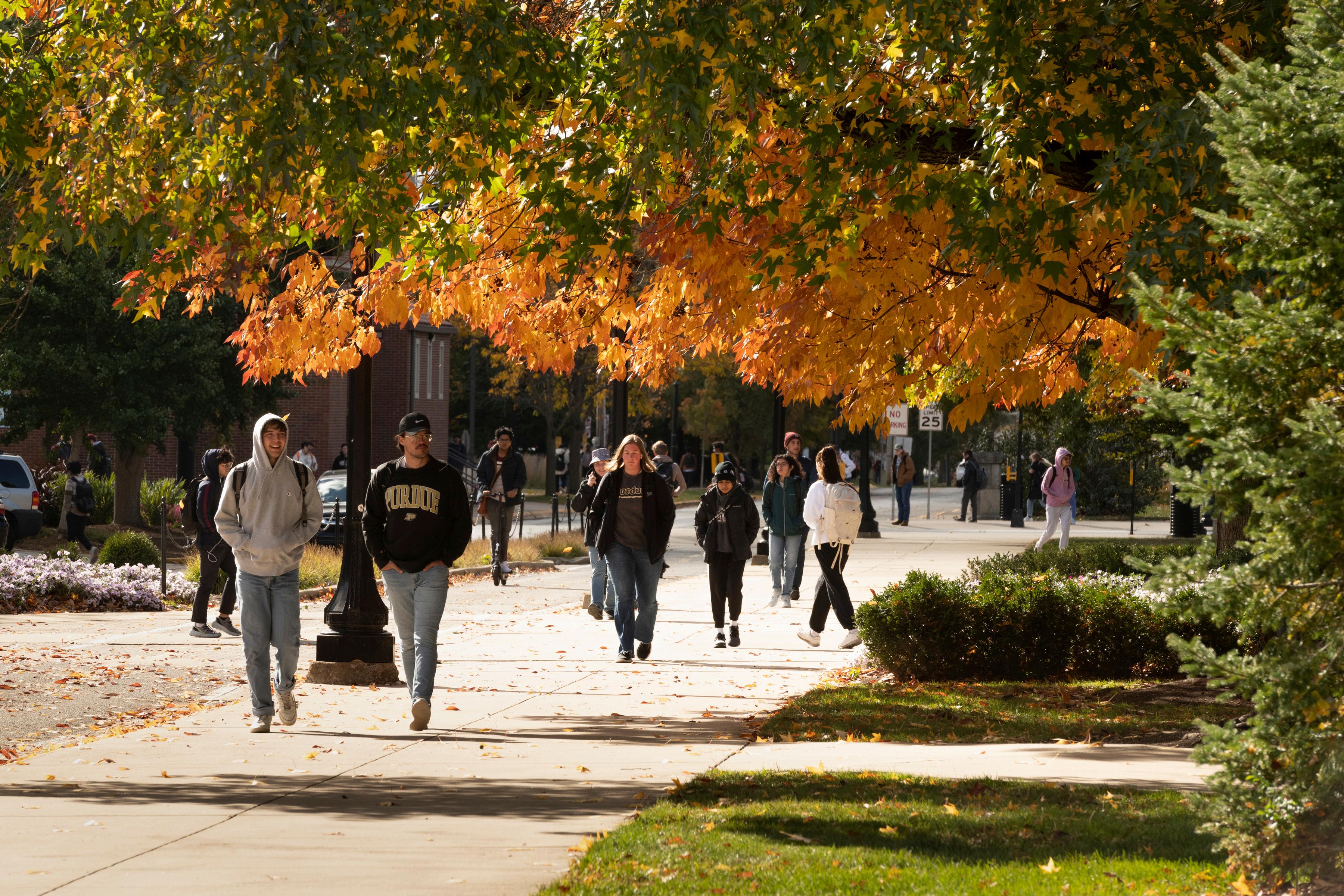
Here we showcase the diverse programs within JMHC that faculty, students, and staff participate in. These programs also allow students to gain leadership experience and a greater sense of community within and outside the JMHC.
In this section, we show off the countless Study Away (also known as Study Abroad) experiences open to all Purdue students that allow them to explore the world through active learning, travel, and intercultural pedagogy.
82
This section highlights research conducted by JMHC students, staff, and faculty. Many projects highlighted here have been collaborations between faculty and students.
Through this section we recognize members of the JMHC for their awards and accolades. Find faculty, student, and staff excellence here!
In 2023, the JMHC celebrated its 10 year anniversary at Purdue University This section highlights the various ways the College was celebrated, and showcases the publication ‘Forging the Future’, spearheaded by Dr Emily Allen
This section lists the faculty and staff members of the JMHC.

One of the top-ranked honors colleges in the country, the John Martinson Honors College provides expanded learning and experiential opportunities for highly motivated students. Courses taught by honors faculty strengthen the impacts of students’s majors through exposure to interdisciplinary academics. The residential model of the college brings high-performing, award-winning students together in a welcoming, supportive community.

3263
Total number of students enrolled in the John Martinson Honors College in 2023
17
Total full-time Clinical faculty from a variety of disciplinary backgrounds teaching a range of HONR courses


Honors Mentors Program
Vaneli Crespo-Cruz is a junior majoring in Biology and minoring in art and design. She is one of the John Martinson Honors College's many mentors who helps guide first year students joining the Honors College in the HONR 19901 and HONR 19902 courses. Vaneli says, “since I’ve joined, the Mentor Program has become my home within the Honors College at Purdue. The leadership development aspect has taught me so much about myself, and given me confidence to do things like apply for Presidency!”

Honors Ambassador
Sophomore Nate Albin is majoring in social studies education and history. Nate serves as one of the Honors Ambassadors in the John Martinson Honors College. Taking on a role as an Honors Ambassador is one of the many ways students in the Honors College can make themselves world-ready. Nate says, “for many prospective students and families, the college decision process can be a lot to handle. Being an Honors Ambassador, I hope I can make that process easier while also showing all the JMHC’s great qualities.”
Honors Ambassador
Sophomore Ella Hubbard is studying Brain and Behavioral Sciences on the pre-med track and minoring in Spanish. She is also one of our Honors Ambassadors and serves as a friendly face for the Honors College greeting students, giving tours, and answering questions potential students have about the John Martinson Honors College. Ella says, “I love being an honors ambassador. It helped me get involved in the honors community as a freshman, gain valuable leadership experience, and meet some amazing people Getting to give tours and talk to prospective students about JMHC has made me even more grateful for all the opportunities the Honors College has.”
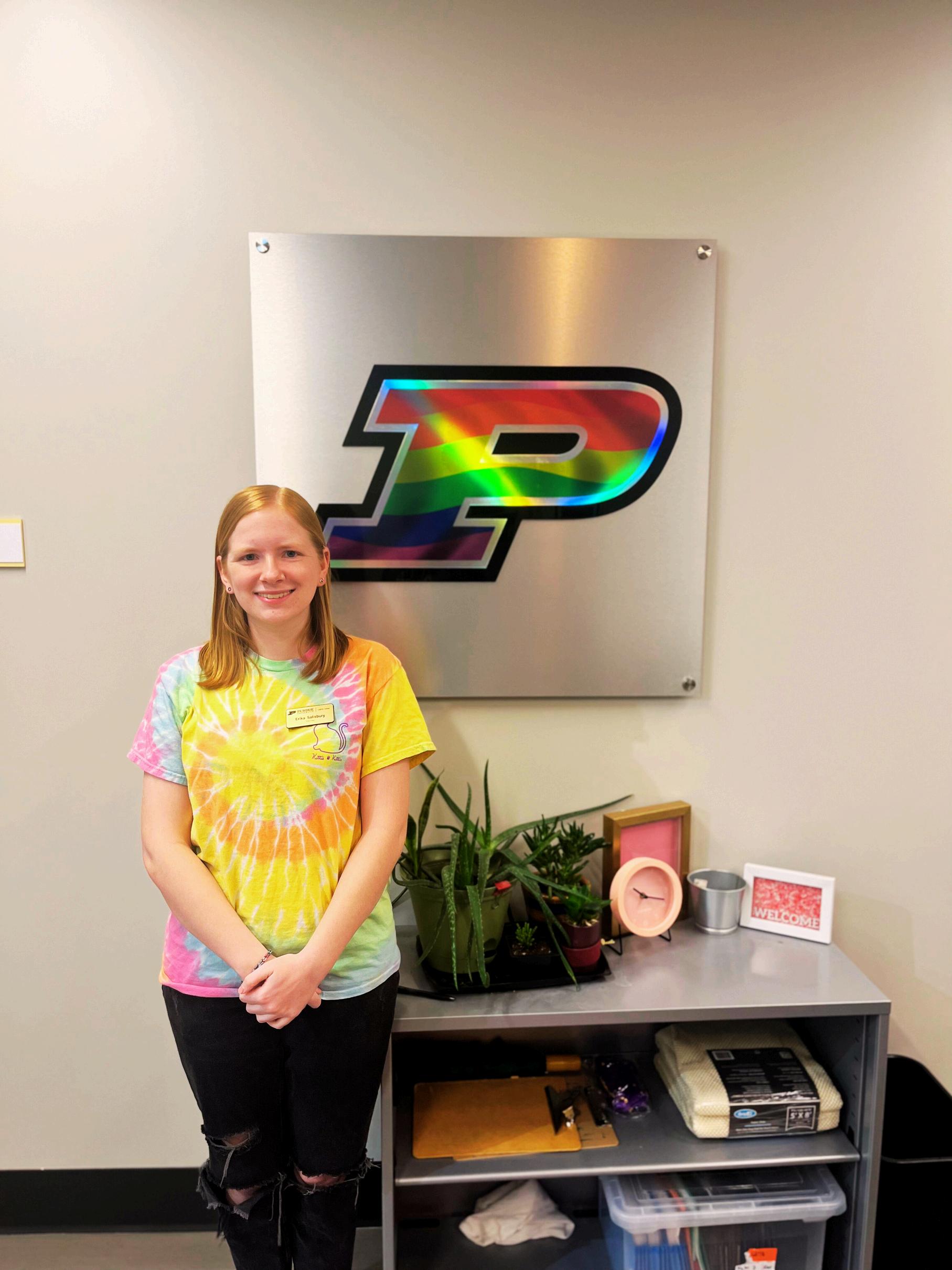

Erika Salisbury is a sophomore in the Honors College and began working at the LGBTQ center in early 2022. She works at the front desk, welcomes everyone, and often gives tours of the center in its new home across from Hicks Underground Library. The big message Salisbury wishes to get across to people is that everyone is welcome at the center. There are many amenities in the center that are for everyone. Including a kitchen, rentable rooms, snacks, and games. The center holds many events for everyone as well. Events at the LGBTQ Center range from drag shows to craft nights. With the new space, the center is able to host a lot of people for each event or even if you’re just passing in between classes for a snack.

Karim Hijazi, a senior majoring in Political Science, took part in a new HONR course taught by clinical assistant professor Dr. Temitope F. Adeoye named “Contextualizing Youth Learning ” With the new skills acquired from Dr. Temi’s lectures, Karim, alongside the rest of the class, would implement what they learned at the afterschool program in the Briarwood Apartment Homes Community in Lafayette called “Heads-Up.” According to Karim, “volunteering at Heads-Up this semester has truly been an amazing opportunity! I have met so many amazing people and experienced firsthand how important it is to help our city’s youth thrive in their academics and learning.”
Sophomore Paige Hensley is majoring in elementary and special education in the College of Education. She created the TREKS Pen Pal course that launched in the Spring 2023 semester This course allows Purdue students to be pen pals with elementary aged students. Purdue students are able to make them bracelets, drawings, and notes to send to their buddies. Paige says, “this class will likely become my undergraduate research and scholarly project. I specifically used the John Martinson Honors College because of the interdisciplinary aspect and the diverse group of students I could recruit for the Pen Pal program.”



Sophomore Sam Thengvall is studying mechanical engineering and also pursuing a minor in Spanish and global engineering. The combination of these degrees will allow Sam to have an interdisciplinary outlook on engineering with internships and job opportunities in the future.
Sam says, “I am choosing to pursue minors so that I can pursue my passions outside of engineering and add an element of versatility to my resume. It was also easy to fit them in, so there was no reason not to!”
Senior, Katie Allen, is currently in Dr. Nadia Brashier’s Cognitive Neuroscience and Misinformation Lab (Dr. Brashier is now faculty at University of California San Diego but is still mentoring Katie through her project).
Katie says, “I am completing an independent undergraduate research project through the Psychology Research-Focused Honors Program investigating the role of repetition on perceived creativity of ideas.”
Sophomore Annette Winterland is majoring in Environmental and Ecological Engineering She spent this summer working as an intern for the public works department near her community. Through this experience, she was able to learn how to tackle real life engineering problems while gaining hands-on experience. Annette says, “my engineering internship in the public works sector taught me about managing engineering projects and assisting people in the community. My internship was a rewarding experience because it allowed me to apply what I have learned at Purdue to actual engineering problems.”

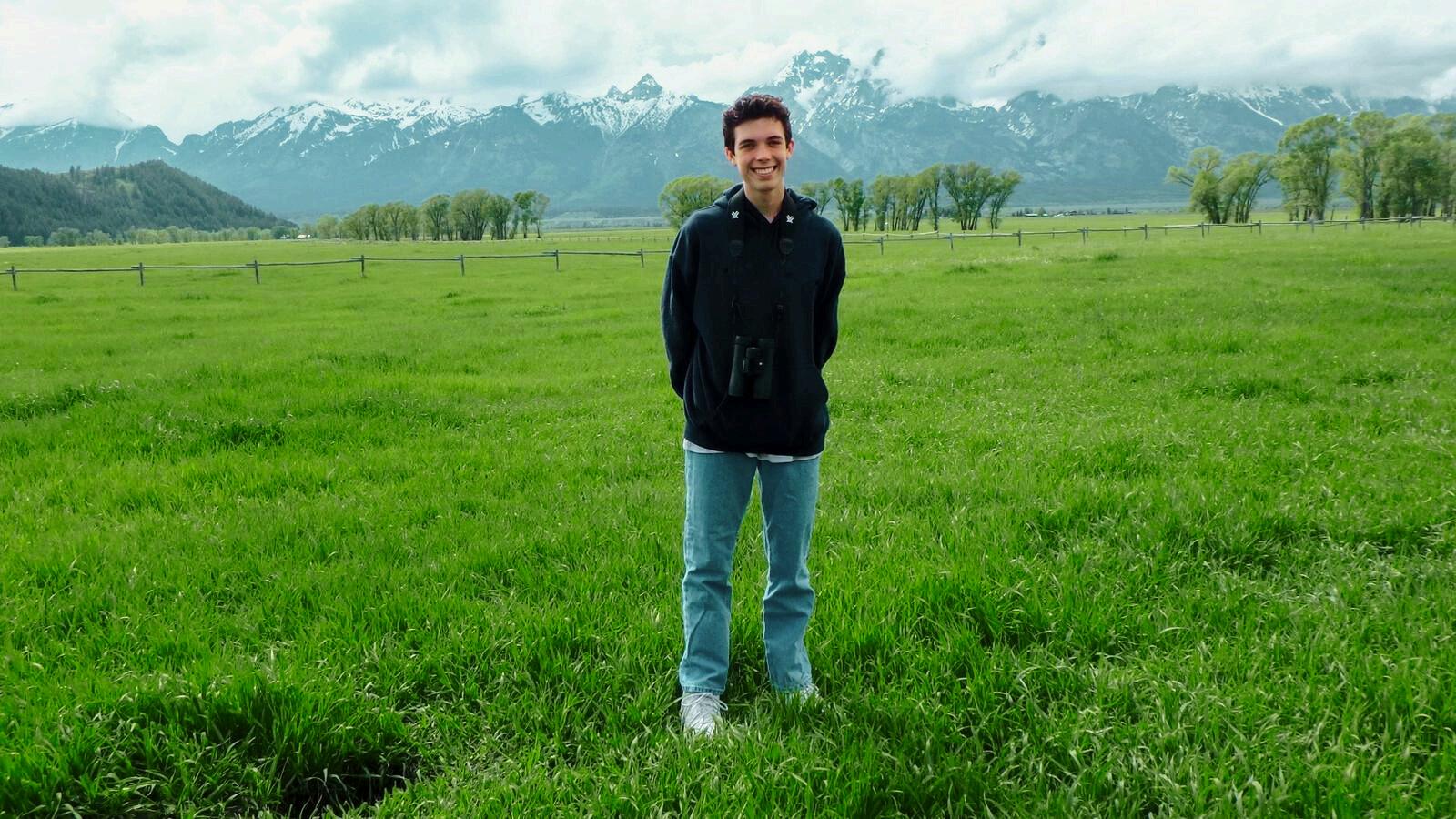
Sophomore Mason Kellerman is a computer engineering major. He finds his heavy course load stressful. However, he has found it fun and relaxing to be creative in art classes at Purdue and to allow himself a break from STEM courses. This has become an outlet for Mason as he juggles all his classes. Mason says, “I think art is such a technical field. It not only helps to break up my often heavy schedule, but it helps me to return to my work with new ideas and have a much more creative outlook which may refresh how I have been attacking a problem and got stuck in the past.
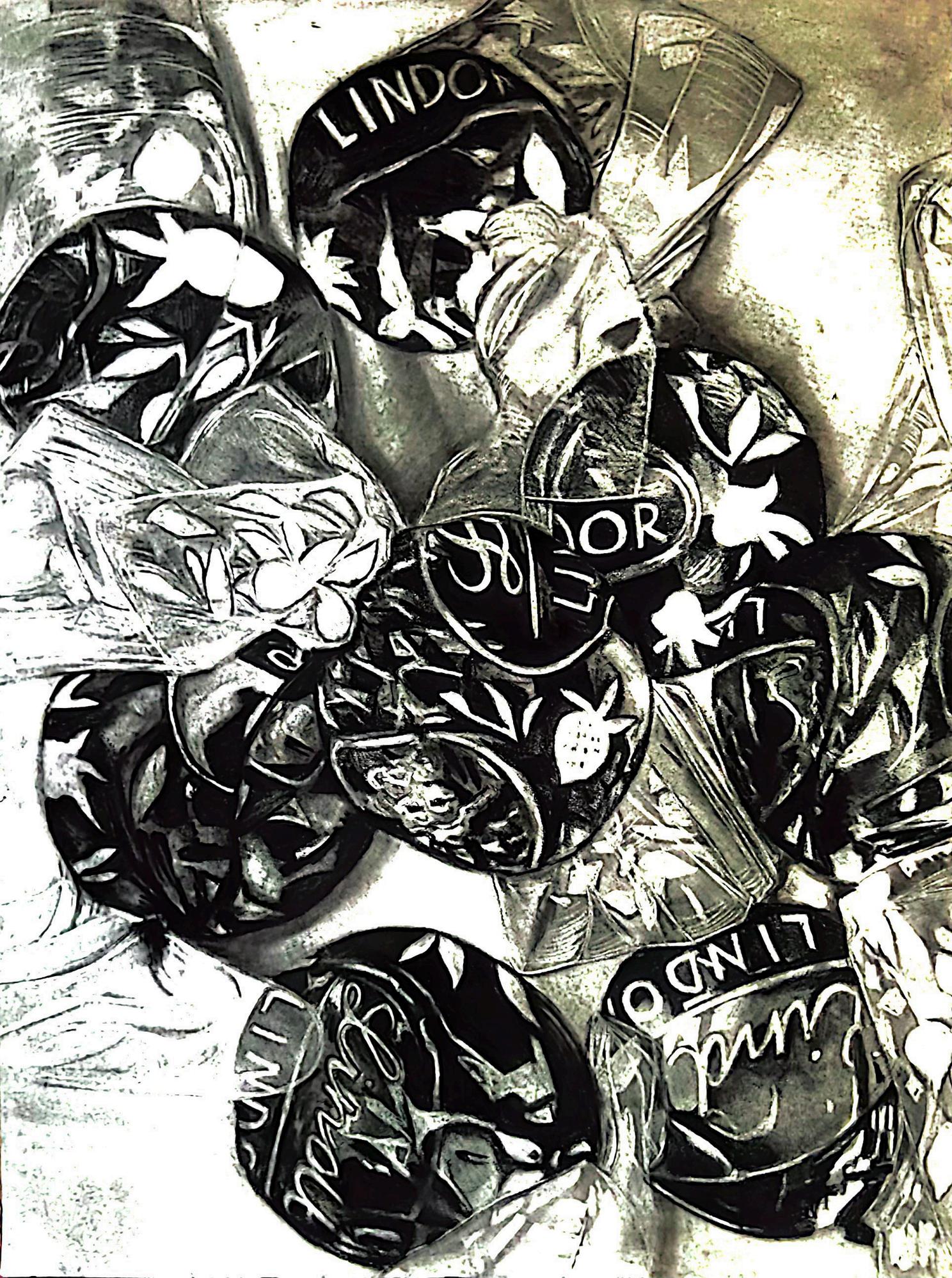


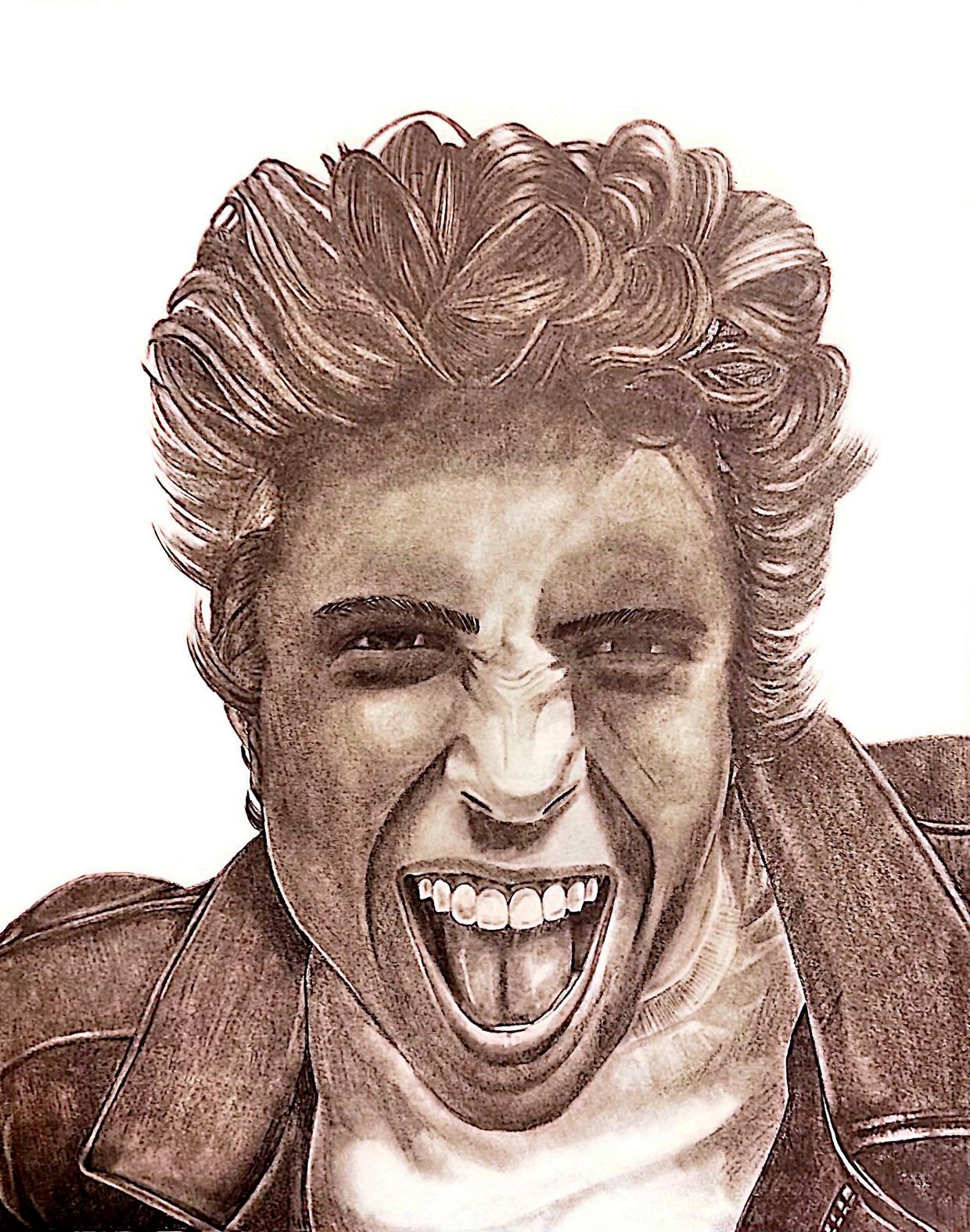

Sophomore Nehemiah Boyd is majoring in Neurobiology and Physiology and minoring in Spanish for the Professions. He is one of the Student Diversity Officers (SDO) in the Belonging, Equity, and Inclusion (BEI) unit in the John Martinson Honors College. Nehemiah says, “what identities do you hold? What identities are not in the room? These are some of the leading questions that we, the Student Diversity Officers, (SDOs), ask in our workshop. This experience has been truly fulfilling as in this team we instill leadership on our campus with tools that will create an inclusive campus and far more enriching experience for all.”
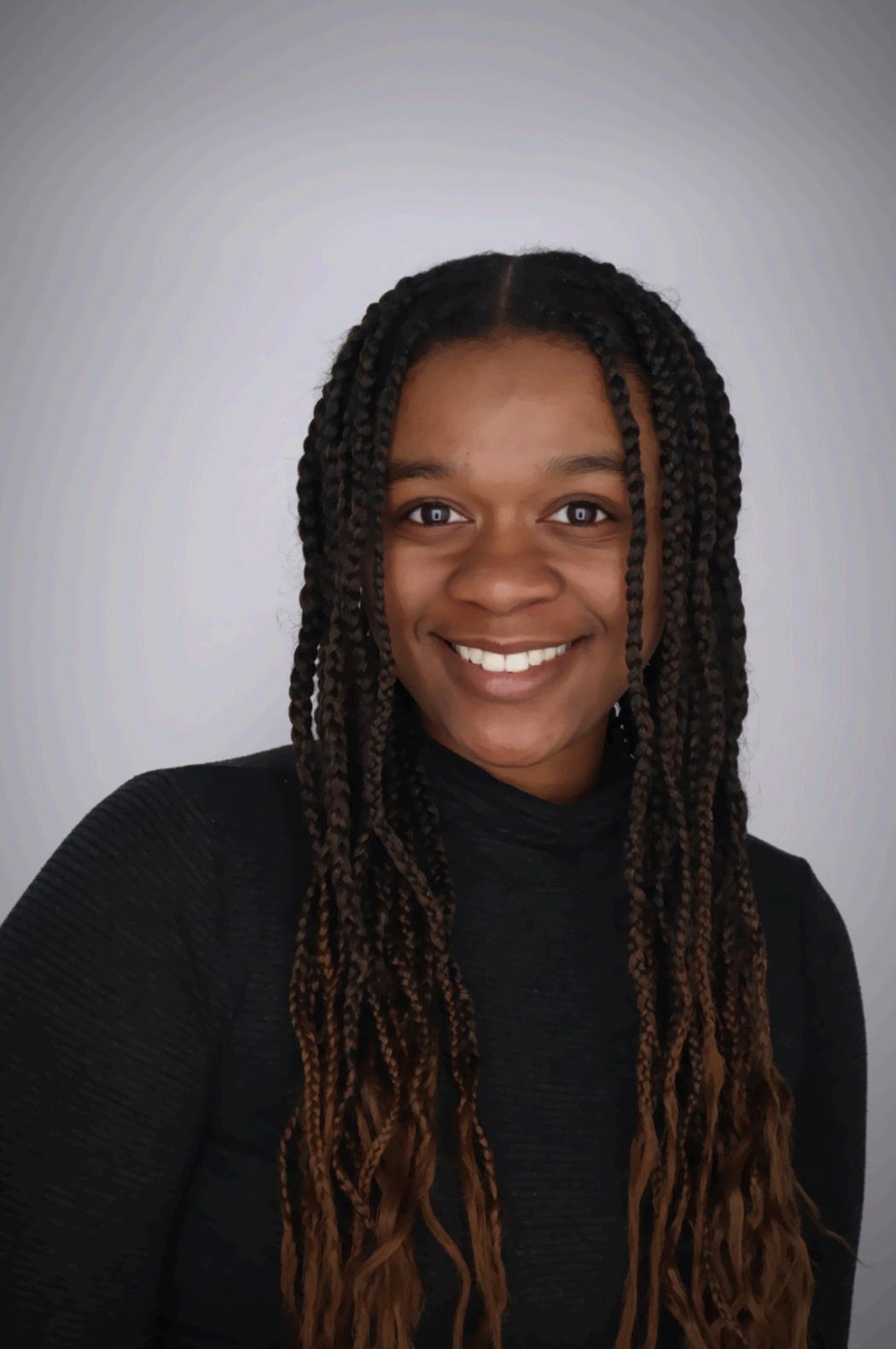
ring in ent
Diversity Officers, (SDO), in the Belonging, Equity, and Inclusion (BEI) unit in the John Martinson Honors College. Autumn says, “In my time as a SDO, I have grown immensely in both professional and personal capacities. Our team dynamic pushed us to be the best students and peer educators that we can possibly be. The JMHC demonstrates its dedication to DEIB through its students, and I am proud to be a part.”
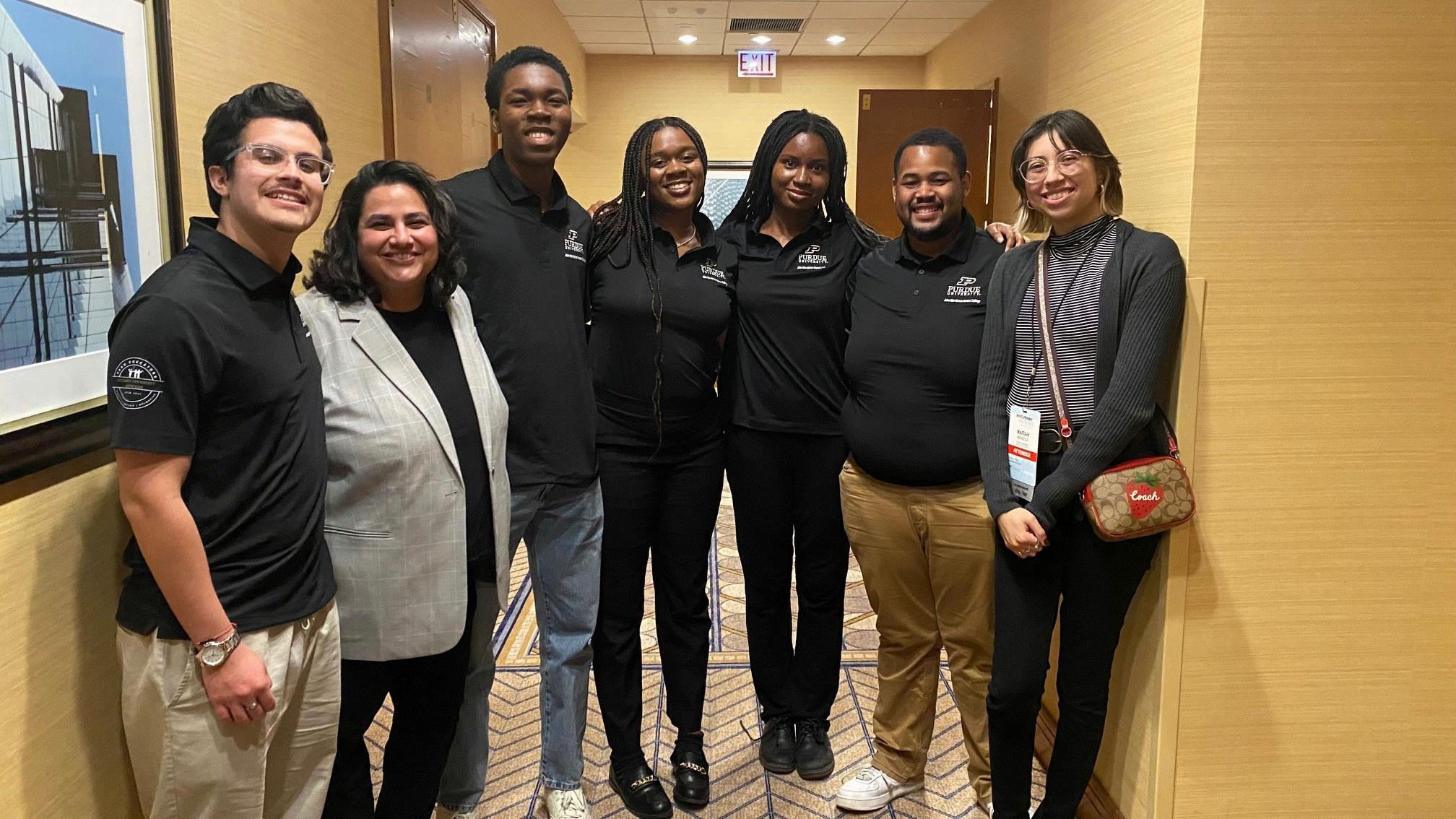
The John Martinson Honors College strives to make sure everyone feels welcome and at home in the Honors College. One way the JMHC ensures that everyone has a spot at the table is through the Belonging, Equity, and Inclusion unit or the BEI unit, led by Associate Dean Dr Megha Anwer (second from left) and administered by Mariah Mendoza (extreme right) The JMHC Student Diversity Officers or SDOs are housed within this unit Two of the SDOs are Purdue sophomores Autumn Reynolds and Nehemiah Boyd As student diversity officers, they help to educate members of the JMHC on Belonging, Equity, and Inclusion through workshops In these workshops, the SDO share their experiences, offer insight, and open the floor to questions concerning race, religion, sexual orientation, and other complex concepts They use research to create the materials that are used during their workshops to help educate the attendees Along with Reynolds and Boyd, the JMHC has five other SDOs: Emily Cahue, Danielle Ejiogu, Victor Garcia Mosqueda, Olanrewaju Sodunke, and Mia Yates Read more about the JMHC’s Student Diversity Officers here
Clinical Assistant Professor
Director, Interdisciplinary Sports Studies Research Generator
Dr. Dwaine Jengelley is a clinical assistant professor at the John Martinson Honors College and a political scientist. He is now the Director of his research generator, the Interdisciplinary Sports Studies Research Generator (ISS). Dr. Jengelley’s research spans from political cartoons and the Black Lives Matter movement to terrorism and media coverage. Adding to his vast research expertise is his research generator in the JMHC.
Interdisciplinary Sports Studies Research Generator (ISS)
Research generators were recently created at JMHC as a consequence of the gift from John Martinson, which resulted in a fund for the college. The generators provide great opportunities for students of all majors to interact with professors and faculty of the JMHC and to help conduct research in areas of interest to them. Dr. Jengelley’s research generator focuses on Interdisciplinary Sports Studies, interdisciplinary being the keyword Dr Jengelley’s generator is open to all students of the JMHC, regardless of major The generator focuses on all types of sports; there isn't any limitation on what sports are available to research. While conducting research is one of the main goals of the generator, there is also a practical side that explores what a career in sports could be like for undergraduate students. This incorporates all aspects of sports: journalism, media, directing, marketing, and much more!
Students participating in the generator will explore sports from various perspectives such as history, economics, culture, politics, science, engineering, media, race, class, and gender. The generator truly is diverse in its opportunities, giving students and faculty multiple ways to approach research within it. The generator is open to all JMHC students who have a minimum GPA of 3.0. There are a lot of benefits for students looking to join the generator; there will be career-based workshops, field trips, priority registration for ISS-affiliated classes, and the ability to conduct sports-related research with a faculty mentor in the JMHC. Affiliating with the ISS generator is easy! Students who complete the interest application are already deemed a general affiliate status of the generator. To become an all-access affiliate, students must attend at least one public or private ISS event per semester and complete their scholarly research project through an ISS-affiliated 499 course in the JMHC. The ISS research generator is a phenomenal way for students to begin their research adventure in the JMHC!
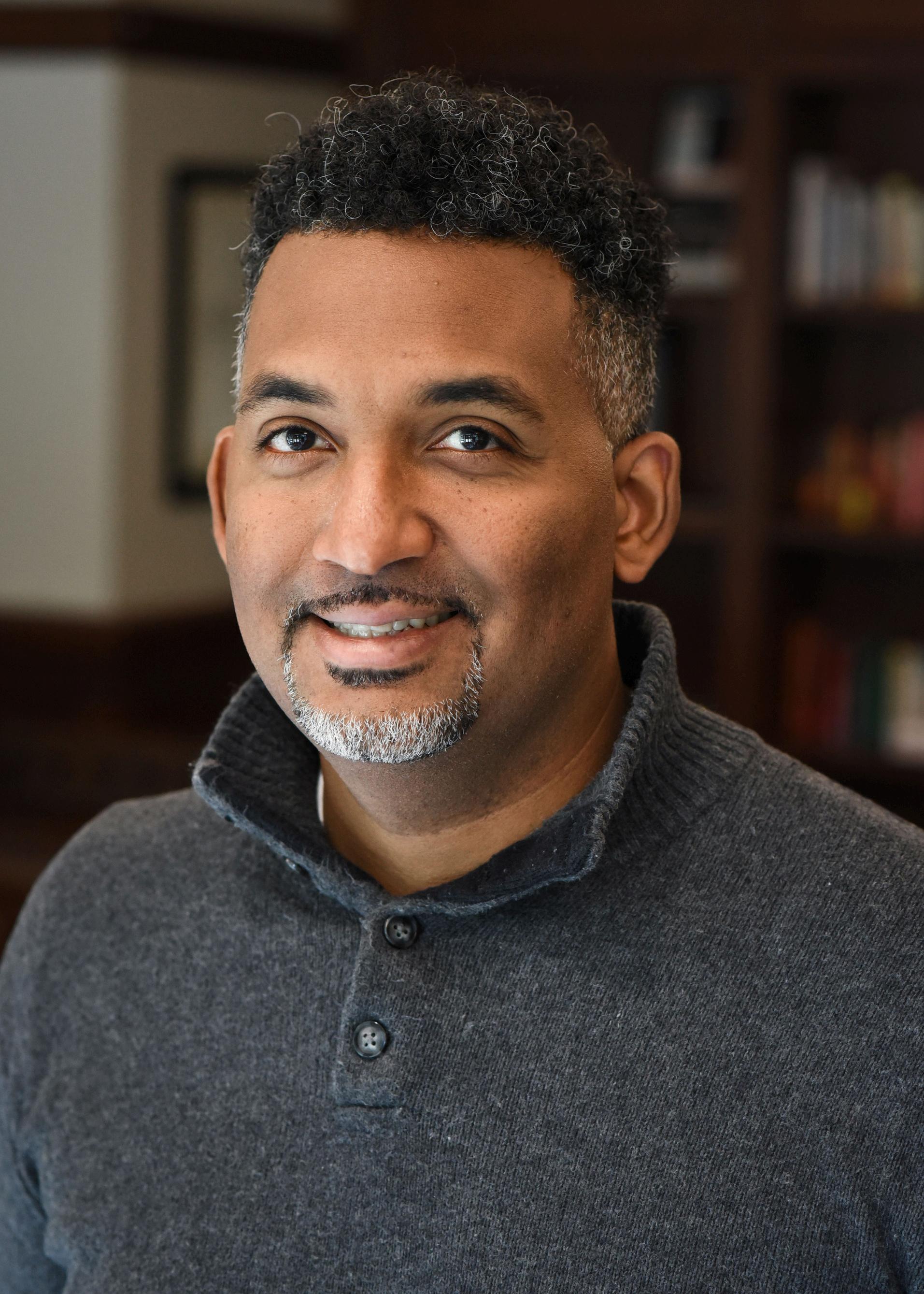
Clinical Assistant Professor Assistant Director, Blue Sky Lab
Dr Temitope (Temi) Adeoye Olenloa is a clinical assistant professor and Assistant Director of the Blue Sky Lab in the John Martinson Honors College at Purdue University. She earned her BS in Psychology in 2011 from Morgan State University, a historically Black university (HBCU) in Baltimore, MD. Dr. Temi then came to Purdue University and earned her MSEd in 2019 and PhD in 2022 in Educational Studies. Her prior research has examined student motivation, student engagement, collaborative groupwork, and disciplinary belonging. Currently, she is using motivational theories to examine academic persistence among racially marginalized undergraduate students. Specifically, she investigates the assets that Black, Hispanic & Latinx, and Native American students draw on to persist after facing a setback. Through her work in the Blue Sky Lab, she is working with faculty and students to explore interdisciplinary identity development and pedagogies.
Dr. Temi is also engaged with the local community and has served in various roles in the Heads Up Tutoring and Life Skills Program in Greater Lafayette. As a volunteer and program director, she has recruited college and community volunteers to offer weekly homework help and social development for K–12 youth living in government-assisted housing complexes in Greater Lafayette. Currently, she co-directs the Heads Up Teen Mentoring Program that pairs Greater Lafayette teens and preteens of color with college mentors of color.
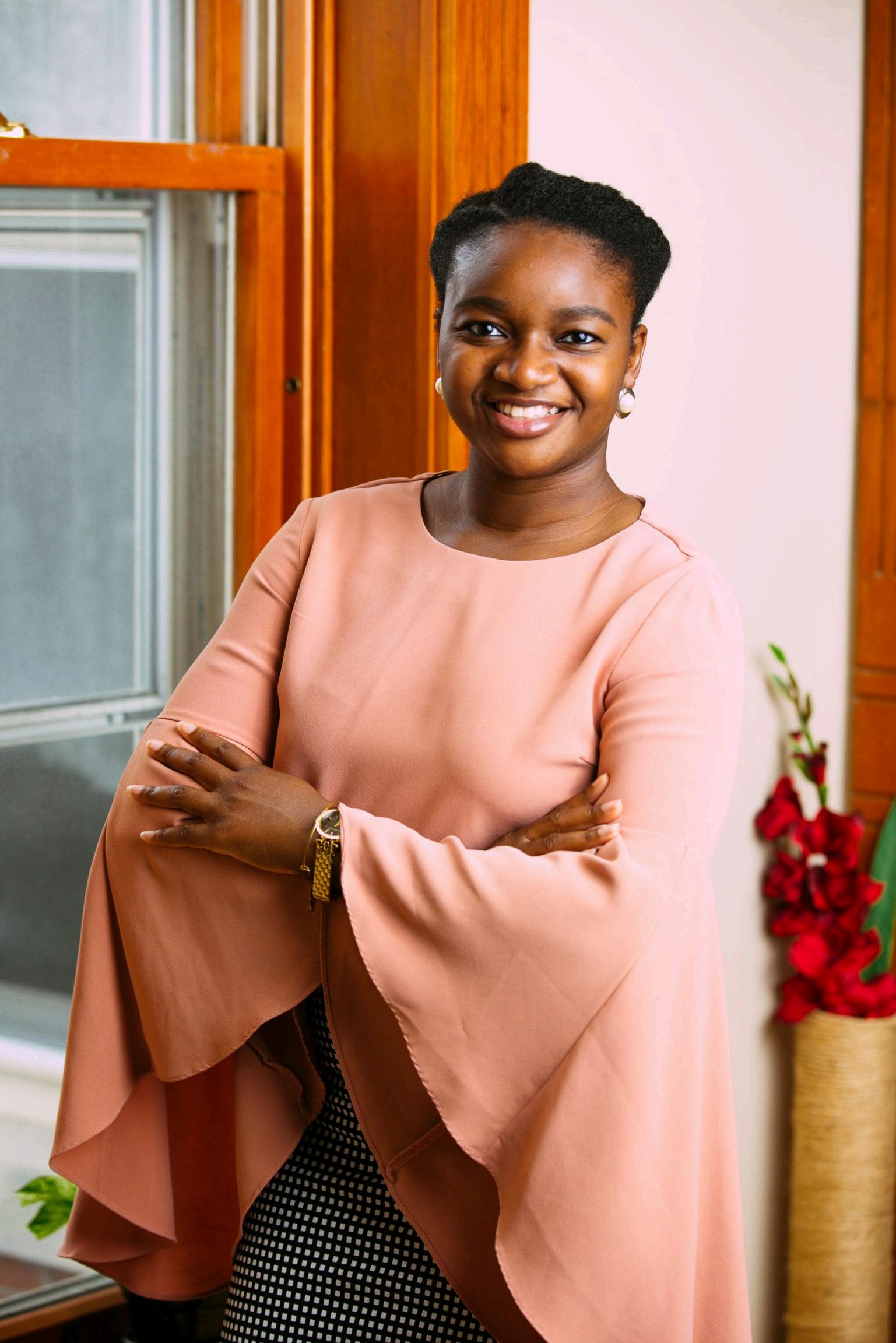
Dr. Temi co-runs and is the assistant director of the Blue Sky Lab (BSL), a teaching and learning lab that targets the development of interdisciplinary, inclusive, and collaborative honors pedagogy. The name “Blue Sky” represents a world without intellectual borders. People, communities, and institutions can work, coexist, and achieve in mutually reciprocal and innovative partnerships that promote active learning practices. This teaching philosophy is significant to what the JMHC tries to accomplish at Purdue. BSL hosts various opportunities in the JMHC for instructors and friends of the college to explore and showcase innovations in teaching and learning. BSL provides the college's newest community partnerships through an afterschool program and summer research-intensive for Ivy Tech Community College students statewide. BSL hosts an annual Festival of Teaching and Learning, which invites instructors from across the Purdue ecosystem to share their most innovative pedagogy in competition for teaching funds.
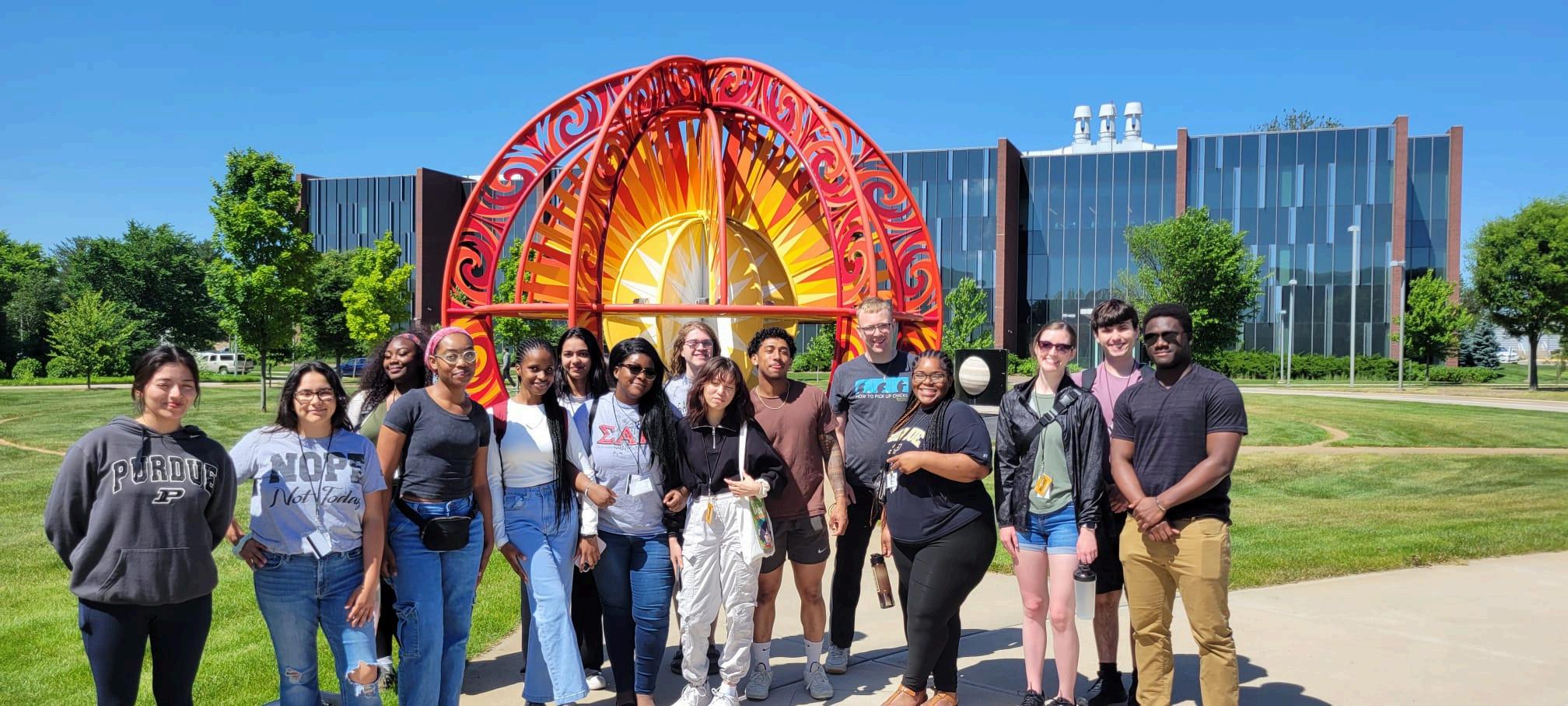
Clinical Assistant Professor Director, Print, Art, Text, Technology Research Network (PATTeRN)
Dr. J. Peter Moore is a clinical assistant professor in the John Martinson Honors College. His classes pertain to U.S. literature and culture during the modern and contemporary periods. Simultaneously, Dr. Moore also works in the fields of material culture and print history He established Purdue’s first letterpress studio called The PrintBay He has published two poetry collections, Southern Colortype (Three Count Pour, 2013) and Zippers and Jeans (Selva Oscura, 2017). He has also edited and co-founded Lute & Drum: An Online Arts Journal. Since joining the Honors College, he has developed courses that coincide with his research involving interdisciplinary writing. Dr. Moors is also the Director of Creative Scholarly Projects in the Honors College.
PATTeRN, a research generator funded by the John Martinson fund, is an interdisciplinary network of artists, designers, writers, and fabricators connected by a shared interest in the social life of print media. The research conducted in conjunction with PATTeRN answers three primary questions: where does print come from, how does it circulate, and what effect can it have on society? PATTeRN exists to promote undergraduate research thinking, empower students as researchers, and advance faculty-led projects.
The PrintBay is an interdisciplinary center for the experiential study of movable-type printing. The space offers participants a first-hand look at the historic letterpress process transferring ink onto paper with raised metal or wood type Rather than re-enact the past, our goal is to revitalize it with the help of modern tools Using CNC mills, laser cutters, additive manufacturing, and photomechanical processes, we harness the precision and efficiency of the digital to expand appreciation for the warmth and beauty of the analog. In addition to posters, books, flyers, and ephemera, we produce the conditions for playful collaboration among the humanities, fine arts, and STEM fields.
The PrintBay houses an extensive collection of historic letterpress printing equipment, which is available to members of the PATTerN generator, students registered for a PrintBay course, or anyone taking part in an Open Studio Event. In addition, PrintBay offers various interactive workshops, which are open to anyone at Purdue and in the greater West Lafayette area. The PrintBay also services custom print jobs!
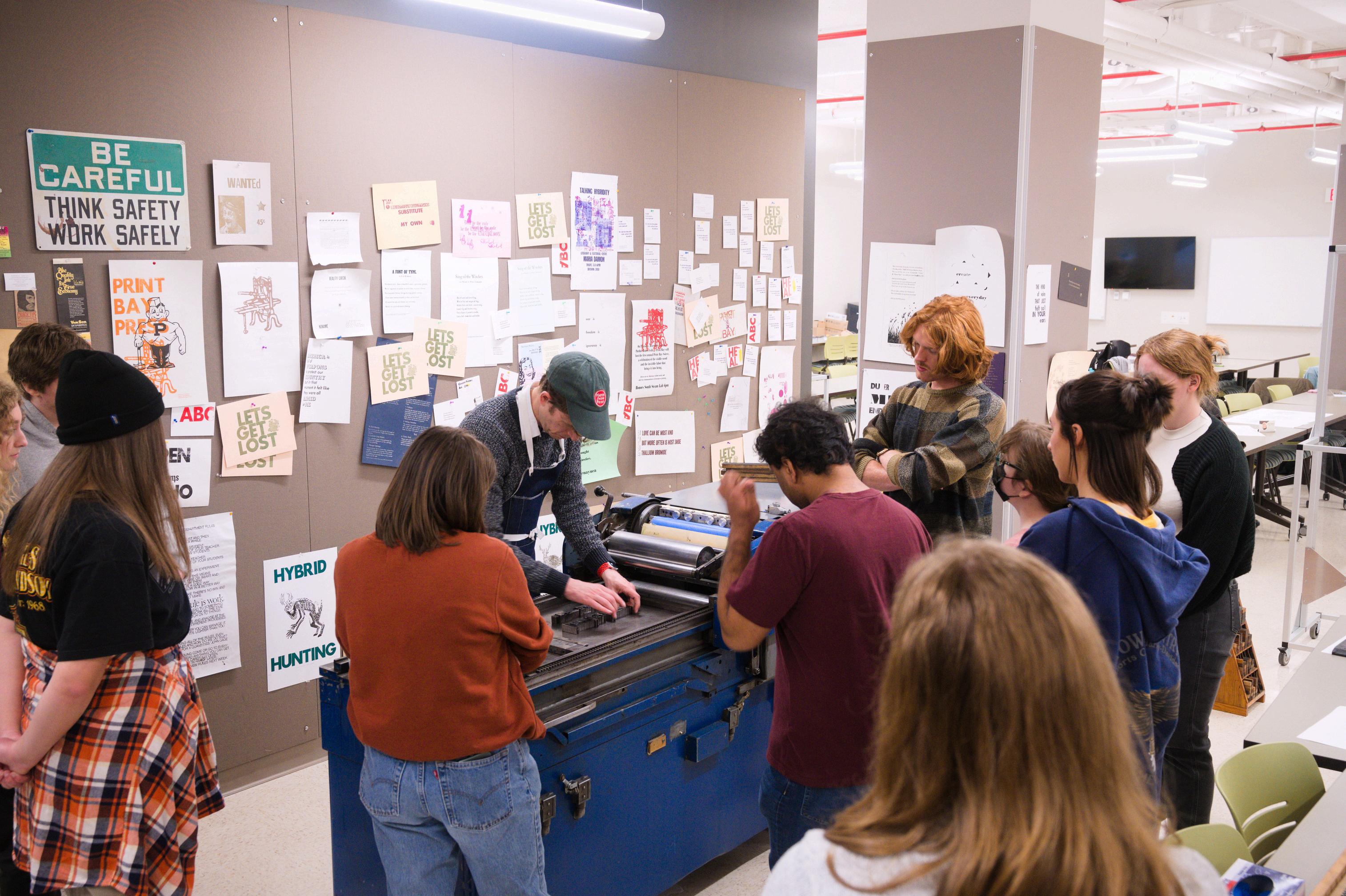

Kristen Bellisario, PhD
Clinical Assistant Professor Director, HIFI Lab
Director,
Dr. Bellisario is a faculty member in the John Martinson Honors College where she embeds themes about wildlife and conservation in her courses, "Community of Inquiry," "Silence," "Noise in the Environment," and "Sonic Biodiversity." She is a faculty fellow with the Institute for Sustainable Futures, graduate mentor for Ecological Sciences and Engineering, assistant director of Center for Global Soundscapes, and Associate Editor of Ecological Informatics. She is the recipient of the JMHC Breakthrough Seed grant.
The solar eclipse of 2024 was a majestic event where Dr. Bellisario joined the Center for Global Soundscape team on a journey to see how the totality zone might affect crepuscular species with media coverage by Astronomy Magazine, Discover Magazine, and World Media. This summer, she will be collecting cicada recordings for the dual emergence of two periodical cicadas in conjunction with the Calling All Ears Collective project
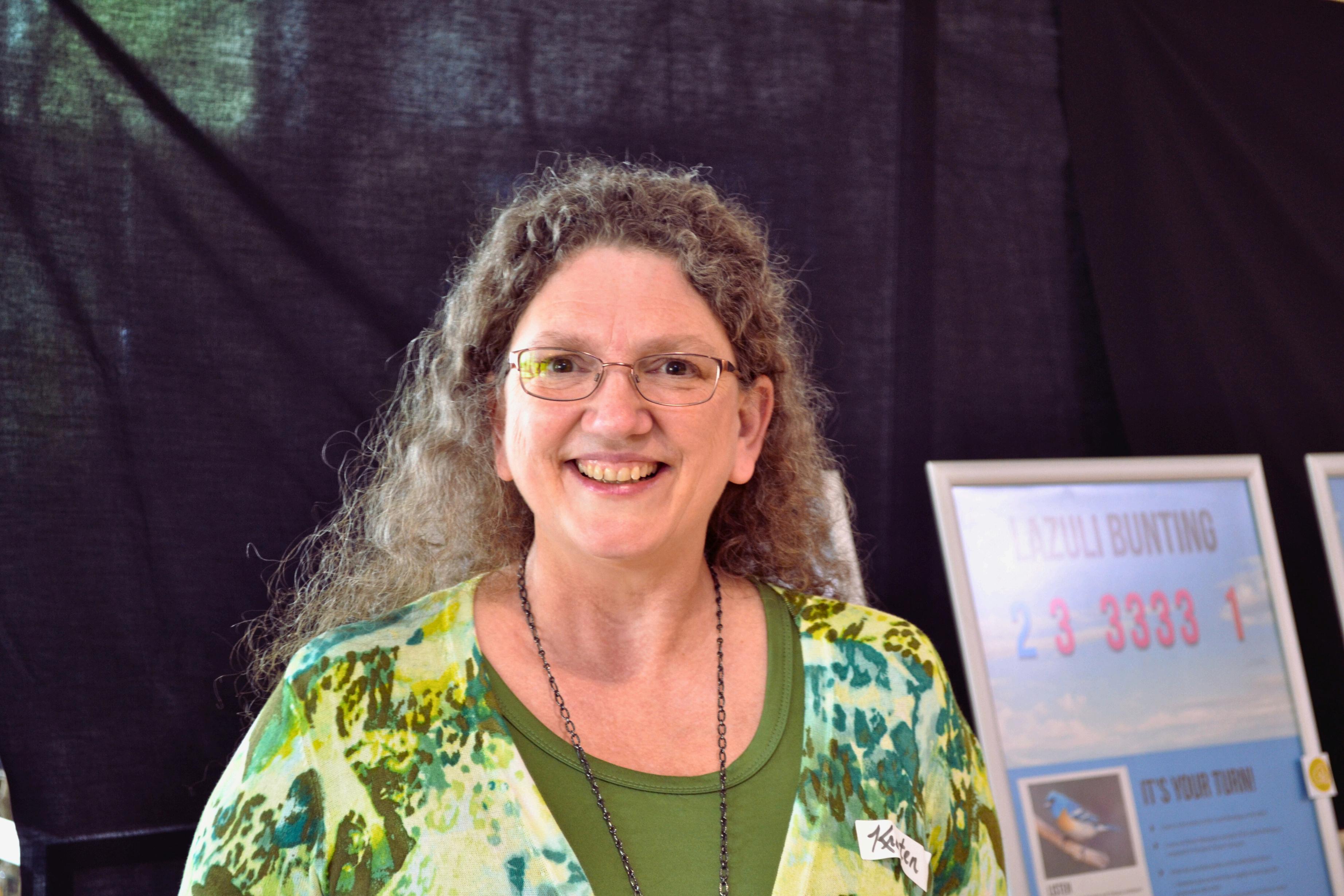
research accelerator that ogical and conservation arch and service-learning ts with a densiometer, hrough a neural net for ods utilized in the Global a NASA multi-year grant
verse the Red is a global ure the survival of species onservation of Nature and ation surveys, and sonic mate change on natural HIFI Lab offers a wildlife school-aged children and plays, a field team that d a computing team that s
oordinated the speaking d over 300 votes from 2024 Wildlife Ambassador rticles, and a grant. Her itoring locations for the ndangered species at the pecies of birds, mammals, awards this year and was erdisciplinary Research dio recordings at 25 sites yments at 24 sites, data custom classifier for the ed scholar for next year.
Clinical Assistant Professor Director, Tech Justice Lab
Dr. Lindsey Weinberg is a clinical assistant professor and the director of the Tech Justice Lab. She utilizes her background in both science and technology in both her research and teaching. Her research, teachings, and work in the Tech Justice Lab all look into the inequality of power and the relations it plays in various fields.
The Tech Justice Lab (TJL) is a cross-college collaboration dedicated to the development of interdisciplinary, justice-oriented undergraduate technology researchers and practitioners. It includes students, staff, and faculty with a wide range of disciplinary interests and lived experiences. The lab offers: undergraduate research opportunities with leading Purdue faculty on the critical study of technology; seminars, workshops, and lectures from esteemed scholars on technology’s social and ethical implications; and affiliated courses for learning to address the history, harms, risks, and benefits of technology for different social groups. Ultimately, the TJL seeks to empower students to imagine what it means for technology to be “just” and to envision ways to change how technologies are designed, implemented, evaluated, and contested to bring about a more just future. It provides a community where people across the university and with different levels of prior knowledge can come together to think, learn, research, and develop collaborative events, grant proposals, course ideas, and campus initiatives.
The lab's major goals include creating a community of education, research, and practice that allows students and faculty to work together to address unequal distributions of technological harms and benefits in society. It also seeks to cultivate students’ capacities for critical thinking, self-reflexivity, and responsiveness concerning how historical and present-day power relations impact the entire lifecycle of technology. The lab is committed to building upon existing efforts to diversify STEM majors at Purdue both representationally and epistemologically—through the development of interdisciplinary curricula, inclusive mentorship practices, and campus-wide events that center the justicerelated implications of technology. By participating in the lab, students (and others) can acquire the socio-technical knowledge needed for making critical interventions into tech justice, and prepare themselves to transform their future workplaces and communities through individual and collective effort
In order to become a student affiliate in the TJL, students must commit to meeting at least three of the following requirements: 1) attending a minimum of two TJL events a semester, 2) carrying out undergraduate research through the lab, 3) attending the once-a-semester lab kick-off for planning the lab's priorities and goals, and 4) encouraging other students to come to TJL events. Interested students should email the TJL Director, Dr. Lindsay Weinberg, at Lweinber@purdue.edu to learn more. Staff and faculty who are interested in affiliation, or who would like to join the lab's listerv, should email Lweinber@purdue.edu as well to receive further information.

Clinical Associate Professor
Director, Urban Matters Lab and Faculty Editor, FORGE Magazine
Ashima Krishna is Clinical Associate Professor in the John Martinson Honors College. Prior to joining the Honors College, she was Associate Director of the Purdue Policy Research Institute and Assistant Professor of Practice in the Global Studies Program in Purdue’s College of Liberal Arts. She is an architect and historic preservation planner whose research spans the management of historic urban landscapes and adaptive reuse of religious historic structures and landscapes, with a particular focus on intersection with community development and equity issues and resulting policy challenges. Dr. Krishna has examined issues related to historic preservation planning and urban conservation in United States and India and continues to highlight the ways in which the historic built environment can be preserved, managed, and planned for. Her published work has been featured in Journal of Urbanism, Preservation Education and Research, Change Over Time, and Journal of American Planning Association among others. Her co-edited book Heritage Conservation in Postcolonial India: Approaches and Challenges was published by Routledge in 2020.

The Urban Matters Lab builds on the four pillars of the John Martinson Honors College. The overarching thread connecting all aspects of the lab deal with diversity and equity, and the lack thereof in our urban communities. Using this diversity and equity lens, the lab employs an interdisciplinary approach to the exploration and study of a range of urban matters and facilitates a pedagogical and exploratory journey for students to understand why the ‘urban’ matters. It fosters community engagement through interactive experiential opportunities across the Greater Lafayette area and beyond. It offers students the opportunity to develop their leadership skills through volunteer and internship opportunities in the community. The lab also creates opportunities for students to undertake interdisciplinary undergraduate research through HONR courses and independent studies and mentoring by Dr Krishna The current Documenting Black Heritage Sites project is the first of these efforts
Documenting Black Heritage Sites in the Greater Lafayette Area project collaborates with the Black Cultural Center at Purdue, the Tippecanoe County Historical Association, the Black Heritage Preservation Program at Indiana Landmarks in Indianapolis, and other resources across the county and state to create a repository of and document sites of Black Heritage in the Greater Lafayette Area and Purdue University. The qualitative research helps shape the historical narrative of the presence of the Black community in the area, leading to a sense of placemaking, pride, and belonging both at Purdue campus and in the region
Since Fall 2022, Dr. Krishna has received several grants to support the work of the lab, including the 2022-2023 Research Project Grant from the Susan Bulkeley Butler Center, the 2023 Research Project Grant from the Office of Diversity, Inclusion, and Belonging at Purdue University, and the 2024 Black Heritage Preservation Program Grant from Indiana Landmarks.
Since Spring 2023 Dr. Krishna has mentored fifteen students through the lab via a combination of independent studies and paid research assistantships, made possible through the grant support described above

Mindy Hart Director of Recruitment and Admissions
Perhaps one of the most essential components of the JMHC, but it is often overlooked: I am, of course, talking about recruitment and admissions. Without them, there would be no Honors College at all. Mindy Hart, the person responsible for coordinating this department, is the Director of Recruitment and Admissions in the JMHC, and she more than likely read your application to the JMHC. However, while being the Director of this department, she is also the head of the Student Ambassador Program in the JMHC What originally started out as 8 Ambassadors back in 2016 turned quickly into 15 in 2019, and now there are over 30 Ambassadors in 2023, and the program continues to grow and grow every year. What does it mean to be an ambassador? Well, being an ambassador means being a lot of things. It means being a leader, a spokesman, a passionate person, and a person who isn’t afraid of going outside their social bubble to interact with potential students. Being an Ambassador of the JMHC means being the “outward-facing liaison of the Honors College,” as Mindy so amazingly describes it.
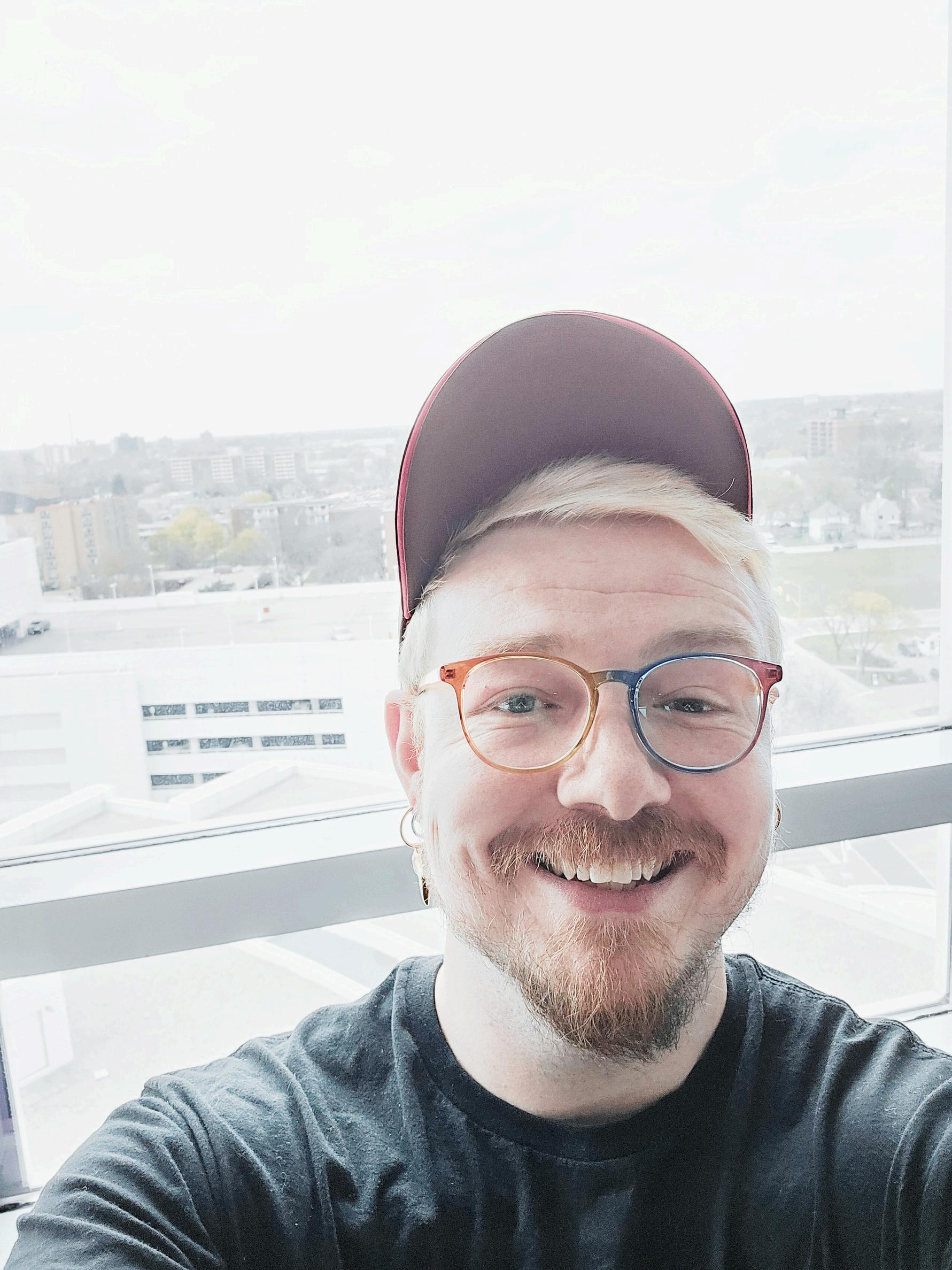
Academic Honors Advisor
Phelan Tinsley is one of the John Martinson Honors College’s advisors. Tinsley, along with the other JMHC advisors, aids students in navigating both academics and personal lives. He is also the 2024 recipient of The Focus Award. The Focus Award is awarded annually during Indiana’s Disability Awareness Month. It recognizes those affiliated with Purdue University who have made an outstanding contribution to furthering Purdue’s commitment to disability accessibility and disability diversity.
Tinsley has been a wheelchair user for ten years and holds a strong passion for advocating for accessibility and disability rights. During his time at Purdue, Tinsley has been a consistent voice advocating for improvements to Purdue’s campus to become more accessible. However, accessibility is something the JMHC and Purdue as a whole fall short of in many respects. For example, Tinsley works in the Honors College and Residents North building located on Third Street.
Sometimes, Tinsley and his co-workers go to Starbucks on the other side of Third Street from the Honors College Before Third Street was an all-pedestrian street, it was a regular street for cars. Thus, the sidewalk is raised above the street. So, for wheelchair users like Tinsley, there is no way to cross Third Street other than at the stop light. So, there is no way wheelchair users can use the renovated pedestrian street. Tinsley has reached out to Purdue Grounds and asked if a ramp could be poured to level the sidewalk and the street.
However, Purdue Grounds has said this is not possible. Tinsley has also pointed out that the ADA push buttons located on the double doors entering the Honors College buildings are
located on the wrong side of the door. This is yet another issue that has not been addressed. In my conversation with Tinsley, he also mentioned Purdue University's accessibility guide has not been updated in years. In fact, it still says that Third Street is a street for cars and does not include the Honors College buildings on the map either. For Tinsley, finding his office on his first day of work was a major challenge. Needless to say, the JMHC and Purdue both have a long way to go in making the campus more accessible. This is something Tinsley will continue to fight for.

Emily Sheetz Academic Honors Advisor
Who doesn’t love snacks? I know I love them! Who also doesn’t love chatting with new faces around the JMHC? I know I do! If you are like me, you must stop by the JMHC’s Snack and Chat on Thursdays in JMHC North! It is a fantastic pop-up that has a variety of new snacks every week and allows you to chat with all kinds of new people. The program started under David Ding, a former Honors Advisor in the JMHC, in the Fall of 2020 as a fantastic way to connect students with other students, staff, and faculty without all the formalities of meetings and lectures. After David Ding left the JMHC in the Fall of 2021, Emily Sheetz took on the mantle of continuing to run the Snack and Chat, as she realized a lot of untapped potential was leaving the JMHC! Since taking on the pop-up, Emily has elevated the program to a place it has never been before and continues growing! Also, Snack and Chat is a great way to do promotion, either for personal research that you are taking part in or if you are a professor in the JMHC; it is a fantastic way to promote your current research and recruit students to join! Attending Snack and Chat is guaranteed a good time, with excellent snacks and even better conversations!
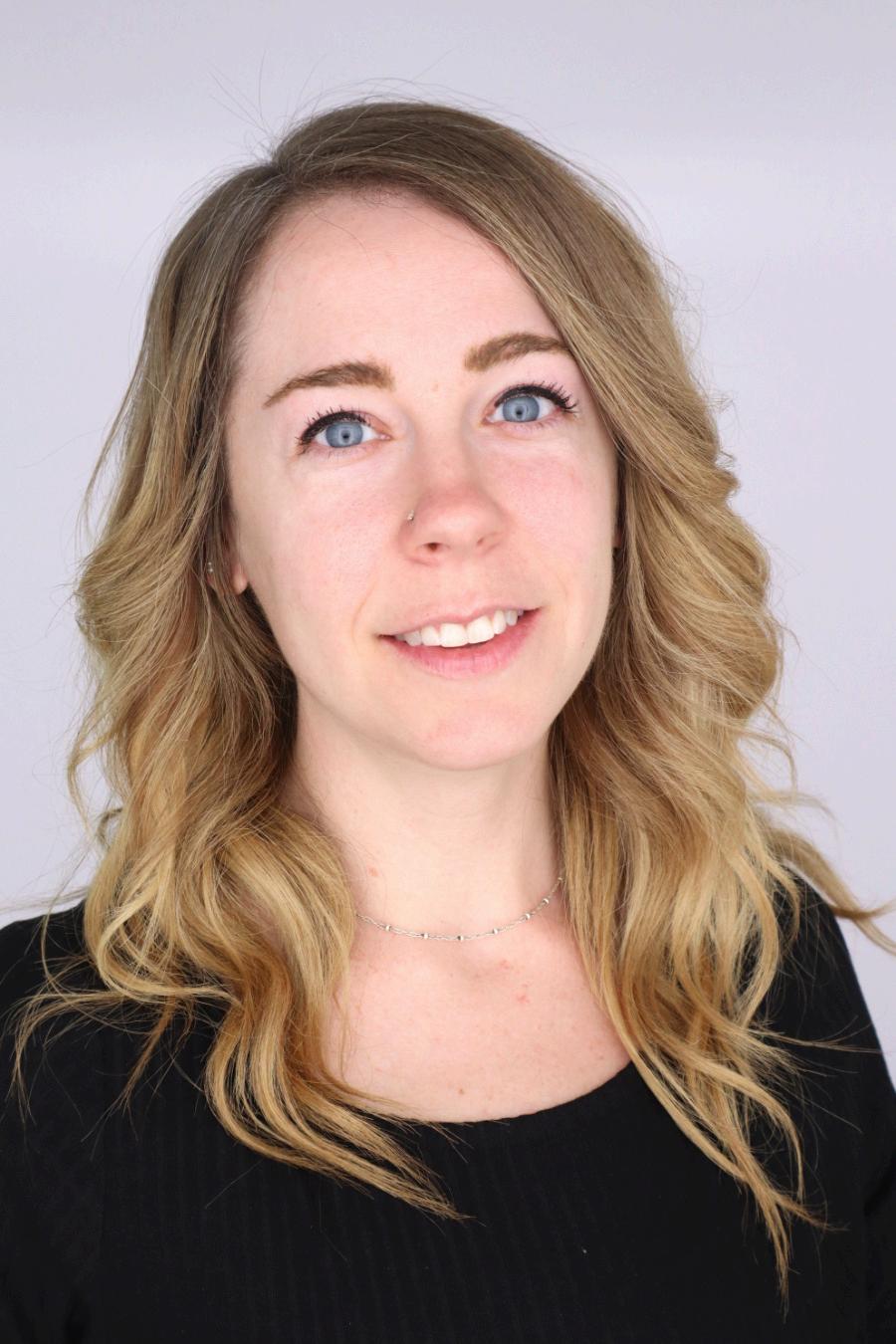
Jess Ramsey Director of Advising
Jess is the Director of Advising for the John Martinson Honors College, bringing a wealth of knowledge and experience to her role. She holds a bachelor’s in political science from the University of Mount Union, a master’s in education in higher education administration and student personnel from Kent State University, and a master’s in business administration from Purdue University Global. Before joining the college, Jess dedicated six years to working with Purdue Promise, where she served as the Senior Assistant Director. With a passion for education and global experiences, she has led study abroad programs to Spain and taught various courses across campus Outside of her professional pursuits, Jess embraces an active lifestyle. She enjoys hiking, climbing, and exploring new destinations through travel. A voracious reader, she also finds solace in the company of feline companions.
In Spring 2023, Jess accompanied Dr. Muiris MacGiollabhui to Ireland for a Study Abroad Trip. Read more about her experiences with the trip in the Global Experiences section.

H O N O R S H A P P E N I N G S
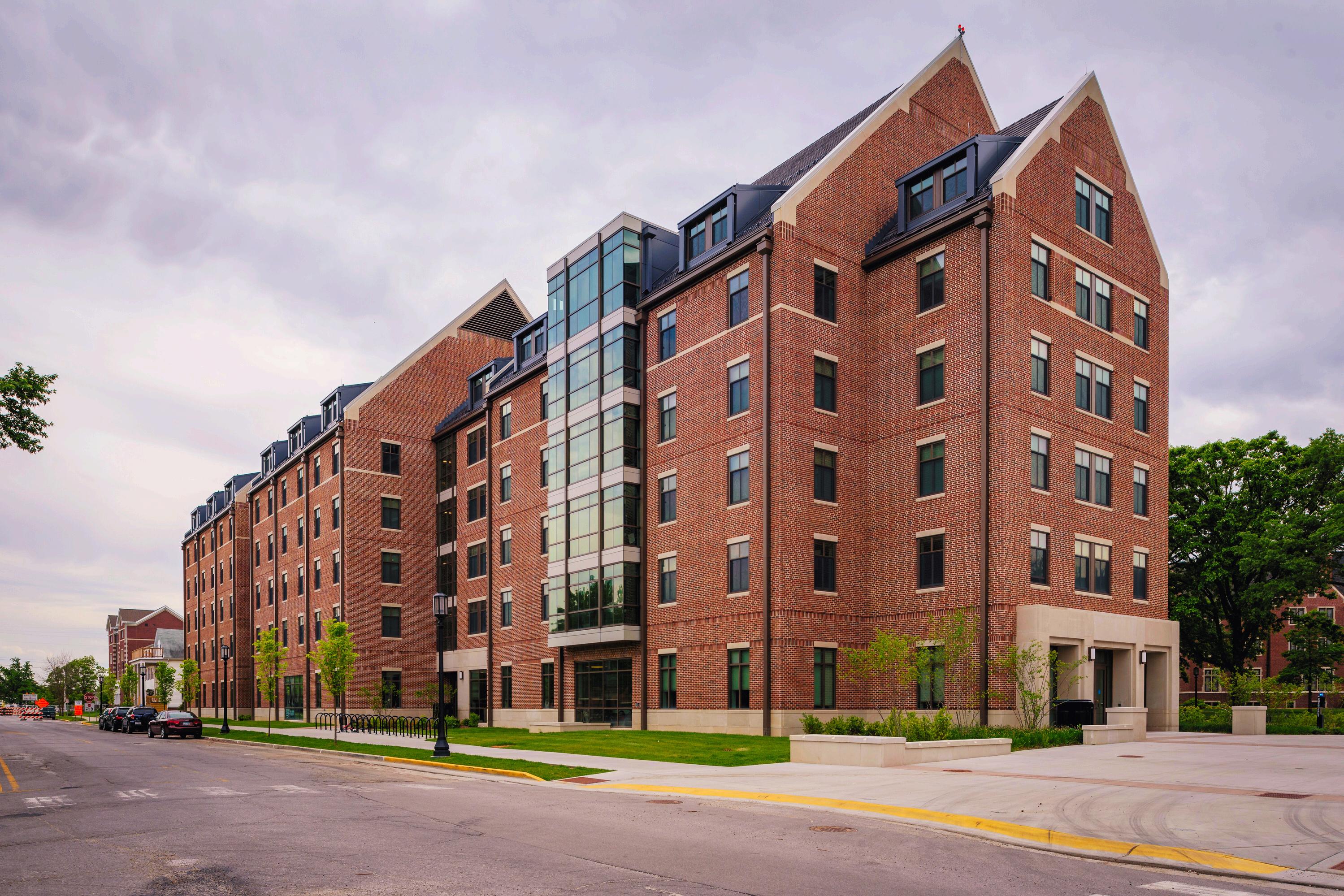
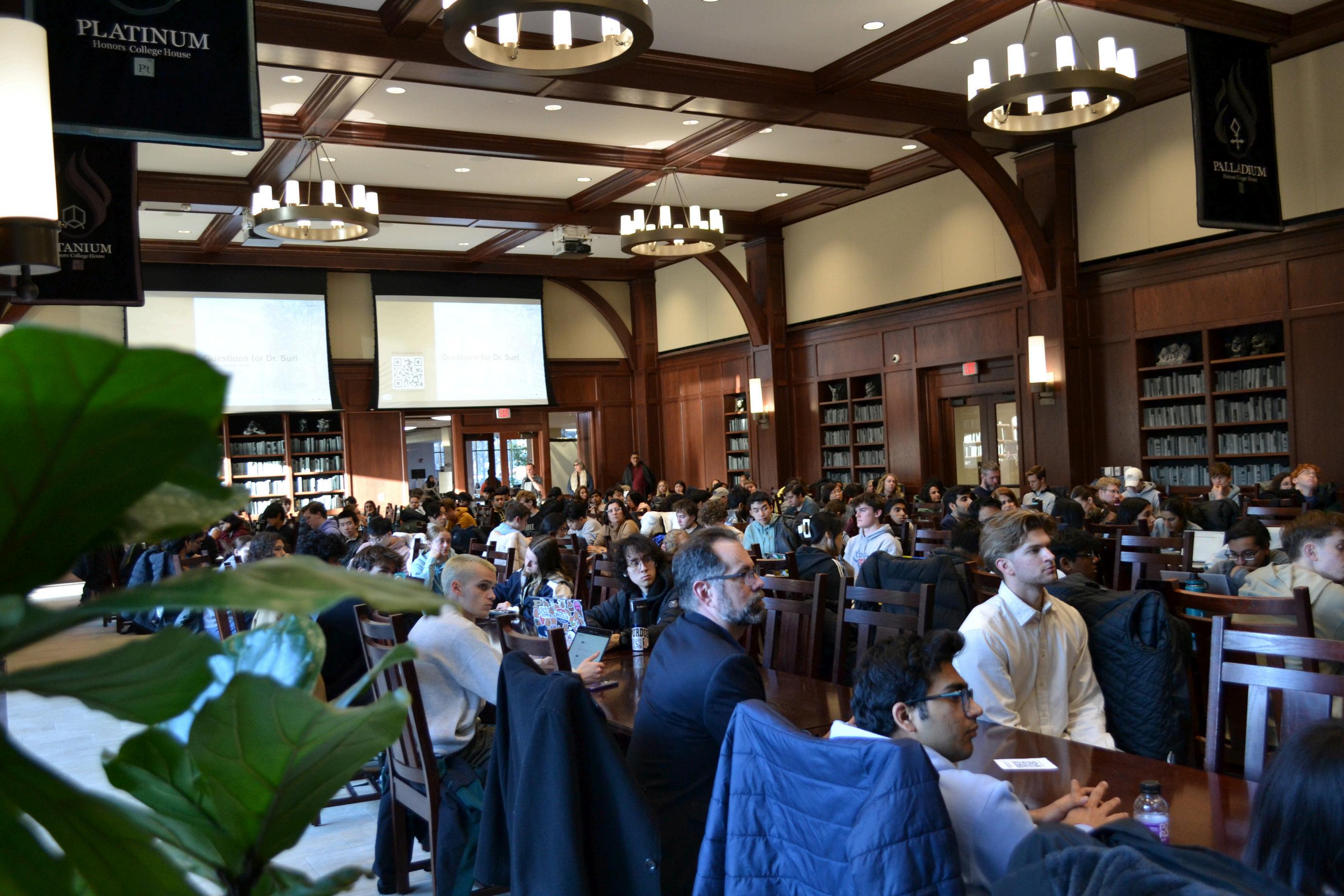
The Aronson Family Lecture Series is one of the flagship lecture series hosted by the John Martinson Honors College. The series lasted over two days and consisted of three different events: the keynote lecture, a discussion panel, and an interactive forum.
The keynote lecture, which was the main event of the series, was presented by Dr. Siddharth Suri, a senior principal researcher working for Microsoft Research. The keynote lecture itself focused on Dr. Suri’s most recent research for his book “Ghost Work: The Labor That Powers AI.” Through the lecture, Dr. Suri focused on “invisible labor” ideas and the unseen work they provide to power our modern technologies and AI systems.
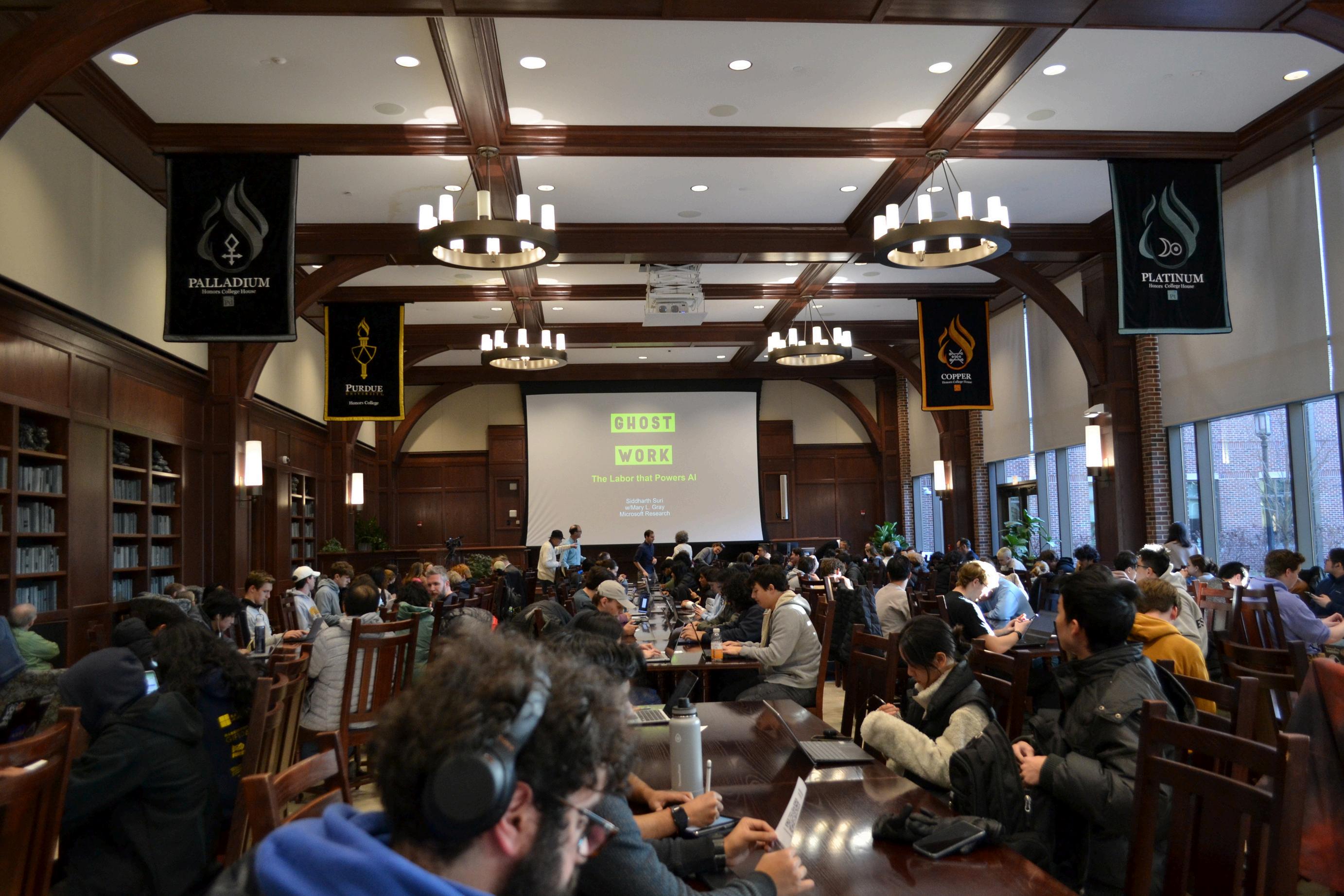
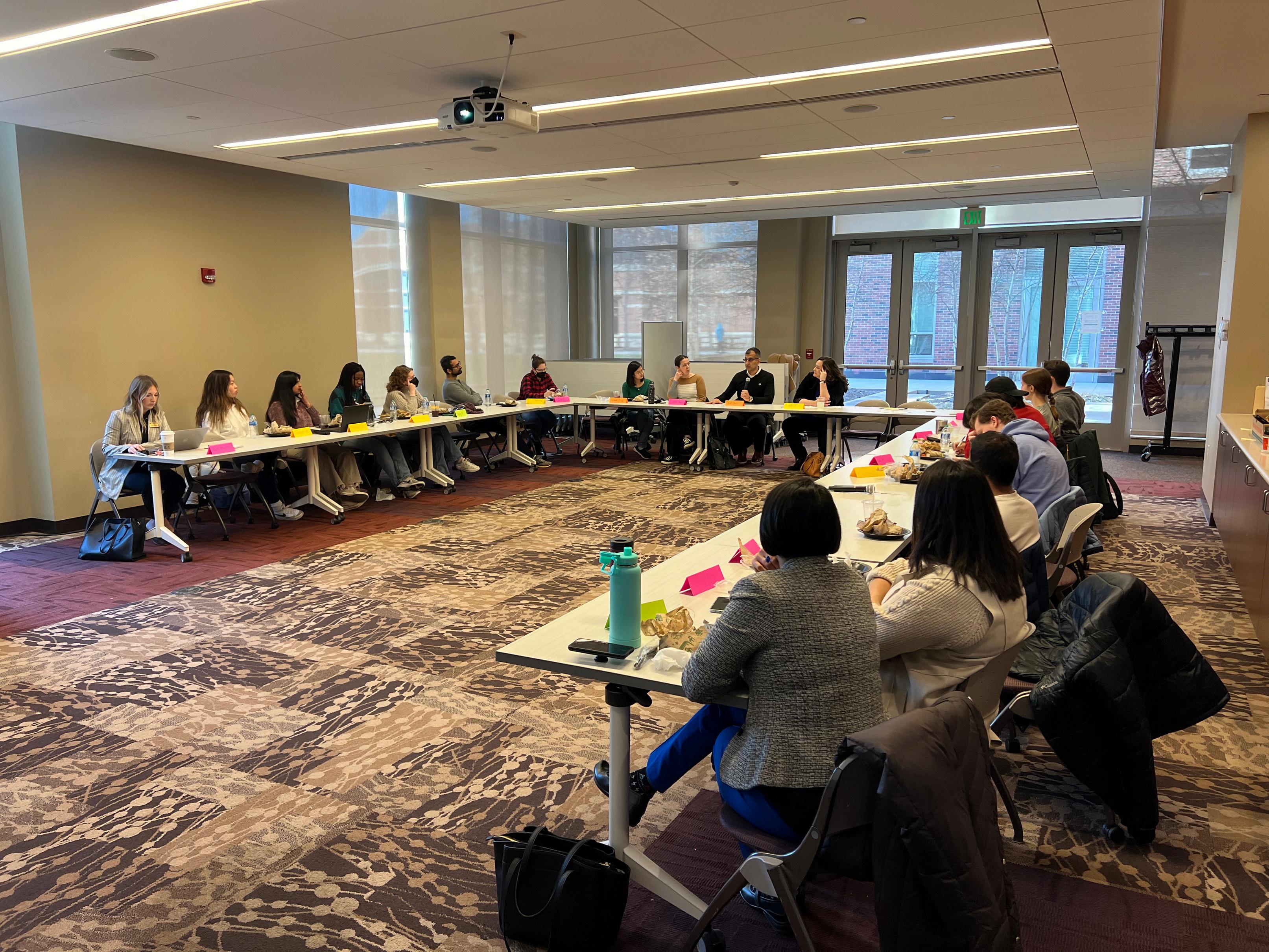
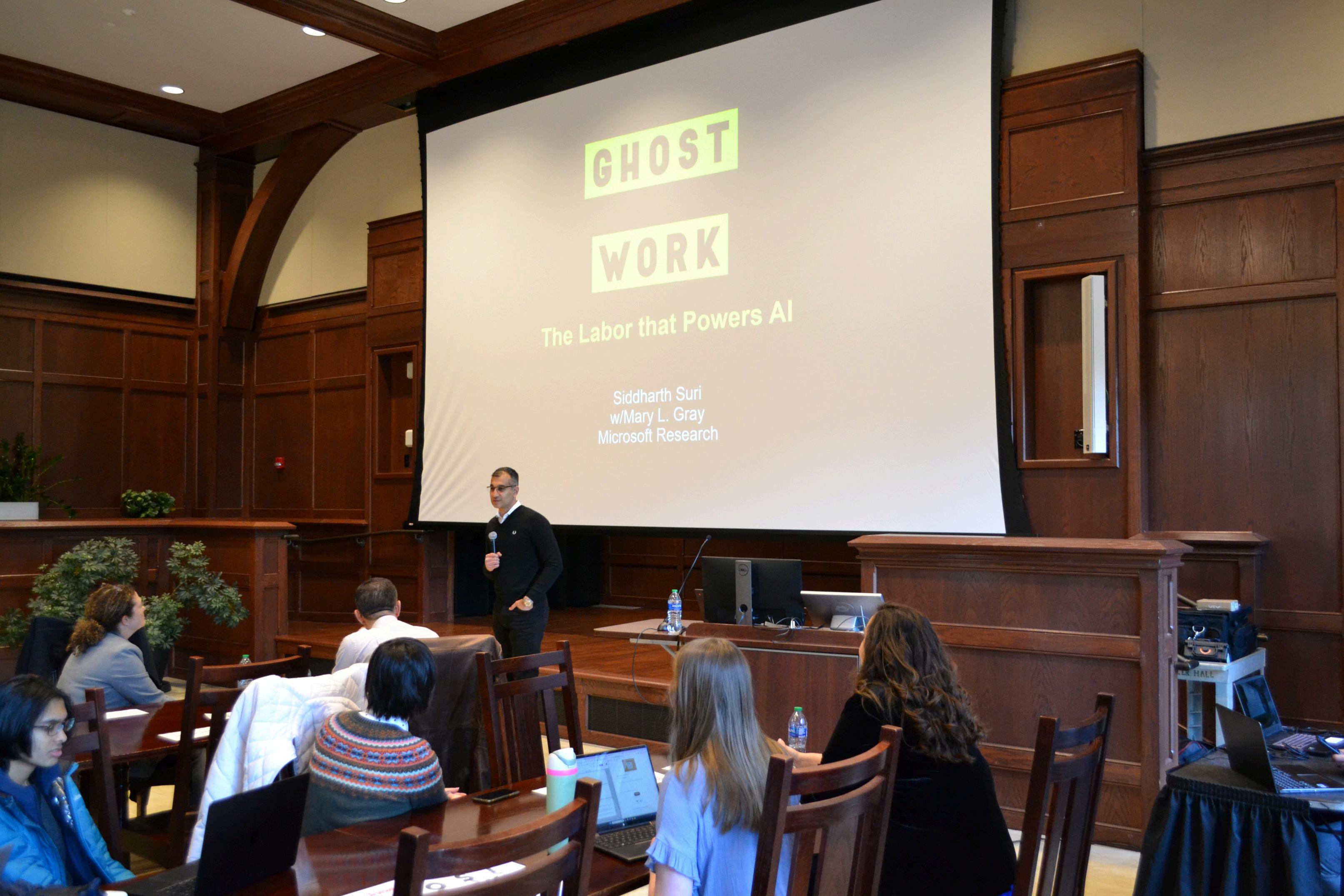
Dr. Suri’s research mainly focused on key ethical solutions for more recognition of these workers. Moving past the keynote lecture, Dr. Suri was chosen to lead the Aronson Family Lecture Series by Dr. Katie Jarriel, a clinical assistant professor and a faculty chair for the Aronson family, as he and his research best exemplifies the interdisciplinary spirit that radiates throughout the JMHC.
Dr. Jarriel was quoted as saying the following about Dr. Suri’s research: “We think of the technology, but we sometimes lose focus on the humans who are doing all of the fundamental work to create these tools. Dr. Suri’s work also bridges industry and the university.”
His research has examined the way that AI and big tech companies are founded on human labor, and how this often goes unnoticed by the general public.
- Dr. Katie Jarriel, Clinical Assistant Professor, John Martinson Honors College

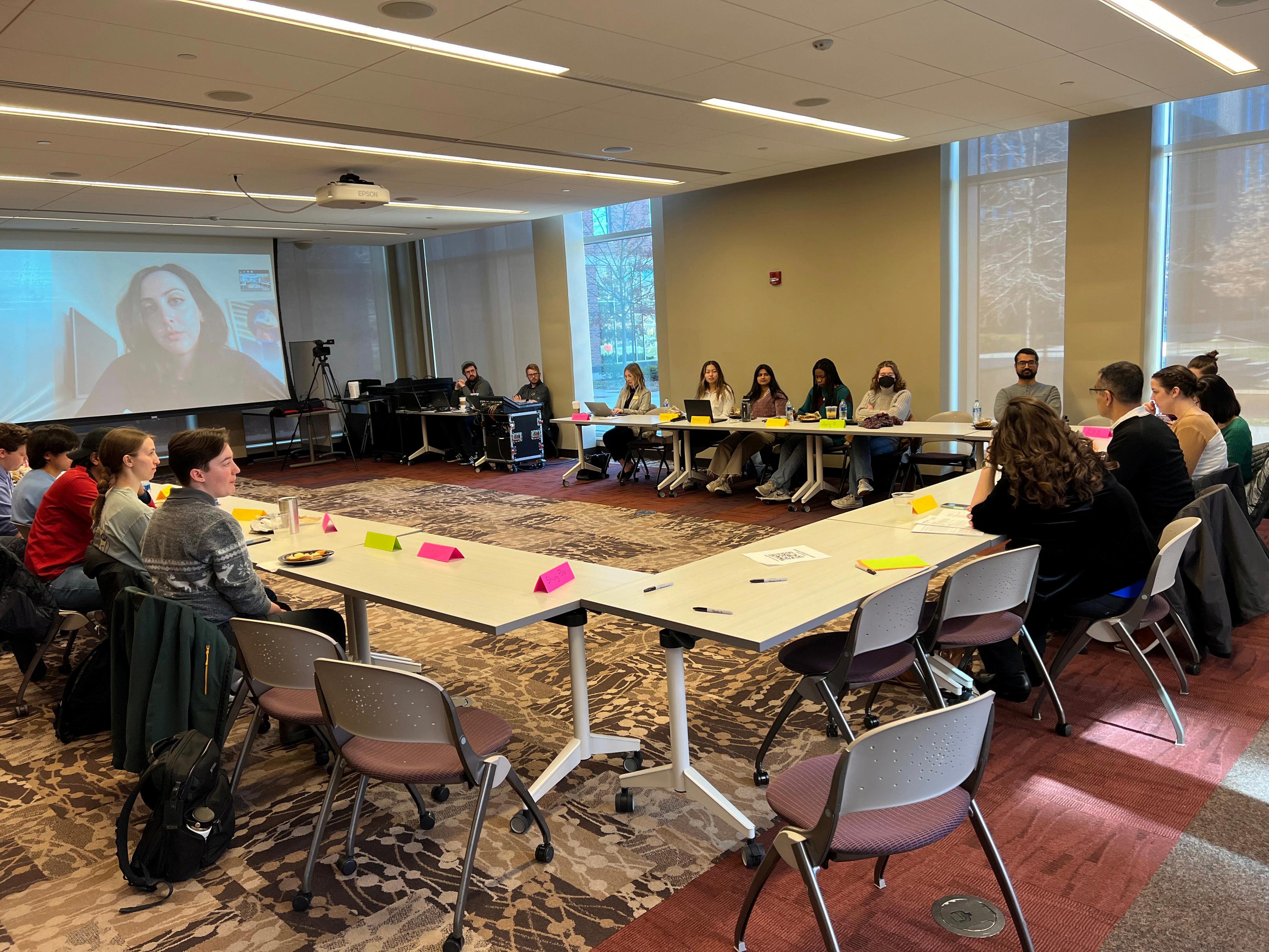
ABOVE: The second event in the Aronson Family Lecture Series was the Interactive Forum with Dr. Suri. In this unique event, students could discuss and interact with Dr. Suri. They could engage further with his research and ask any burning questions they might have had after reading the necessary article before attending. It was a great way to have lively discussions with Dr. Suri and the other people attending the forum. In attendance from JMHC: Dr. Ashima Krishna, Dr. Lindsey Weinberg (virtually from Denmark), Dr. Priyanka Brunese, and Dr. Katie Jarriel.
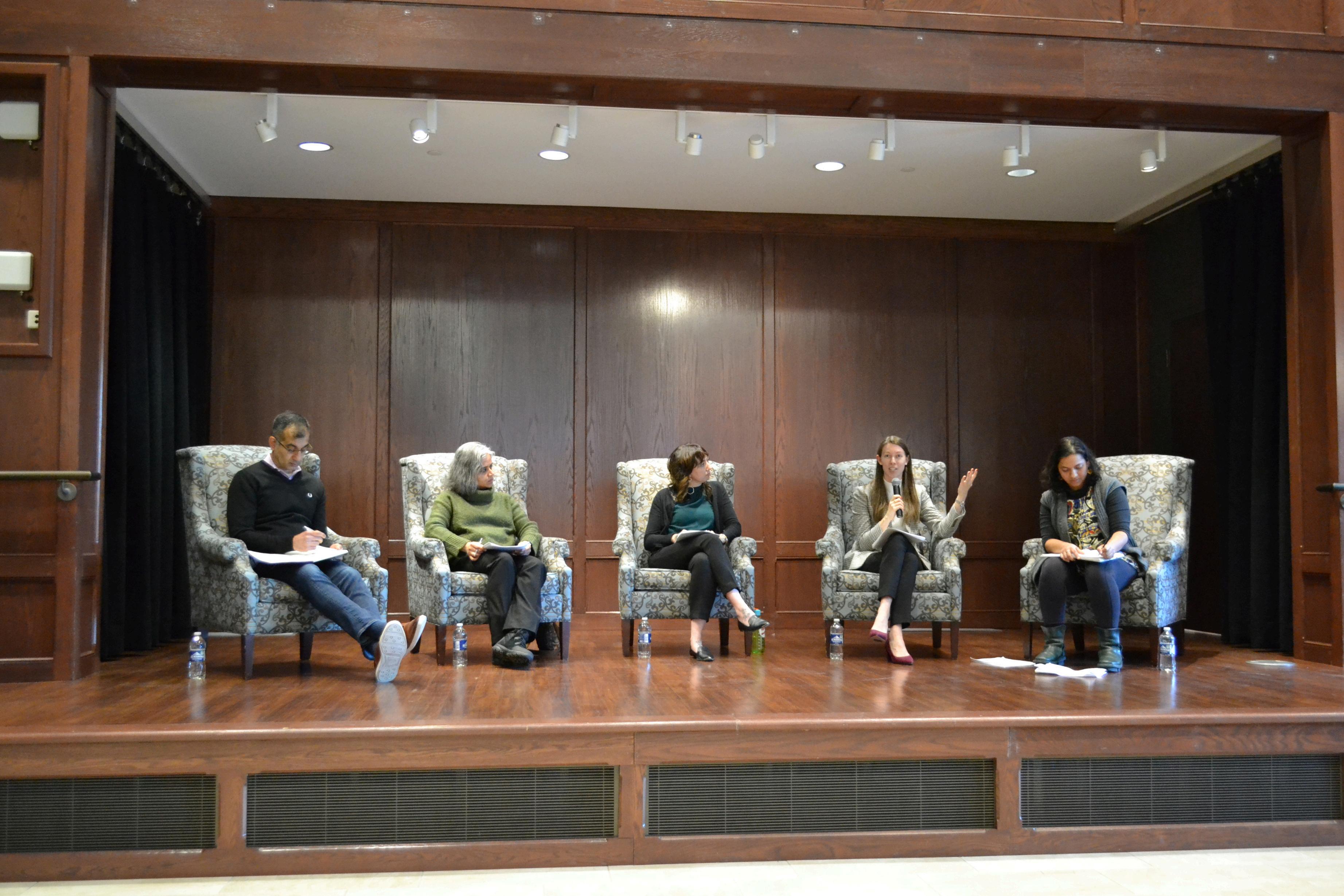
BELOW: The final Aronson Family Lecture Series event was the “How We Think” panel discussion. The panel consisted of JMHC faculty and Dr Suri, who discussed any relevant news regarding the expanding field of artificial intelligence The panelists' academic backgrounds varied, making the conversations more engaging and applicable to all the fields encompassed in the JMHC. This year's Aronson Family Lecture Series was thought-provoking and informative, and we are excited to see who will lead next year's Lecture series in the Spring of 2025.
One of the biggest undergraduate research expositions to happen on campus is the ‘Undergraduate Research Expo.’ Every semester, hundreds of undergraduate students here at Purdue take the time to showcase all of the hard work they have dedicated to their chosen area of research. Here at Forge, we proudly showcase two semesters of the ‘Undergraduate Research Expo,’ Fall 2023 and Spring 2024, and spotlight all of the JMHC students involved! Below, you will find snapshots of the students and small descriptions of their field of research:
Prudence Regacho looked at the effects of the COVID-19 vaccine on adolescent hormone levels.

Ethan Baird worked on an independent research project that focused on semiconductor manufacturing but looked at it from an educational perspective
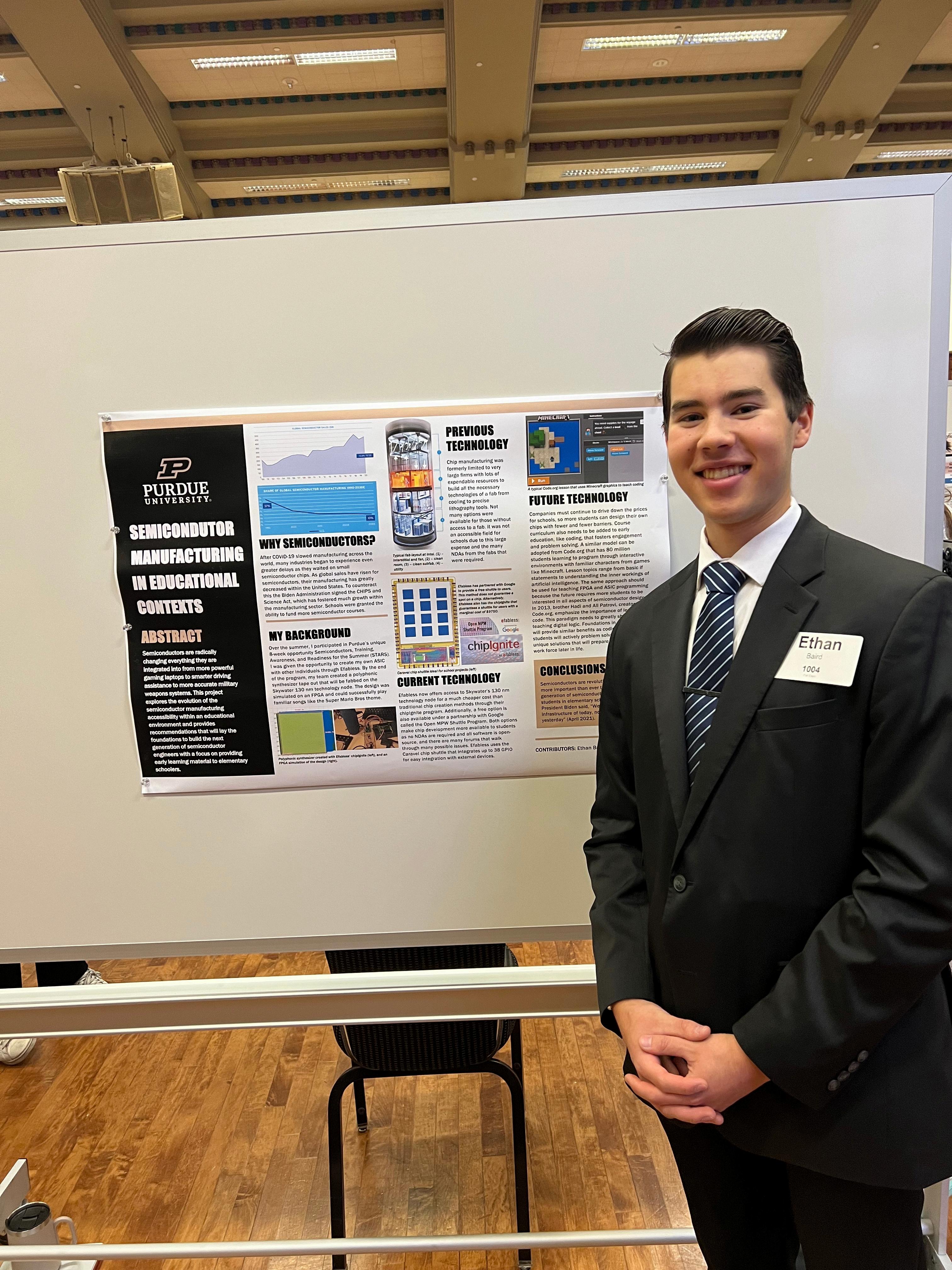
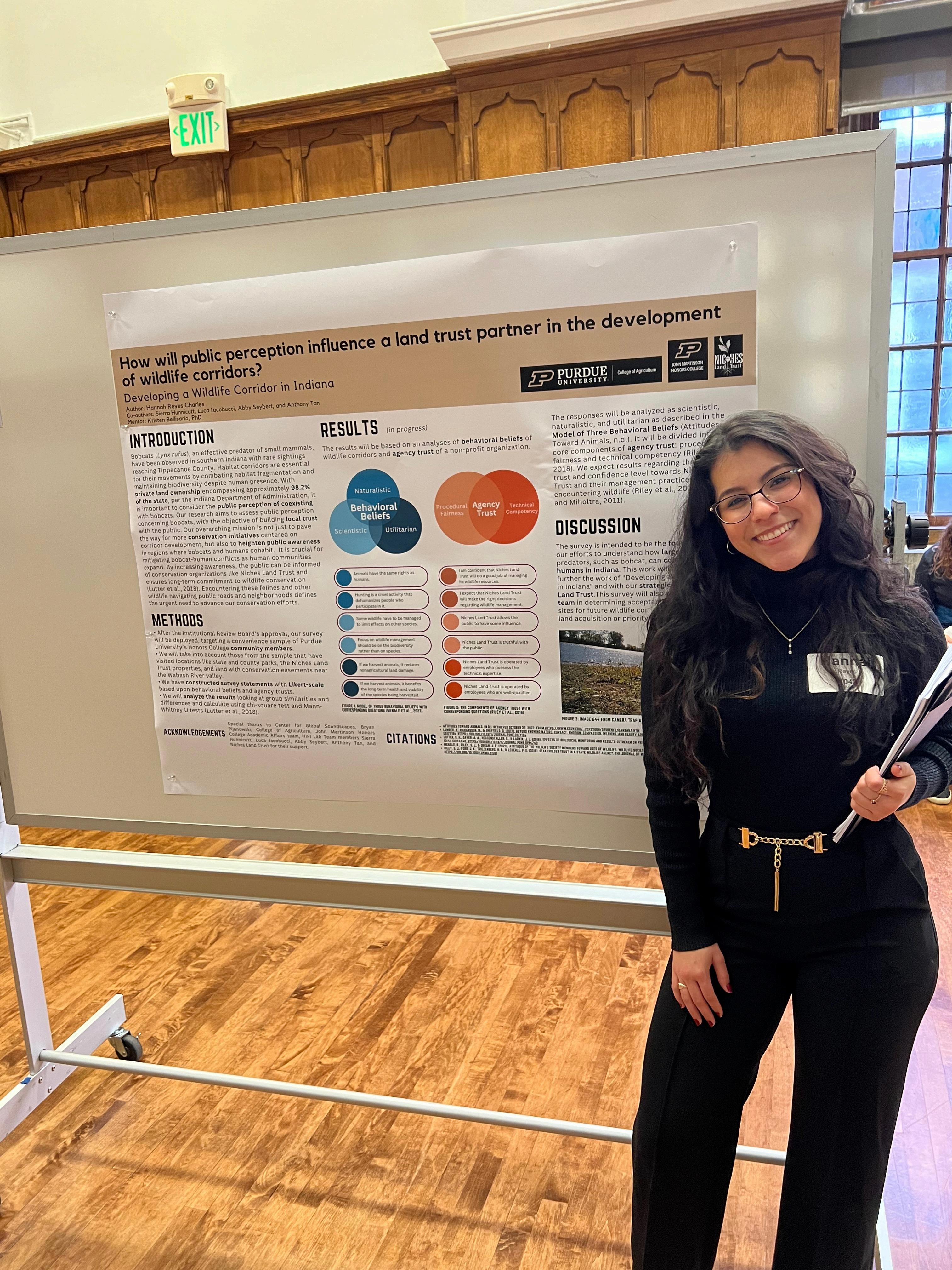
Hannah Reyes investigated the effects of public perception on influencing land trust partners developing wildlife corridors.
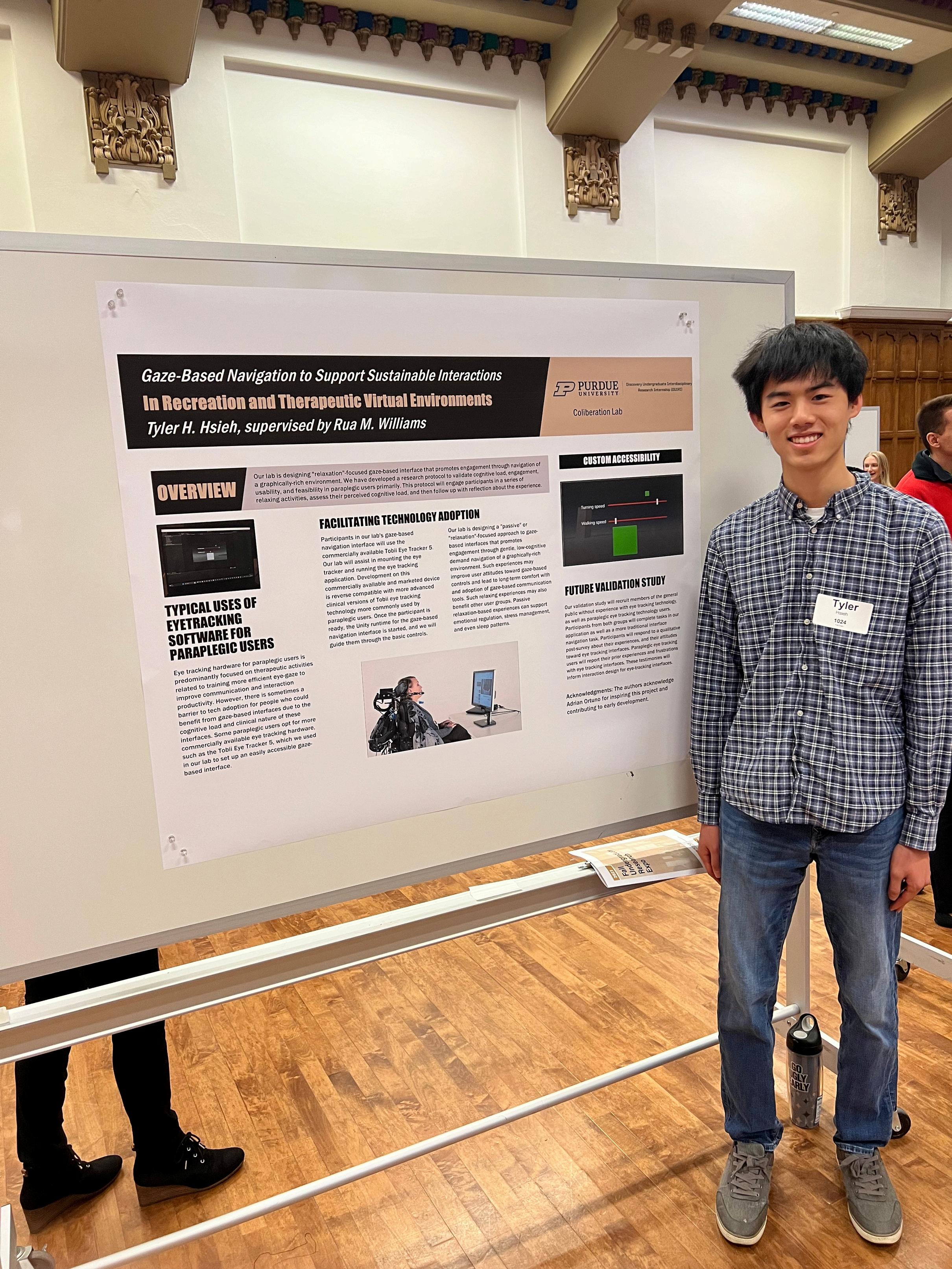
Tyler Hsieh’s lab investigated gazebased navigation to support sustainable interactions.

Alexandra Wildridge, alongside her group, reviewed the implementation of integral infectious disease care and substance use disorder treatments.
Under Dr. Bellisario's mentorship, Ryan Feller examined the potential advantages of employing an RShiny App for acoustic processing over a manual workflow
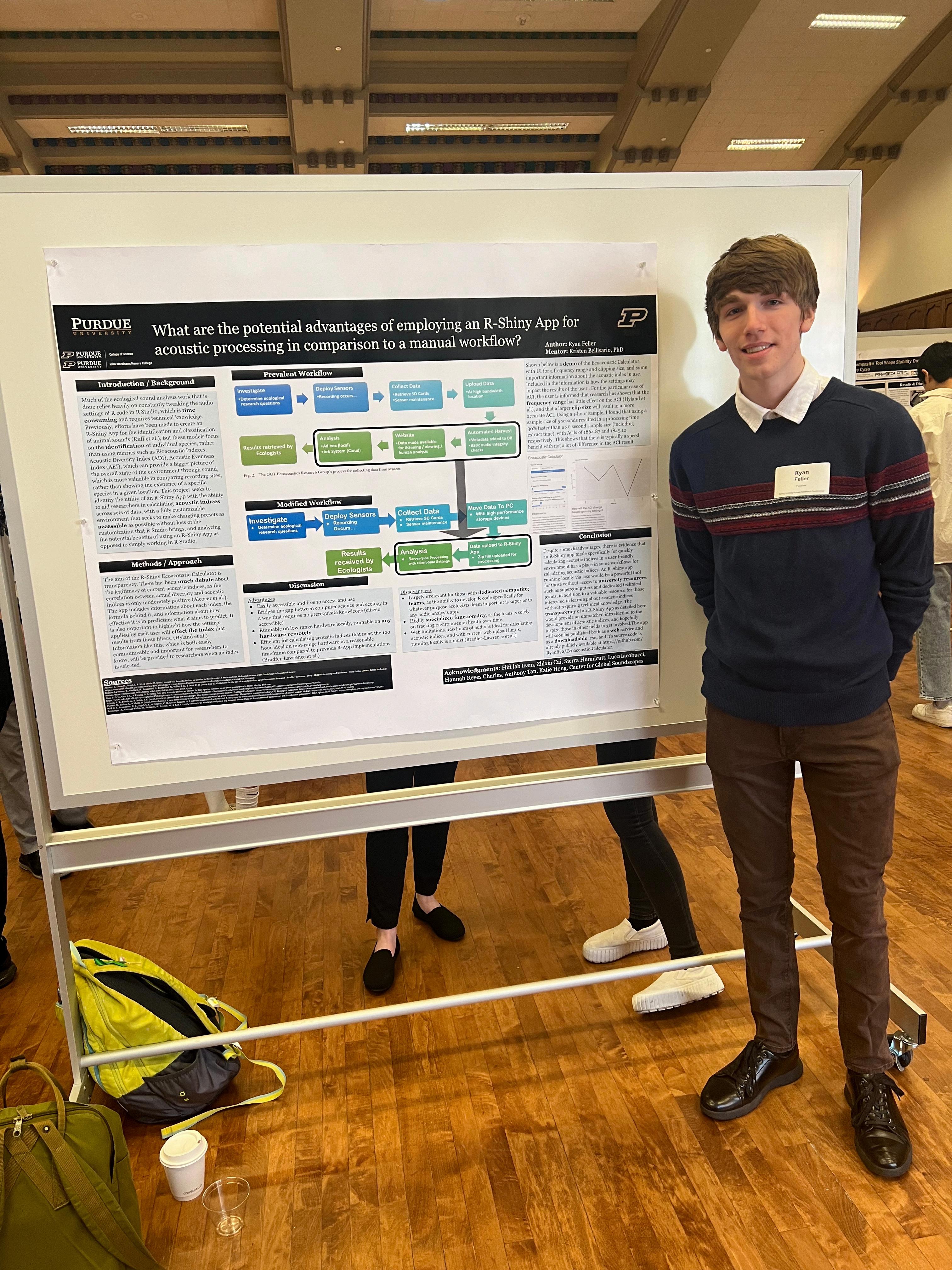
used comparative AI and humanbased recognition to examine the impact of acoustic richness and bird dispersal on road proximity in Tippecanoe County.

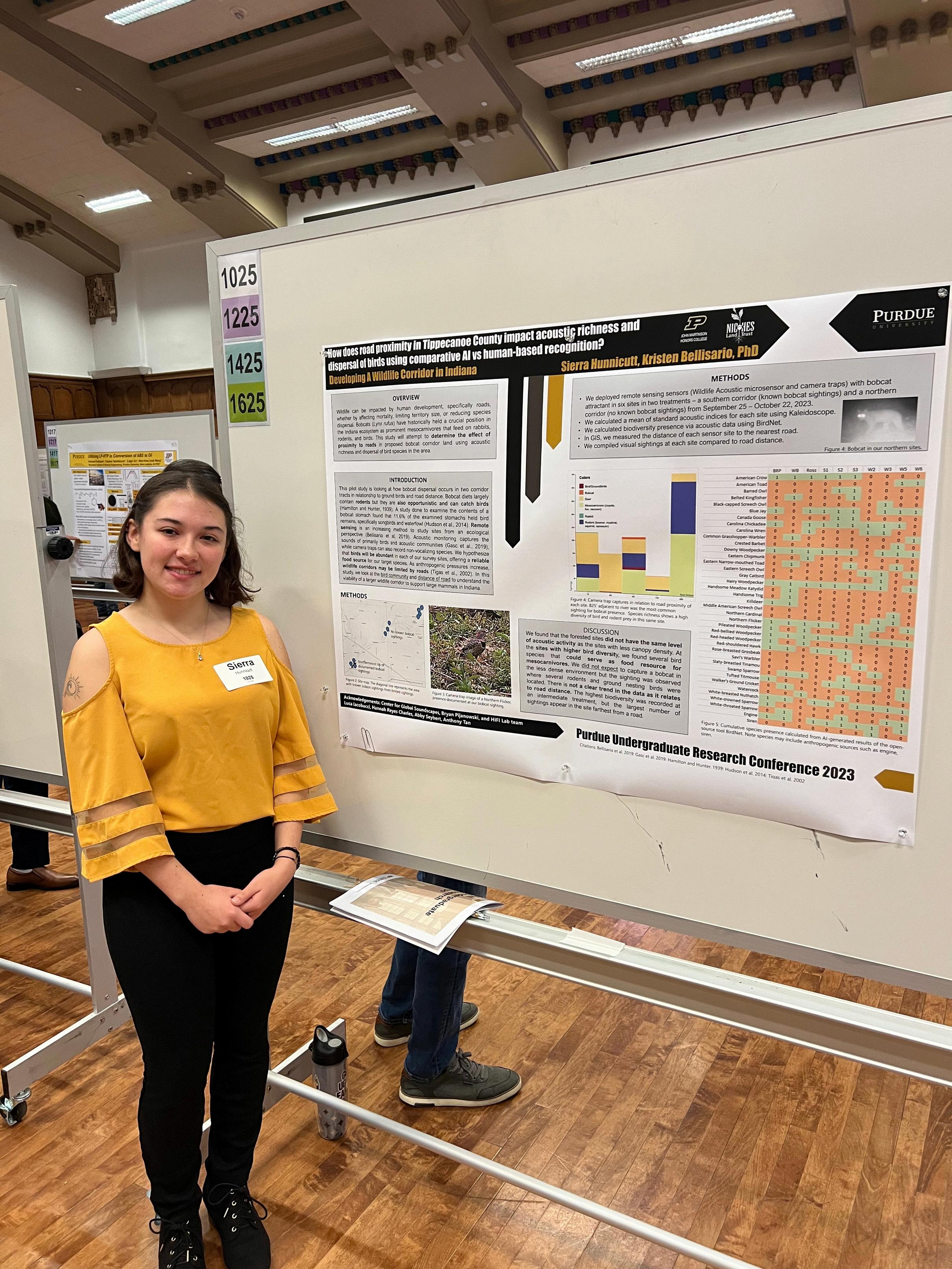
Song utilized numerical modeling and visualization of flow behaviors for Jet Impingement Cooling and Tesla Channel Cooling.
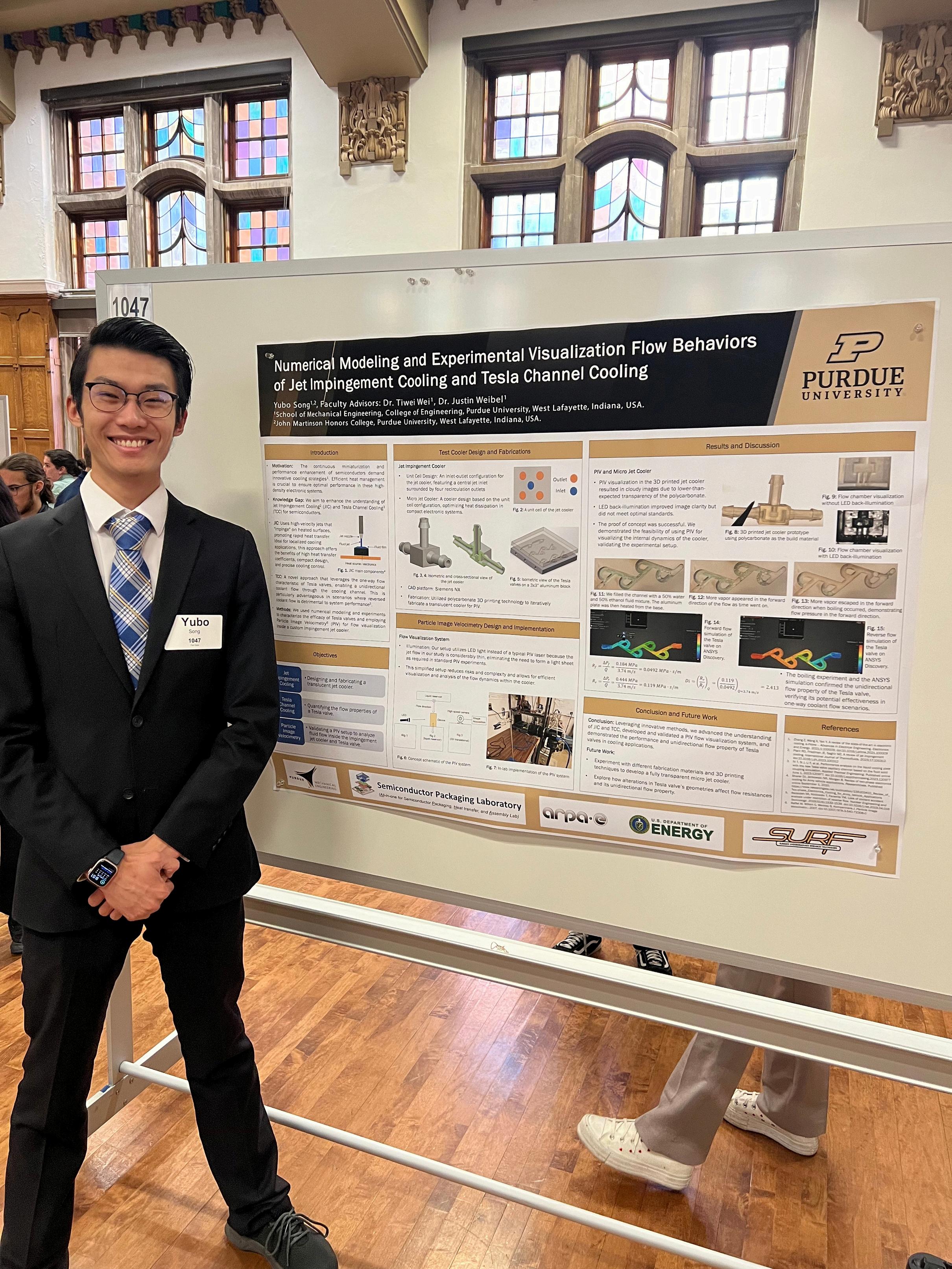

Katie Hong, alongside Dr Bellisario, examined how mammal species diversity in gradient habitat features predicts Bobcat presence in the Central Till plains.

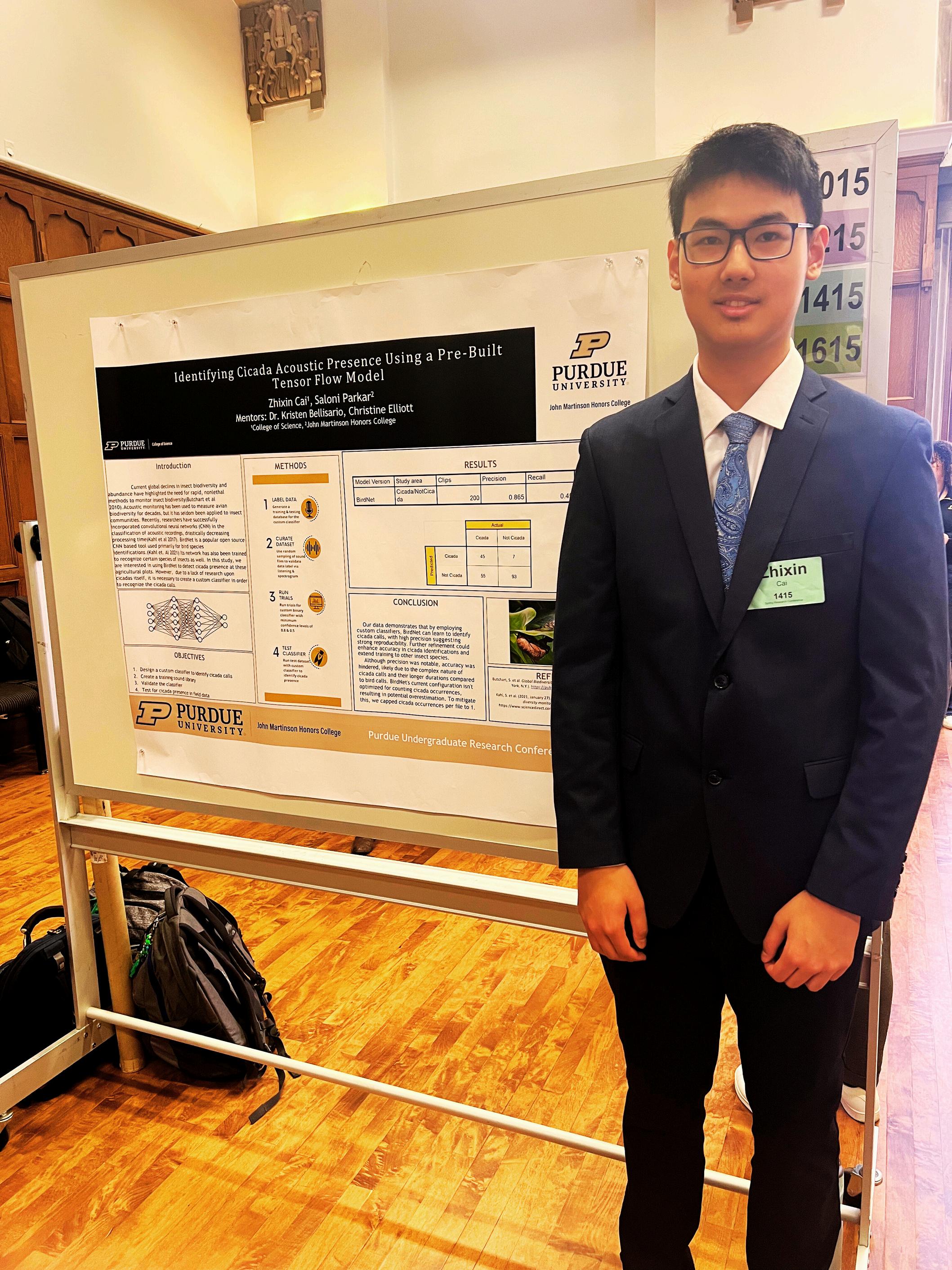
Zhixin Cai and Saloni Parkar researched identifying Cicada Acoustic presence using a pre-built tensor flow model.
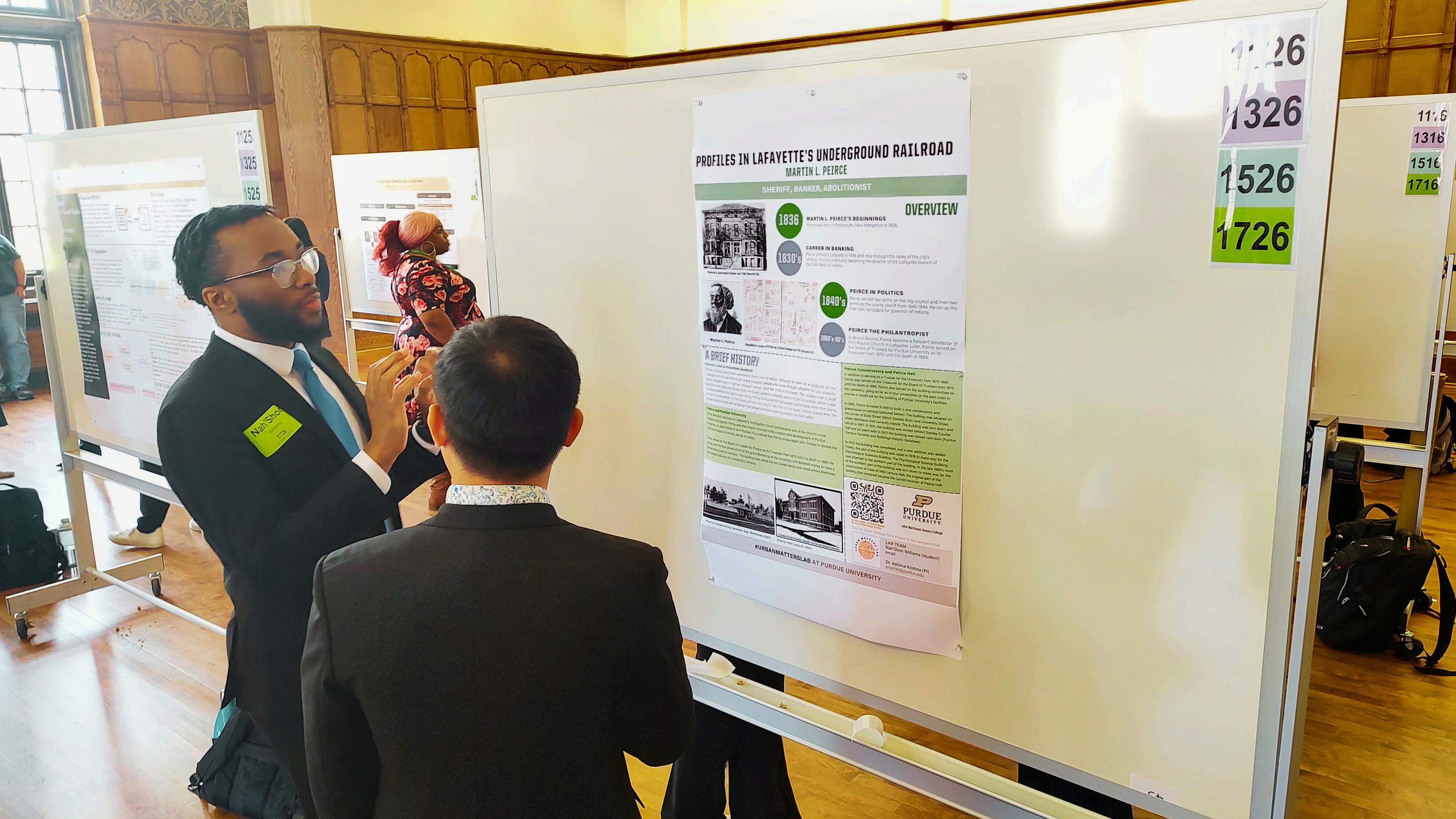
Nah’Shon Williams worked on a research project on understanding and documenting sites on the Underground Railroad in Lafayette with JMHC faculty Dr. Ashima Krishna.
On March 28, 2024, PATTeRN, which stands for performance, art, text, and technology research network, hosted a poetry slam with poet and author Roque Raquel Salas Rivera. PATTeRN is a lab within the John Martinson Honors College that was created and is run by Dr. J. Peter Moore, a clinical assistant professor in the JMHC.
Roque Raquel Salas Rivera is a well-respected poet with many accolades for their work. He won the Lambda Literacy Award for Transgender Poetry for his book The Tertiary, a book that follows the life of Puerto Rican citizens living during the debt crisis which began in 2014. Roque Raquel Salas Rivera identifies as a transgender, queer Puerto Rican These aspects of his identity inspire the style and topics of their work. Salas Rivera was quoted saying, “It is easier to be trans in New York City than in Puerto Rico.” During the poetry slam, Salas Rivera read their poem “We All Recieve The Invitation.” The PrintBay Lab, run by Dr. J. Peter Moore, is also a part of PATTeRN. The Print Bay lab created copies of Salas Rivera's poem “We All Recieve The Invitation” for audience members to take home. These copies were printed the same day as the poetry slam in the Honors College and Residents South building.
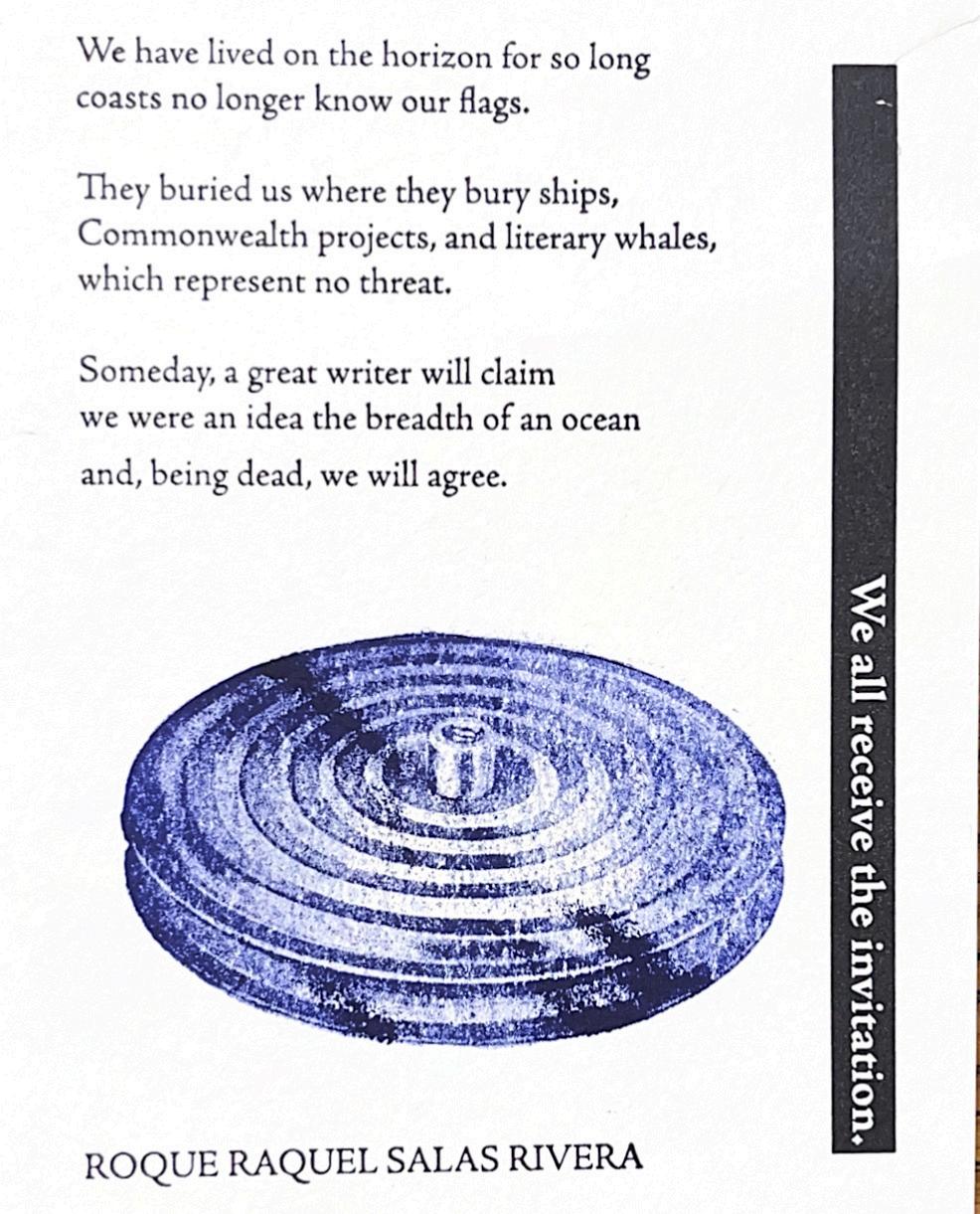
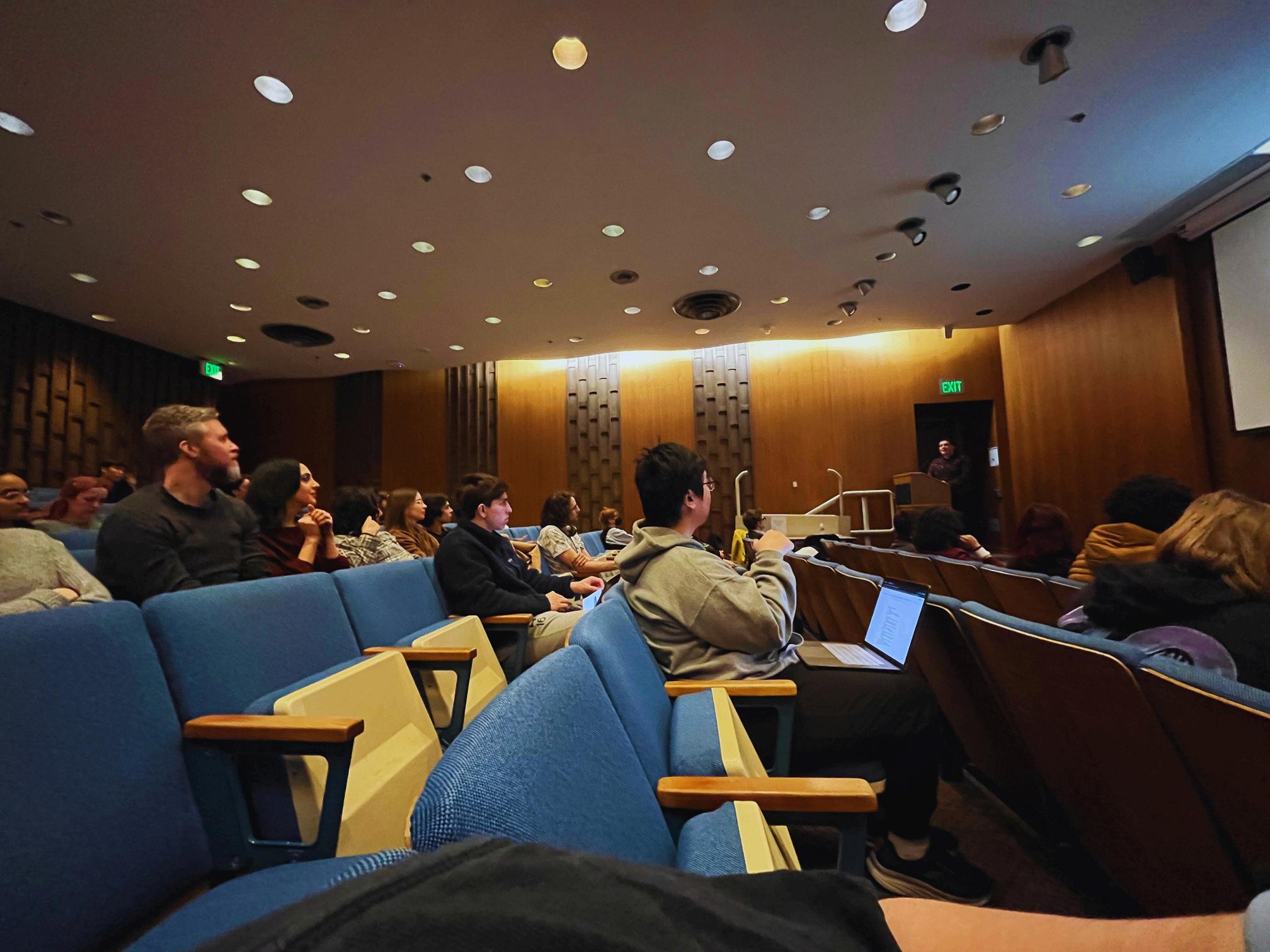
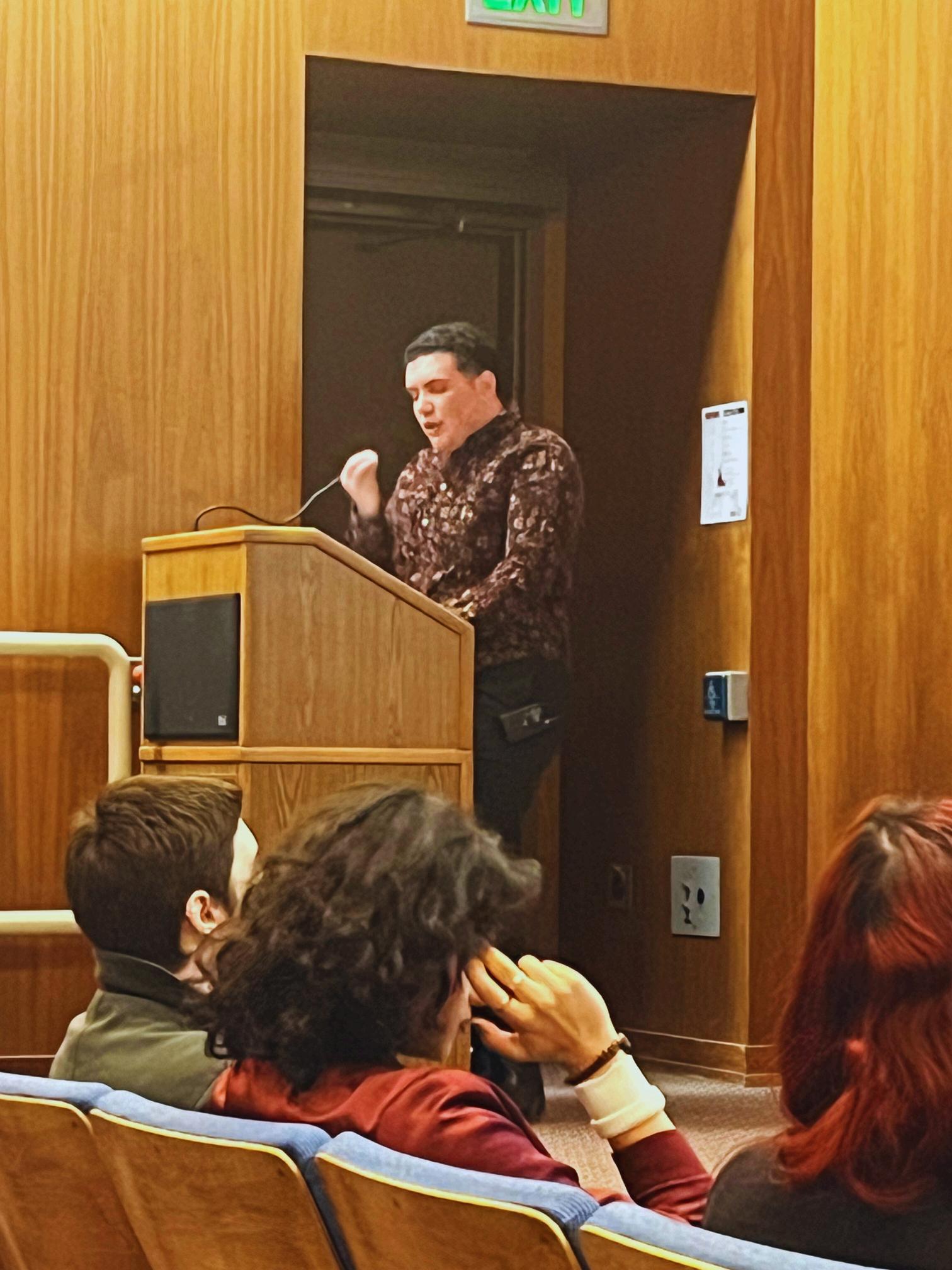
On March 27th, 2024, some of the JMHC's faculty, staff, and students traveled to Indianapolis to the architecturally and historically significant Madame Walker Theater to connect, interact with, and formally introduce faculty, staff, and students from JMHC to the IUPUI Honors Students who will be transitioning from the IUPUI Honors College to Purdue University in Indianapolis. Through this transition, these students will formally become students of the JMHC.
At the event, various organizations and research opportunities happening around the JMHC set up small booths for the students of IUPUI to engage with. There were various speakers at the event: JMHC’s Associate Dean for Academic and International Affairs, Dr. Natasha Duncan, and the newly appointed Senior Honors Advisor for Purdue in Indianapolis, Jasmine Pruitt. As a token of the event, PIN Honors Student Morgan Roberts was commissioned to design a commemorative key chain to celebrate the transition. JMHC faculty Dr. Peter Moore will teach in-person classes at Purdue University in Indianapolis beginning in Fall 2024. This expansion of the JMHC is truly a monumental and pivotal point in the history of the college, and we cannot wait to start covering affairs that take part at Purdue University in Indianapolis.

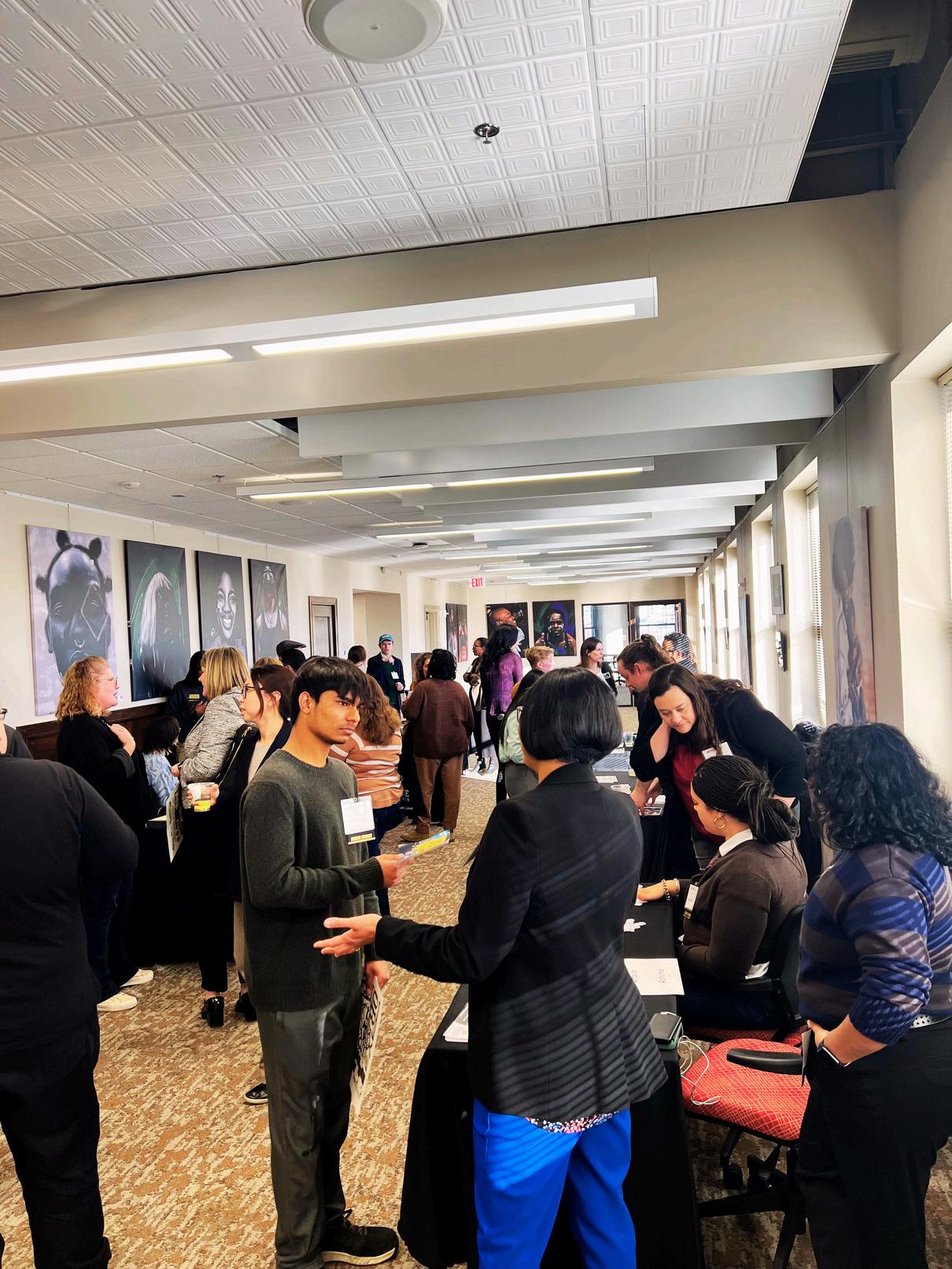
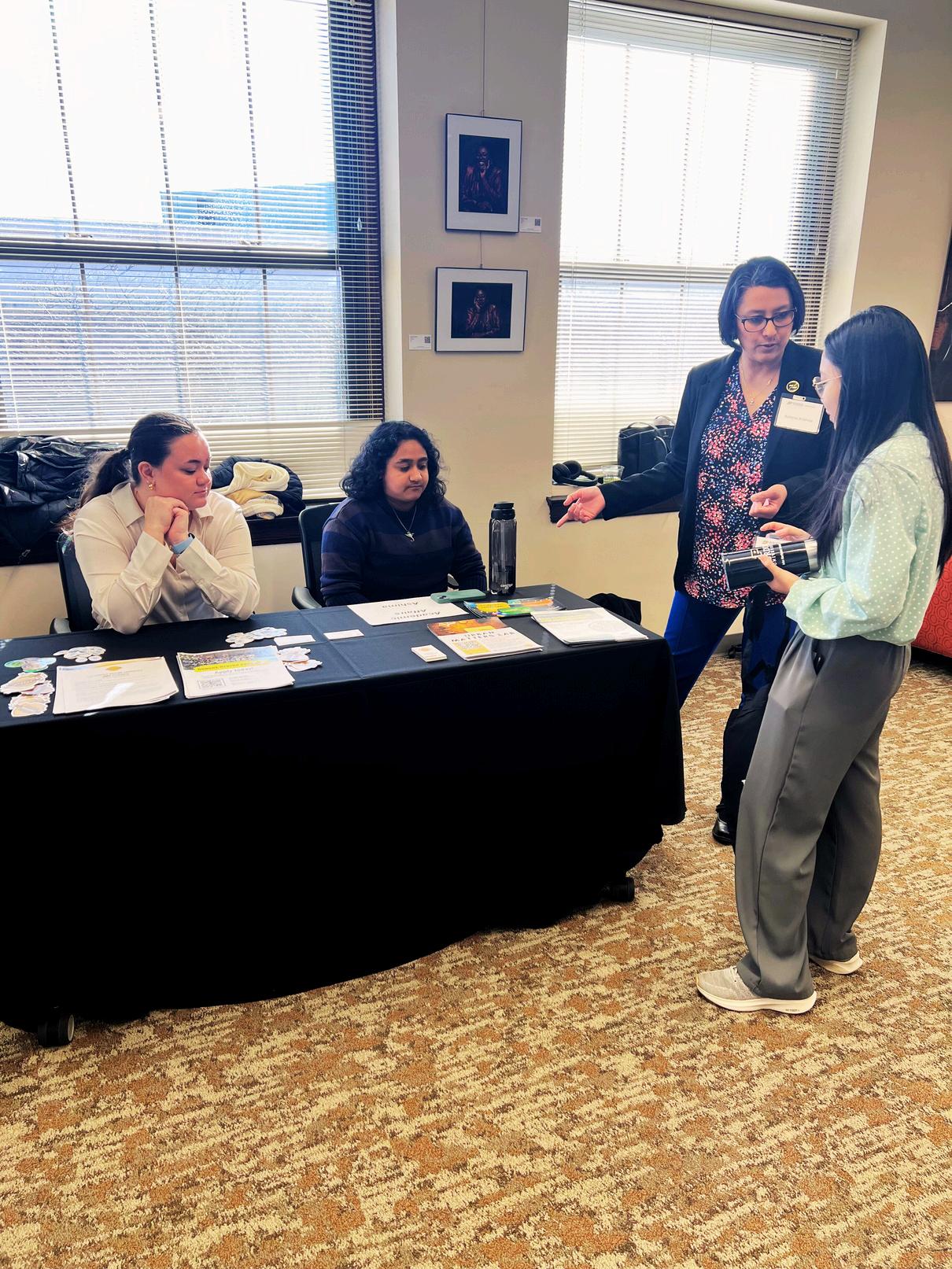



The 'Think Local' trips, led by Dr. Matthew Joseph, a postdoctoral scholar in the BEI unit, and hosted by JMHC, were a highlight of the 2023 Fall Semester. These excursions to Indianapolis were truly unique experiences for the JMHC community.
On September 16th, around 30 students had the opportunity to go on the first (of many) " Think Local”: Overlooked African American History in Lafayette and Indianapolis" trips! Dr. Joseph of the JMHC organized the trip for anyone who wanted to delve into the oftenoverlooked African-American history in Indianapolis. The first part of the trip started at the Crispus Attucks Museum, one of the only historical museums in an active high school in the United States. During the museum tour, the guests had the privilege of watching one of the performers of the 'Freetown Village Singers'
After the tour and performance, the guests went on a guided tour of the 'Flanner House District,' a historic housing district in Indianapolis no more than five minutes from the Crispus Attucks Museum. During the walking tour, the guests had the unique opportunity to listen and talk to some of the oldest living residents in the district; it was truly amazing to hear their story and history within the neighborhood! After the walking tour, the guests went to the Flanner House Community Center, where they toured the bookstore and community garden and listened to the CEO of Flanner House talk about what they mean to the greater African-American community in Indianapolis.
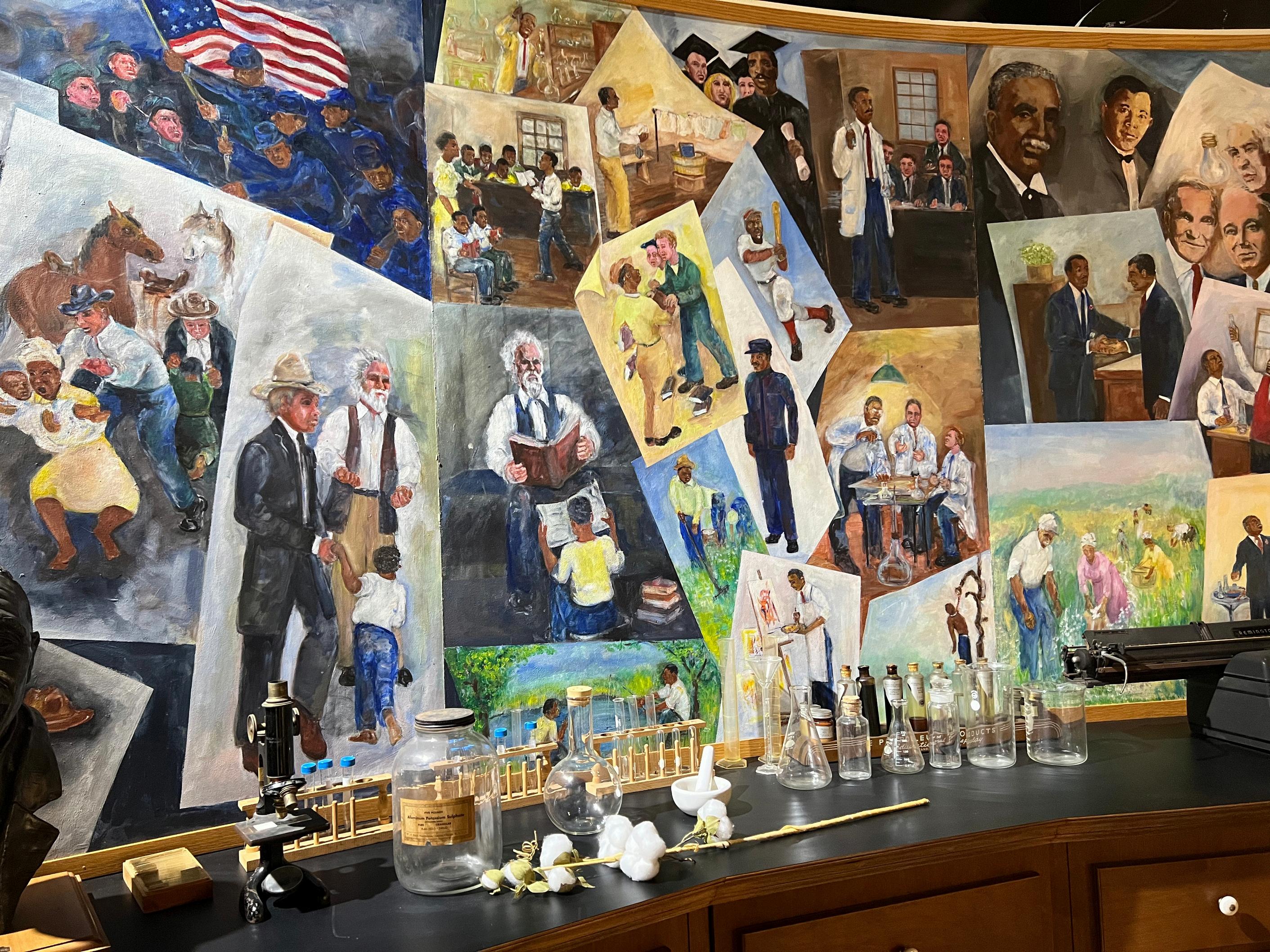
Oldest living residents in the Flanner House District




On October 20th, another 30 students went to Indianapolis to see and appreciate the city's rich and often overlooked African American history and heritage. The tour started with a visit to the ‘Madam Walker Legacy Center,’ where attendees saw the unveiling of ‘Madam C.J. Walker Memorial Way’ facing the Legacy Center in the heart of Indiana Avenue.
Each person on the Legacy Center’s board and the Mayor of Indianapolis, Joe Hogsett, remarked on what unveiling the avenue means to historical preservation in Indianapolis and the city’s greater African American community
After the unveiling, attendees took a 45-minute walking tour of Indiana Avenue with their guide Sampson Levingston to see what elements of Black history remain on the street and what is being done to preserve them, such as ‘The Emilie,’ a beautiful building constructed in 1902, the ‘Madam C.J. Walker Mural,’ which was unveiled in 2022, or the ‘Indiana Avenue Jazz Masters’ mural, that was painted in 2011.
After the walking tour, attendees returned to the Legacy Center, where they enjoyed a collegial dinner and watched Kevin Nance-West, a local Indianapolis artist, unveil his latest collection, “Purple,” in the Legacy Center's 4th-floor foyer
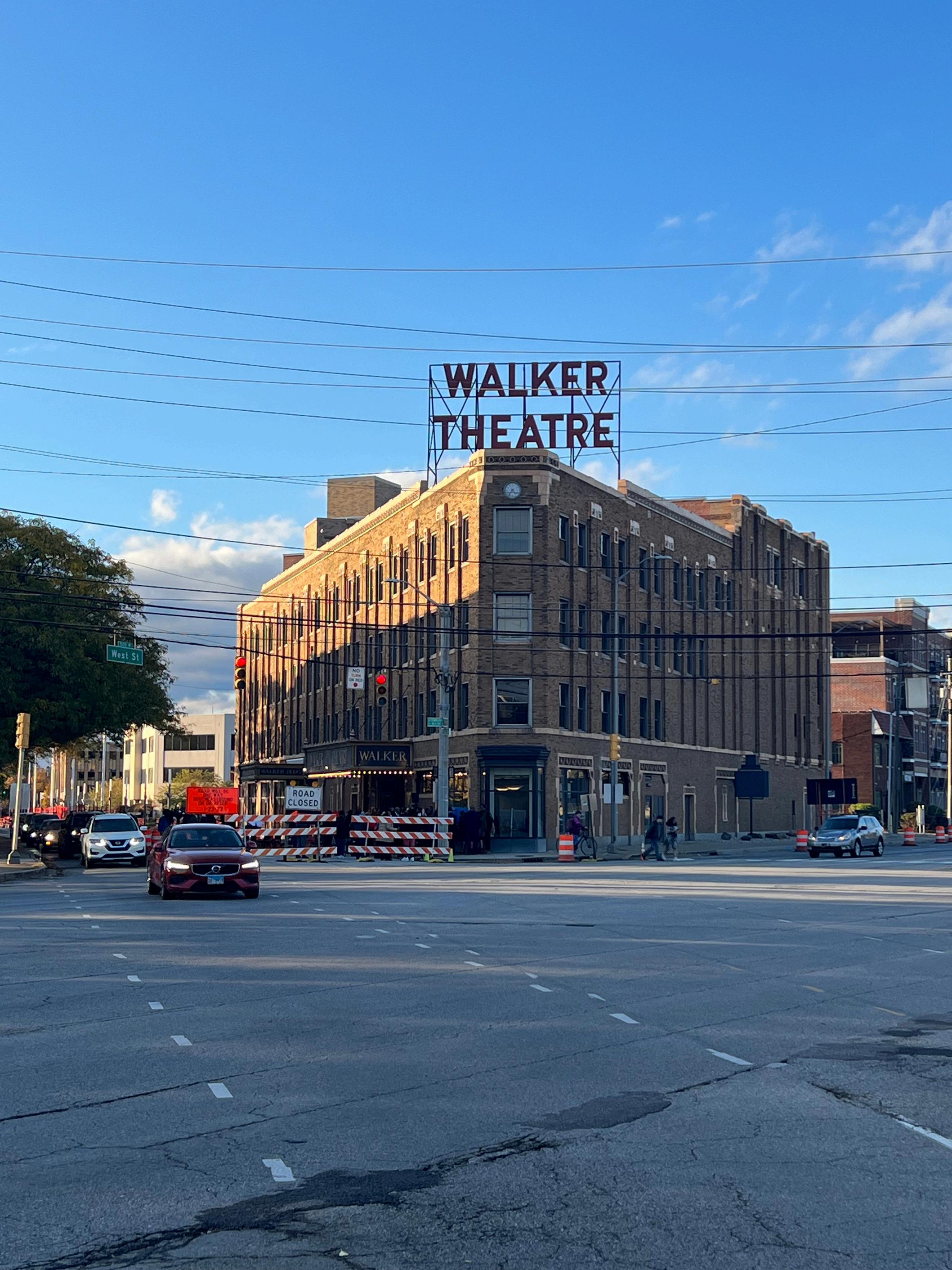
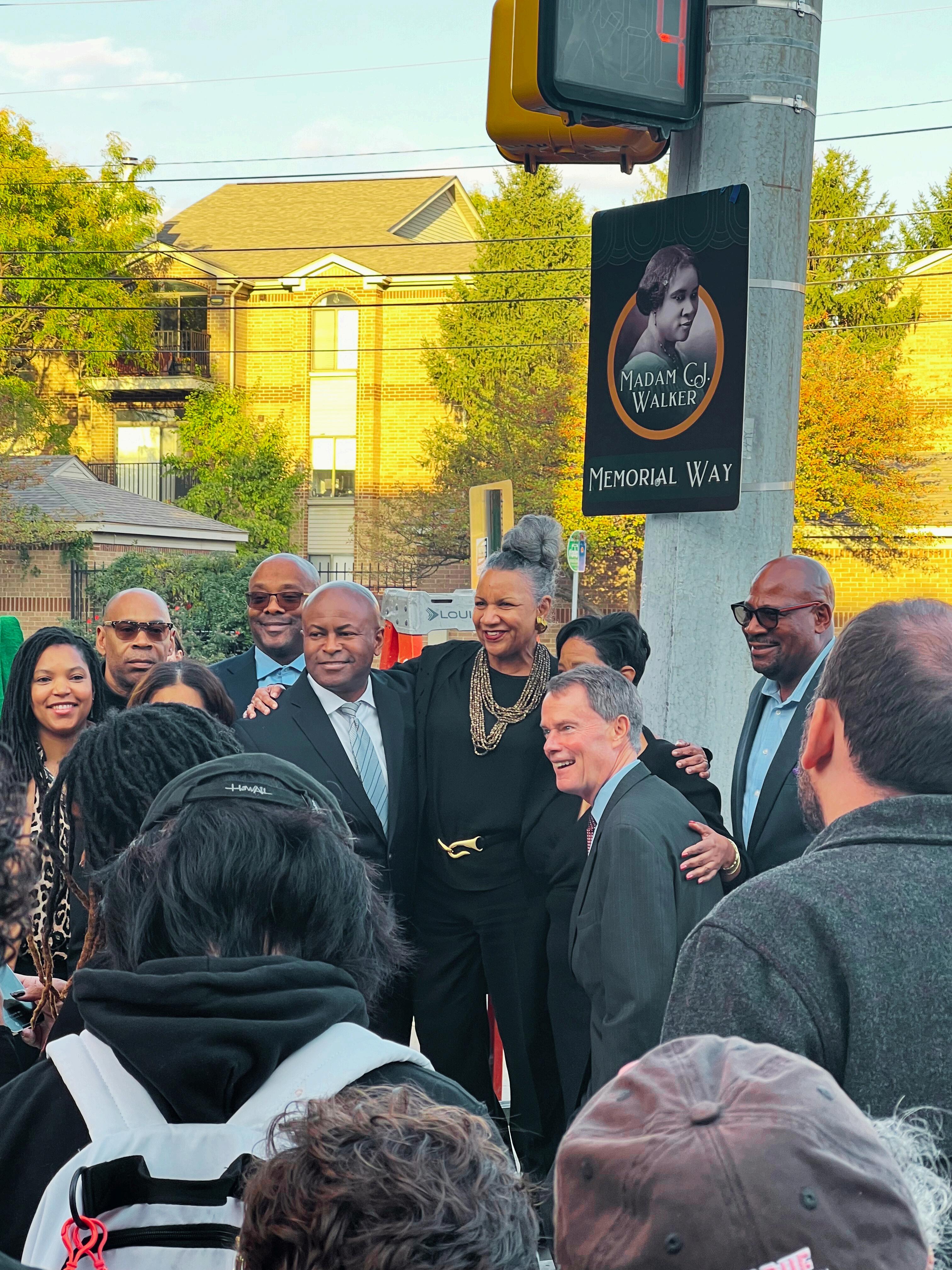



Author: Amelia K Simpson
Thanks to a generous grant from the John Martinson Honors College and support from the Purdue Policy Research Institute, my classmates and I traveled to Washington, D.C. and presented at the Department of State’s Diplomacy Lab Fair this past April. Throughout the Spring semester, my class, led by Drs. Ashima Krishna and Nathan Swanson, constructed a Storymap of the U.S. Chancery in Rome, highlighting the intersections between the building’s historical significance and present-day functions as an embassy. Although we weren’t able to travel to the U.S. Chancery in Rome, Virginia Barrett Price of the Bureau of Overseas Buildings Operations (OBO) provided us with invaluable information and connections for this project. Her knowledge of the inner workings of the State Department and her responses to our questions helped us formulate exactly what we needed to include in our Storymap.
The Diplomacy Lab Fair was set for the entire day Friday, April 19th, so my professors, three classmates, and I arrived in D.C. the day before the event. Once there, we traversed museums and coffee shops, with the time in between spent working on our speeches. Similar to how we divided our Storymap we split up our speaking sections in five parts: first, an introduction, second a brief history of the chancery, then a look at the architectural significance, and finally an explanation of the legislation protecting the site, followed by a short conclusion Narrowing down each of our speaking parts to two minutes proved a difficult feat, since our Storymap amounts to over 8,000 words. With the help of our professors and peer feedback, we included only the most relevant information. By Thursday evening, we were ready to present, albeit nervous. Early Friday morning, we reached the doors to the National Museum of American Diplomacy, got our name badges, and settled into our assigned room. There were about 15 other groups in the room with us, and throughout the day, each group got the chance to present their work and listen to others. The wide range of topics that people presented on, from climate change to history to terrorism, emphasized the importance of diplomacy as a solution to many of the world’s biggest problems.
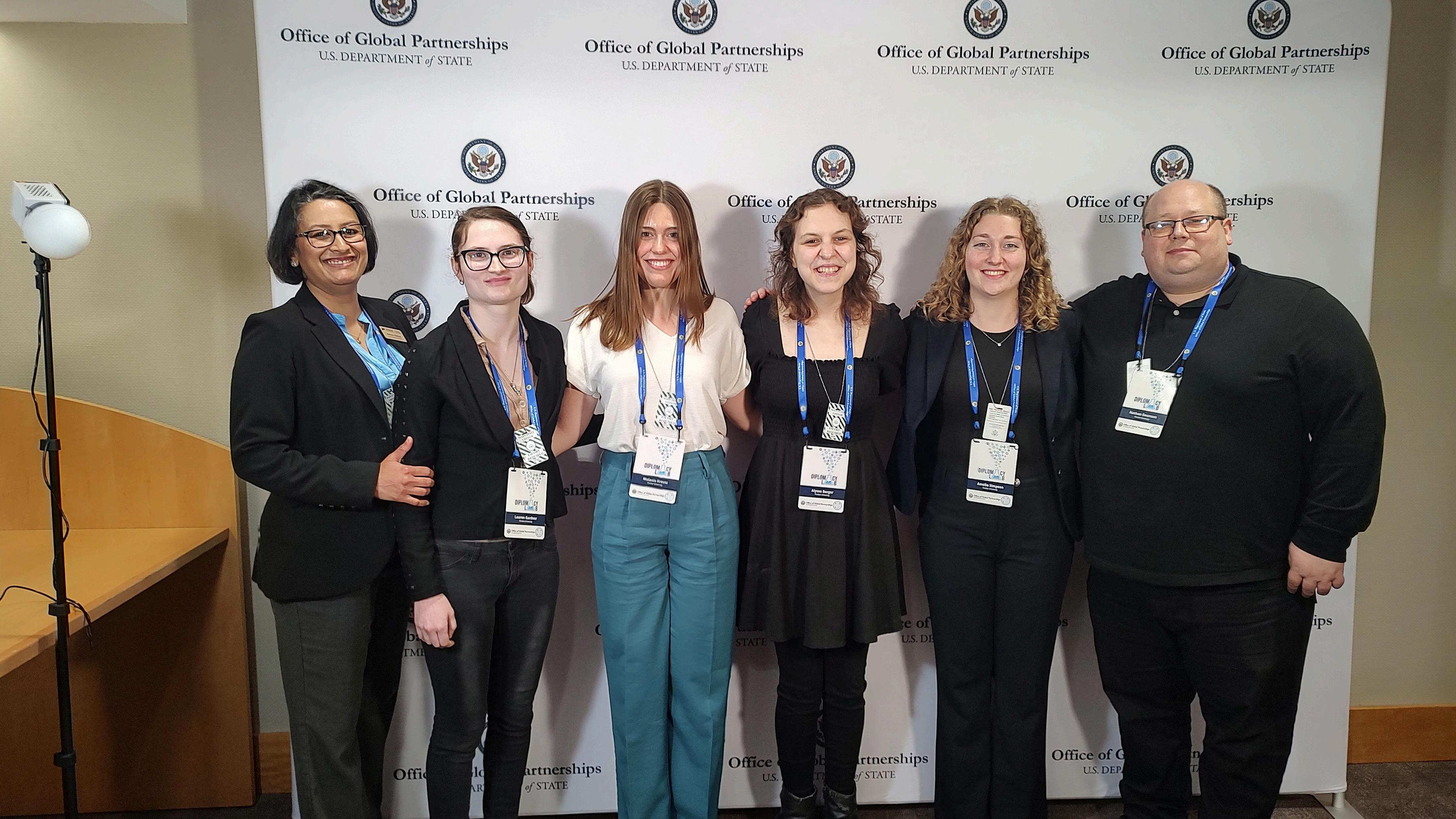


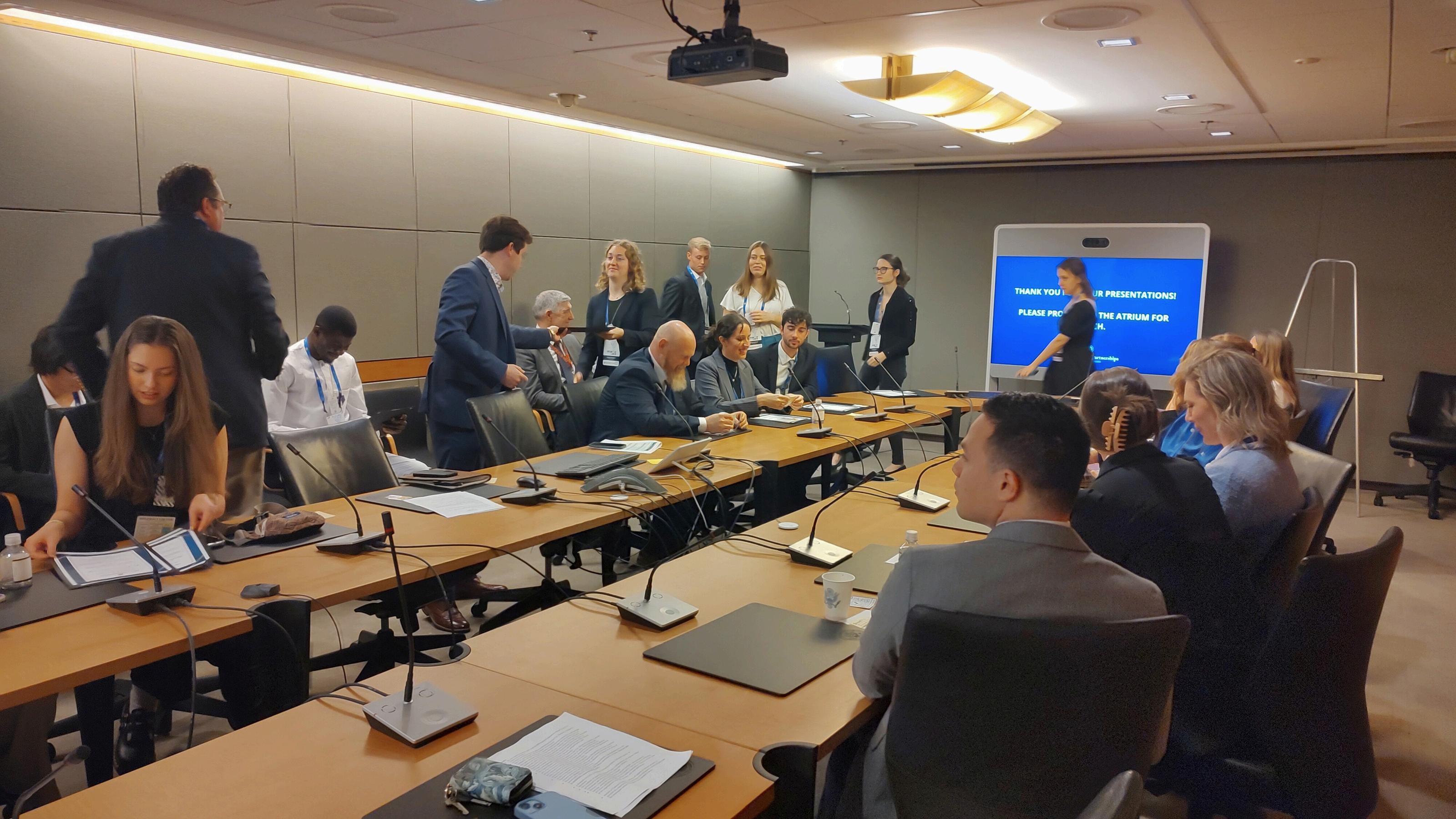
When it was our turn to present, we gathered in the front of the room and presented just as we rehearsed while Dr. Krishna helped with scrolling through the Storymap in real time. The environment of mutual information exchange made the presentation very manageable. Our audience appreciated the visual elements of the Storymap, which we relied on to explain the ongoing balance between making the embassy building functional while preserving its historical integrity.
The professional development, public speaking, and networking skills I got from this trip were very constructive, and I can’t thank Drs. Ashima Krishna and Nathan Swanson enough for creating this opportunity I also appreciate all the time and effort my classmates and I invested in this Storymap. Assembling the site involved a lot of hard work, but publishing the finished product and presenting it to an audience of engaged listeners made it all worth it.
Our Storymap about the U. S. Chancery in Rome, “Palazzos, Perimeters, and Preserving Pasts,” is now free and accessible to the public here: https://arcg.is/y5f0O.
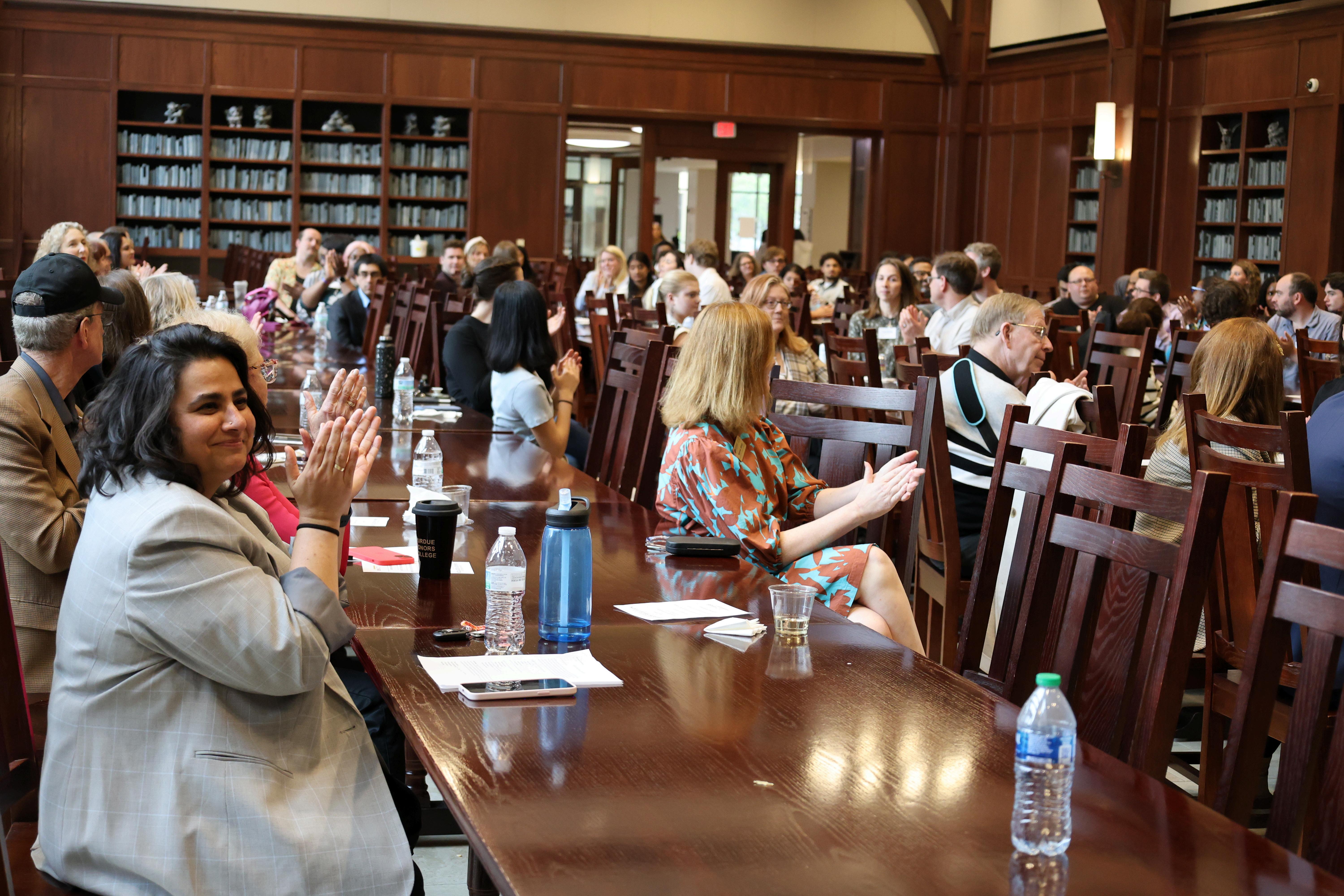

By Dr. Katie Jarriel, Director of the Honors Mentors Program
The Honors Mentor Program is one of the oldest and largest student organizations in the John Martinson Honors College. Each year, 130 mentors work with over 900 new students in the Honors first-year experience, where they lead the World-Readiness Lab Mentors earn credit for their classroom experience, but the Mentor Program also has a robust extracurricular community that keeps students coming back year after year The Honors Mentor Council, which is comprised of eleven returning mentors, plans all the program’s extracurricular events. They craft a vision each year to ensure that everything the Honors Mentor Program does serves the JMHC community and aligns with the program’s mission. Two executive officers lead the Honors Mentor Council. This year’s President is Vaneli Crespo-Cruz, and the Vice President is Hannah Spock. At the end of the semester, the two of them sat down to talk about their experiences so far.
I’m really proud of the community we’ve built in the past year. Even though the people have shifted, that sense of community and having a ‘home base’ has stayed the same. We've had a lot of changes in the past year and had to be adaptable. At the end of the day, the bumps and obstacles haven’t taken away from the victories.We’ve been able to appreciate all the good we’ve done.
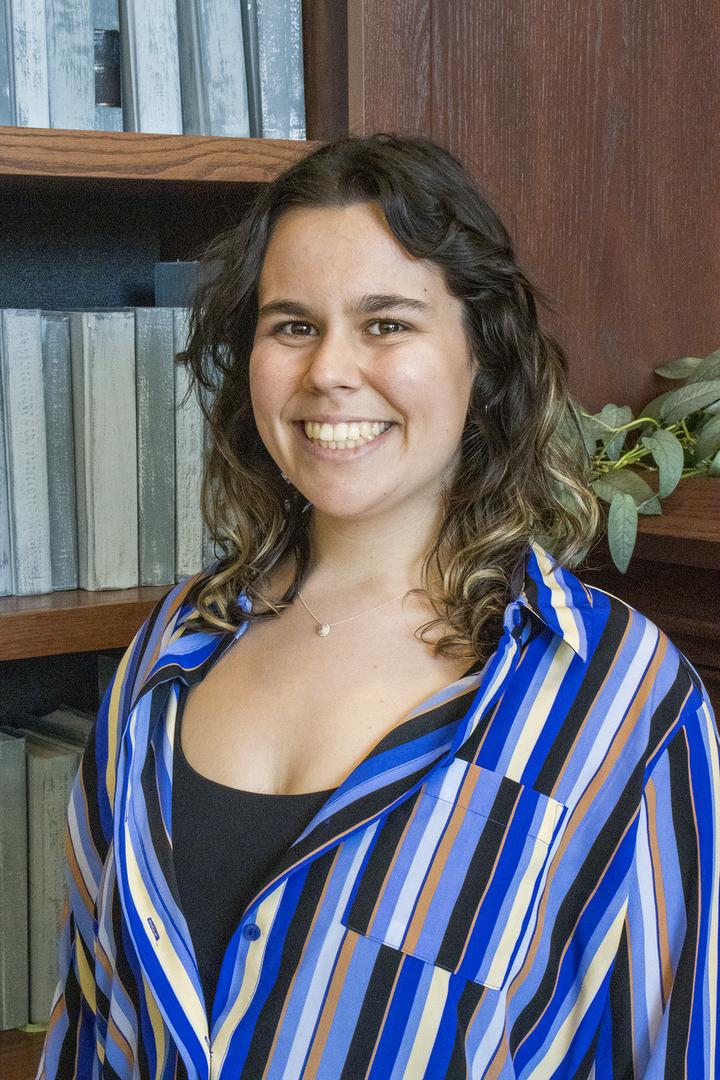
- Honors Mentor Program Vice President Hannah Spock, a third year Psychology major minoring in Critical Disability Studies
Adaptability is always a skill that the executive officers develop. In Fall 2023, the first-year curriculum changed to a new model, in which mentors facilitate the World-Readiness Lab for first year students. In addition to adapting to a new class model, this also meant changes in the extracurricular structure of the program, including the role of Team Leads for each section of the class, program points, and themes of events
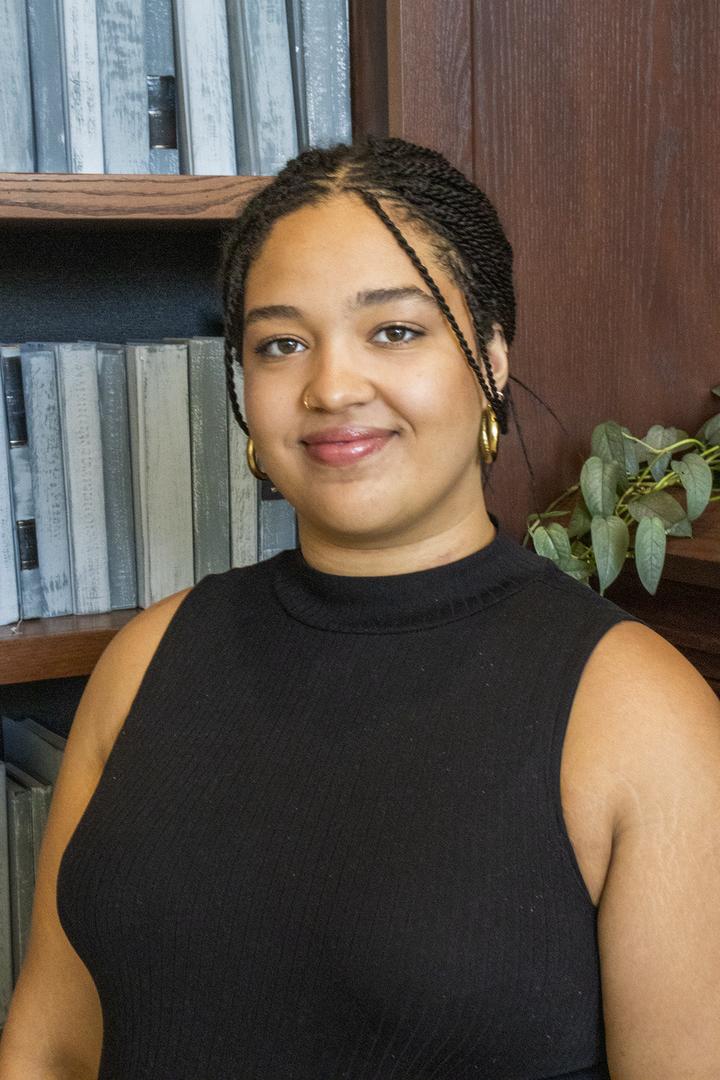
Having things to figure out as we go makes you want to celebrate everything that goes right. That’s a good feeling – having a lot of things to celebrate.
-
Honors Mentor Program President Vaneli Crespo-Cruz, a third year Biology major, minoring in
Art and Design
There is good reason for this year’s executive officers to feel proud. The spring semester saw record attendance at Mentor Program events, which has been exceptionally strong in recent years. Following the social impact of COVID on campus life, many student organizations at the university have struggled to garner strong engagement. However, the Mentor Program has increased event attendance each year since 2021. Part of that success can be attributed to the executives’ vision for the program, which emphasizes a “choose your own adventure” model for participation. This means the Council plans a variety of opportunities that get people excited. Each event is unique and provides a different benefit for mentors.
The other component of the program’s success this year: investment from the mentors who make up the community. “The program reflects the people in it – what is best for them, what they need, what they want. It attracts mentors who identify with the values we have as a program and who want to embody those values,” said Vaneli. “We all apply for the same reason – the passion and care we have for the program.”
Want to get involved? Applications for the Honors Mentor Program open each January. For more information, contact honorscollegementors@purdue.edu. Follow us on Instagram @puhonrmentors.




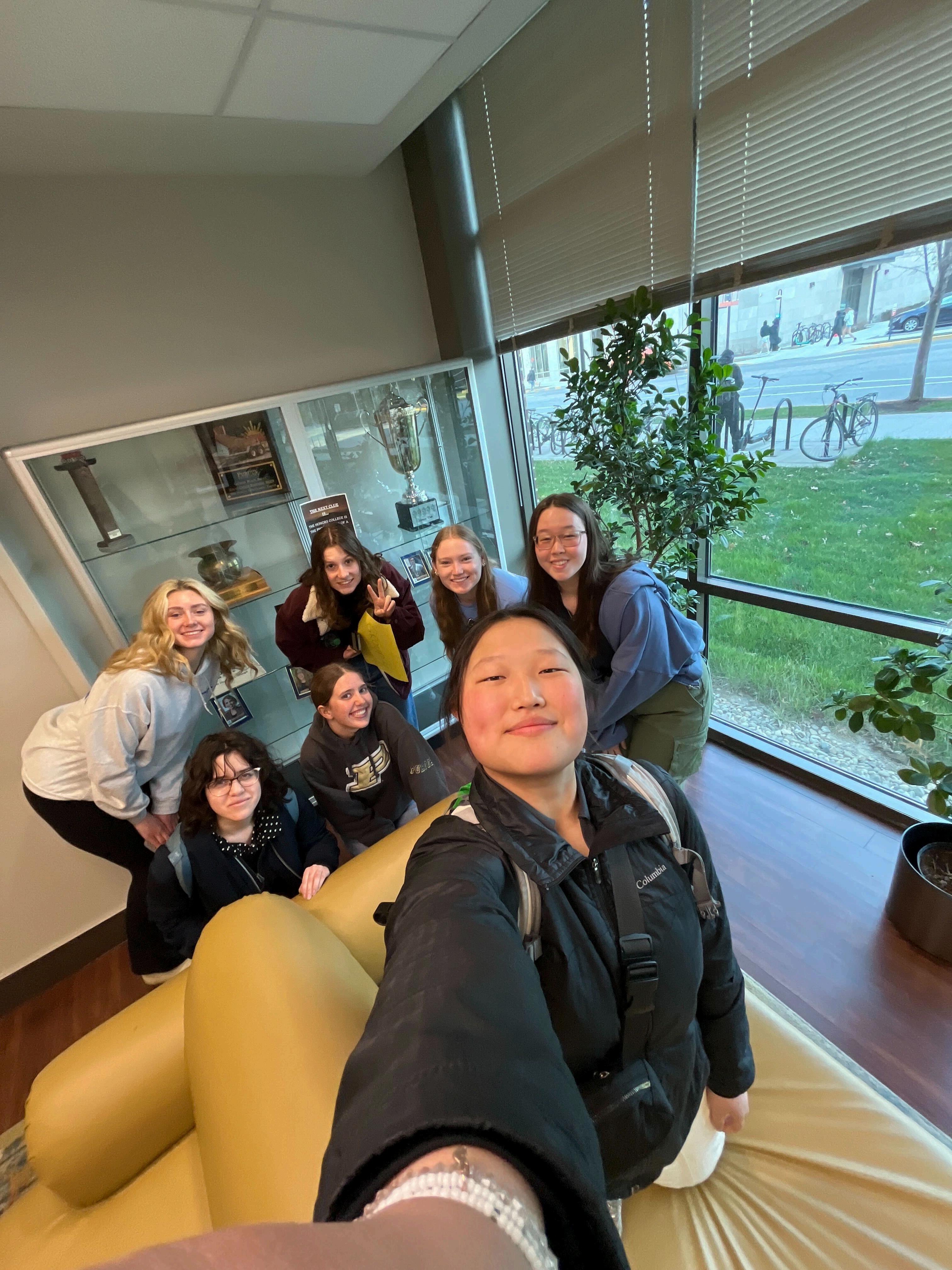

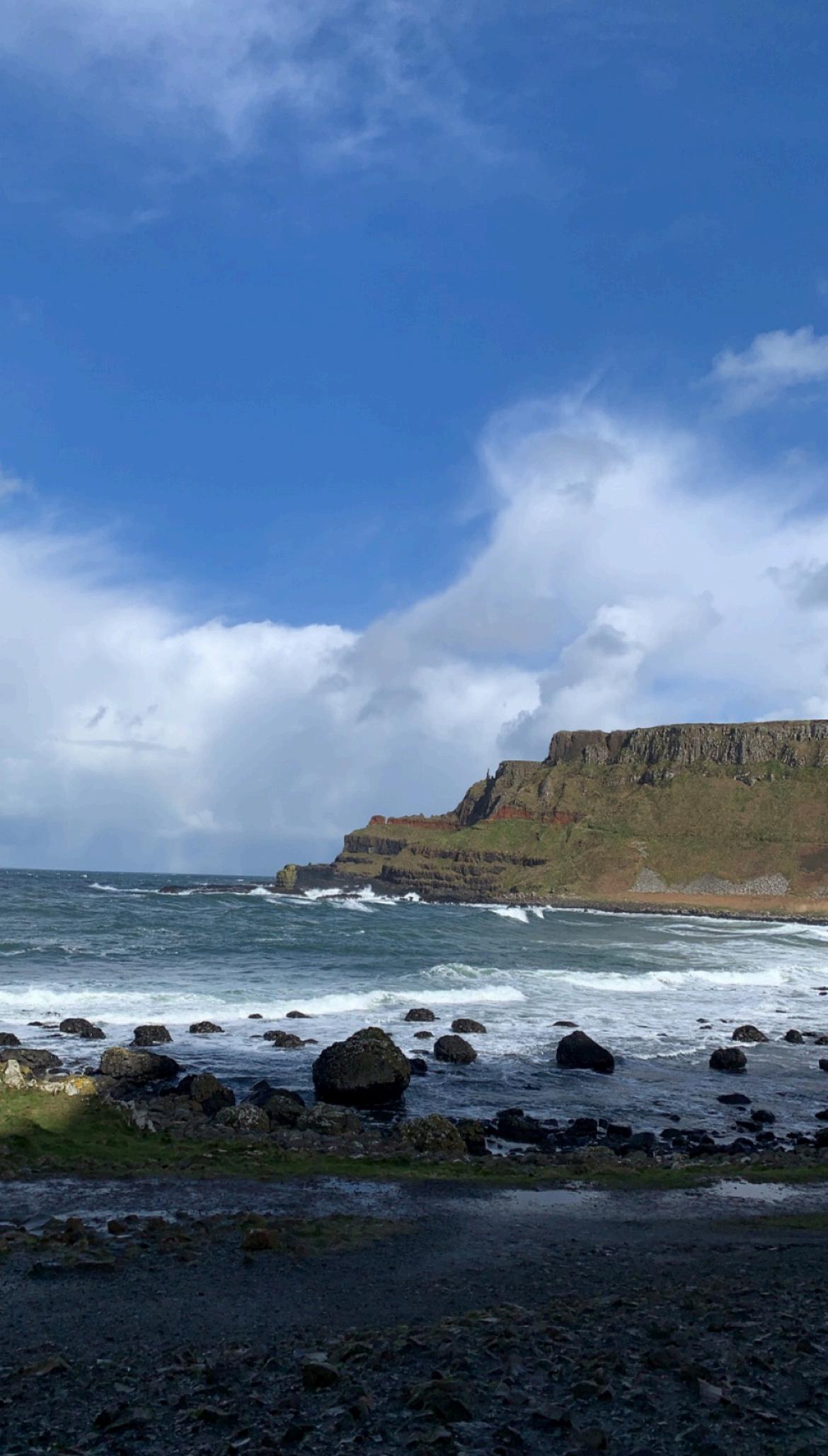



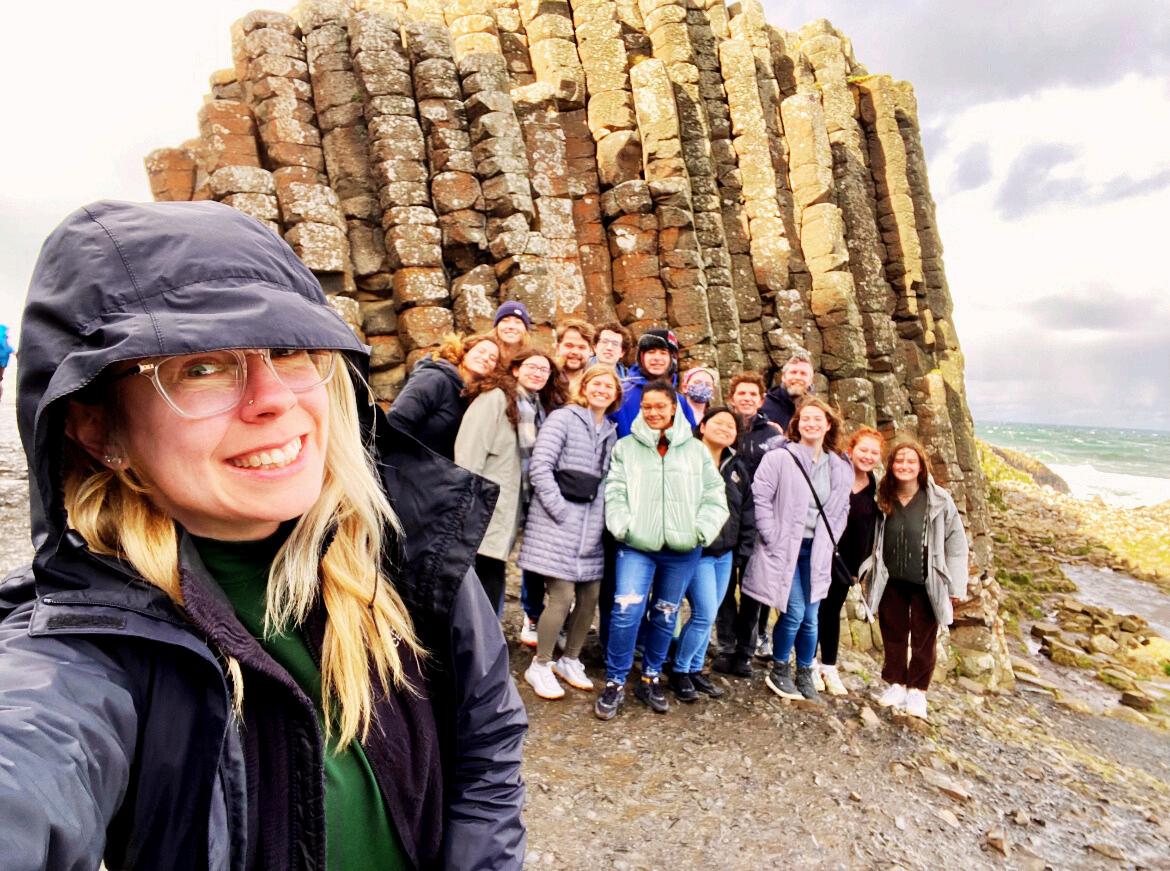
I had a lot of fun traveling to Ireland and Northern Ireland. Getting hands-on experience in the actual place I was learning about was amazing. My favorite part was being in Galway on St. Patrick’s Day and getting to take in the culture. - Annie Cash (right)

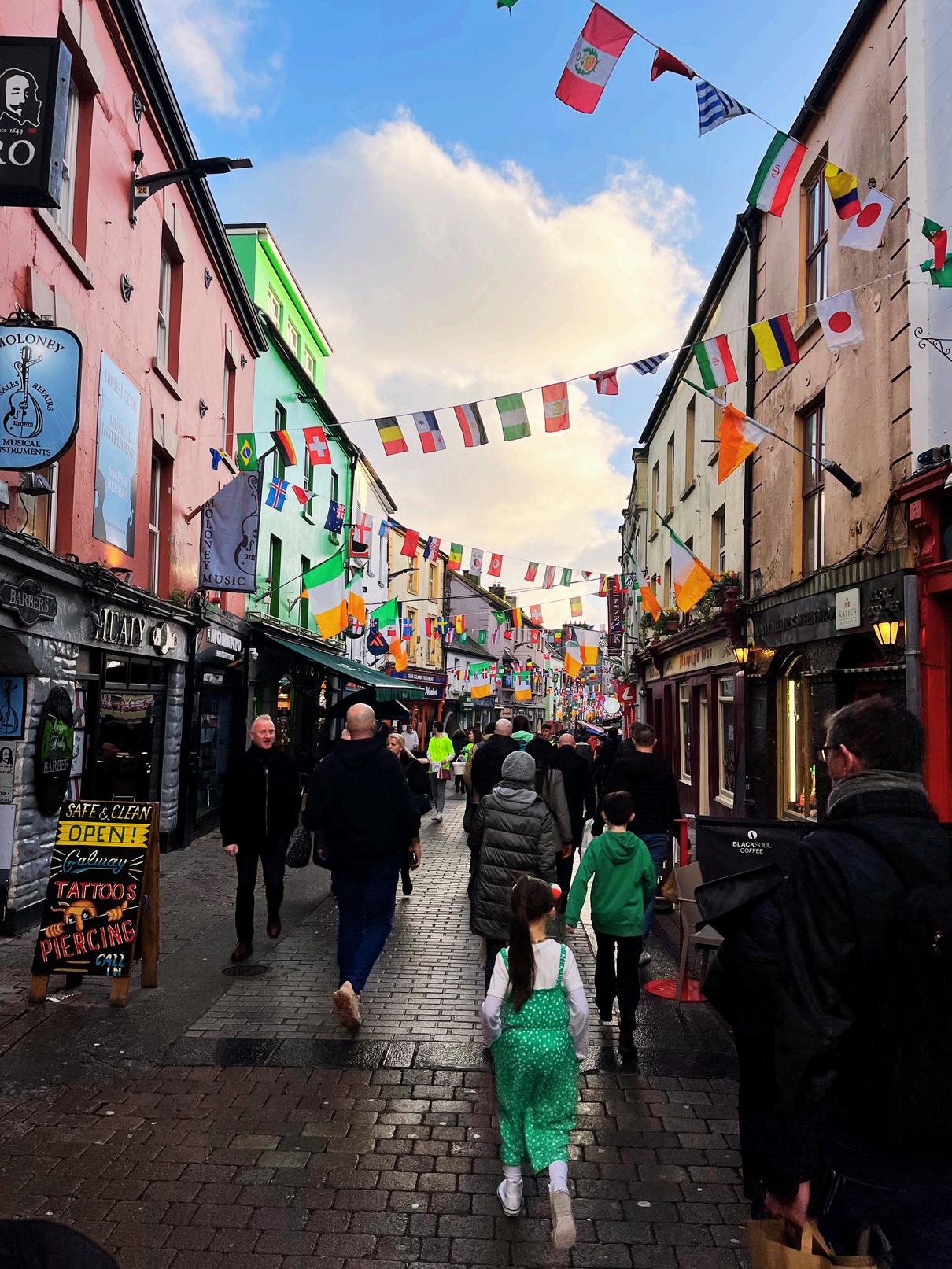
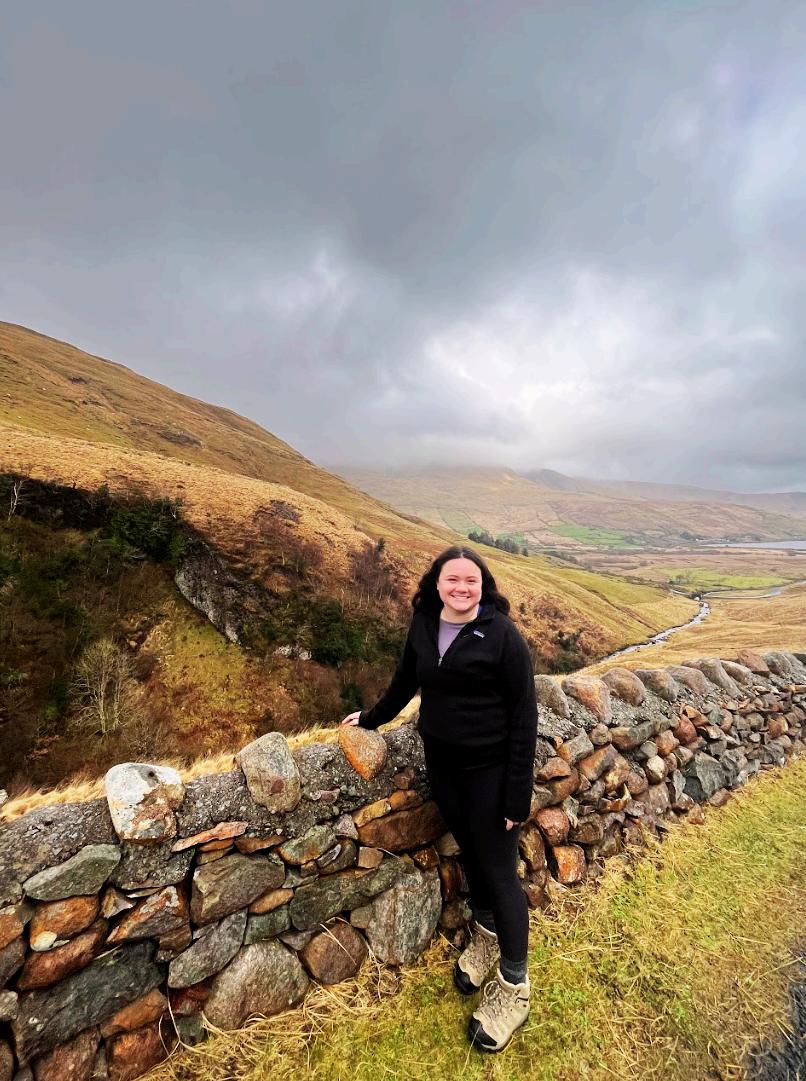
Led by Dr. Muiris MacGiollabhuí, Clinical Assistant Professor and Jess Ramsey, Director of Advising.
Over Spring break of 2023, 20 students and two JMHC faculty/staff traveled to the island of Ireland and spent 10 days exploring the two countries; Northern Ireland and The Republic of Ireland This was the first time this specific study abroad opportunity was offered at Purdue
The group flew into Dublin, and traveled to many different cities. They went to Belfast, Derry City, Galway, Balina, Gortahork, and many others. This course aimed to answer the question: what does it mean to be Irish? Students worked towards answering this question by visiting multiple museums, interviewing Irish citizens, and immersing themselves into Irish culture They were even in Galway on St. Patrick’s Day and attended a parade.
This study abroad was led by Dr. Muiris MacGiollabhuí, who was a visiting clinical assistant professor at the time of the trip, and Jess Ramsey, a PhD student and Director of Advising for the Honors College Dr MacGiollabhuí is originally from Ireland and was able to offer students a deeper look into his homeland. When he was building the course he stated he, “wanted students to get a sense of the long, dry history of Ireland. I wanted them to get a sense of what identity is, was and how it's constructed.”
Identity, being at the center of the course, was a question that the students were asked to consider often Who is left out of Irish identity? What did being Irish once mean in the U.S? Who considers themselves Irish? Ramsey, who had never traveled to Ireland prior to this trip, thought it offered students a chance to “get out of their comfort zone.” Many of the students on this trip have never traveled the country


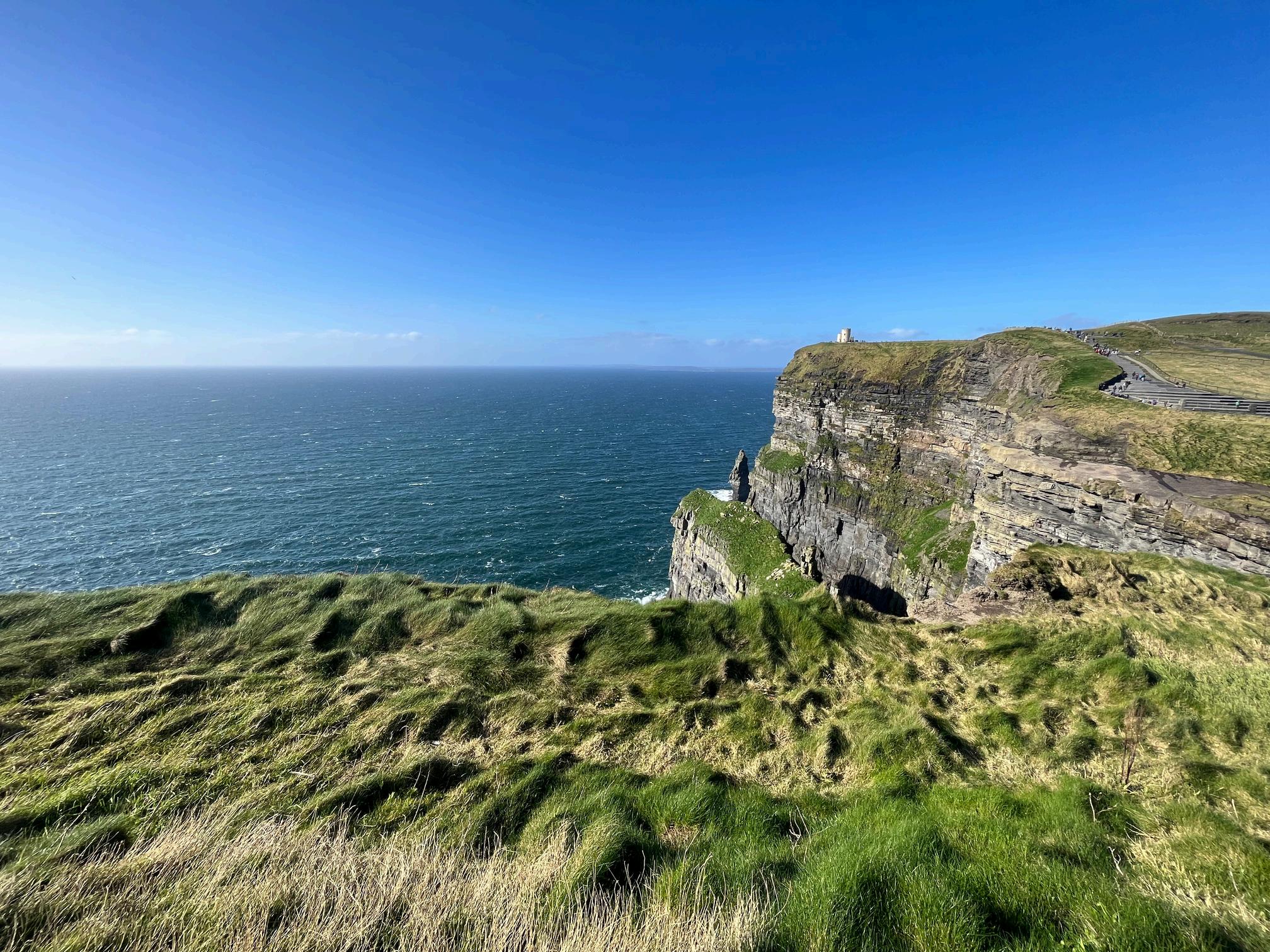


During this trip, students built upon all four pillars of the Honors ollege in various ways. Starting with global and community xperiences, this was hands-on learning Students were able to be in he physical landscape of the places that they were learning about tudents were able to build upon their interdisciplinary studies as this ip wasn’t a part of their majors. Many students who went on this trip re in the STEM fields, but this trip allowed them to broaden their orizons of the world around us.
tudents were asked to interview Irish citizens on St Patrick’s Day and sk them what this day meant to them This was the perfect way they ere able to develop the pillar of undergraduate research. Getting a ands-on, face-to-face experience is something that not every student is able to experience and it was a great opportunity for the students to learn. Leadership development was the pillar that was developed the most organically according to MacGiollabhuí and Ramsey.
Students naturally took charge and helped one another when navigating a foreign country. Students helped one another out with directions and finding places to eat. This experience is something that can’t always be developed when staying in the normal environment of study. Students who go on this study abroad can expect to not only get out of their comfort zone, but redefine it all together

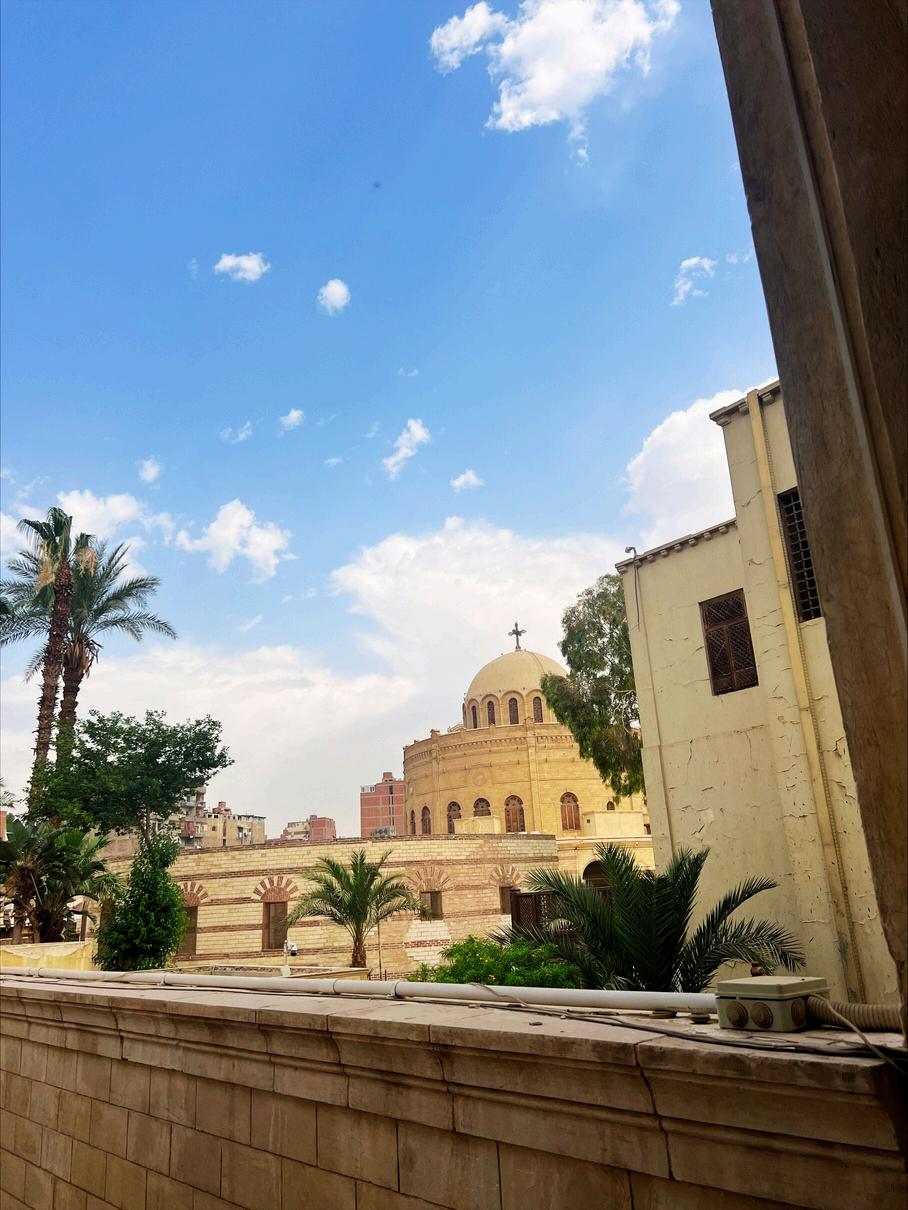

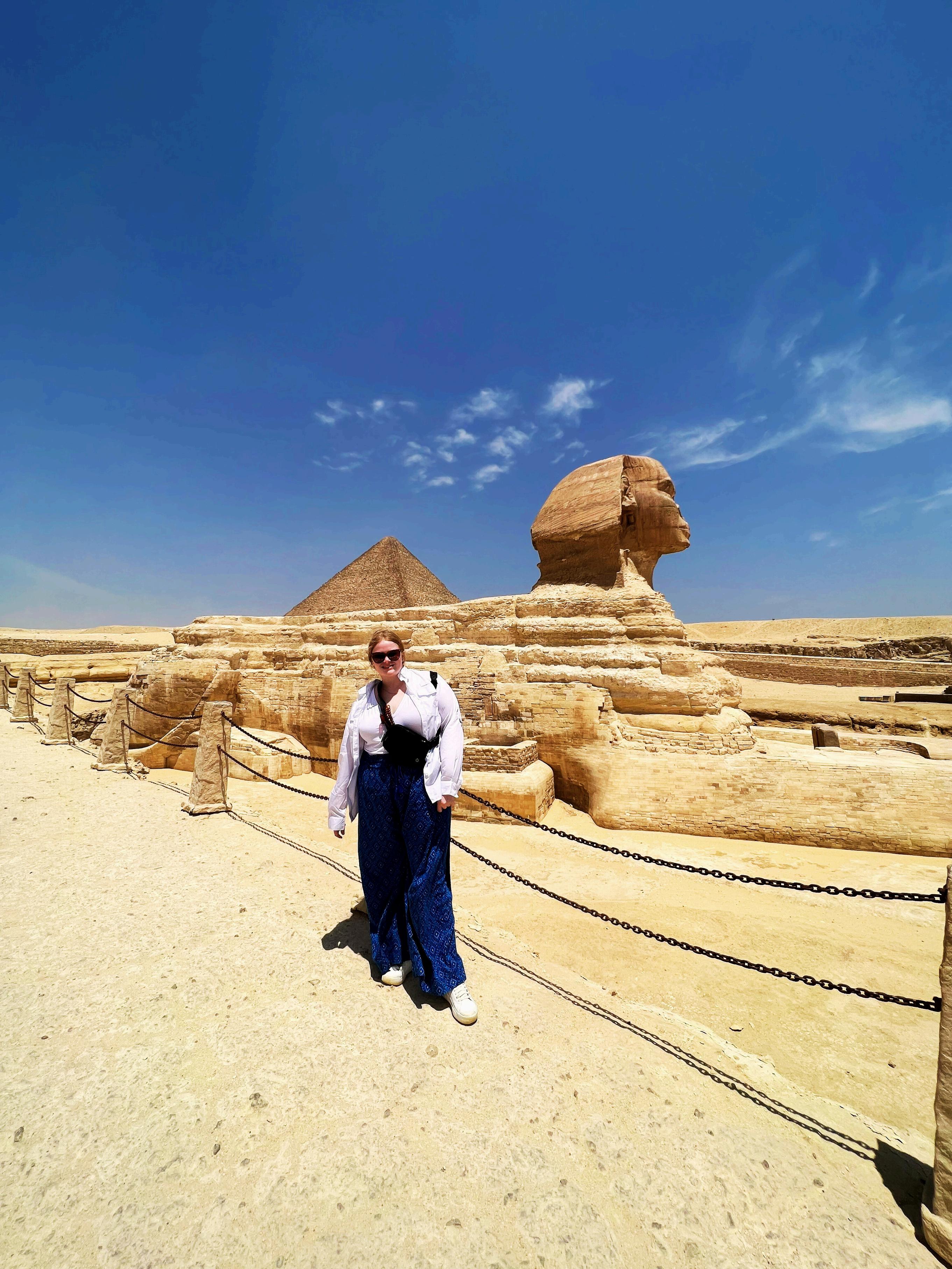

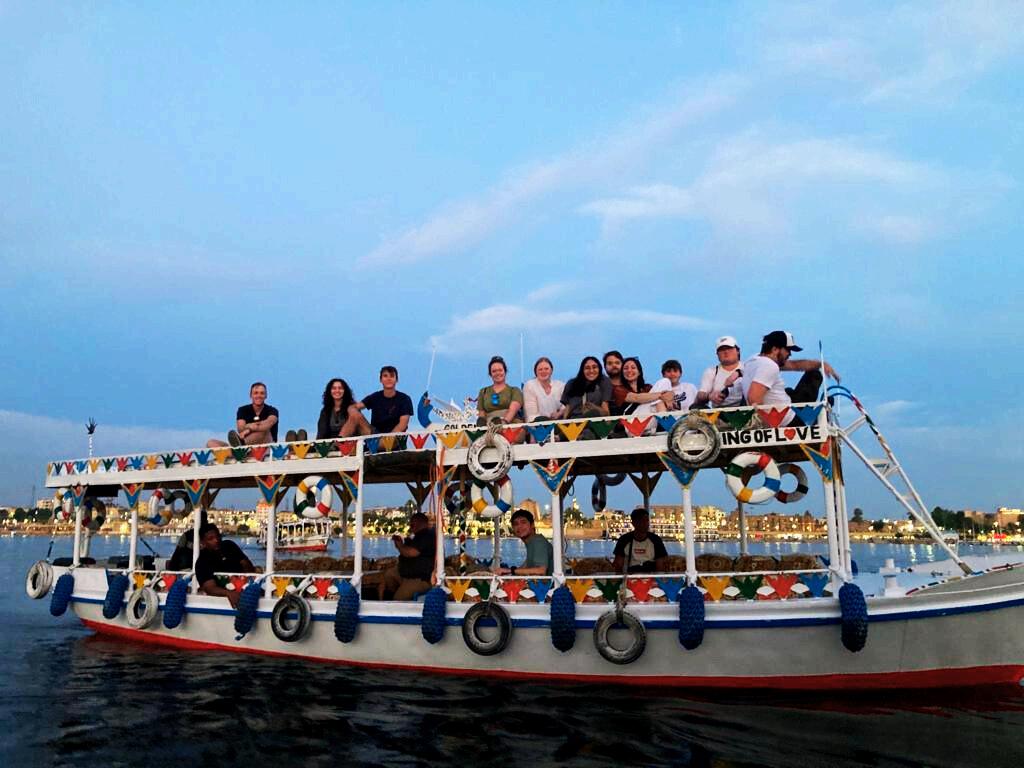
Traveling to Egypt gave me the experience to immerse myself in the culture and history of the country. In Egypt, we focused on many different interdisciplinary topics ranging from culinary studies to the economy of the country. - Laura Green (left)
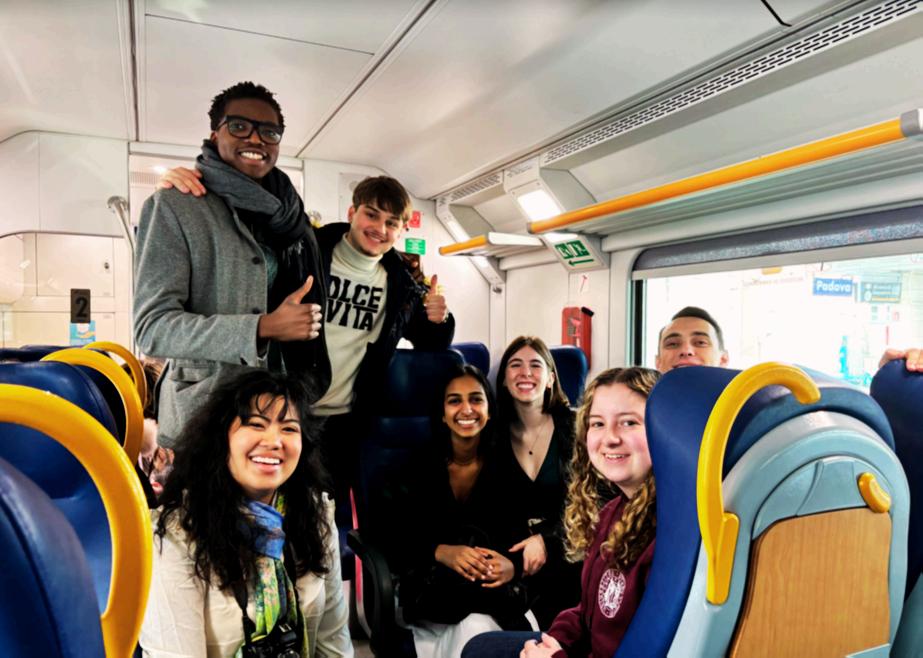
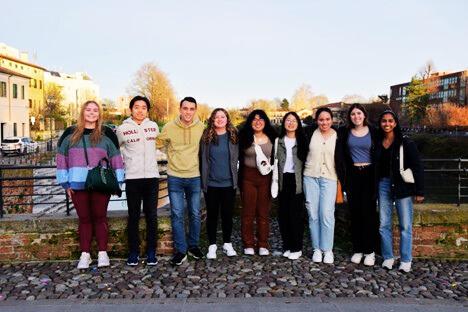
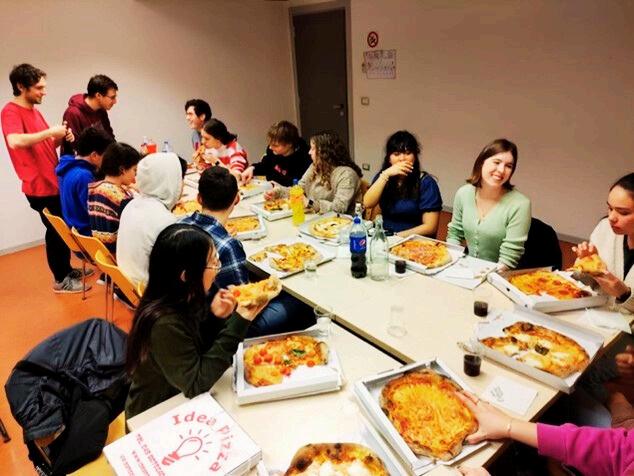
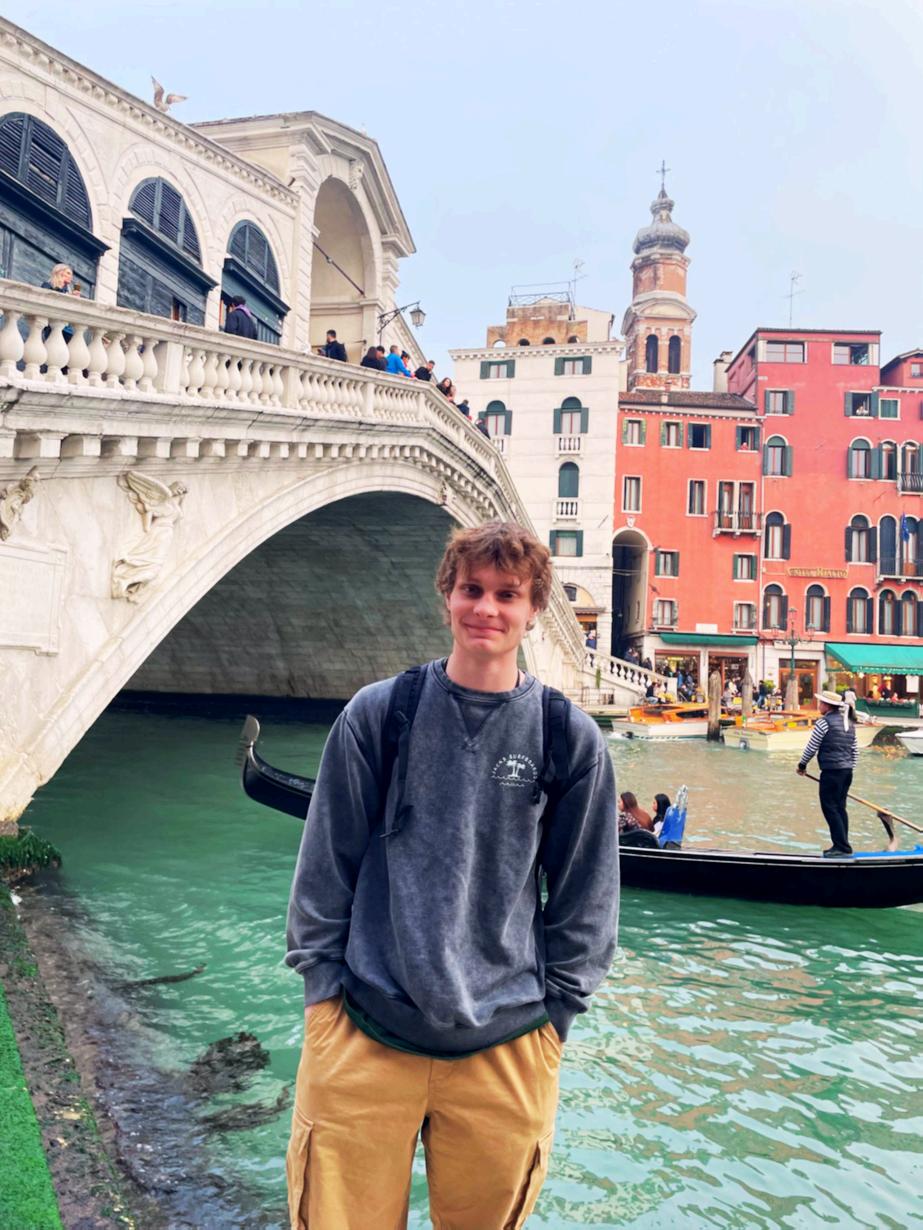
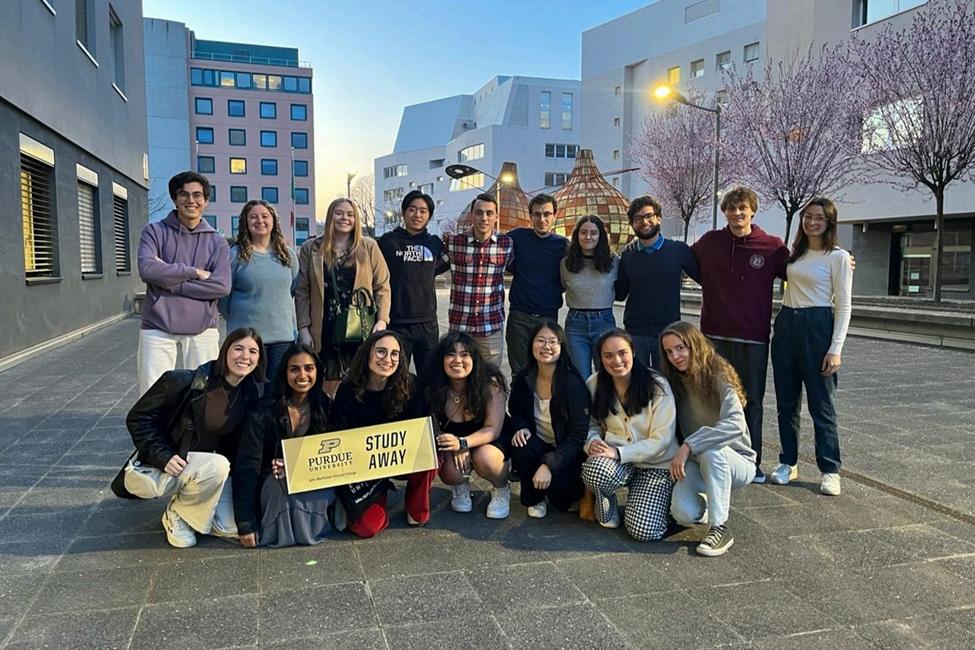


Going abroad to Colombia was a lot of fun. Not only were we exploring and learning about food culture within the country, we also made such great connections with other students there as well! My favorite part was exploring the city of Cartagena!
-Elijah Ahrens (right)
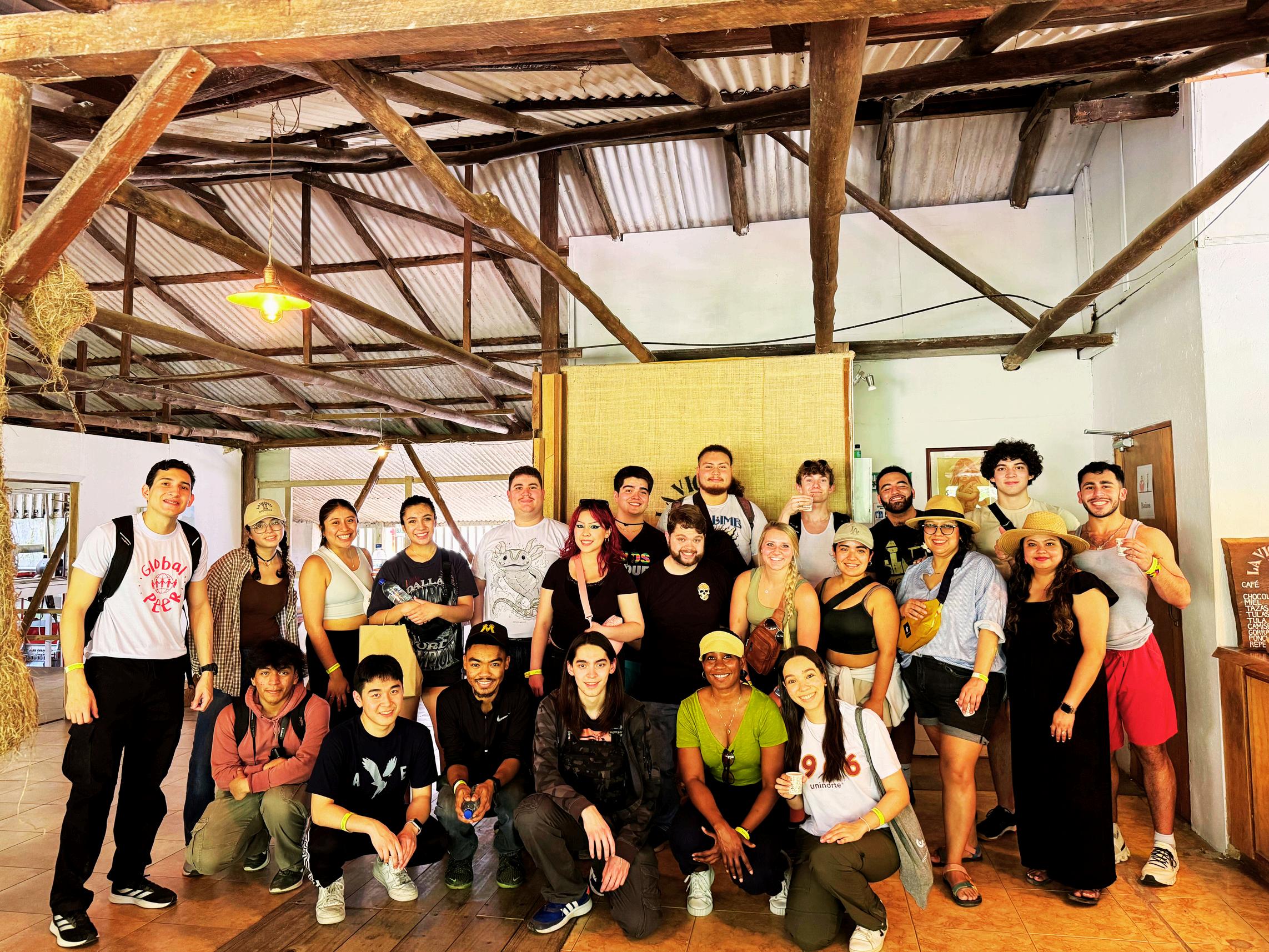

Led by Dr. Natasha Duncan, Associate Dean of Academic and International Affairs and Clinical Associate Professor, JMHC, and Carina Olaru, Director of the Latino Cultural Center (LCC).
This trip was co-sponsored by JMHC and LCC
On March 9, 2024, 19 students departed West Lafayette on a transformative, one-week study-away trip to Colombia. The group comprised a diverse mix of majors, ranging from history to chemical engineering and psychology. Their travel experiences varied significantly: some had never left the United States, while others were seasoned travelers with journeys to places like Haiti and the Dominican Republic. Their diversity was the source of the richness of the group and fed into the main learning objectives of the course. Despite their varied backgrounds, the students shared a common thread unfamiliarity with Colombia and a keen desire to challenge the media-fueled stereotypes associated with the country
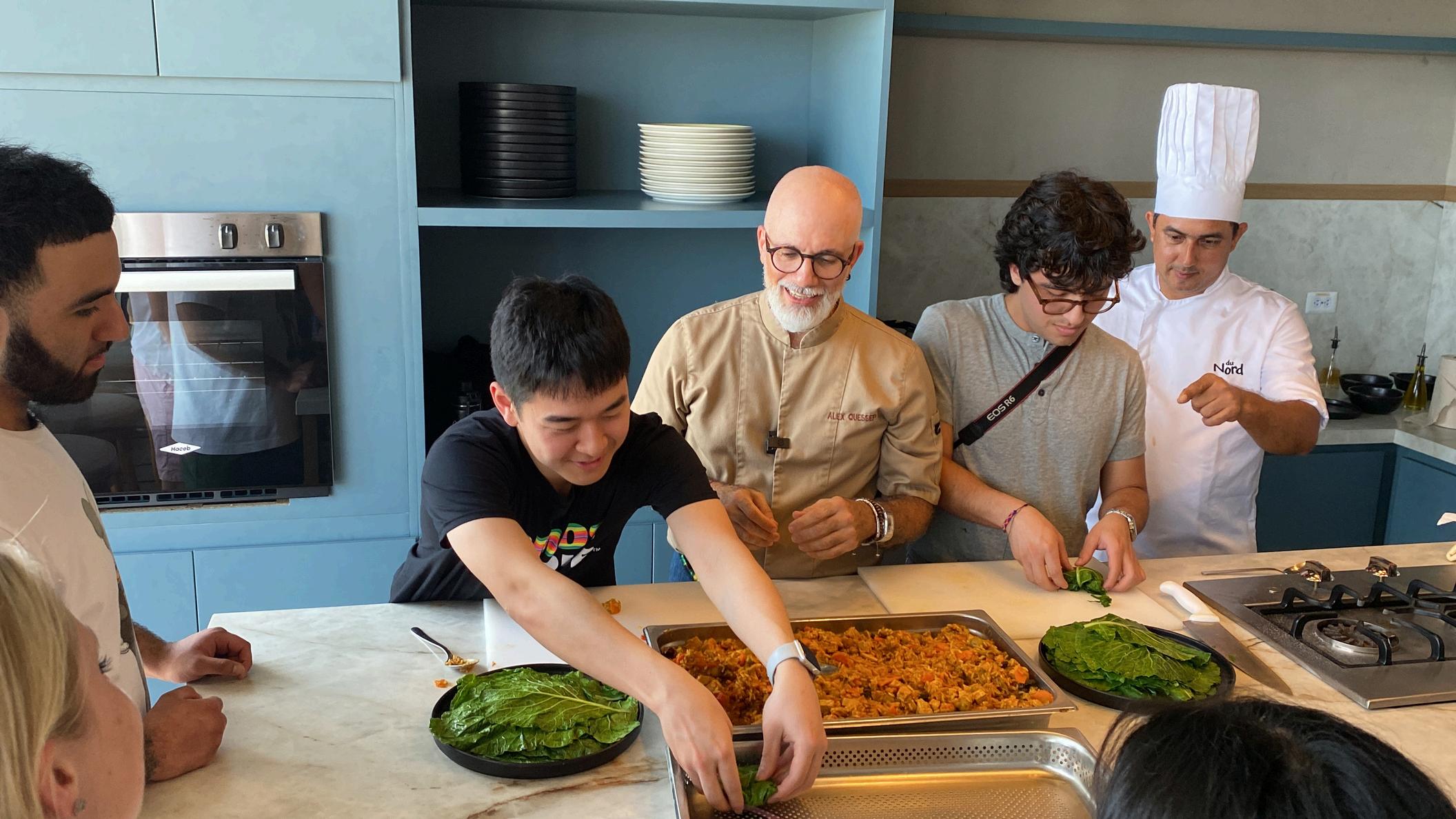
Food Sustainability and Culture in Colombia was an experiential learning course that challenged students to think critically in two key areas: food in the Colombian context and food sustainability in a multi-disciplinary context. By engaging thoughtfully in these two areas, students compared cultural norms between the US and Colombia Additionally, they applied their different disciplinary perspectives to analyze approaches to sustainability of food systems within both the Colombian and West Lafayette local context.
The students’ exploration took place in Barranquilla, located in the Atlántico department in the north of Colombia In Barranquilla, the confluence of cultures from the different migratory waves, forced and voluntary, is palpable. Strands of African, Middle Eastern (Lebanese) cultural foods are interwoven with indigenous and European flavors, festivals, and practices. Through sites visited, presentations, and the preparation and tasting of traditional foods, students examined if and how these food systems endure generation to generation in the face of technological advances, international influences, and public policy choices.
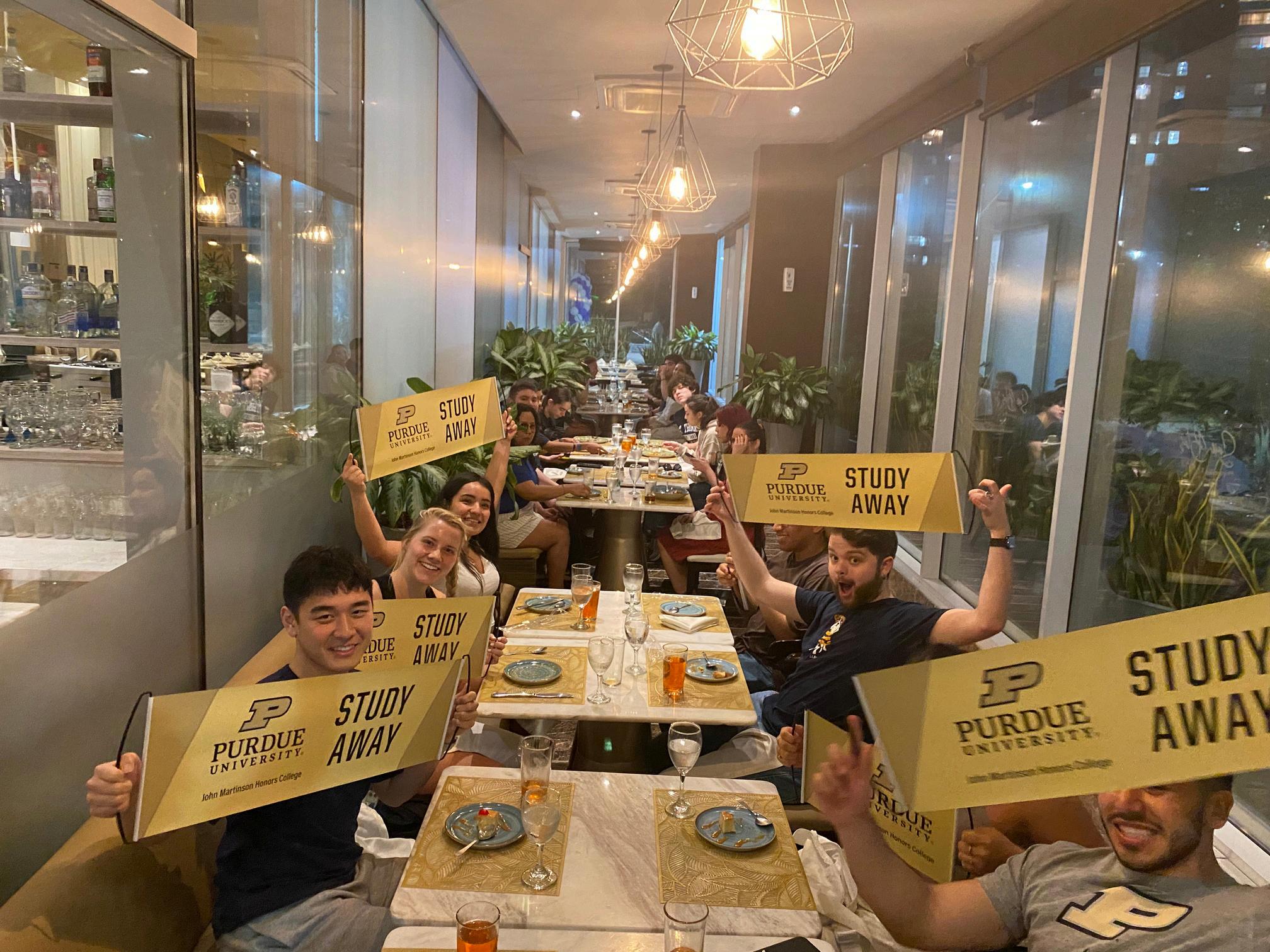
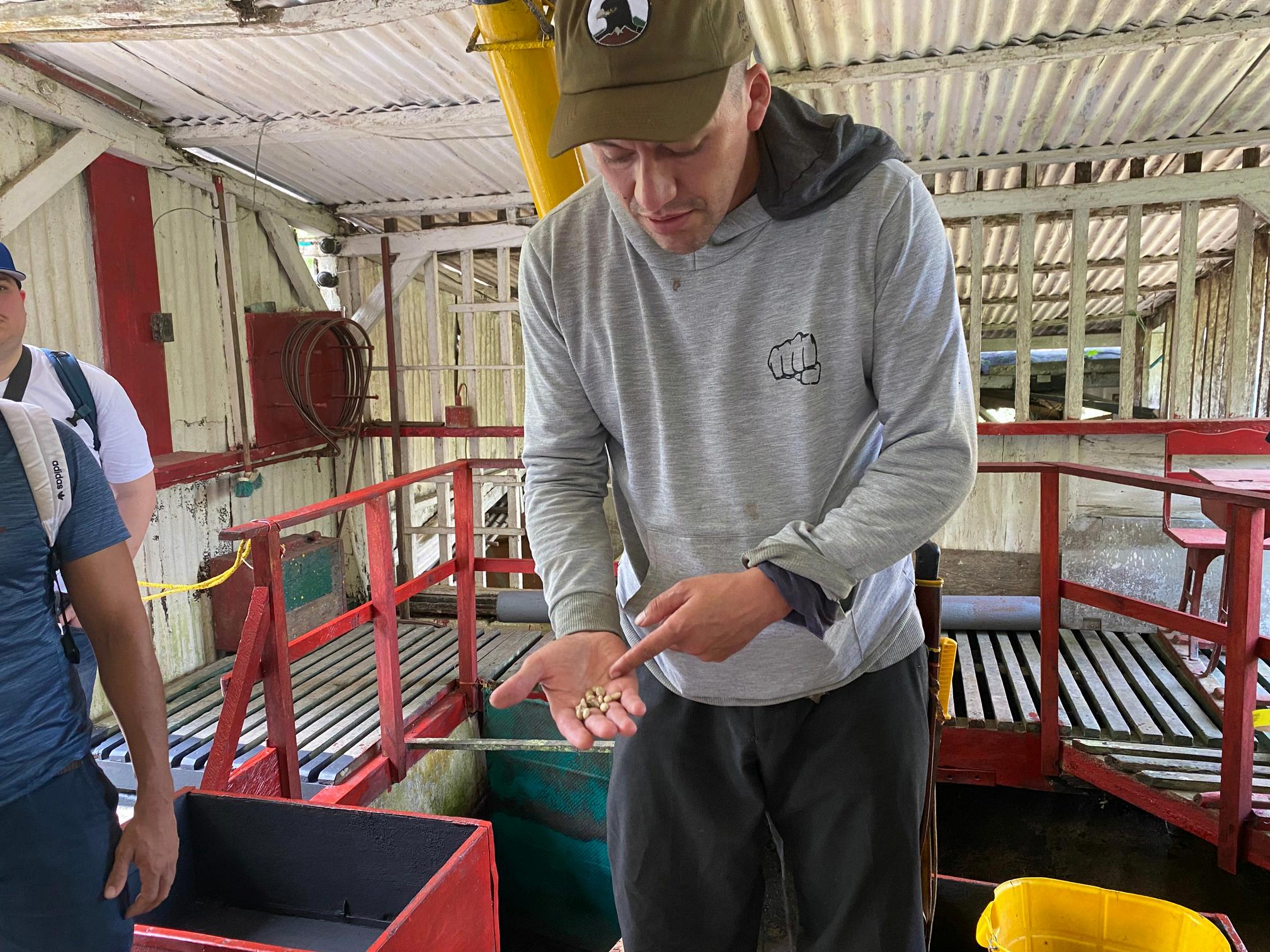
Colombia, manifesting in different forms. At La Victoria, a coffee farm in Santa Marta, the skins of the coffee cherry and worm excrement are used to make fertilizer. At La Parisienne, the founders’ children continue their parents’ traditions of meat curing at a plant that started as a small butcher shop several decades ago Sabor Barranquilla’s aims to promote local foods indigenous to the area, preserving culture through inter-generational activities. In La Piangua on the Pacific coast, clam harvesting presents sustainability challenges related to over-harvesting, impacting the communities reliant on this industry. In Antioquia, an initiative is underway to preserve traditional dishes and food practices by creating a market for local cuisines through tourism. According to Professor Beatriz, tourists can aid in the endurance of food or cultural heritage through documenting foods via photos, adopting dishes encountered, and purchasing local foods when traveling.
Our time in Colombia was not solely focused on serious discussions about food sustainability; it was also filled with the joy of hands-on cultural experiences. We danced champeta and mapalé. We made pastel de arroz with Chef Alex Quessep and arepas with Chef KC Schmitz We savored the unique flavors of viche and fritos prepared by a matrona.
Although the class lasted one week, it was filled with rich experiences that will transform how we think about food sustainability in both the Colombian context and in West Lafayette We thank our partner, UniNorte, for curating such an enriching experience
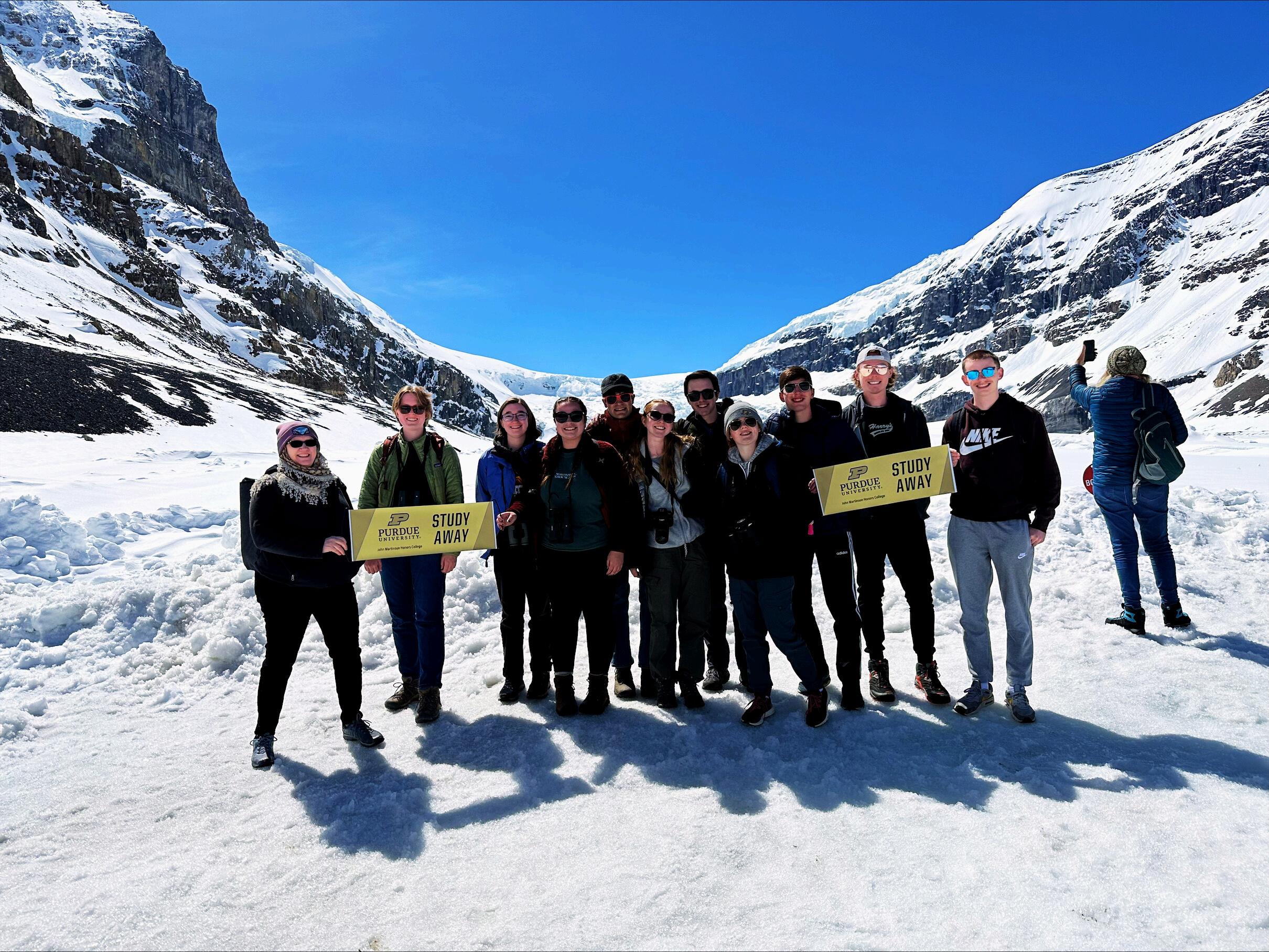
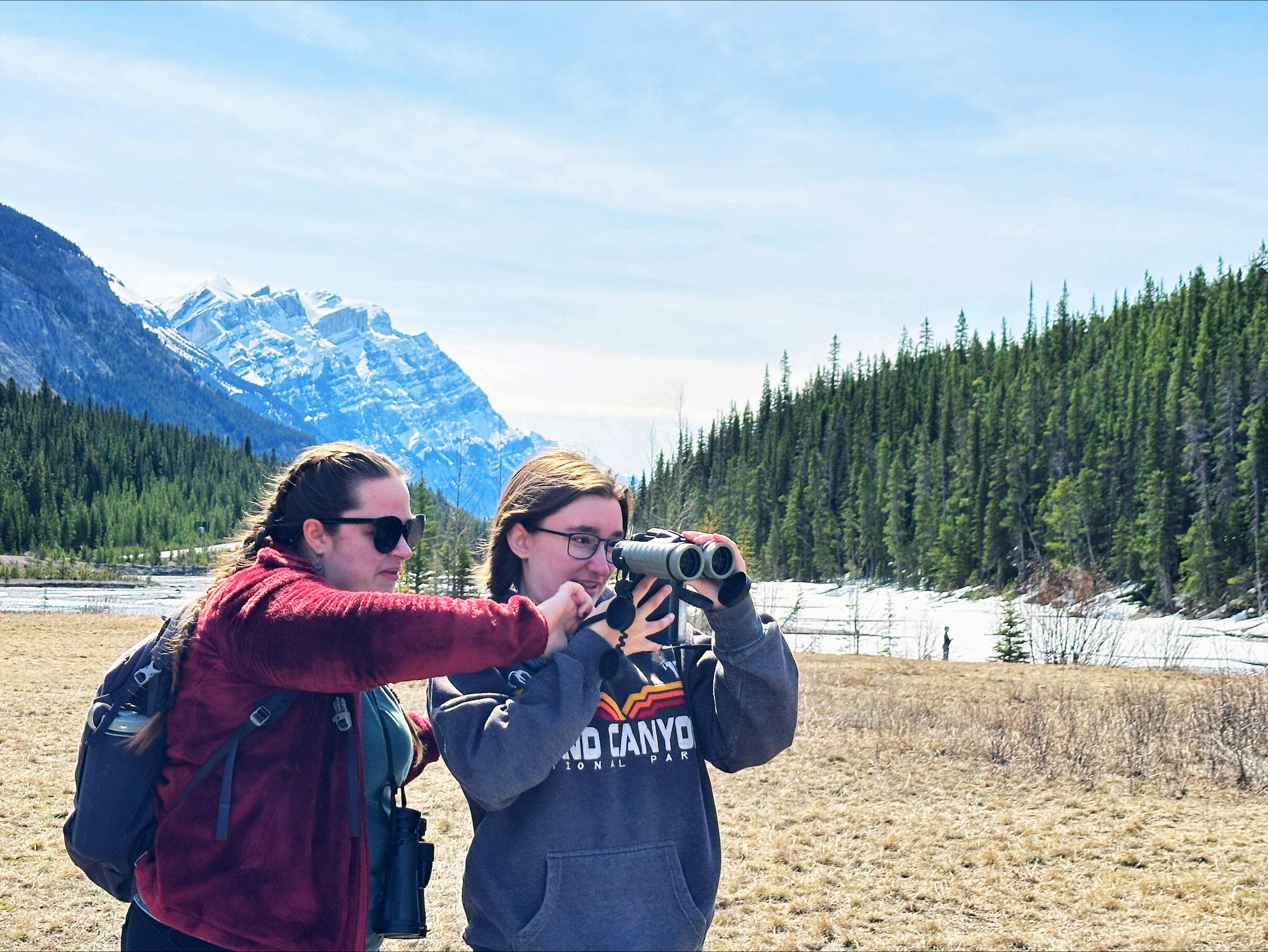

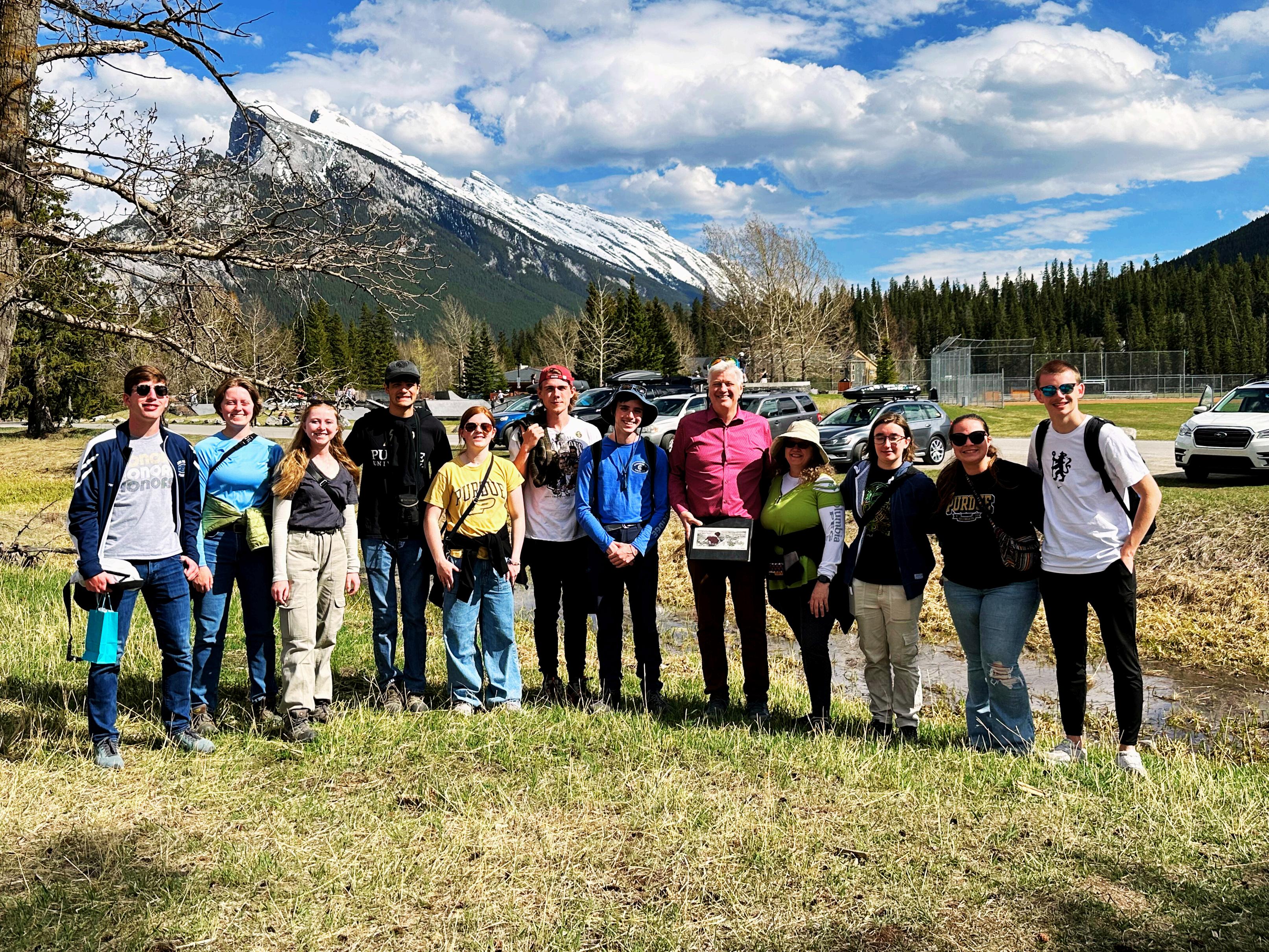
Canada Study Away group had the privilege of spending an afternoon with the spectacular Harvey Locke, founder of the Yukon to Yosemite Corridor Initiative, and former chair of the IUCN World Commission on Protected Areas —- and co-author of The Last of the Buffalo - Return to the Wild. Truly an absolutely brilliant and amazing time sharing, learning, and experiencing his passion behind these important efforts!
- Dr. Kristen Bellisario, faculty leader

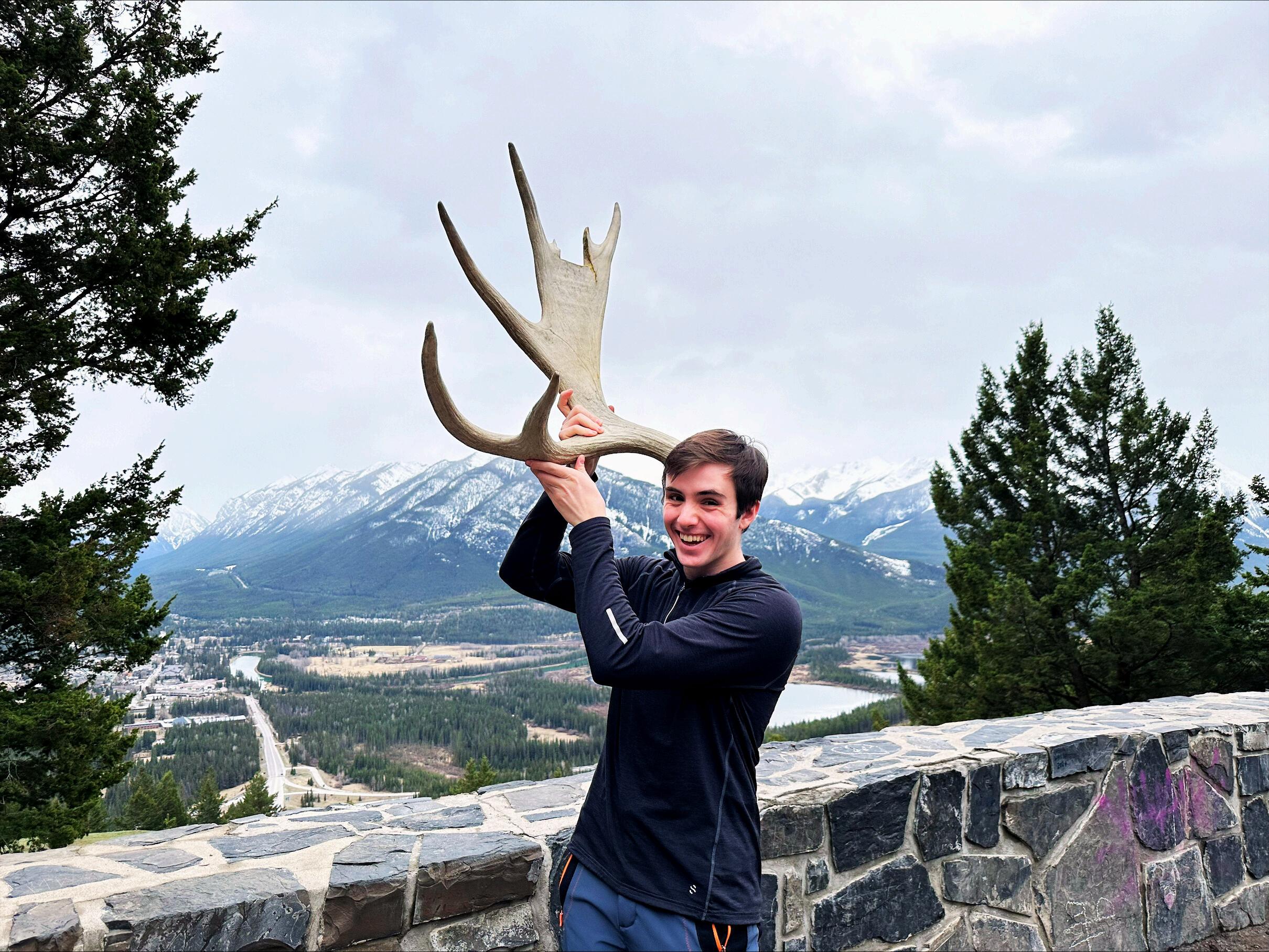
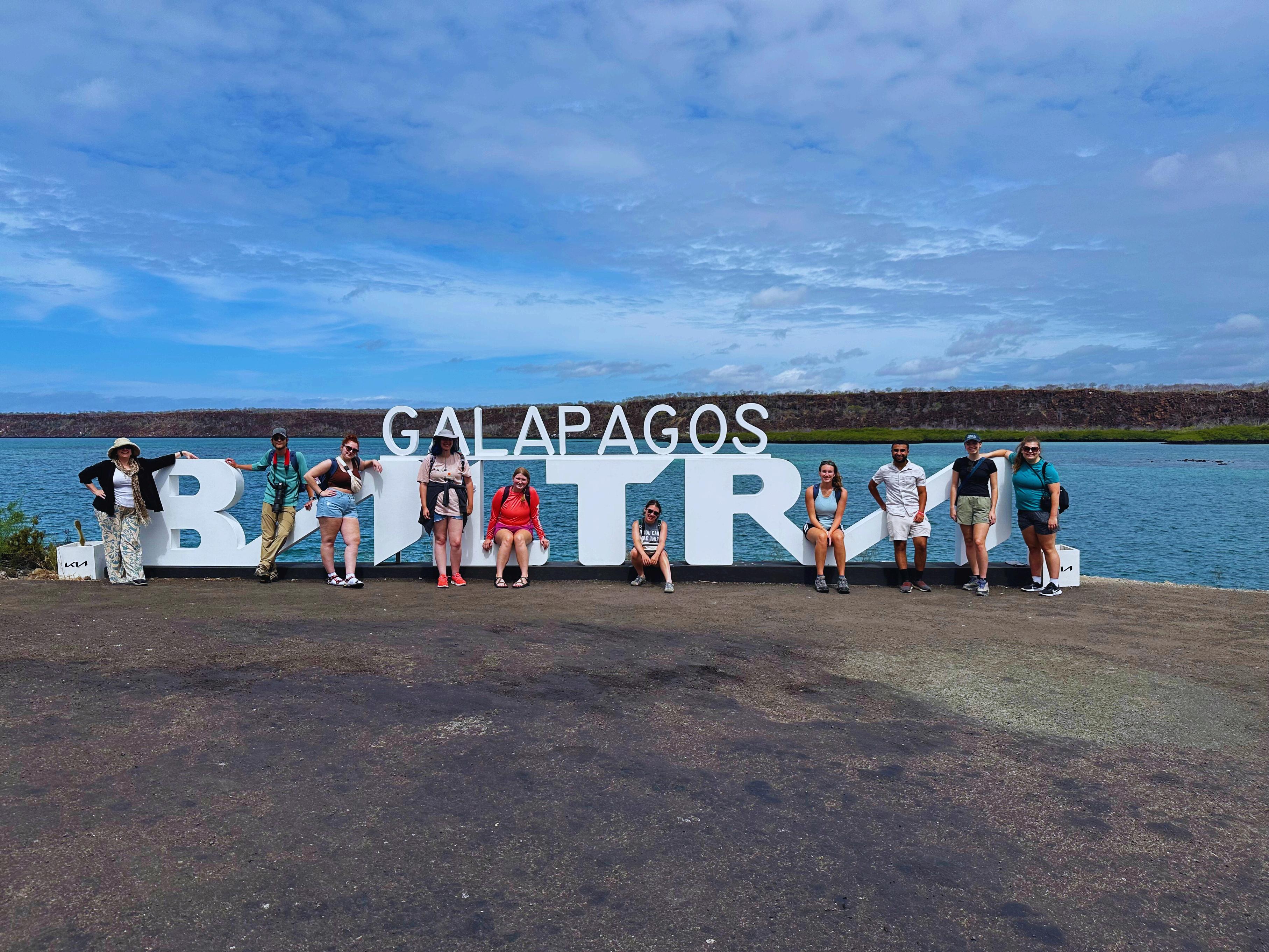

The John Martinson Honors College Study Away experience has allowed me to gain a deep understanding of cultures other than my own. While in Quito, Ecuador and the Galapagos Islands I had the incredible opportunity to get exposure to Latin American culture, all while learning about a topic I would otherwise no very little about - nature and wildlife. I am grateful for the opportunity to have been able to explore and deepen my understanding of the world through the John Martinson Honors College.
-Omar K Abdel-Reheem (right)
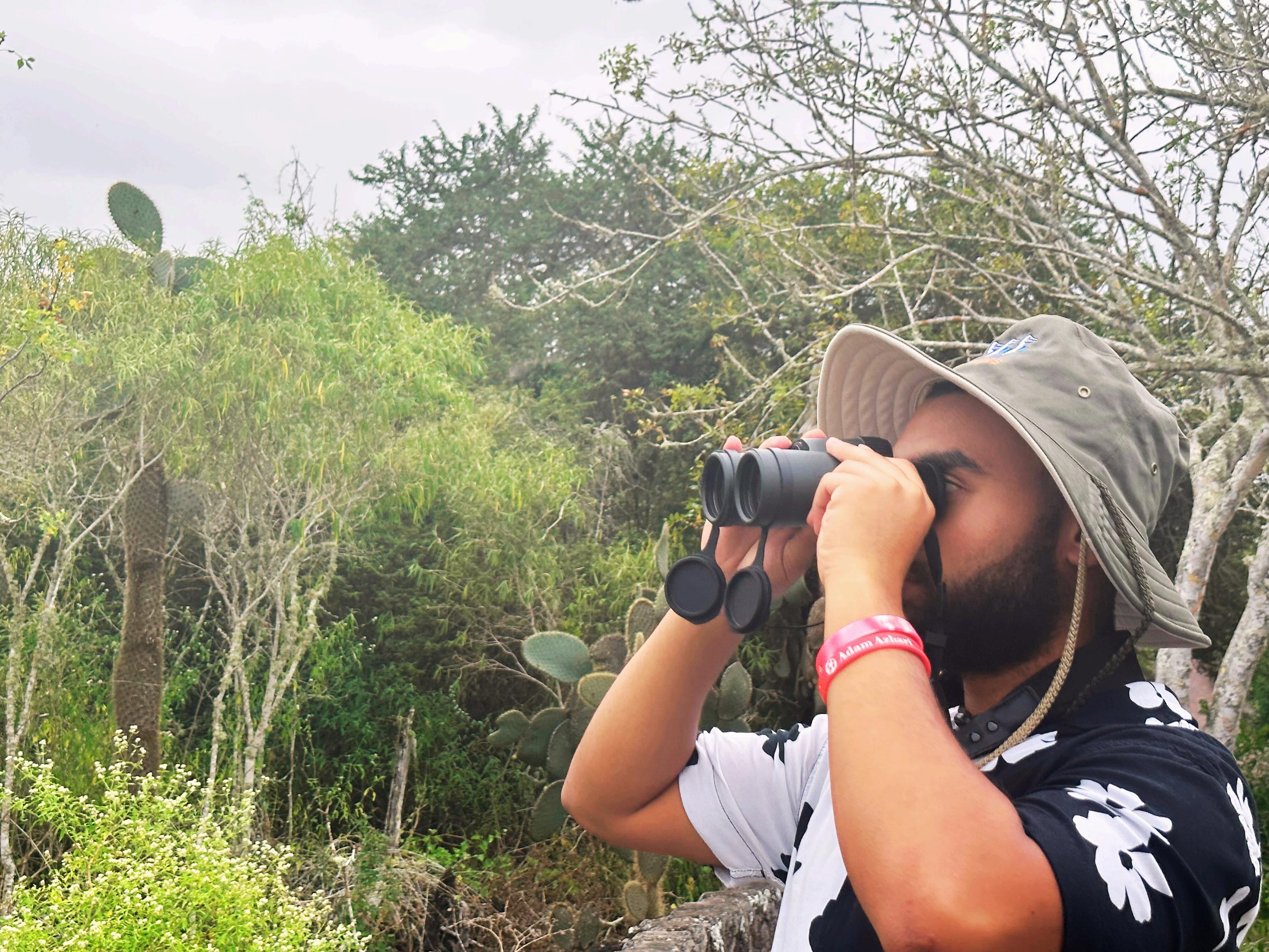
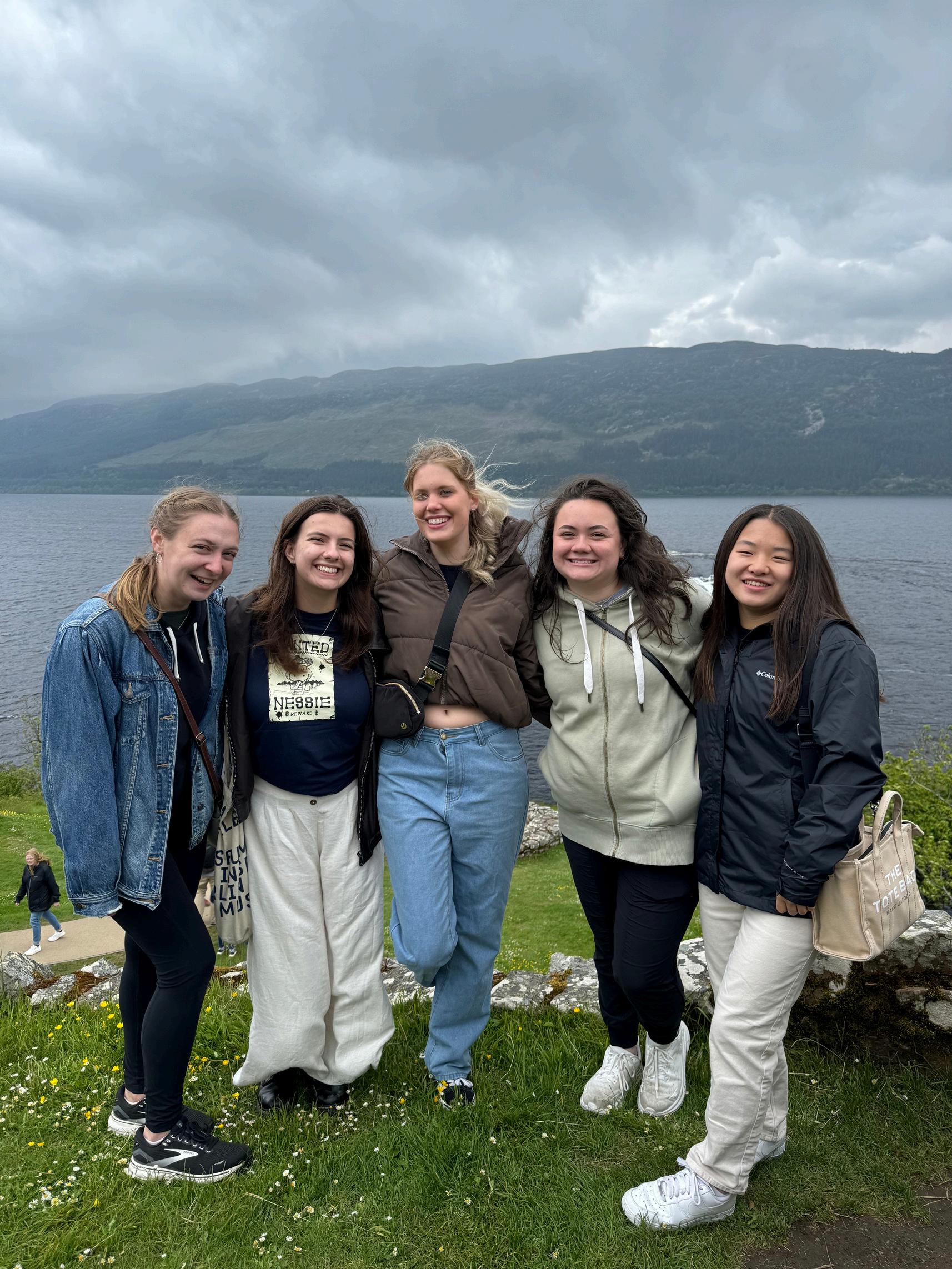


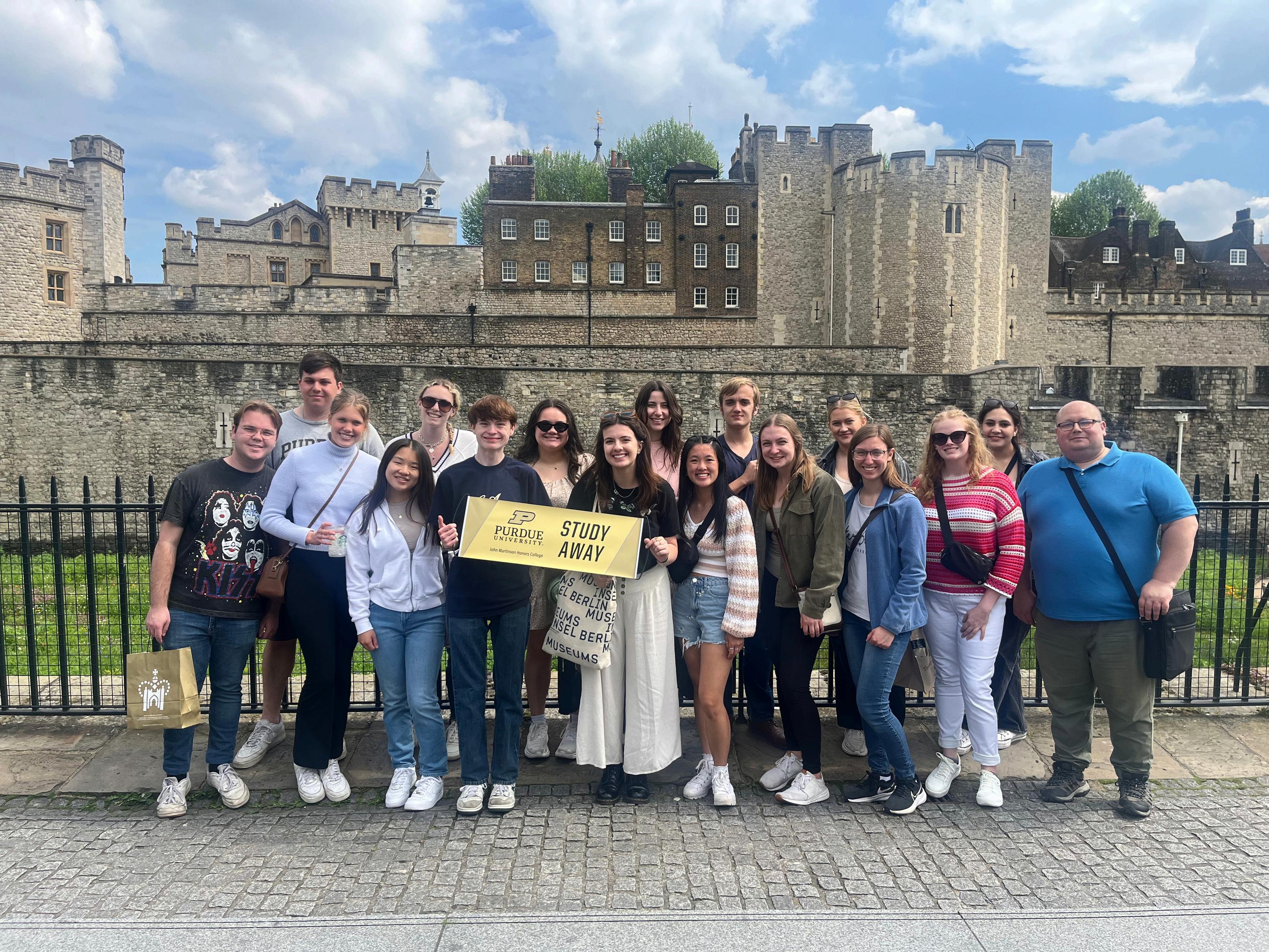
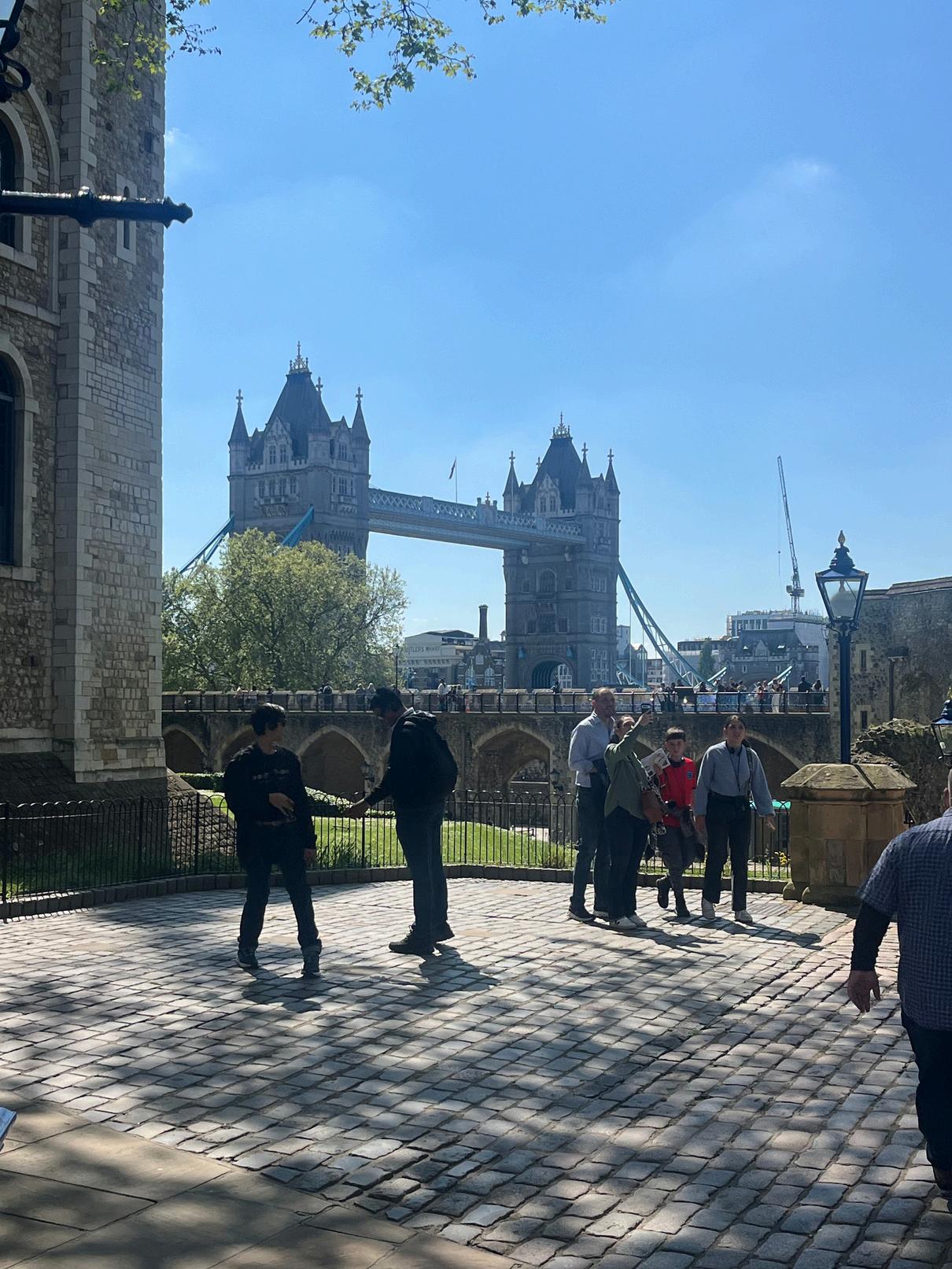
I absolutely loved traveling throughout the United Kingdom, especially because I was able to learn about the different identities between the nations in a very personal and interactive way. My favorite part of the trip was visiting Loch Ness in Scotland and looking out for Nessie!
- Anna Wrobel (right)
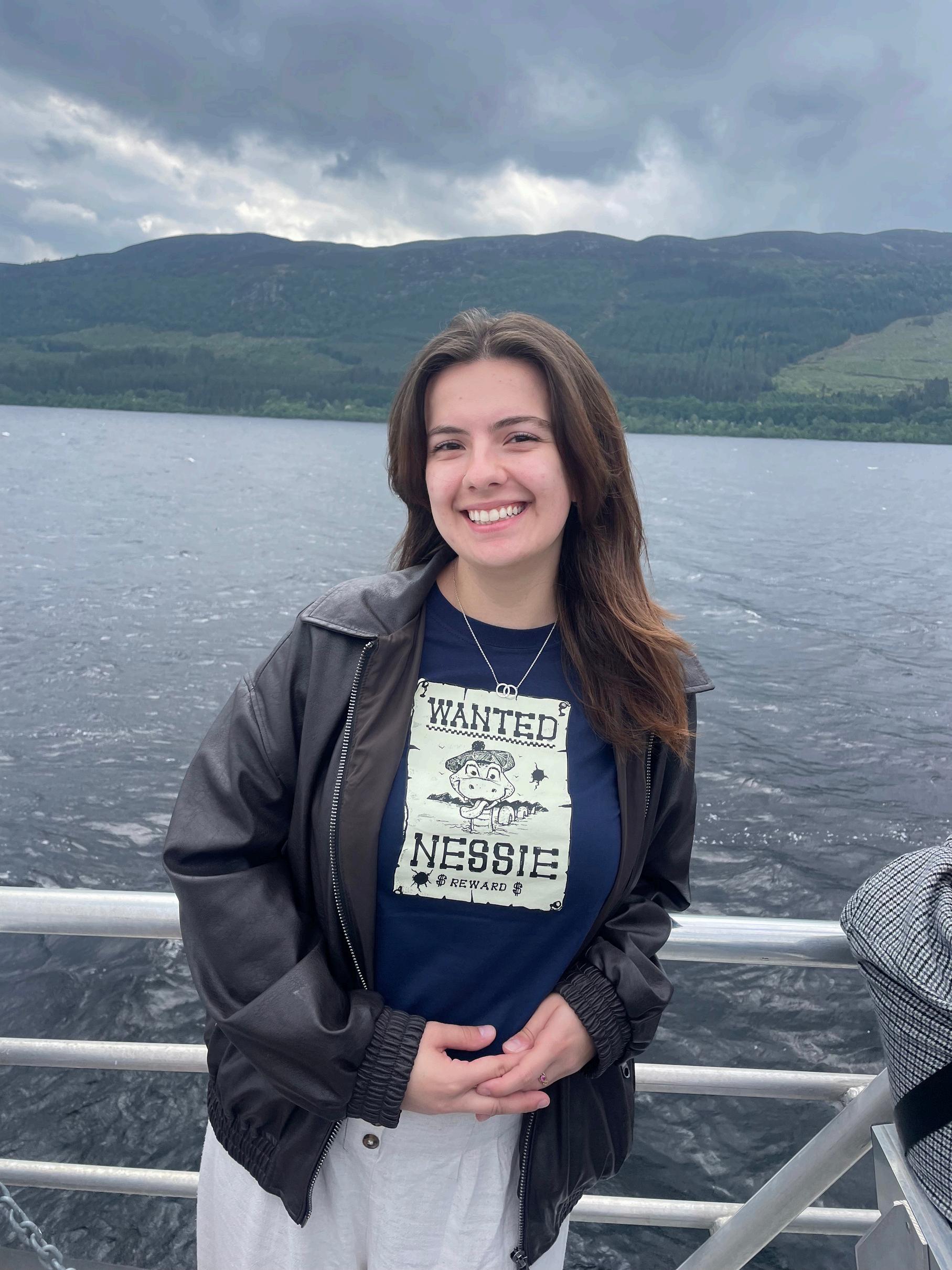
Led by Dr. Nathan Swanson, Clinical Assistant Professor and Director of Study Away.
In May 2024, 16 John Martinson Honors Students along with Dr. Nathan Swanson traveled throughout the United Kingdom researching and learning about how British identity has changed post-Brexit This trip took place in England, Wales, and Scotland The participants traveled to London and Manchester in England. Then, they voyaged to Wales and visited the cities of Cardiff and Wrexham. Their last week was spent in Scotland where they visited Edinburgh, Inverness, Glasgow, and Kingussie.
In each city, students participated in different activities to better understand and learn about the culture and identity of each nation. Students utilized the knowledge they learned during lectures, tours, museum visits, and speaking with UK citizens to understand the different opinions on Brexit and why it is such a hot topic. In England, the JMHC students were given a tour outside Westminister Abbey, home of the British Parliament, and the living quarters of the Members of Parliament During this tour, students were taught how the government system in the UK works and the process of electing members of parliament. Along with this tour, students got to visit Buckingham Palace where the head of state, King Charles III, lives and serves some of his royal responsibilities Along with learning about the British Government, students got a taste of British culture through touring Old Trafford, the stadium home to Manchester United Football Club. Football, or soccer, is a major part of the culture in the UK. Almost all UK citizens have a club they support. Some would argue the British football/soccer culture is more intense than the American football culture.


While in Wales, the JMHC students toured the inside of the Welsh Parliament in Cardiff, Wales. During this tour, students got to see the debate chambers where Parliament sessions occur. The students were taught about how Wales as a nation is trying to become more independent from England and the government at Westminster Abby.

Within the Welsh Parliament, there is a group of elected officials who run under the Welsh Nationalist Party. This party's main goal is to separate from the UK and form their own independent country. The Welsh government is also trying to bring back some of the Welsh culture. A bill recently passed in the Welsh Parliament that requires students in public schools to learn the Welsh language, a language that almost died out due to English suppression

In Scotland, the John Martinson Honors College students got a tour of the Scottish Parliament. Outside of the Scottish Parliament building, the Scottish and Union Jack flags were raised along with the European Union flag. This got students on the trip wondering about the Scottish Nationalist party which wants to see Scotland as an independent country from England As a nation, Scotland wants to be in the European Union. This hot topic is one of the many things students learned about during their journey across the pond. Students got to see first-hand why the UK is so politically divided.
Throughout the entirety of this trip, students were asked to pick up on trends they see in who identifies as British and who is left out of that conversation Many students found the idea of British identity to be a fluid definition that changed from person to person. This trip is a great experience for any JMHC student looking to travel abroad and better understand international relations.
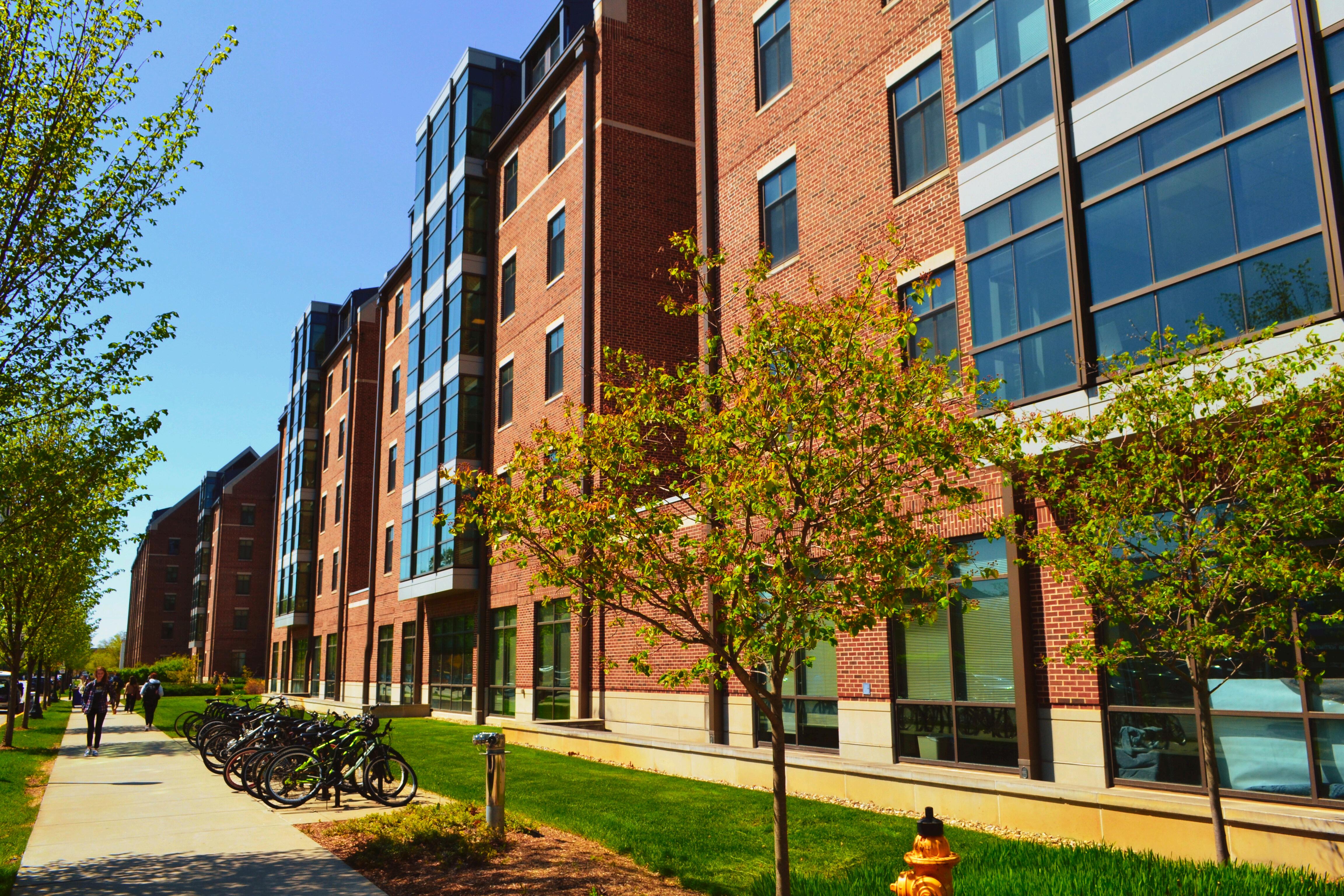
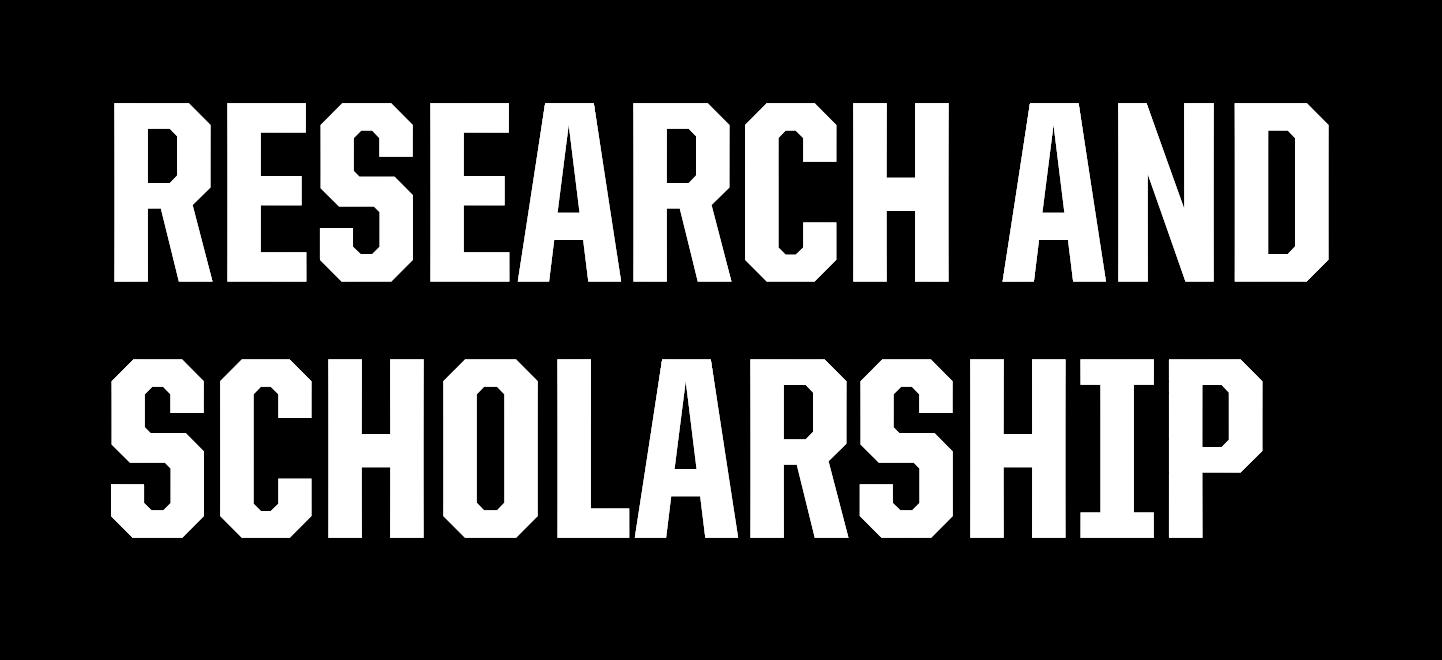
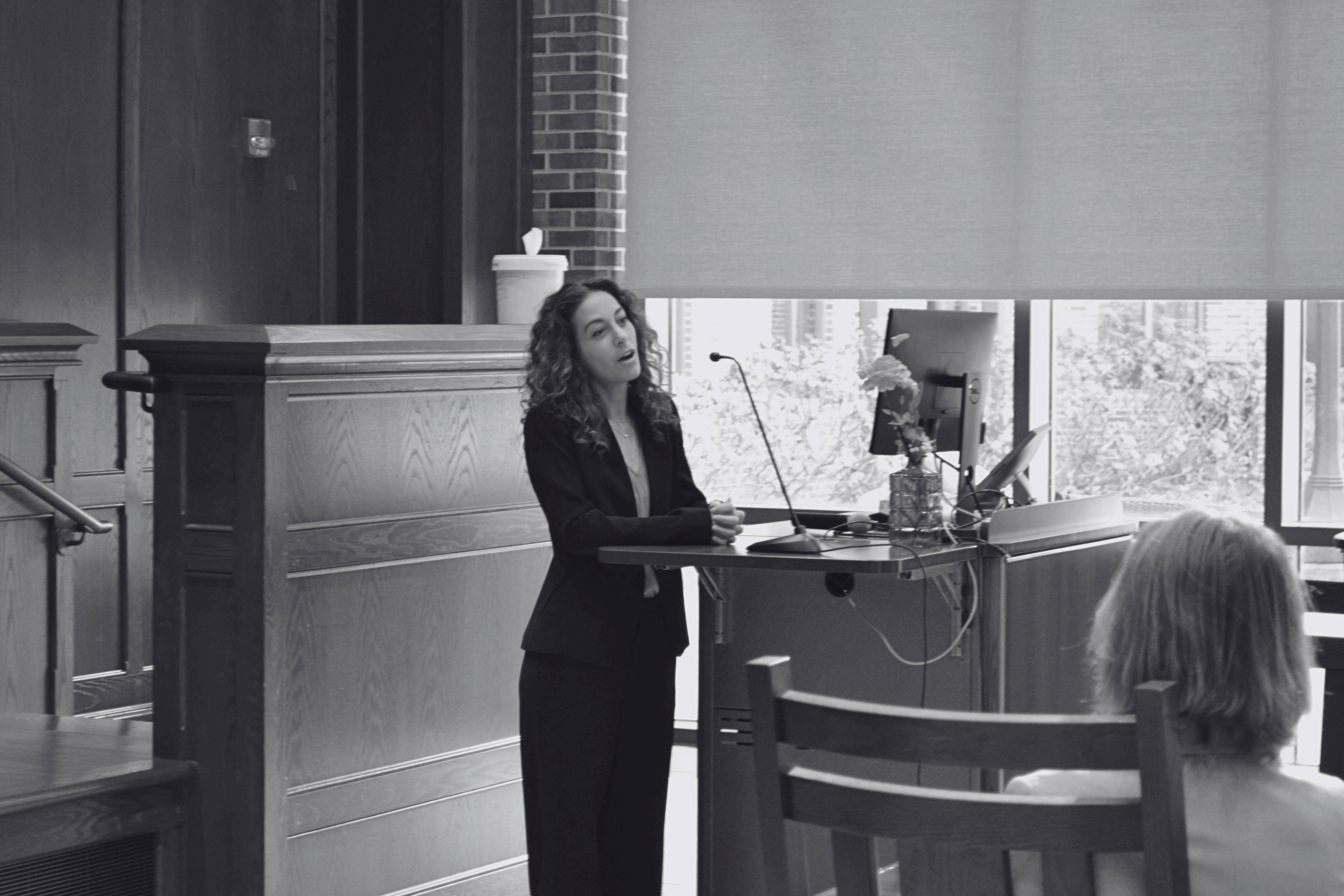
One of the most rewarding pursuits of my career as a teacher-scholar has been some recent work to co-publish with my honors students. I have been engaged with students since 2021 to create a series of articles appearing in the journal Anthropocenes – Human, Inhuman, Posthuman (2 of 3 now completed, with a total of 9 honors student coauthors). In these articles, which are available open-access online, we describe our practices for those wishing to replicate them. Some may still wonder, however, about the behind-the-scenes inspiration that led to these outcomes. Here, I share here a few reflective notes that might guide others along a similar path.
First, I must be honest that none of this was initially planned. It emerged out of how inspired I was by my students’ writing in my course. So, it really began and ended with their ideas, their words, their contributions. If I can take credit for anything it all, it was simply asking a good question to great students and not letting the value of their contributions end with the end of the calendar term. The assignment was to write about their personal origin story, but reconsidered in light of the subject we were learning. And simply, I was so inspired by what they had to say and the potential for it to expand scholarly dialogue on the topic, that I hurriedly made some light editing suggestions to those drafts I felt had the most potential impact to the field and returned them to the students with an inquiry that we might co-publish Their writing inspired my own, and the publication was easily born out of this
I learned two things from this first phase, namely: (1) facilitating communication is key and (2) it engenders opportunities for new areas of teaching and learning. On the first point, students tend to move on after a class – some graduate, others have shifts in focus, responsibilities, ad/or residential locations. This can introduce serious challenges when you must ensure that your co-authors’ words in print are their own along the entire chain of drafts, revisions, and proofs. It is for this reason critical to ensure that the students who will write with you are committed to the task and that they are informed about staying in regular communication. Instructors should define the means of communication before the class ends, and preferably, these are multiple – email alone may not be enough. The beauty of this engagement is that it also means that the mentorship may not end, as often our conversations about the writing migrated to other topics about our lives, our goals, and professional challenges. In this respect, many of these writers have become my students in a much broader sense of the term.
The latter fact leads to the second point, which is the emergent forms of new teaching and learning that this process unearthed. In addition to the mentorship that seemed to naturally unfold, my pedagogical practice further developed as I started to think more deliberately about how to enhance and extend these outcomes. For the second article (due out in May 2024), I organized a post-course writing group as an independent study where we could have a designated “laboratory” of dialogue for a full semester to develop our ideas. This allowed me to guide students more deliberately to apply major concepts from the scholarly literature to the revisions of their first classroom drafts. The context challenged me to engage my student writers more directly, and it put their efforts even more at the forefront of our outcomes.
In the revision process, they ultimately introduced more significant changes to my content (both my thinking and my writing) than I did to theirs, and I found in the end that I learned better how to apply my professional capacities in service to their ideas.
The third and final publication is now in development, and I find myself once again immersed and enamored with the rich metaphors and meanings expressed in my students’ writing. Though I do not yet know the exact contours of the thing, I have within these documents my guide for what our next set of practices should be As we face our speculative futures together, I am confident that I am in the good and steady hands of some amazing students

Elizabeth Brite, PhD
What does it mean to mark a new era in the history of the Earth when humans are the dominant force on the planet? This is the question that students in HONR 31400, Human Epoch: The Anthropocene are exploring as they consider the challenges that human-induced environmental change presents for our present and future. In this Honors College course (which counts towards the University Core, Human Cultures: Behavioral and Social Sciences), students have not only been making strides in classroom learning, but they have gone further, to make meaningful contributions to the international scholarly dialogue on this topic.
Climate change, urban growth, industrial agriculture, nuclear production, species extinctions, terraforming, the introduction of vast amounts of long-lived materials (e.g., plastics) – all of these are significantly transforming Earth system processes and the sedimentary record of life on the planet in ways that drive us towards deep reflection. The Anthropocene proposal, the idea that we should scientifically mark a new epoch in the in the Geologic Timescale (GTS) to recognize human impacts on the planet, is one of the most vital and vibrant interdisciplinary dialogues in scholarship today. But key voices have been conspicuously absent in these conversations – those who will fully live within the Anthropocene and inherit its many challenges, our students
To rectify this, instructor and students in HONR 31400, Human Epoch: The Anthropocene have been engaged in cowriting to bring student voices to the fore in a series of international, peer-reviewed publications in the journal Anthropocenes: Human, Inhuman, Posthuman. Envisioned as a three-part series, these articles chronicle the journey of student learning as the writers consider the implications of the Anthropocene in their own lives. The first in the series, which examines how the Anthropocene reformulates our understandings of the human past, was published in 2022 and is available open access online (https://doi.org/10.16997/ahip.1293). The second publication is due out in early May 2024 and considers how we might face the new, vast, and frightening material forces that the Anthropocene brings to bear on our lives (https://doi.org/10.16997/ahip.1491). In the third and final piece, currently in development, student authors will write about how they engaged the material remains of the Anthropocene through construction of an artifacts exhibit currently on display in the glass cabinet in Honors College North. Please stop by to view this work in progress!
References:
Brite, E. B., Colon, B., Johnson, G., Harris, J., Borders, N. & Malerbi, K., (2022) Refashioning Origins in the Anthropocene: Reflections on Pedagogical Practice, Anthropocenes – Human, Inhuman, Posthuman 3(1) DOI: https://doi org/10 16997/ahip 1293
Brite, E B , et al (2024) Refashioning Origins in the Anthropocene II: Facing Hyperobjects as Pedagogical Practice Anthropocenes – Human, Inhuman, Posthuman 5(1): 2. DOI: https://doi.org/10.16997/ahip.1491 (available online 3 May 2024)
Authors TBD. Refashioning Origins in the Anthropocene III: Embodied Skill and the Stratigraphy of Pedagogy. Article currently in development for Anthropocenes – Human, Inhuman, Posthuman


Anish Vanaik, PhD Dwaine Jengelley, PhD
At the heart of editorial cartooning is a peculiar and Sisyphean labor – to distill all of a day’s public happenings into a single image and, next morning, to wake up and do it over again. Somewhere between journeyman and artist, journalist and archivist – the editorial cartoonists’ craft offer us a unique way to understand our lives. They present it in rich variation. Sly perspective and a lightning pen, well-worn cliche and the flashes of insight, dry wit and silly pun, devastating caricature and poignant symbol – these are all the stock in trade of the cartoonist. With these tools, the cartoonist’s daily labor shapes the invaluable archive explored by students in HONR 464 COVID19 and Political Cartoons.
A second paradox of the editorial cartoon’s form lies in its peculiar relationship to reality. They are, on one hand, tied to public reality for their subject matter. This sets them apart from the more familiar fictional cartoon or comic strip. On the other hand, the form of the editorial cartoon insists that non-realism play a leading role – and this distinguishes it from the photograph, video or report about the events of the day. From of this combination of constraint and freedom cartoonists extract profound statements that bring together surface depictions of events with the inner psychic and emotional landscapes that color our public life Editorial cartoons are inevitably reportage and commentary, emotive image and rational argument.
As an accumulated archive, then, editorial cartoons offer treasures of many sorts. The individual compelling image sits together with the serial repetition of themes. While most cartoonists, in search of the day’s distillation, turn to a political happening, the sheer number of images they are called upon to draw means that the quotidian must slip in, if only to add color and variation. And every so often, as happened at many points during the pandemic, the everyday is the story! As a result, cartoons can be studied for a variety of questions – from the character of individual politicians, to the issue of human nature itself, from the nuances of public policy to the existential dilemmas of contemporary life.
Students in COVID-19 and Political cartoons explored these possibilities with gusto. Cartoons were drawn about the bread and butter of political themes: polarization, populism and President Trump were all selected by students to research. So too, were those large political movements – against Asian American hate, and the Black Lives Matter movement – that punctuated 2020. If the pandemic brought forth critical ruptures in American society, cartoons could tell us a lot about what folks were feeling about these ruptures. But beyond the conventionally political, the pandemic turned
cartoonists’ gaze towards more everyday aspects of social life, and students investigated these too Many mapped the ways in which cartoons portrayed the education system – school graduations, closures, university re-openings and joblessness. Questions of labor loomed large – how were essential workers and healthcare workers portrayed? But the more hidden travails of the pandemic - our inner lives – were also reflected in the cartoons and students chose to study portrayals of death, mental anxiety and the use of art as a therapeutic response to the trauma of the pandemic.
A final aspect of the design of COVID-19 and Political Cartoons was a curve-ball to the upper division students who were enrolled in the course. For most of them, college years had been the ones in which they imbibed the rigor of academic writing, the precision of a research vocabulary and the formulaic presentation of scholarship. For this course, the task was to conduct rigorous research, but to write it for a public audience. As Prof. Rosie Clawson, one of the many resource people that briefed students insisted, many news outlets ask for OpEd articles to be pitched in a style that would meet and 8th grade reading level. A more tangible version of the research-popular audience translation has been popularized most recently in websites like “The Conversation” and “Aeon”. These outlets are instantiations of a conviction, one shared by us, that research must be disseminated into the world and not remain locked within academic jargon. The experience for most students was challenging. They had to imbibe the tools and technical knowledge to study cartoons in a compelling manner, but employ a very different language and mode of presentation to convey what they found.
The three student-authored articles collected here cover themes that are of abiding interest and importance. Isaac Stephen’s article approached his cartoons as a unique vantage point from which to view the dawn of the era of remote work His research is based on an analysis of cartoons as well as an interview with Jeff Koterba – a nationally syndicated cartoonists – to gain insights into his motivations and his shifting understanding during the course of the pandemic. Madeline Erdell – now a medical student – chose to study cartoons for what they can tell us about the discussion of vaccine hesitancy. Her firm grip on public health literature about vaccine hesitancy allowed her to contrast it with the tone of the public discussion more generally. The last of the three papers – by Nick Duncan –compares cartoons before and after the onset of the pandemic and finds a reversal in the portrayal of nature: from being a hapless entity, more acted upon than acting to being imparted agency by most cartoonists. Each of these investigations was rigorously researched and carefully placed within the existing scholarship. Each carries original insights into their subject matter, even if – guided by the imperative to write for a general audience - they wear their academic vestments lightly.
We invite you to delve into these insightful projects that reflect the challenges and the resilience of our times. Through political cartoons and accompanying analyses, students have found a powerful voice to express their perspectives, contributing significantly to the broader dialogue about the pandemic's impact on society.

JEFF
Isaac Stephan is a graduating senior at Purdue University studying Computer Science. Originally from Noblesville, Indiana, he enjoys experiencing the great outdoors, going to sporting events with friends, and spending time with family.
Replaceable Lazy Unproductive All words that have been used to describe the American Remote Worker since the beginning of the pandemic. While many, from Elon Musk to your old boss, have posted about their disdain for the practice of working from home, this overly cynical view doesn’t do the nuanced conversation surrounding remote work justice. When remote work was brought on by the pandemic, companies adopted the practice on a broad scale, mostly out of necessity. Likewise, their workers were thrust into new long-distance occupations, overwhelming some with new responsibilities and workspaces at the beginning of a pandemic. Remote work began to become our new normal with no in person return in sight. Even in this unprecedented situation some workers began to appreciate the newfound conveniences that no commute and a lack of office formality brought. As companies realized they were paying for offices they weren’t using, and not able to monitor the productivity and growth of employees as easily, a return to office seemed to be their solution. Meanwhile, some American remote workers had become fond of this new workstyle. At the very least, they did not want to go back to the complete 5 day in-person work week, setting up an eventual clash with employer return to office expectations.
Enter Jeff Koterba, a prominent nationally syndicated political cartoonist who took a particular interest in remote workers as an illustrated subject. In fact, Koterba focused on remote workers more than any other cartoonist on the popular website politicalcartoons.com during the national storylines about remote workers. His work offers a unique window into the development of the human aspect of remote work, as well as the perception of workers as the pandemic progressed.
Before focusing on one cartoonist, I tracked any possible changes in the characterization of remote workers by prominent nationally syndicated cartoonists on politicalcartoons.com to see if attitudes towards these remote workers had changed at all alongside national storylines that were ongoing at the time of publication Ultimately, the analysis shifted to focus on Jeff Koterba, as his works made up 10 of the 36 collected cartoons depicting remote workers during both time spans of interest. These time spans included April 1, 2020, to September 30, 2020, when widespread remote work began, and April 1, 2021, to September 30, 2021, when the return to office movement began to pick up steam.
Koterba is just one individual, but his depictions of remote workers allow us to clearly visualize some of the changes in attitude towards remote workers that he witnessed in the national conversation and his own life. The pandemic is a crucial chapter in the history of remote work, and Koterba’s insights into the motivations of remote workers to stay virtual as well as the perceptions of remote workers, are an invaluable document of the ongoing conversations surrounding a return to the physical office. I interviewed Koterba about what drove him to depict remote workers at such a high rate, while also conducting an analysis of his work centered around the question: How did Jeff Koterba's portrayal of the American remote worker’s moral character in political cartoons change between the shift to remote work at the beginning of the pandemic, and the return to office movement a year into the pandemic?
Koterba himself said in our interview that remote workers particularly intrigued him. This mostly stems from the fact that as a cartoonist he is fascinated by societal changes, in addition to what’s impacting the day-to-day lives of the common person. He notes that “when I draw a cartoon … In my head I try to embody the characters, I try to put myself in their position. What is it like for a busy single mom to work remotely … how does that affect the psychology of a family?” For him, remote workers were around him in the form of friends and loved ones. The realities of their everyday lives, in addition to other remote workers nationally, became a subject featured prominently in his work.
To analyze Koterba’s depiction of remote workers, I developed four frames that categorize the portrayal of remote workers along national storylines about remote work at the time. The first two frames are depictions of the personal outcome of remote work. Specifically, whether cartoons depicted remote workers being overwhelmed by their responsibilities, or alternatively, whether they were depicted as becoming “lazy” and taking subtle advantage of the lack of supervision. The other two frames focused on remote workers’ desire to work in person. These specifically asked whether remote workers were depicted as having a desire to return to the physical office, or if they had an aversion to returning to the physical office. In addition, stylistic choices that Koterba made, like clothing, gender of workers, and other factors were examined.
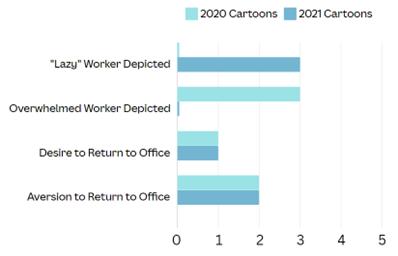
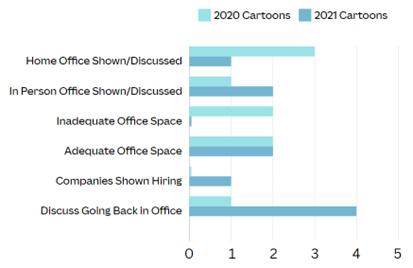

Initially, in 2020, Koterba portrayed remote workers as overwhelmed with distressed looks on their faces (Figure 1). Whether from fatigue or balancing the responsibilities of parenting, the remote worker seemed to demand the viewer’s sympathy. Workers had no way of preparing or predicting that the pandemic would be thrust upon them and so their virtual workspaces lacked privacy, boundaries, and resources. In addition, Koterba shows some workers longing for the reality that they knew before the pandemic. Fatigue that came from being constantly online or in some form of isolation was prominent in these works. This begs the question: did workers want to return to the office or stay at home?
Here, Koterba’s indecision captures another aspect of our current attitudes to remote work. In both 2020 and 2021 he drew just as many cartoons depicting workers wanting to stay at home as workers wishing to return to office.
In 2021, Koterba began to shift his depictions of the remote worker from an overwhelmed individual, to one who was more relaxed, and pajama clad, or back in the office to varying levels of happiness (Figure 2). The emphasis on casual wear donned by remote workers is prevalent in three of the five cartoons during this time span. The topic was often brought up by portraying workers wearing these clothes, or deciding whether they want to buy “in person”, “hybrid”, or “remote work outfits”. Workers in 2021 portray a more nonchalant expression, with their home offices much tidier than in the initial 2020 cartoons. This in effect signals the beginning of remote work as the new normal, while highlighting uneven working policies in place around the country. Some people were back in the office, some stayed in their Covid work-from-home routine, and some found a mix between the two Worker clothing choice does invoke a sense of leisure or laziness, indicating that the worker depicted may be drawn to the life of pajamas and sweatpants instead of office suits and formality Their portrayal is not mean-spirited or meant to insinuate that remote workers are inherently lazy. Rather, as Koterba says, it is a lighthearted way to poke fun at the reality of workers being able to wear pajamas and make a living.
In terms of the location, Figure 3 shows that Koterba’s focus shifted in 2021 to not just include the remote workspace, but also the offices that workers were returning to. This closely aligns with the shift in conversation surrounding remote work and return to office at the time, with many workers gauging whether or not they would like to return in person.
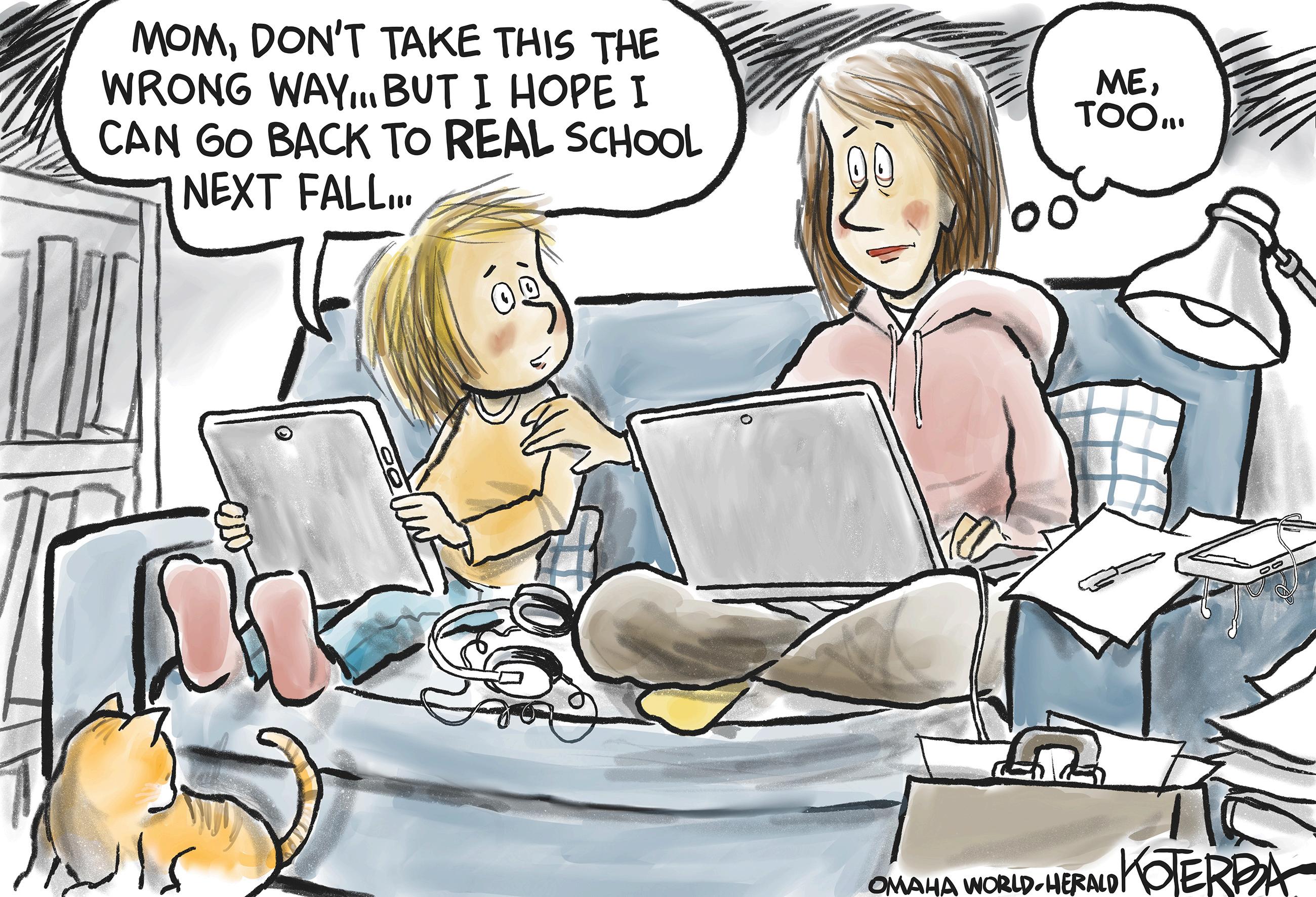
Additionally, it’s worth noting that Koterba only displays inadequate office spaces in the 2020 time span, with all of those inadequate spaces being home offices. However, the home office and the in-person office are both displayed as adequate in the 2021 time span, reflecting some of the normalization of remote work that had occurred since the beginning of the pandemic. This shift of the remote workplace going from a disorganized and stressful mess to a more tranquil and organized space that can rival the in-person office is likely the most significant takeaway from the analysis of Koterba’s settings. It also closely reflects some of the discussions that happened nationally about remote work at the time, and to this day.
Remote work and the return to office are workplace dynamics that will almost certainly continue to be discussed into the near future. Koterba’s cartoons are a unique chronicle of the evolving conversation about remote work. Through them we can see that a worker who at the beginning of the pandemic was often seen as thrust into an uncharted situation with overwhelming responsibilities, evolved into a worker who began to enjoy the comfort of working from home Koterba shows that the resistance to a return to the physical office is not felt by all, but many have become accustomed to their schedules and the new remote normal Whether you’re in favor of wearing slacks or sweatpants to your job, understanding how portrayals of remote workers developed during the pandemic is an invaluable guide to the different attitudes arguing over how our workplaces are and ought to be.
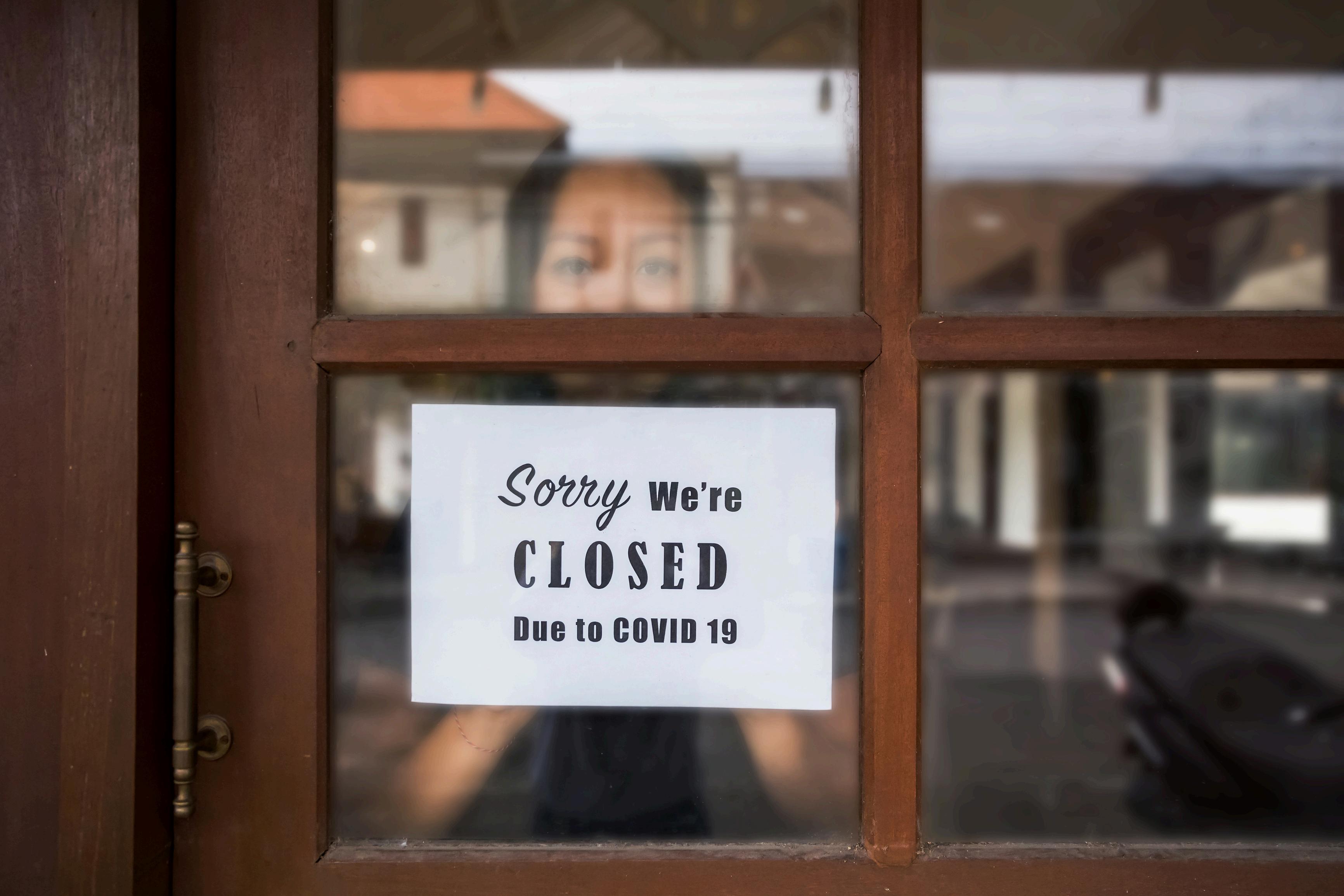
References
Buchholz, Katharina. “65% of Remote Workers Do Not Want to Return to the Office - Here’s Why.” World Economic Forum, 27 Apr. 2021, www weforum org/agenda/2021/04/survey-65-of-remote-workers-do-not-want-to-return-to-the-office/
Barrero, Jose Maria, et al “Don’t Force People to Come Back to the Office Full Time ” Harvard Business Review, 3 Dec 2021, hbr org/2021/08/dontforce-people-to-come-back-to-the-office-full-time
DiDomenico, Patrick “Why CEOS Want Employees Back in the Office ” SHRM, SHRM, 17 July 2023, www shrm org/resourcesandtools/hrtopics/employee-relations/pages/why-ceos-want-employees-return-to-office.aspx.
Gorlick, Adam. “The Productivity Pitfalls of Working from Home in the Age of Covid-19.” Stanford News, 16 Apr. 2020, news stanford edu/2020/03/30/productivity-pitfalls-working-home-age-covid-19/
Maurer, Roy “Study Finds Productivity Not Deterred by Shift to Remote Work ” SHRM, SHRM, 6 July 2021, www shrm org/hr-today/news/hrnews/pages/study-productivity-shift-remote-work-covid-coronavirus.aspx.
Mosley, Tonya, and Samantha Raphelson. “Even before Pandemic, Working Parents Struggled to Achieve the ‘Dreams of the Overworked.’” Here & Now, WBUR, 13 July 2020, www wbur org/hereandnow/2020/07/13/dreams-of-the-overworked
Royle, Orianna Rosa “Are Remote Workers Lazy?” Fortune, Fortune, 22 Jan 2023, fortune com/2023/01/22/are-remote-workers-lazy-elon-musk-marcbenioffs-work-from-home-productivity-problem/
Society for Human Resource Management (SHRM) “SHRM Research Reveals Negative Perceptions of Remote Work ” SHRM, SHRM, 26 July 2021, www.shrm.org/about-shrm/press-room/press-releases/pages/-shrm-research-reveals-negative-perceptions-of-remote-work.aspx.
Strain, Michael R. “Remote Work Causes Wrong Kind of Economic Mobility.” Bloomberg.Com, Bloomberg, 20 June 2020, www bloomberg com/view/articles/2020-06-20/remote-work-causes-wrong-kind-of-economic-mobility? leadSource=uverify+wall&sref=QK42wmXj#xj4y7vzkg.

Madeline Erdell
Madeline is from Newburgh, IN In her free time, she loves to cook, travel, try new coffee shops, and read on the beach She graduated from Purdue University in the Spring of 2024, and studied Brain and Behavioral Sciences and Spanish She is now attending the Marian University School of Osteopathic Medicine with the hope to practice as a family physician
There may be nothing more likely to doom us in future pandemics than vaccine hesitancy This phenomenon is now fairly easy to find online, and its prevalence only grew during the search for a COVID-19 vaccine. Throughout the pandemic, political cartoonists from a variety of ideologies drew and depicted this hesitancy in numerous ways. These cartoons offer approachable windows into our world so that we may better understand what caused the lingering doubts of vaccine skeptics, and how our portrayals of vaccine-hesitant individuals might not capture the entirety of the situation.
Political cartoons are no stranger to developing caricatures in a satirical or humorous fashion. These caricatures can include famous public figures, the everyman navigating the world around them, non-human subjects an artist seeks to personify, and more. The COVID-19 pandemic was certainly not spared from these types of depictions. The virus that spread throughout our society took on different personas. World leaders were depicted as being asleep at the wheel or overly cautious. Those resistant to the vaccine took on personas of being uneducated or righteous.
To understand these cartoons about vaccine hesitancy we also have to understand the scientific context of why many are resistant to vaccines. There have historically been six areas influencing vaccine hesitancy. Those include not understanding how vaccines work, having a fear of contracting a virus from a vaccine, fearing vaccines are created too quickly, simply not wanting the vaccine, fearing violations of civil and religious rights, and the perceived conflicts of interest between pharmaceutical companies and the government. Using this background information about the power of political cartoons, and the causes of vaccine hesitancy, I set out to examine how the phenomenon was portrayed in the political cartoons of the pandemic
I collected seventy-one cartoons from January to July of 2021 by randomly selecting ten political cartoonists who were identified as left-wing, and ten political cartoonists who were identified as right-wing. These months encompass the beginning of vaccine distribution and the time in which most individuals received their first dose of the COVID-19 vaccination. My analysis led to three major conclusions. First, across the political spectrum, the framing most commonly used to portray vaccine hesitancy was causational. This means that the cartoonist focused on displaying the underlying reasons causing an individual’s hesitancy. Thus, vaccine hesitancy became the product of some other factor causing it, such as a lack of trust, fear, or misinformation. Causal framing also has its downsides, often shaping public perception of vaccine-hesitant individuals for the worse. These negative perceptions can in turn create unhelpful stigmas that complicate immunization efforts. This ultimately leads to the creation of false narratives that oversimplify certain complex reasons behind hesitancy, causing us to push away some individuals that we want to educate.
Second, left-wing cartoonists tended to depict the idea that right-wing conspiracy theories were the cause of vaccine hesitancy. Portraying conspiracies as the most significant driver of hesitancy begins to paint a picture that those who are hesitant are as irrational as the conspiracy theories they believe in.
Lalo Alcaraz cartoon for Friday July 16, 2021
permission All rights reserved

One problem with framing hesitancy as an issue solely present among right-wing individuals is that these cartoons may miss out on other reasons for hesitancy that aren’t rooted in political leanings. On the other hand, right-wing cartoonists tended to present the fact that hesitancy exists but avoided attributing a single direct cause. This implies a more neutral stance by the artist, avoiding directly blaming right-wing conspiracy theories, a lack of trust in the government, or other reasons as being the sole cause of hesitancy. These portrayals mirror the political polarization about vaccination that occurred during the pandemic, giving us a glimpse into the content many were consuming at the time to reinforce their beliefs. When these worldviews explaining hesitancy are so vastly different, it is no wonder they clashed with one another in online forums and real-life conversations.
Finally, the figures showcasing hesitancy in most of these cartoons embodied a similar caricature. Regardless of political ideology, the hesitant individuals featured were white males wearing red Make America Great Again (MAGA) hats, and embracing anti-vax sentiments. This analysis of the race and gender of the individuals portrayed is critical, as it displays who cartoonists saw as the most sympathetic to the hesitancy movement during the pandemic. The lack of diversity in these cartoons suggests that the cartoons may not accurately represent the full spectrum of perspectives and identities related to this movement. This can inadvertently marginalize certain groups and experiences while reinforcing the stereotype that all those who are hesitant are anti-vax white Trump supporters. It is also important to note that political cartoons have historically overrepresented white males, giving us a reason why they may be the main focus of these specific cartoons. These portrayals may cater to audiences that the artist knows will consume their work, but might not capture the full reality of those experiencing hesitancy.
Ultimately, cartoonists of both ideologies portrayed vaccine hesitancy in a neutral or negative light using a common caricature that their audiences were both familiar with Left-leaning cartoonists were more likely to use causal framing in their works to explain how vaccine hesitancy had come about through the belief in right-wing conspiracies. However, it is important to note that both political ideologies portrayed individuals who were resistant or outright refused vaccines. Thus the issue was at least being acknowledged by both left and right-leaning cartoonists, but the cause of the issue remained up for debate.
These cartoons are not a scientific study of what the leading causes of hesitancy are, but they help capture the pulse of how the public felt about vaccine hesitancy during the pandemic. That pulse can be just as important given how the public’s opinion shapes the stereotypes we attribute to hesitant individuals. If we are not careful we run the risk of oversimplifying this public health issue and not reaching those who may be willing to learn about the benefits of vaccination. These findings can help us identify those most at risk of being vaccine-hesitant, while also identifying communities that may have hesitancy but are being overlooked. In the end, the works of these cartoonists can help determine how to best steer public discourse to educate these hesitant individuals and not ostracize them with stereotypes. After all, being able to reach those who are vaccine-hesitant may be the most important task in the next pandemic.
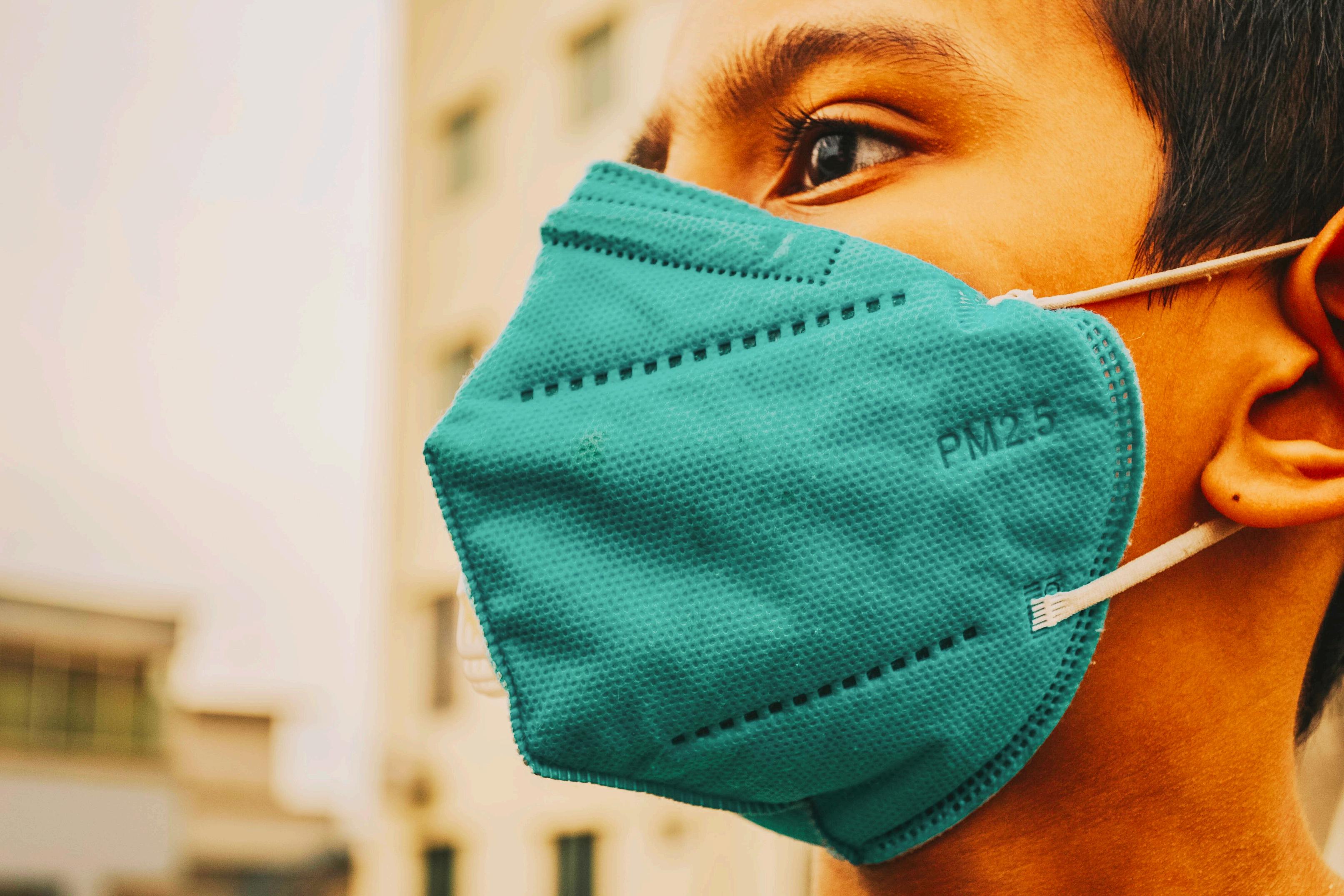
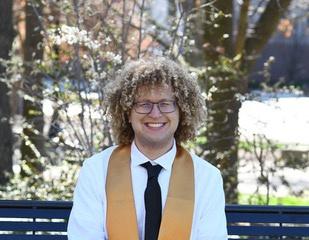
Nick Duncan
Nick is a graduating Senior from Purdue, majoring in Political Science and Psychological Sciences He has been a member of the honors college for all four years, and an honors mentor for three of those After graduation, Nick is planning to attend IU Maurer Law School to pursue his JD
Do you want to get to the heart of societal views? Look at the work of political cartoonists, the occupation that illustrates different viewpoints within our society. The political cartoons of COVID-19 and its effect on the Earth are no exception to this. COVID-19 was swift and unprecedented, reshaping our global outlooks and ways of life through lockdowns and virtualization As lockdowns expanded, those infected with cabin fever sought new connections to the environment around us that they once may have taken for granted Nature walks, reflection, and reconnecting with our planet became popular pastimes. As individuals became acutely aware of the human species’ impacts on the Earth, the concept of “Nature’s Revenge”, linking COVID to environmental retribution, became widespread. With many forced to retreat to their homes, viral videos of wildlife moving back into more developed areas began to crop up. This allowed many to view our unprecedented situation by seeing the virus and other natural disasters as actions of nature responding to humans’ negative environmental actions. Political cartoonists did not overlook this intertwining of the virus and Nature, often featuring the Earth exerting its will on humans in response to our transgressions. I set out to see how often Earth was depicted as having the agency to punish humans in the political cartoons of the COVID-19 pandemic, and how that differed from depictions of Earth’s punitive agency before the pandemic.
Cartoons are no stranger to bestowing agency on non-living forces. For cartoonists, attaching agency to non-human beings typically portrays an emotional response - anger, pain, joy, or some other emotion. Through this they draw attention to the problem and allow us to empathize with the human emotions expressed by a planet we may not have otherwise identified with (Manzo, 2012). “Nature’s Revenge” is a perfect example of this. An inanimate or non-human subject, in this case the Earth, brandishes its agency to express anger toward human actions.
I focused on 45 works published between April 14, 2019, to April 14, 2021, one year before and after the pandemic was declared in the United States on April 14, 2020. 16 of the cartoons were published after the pandemic began, while the other 29 were published before. I specifically analyzed cartoons relating to climate change, with a special focus on those depicting the Earth with an ability to administer punishment. Cartoonists use different representations such as angry clouds or inclement weather to depict the larger entity of Earth with varying levels of agency. To clear up any difference in depiction we can use the term Gaia to represent all illustrated versions of this “Mother Earth” figure taking action
One example of a cartoon bestowing Gaia with agency comes from Figure 1 below. In it, the human lacks all agency after being sealed into a bottle by Gaia. Gaia has used the COVID-19 virus as a tool to trap humans, keeping them away from the seemingly clean and perfect natural world that has popped up without them around. The character in the bottle is portrayed as an “everyman” figure, a tool cartoonists often use to represent an average representative member of society. This cartoon is a prime example of the idea that “Nature’s Revenge” was brought on humanity to punish them for the
damage they have caused to Gaia. Damage that likely wouldn’t exist if humans weren’t around to mess up the seemingly perfect natural world. In a different 2019 cartoon by Brian Adcock titled, “Trump Stays Out of Climate Deal,” an anthropomorphized Earth is sweating due to climate change, while politicians make jokes at Gaia’s expense. Gaia lacks the supreme agency shown in the previous cartoon, seemingly waiting for the politicians to help cool it down. This is in sharp contrast with the world leaders depicted in the cartoon who seem to be the same size as Earth but with the authority to call security and remove the Earth from the summit The contrast between these two cartoons captures well the change in the understanding of the agency of Nature brought about by the emergence of COVID-19
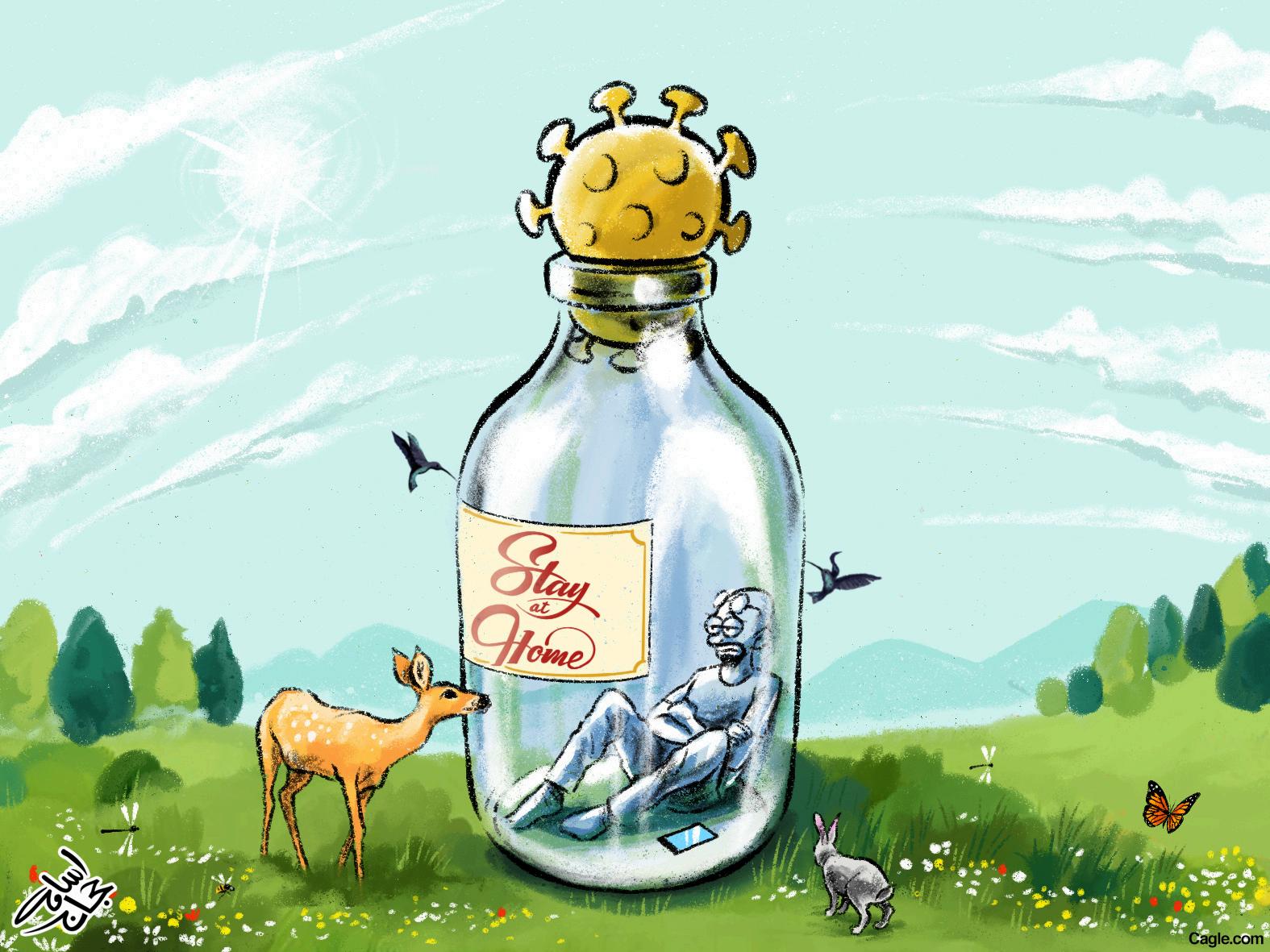
Of the 45 cartoons analyzed 16 involved the Gaia character having agency. Of those 16 only 4 were published before the pandemic. This showcases a clear increase in Gaia’s agency after the outbreak of COVID-19, with 75% of the collected pandemic-era cartoons showcasing agency compared to just 14% of the pre-pandemic cartoons. Another common thread in these pandemic-period cartoons was Gaia and humans acting against each other. The cartoons in which Gaia showed agency also tended to depict humans on the receiving end of punishment, with ten of them involving humans beings suffering at the behest of nature and weather events. These actions were not normally directed at influential world leaders or politicians, rather they tended to be directed at humanity in general. 80% of cartoons showing Gaia with
agency used “everyman” figures as the subjects of punishment instead of powerful individuals.
The emergence of “Nature’s Revenge” among political cartoonists points to the ways in which the COVID pandemic reframed how we view the Earth and environmental problems. Seeing a cartoon of the Earth angrily sending a hurricane or winter storm to hurt humanity indicates that some perceive nature as having more agency to act on its anger than in pre-pandemic times. The impacts of climate change and the motivation to alert humans to their actions seem to be the chief drivers of these portrayals. The shift in our depictions of Gaia is not always about extremely negative natural consequences. Other cartoons seek to emphasize the Earth feeling pain, and cures for it. Cartoons that showcase the tranquility of nature without humans offer a more positive outlook on what could be if we respect the planet. If humans see the Earth more empathetically and as a figure who can make powerful decisions, it could lead to more efforts to stop the damage being done (Tipler and Ruscher, 2014). Working towards sustainable climate solutions has never been more possible, but the public must be bought in. That is where the power of political cartoons to influence a reader's empathy with Gaia comes in.
References
Manzo, K. (2012). Earthworks: The geopolitical visions of climate change cartoons. Political Geography, 31(8), 481–494. https://doi org/10 1016/j polgeo 2012 09 001
Kearns, R (2021) Narrative and metaphors in New Zealand’s efforts to eliminate Covid‐19 Geographical Research, 59(3), 324–330 https://doi.org/10.1111/1745-5871.12492
Lele, S (2020, June 22) Sharachchandra Lele, Environment and Well-being, NLR 123, May–June 2020 New Left Review https://newleftreview.org/issues/ii123/articles/sharachchandra-lele-environment-and-well-being
Semino, E. (2020). “Not Soldiers but Fire-Fighters” – Metaphors and COVID-19. Health Communication, 36(1), 50–58. https://doi org/10 1080/10410236 2020 1844989
Tipler, C , & Ruscher, J B (2014) Agency’s role in dehumanization: Non-human metaphors of out-groups. Social and Personality Psychology Compass, 8(5), 214–228. https://doi.org/10.1111/spc3.12100
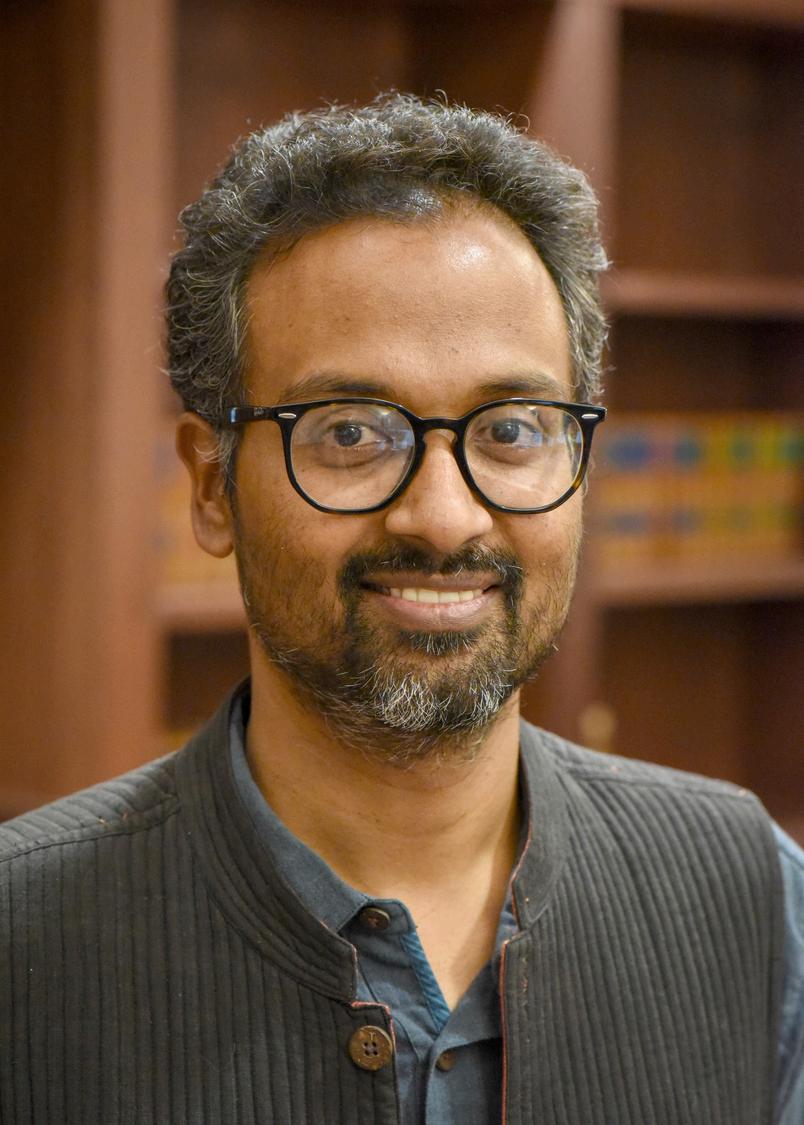

Dr. Anish Vanaik is a historian of South Asia with a particular focus on the political economy of cities. Strangely enough researching that subject led him to editorial cartoons. He’s currently working with collaborators on a book project about portrayals of the Black Lives Matter Movement in political cartoons.
Dr. Dwaine Jengelley is a political scientist and the Director of the Interdisciplinary Sports Studies Research Generator at the John Martinson Honors College, Purdue University. His scholarly work delves into media dynamics, focusing on terrorism, race, and how news is reported. Dr. Jengelley's work has been published in journals such as Terrorism and Political Violence and Politics, Groups, and Identities. In his teaching, Dr. Jengelley explores intersections between terrorism, security technology, global development, and the socio-political dimensions of sports.

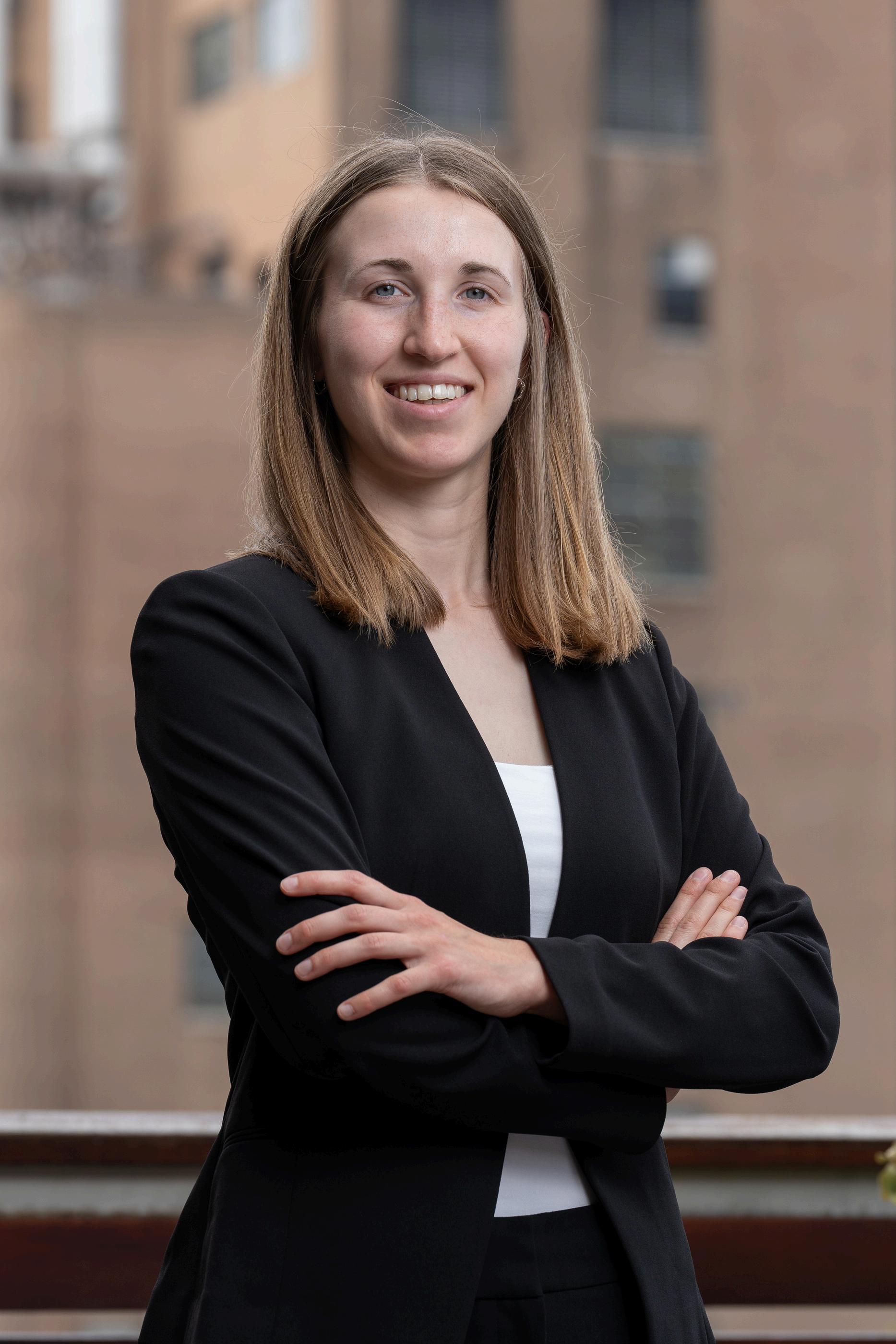
Allison Bosshart
In my second semester before graduation, I was trying to decide between taking a class for my scholarly project or performing independent research. I am personally more interested in the social implications of technology than developing new technologies myself, especially after being involved in social justice clubs in high school. At the same time, one of my chemical engineering Fall 2023 classes had a very vague policy on using artificial intelligence (AI) for research purposes but also said you were not allowed to use AI on our group research paper. This policy confused me, and I decide to err on the side of caution and not use AI at all. I had also seen an exponent article from Summer 2023 about a professor accused of being an AI bot, and in this article, I learned about how some students who aren’t native English speakers or who have a learning disability can have their writing be mistakenly accused of being written by an AI tool. I reached out to Dr. Weinberg to ask if I could do a project with her Tech Justice Lab. She set up a meeting with me, gave me feedback on my ideas, and matched me with a professor mentor since she was teaching abroad. This counted as one credit of honors independent research in my final semester to meet my remaining graduation requirements. In this project, I surveyed Purdue honors college and honors engineering faculty members about their teaching experience and their views on AI tools. My mentor, Dr. Mayari Serrano, helped guide my research ideas.

My results showed that faculty respondents are concerned about reduced critical thinking and originality and plagiarism in their student’s work since AI tools are now widely available. I also found that AI tools have been allowed in classes with specific criteria. I divided the main population of honors college faculty members and honors engineering faculty members into sub-populations of STEM, Non-STEM, and interdisciplinary and performed an ANOVA on about half of my questions. Therefore, I found there is not a difference in the handling of AI tools based on faculty field of expertise. All professors are having similar difficulties teaching with AI tools now available for students
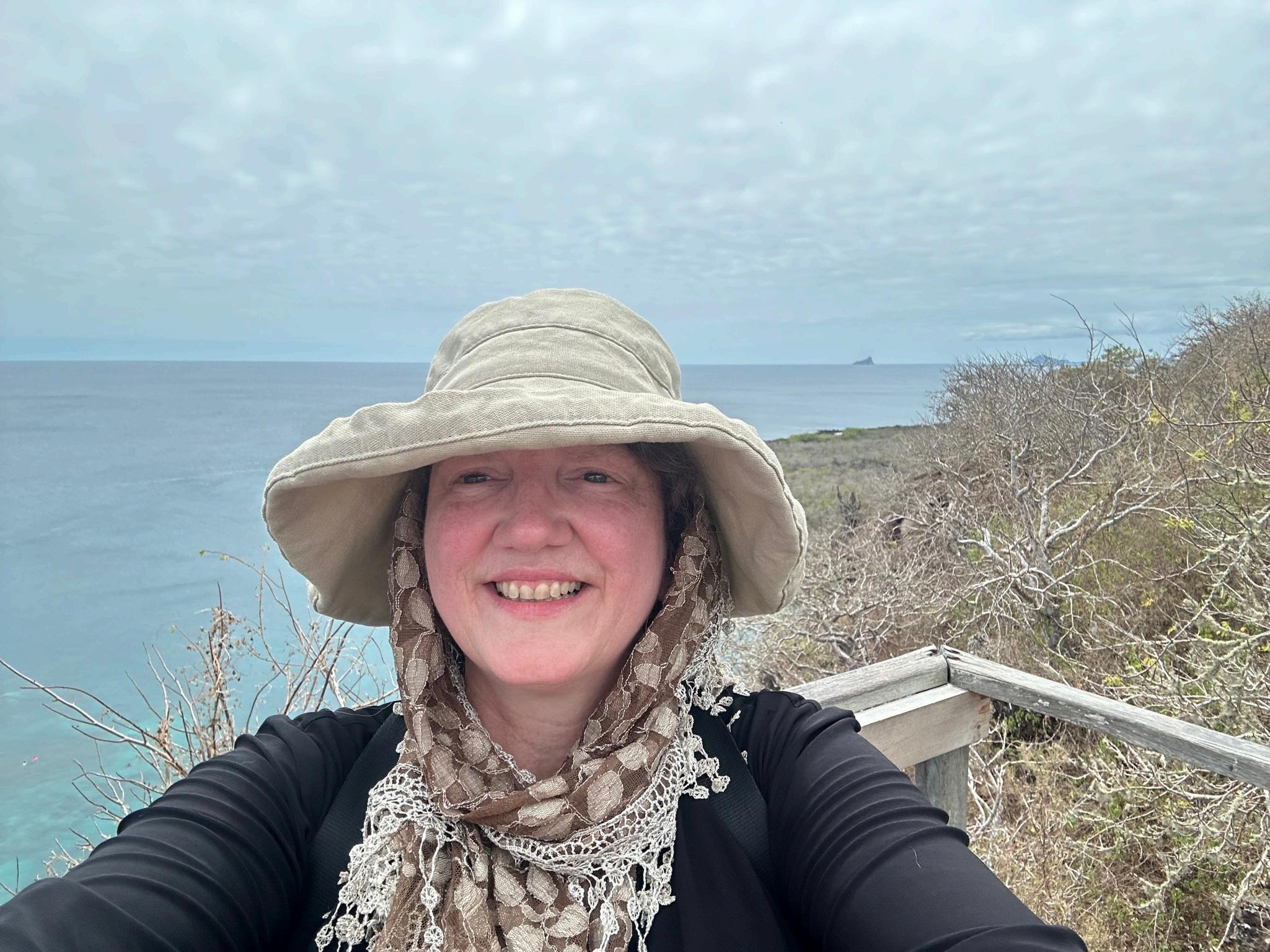
Recent Publications:
Dagys, K., Agipar, B., Tsolmon, S., Ringler, C., Bellisario, K., & Fanzo, J. (2023). Maximizing nutrition in key food value chains of Mongolia under climate change. Food Policy, 117, 102468
In this publication, Bellisario produced climate model maps to predict changes in the temperature and precipitation that could impact how growing seasons.
Bellisario, K., Jessup, L., VanSchaik, J., Dunning, J. B., Graupe, C., Savage, D., & Pijanowski, B. C. (2023). Time-series forecasting offers novel quantitative measure to assess loud sound event in an urban park with restored prairie Ecological Informatics, 75, 102100.
In this publication, Bellisario uses a time-series model using baseline data at a single location to predict and confirm seasonal biodiversity changes.
Bellisario, K., & Shee, C. (2024). Silence: A Novel CoProduced Experience To Build Community Awareness Of Biodiversity Loss. Engaged Scholar Journal, 10(1), 55-63.
In this publication, Bellisario and Shee describe the integration of curricular design with cultural presentation through an Earth Day event.
Recent Media:
Discover Magazine, “I traveled to see the 2024 total solar eclipse and discovered mindfulness,” (4/16/2024)
Astronomy Magazine, “While millions watched the eclipse, these Purdue University scientists listened,” (4/18/2024)
WNG Radio, “Sounds of the eclipse,” (4/11/2024)
In these popular media articles, Bellisario is featured as part of a field team studying the solar eclipse through the lens of soundscape ecology.
This past year, the HIFI Lab embarked on an undergraduate research experience to understanding noise in the environment, developed a novel workflow to identify suitable habitat for large mammals for wildlife corridors through remote sensing monitoring, and build awareness of local wildlife To do this, we partnered with several organizations including the Niches Land Trust, West Lafayette Parks and Recreation Department, Tippecanoe County Parks and Recreation, Department of Natural Resources Nature Preserves, West Lafayette Middle School, and Wolf Park
Undergraduate students from multiple disciplines (ie., computer science, biotechnology, mathematics, ecology, wildlife management) deployed equipment at over 25 recording sites, 24 camera-trap sites representing 2,277 sampling days, 38,100 audio recordings, and 9,601 images Students learn how to collect, manage, and interpret data during four month to one year appointments. Part of the research experience is to present their work in a public forum which can fulfill the scholarly research project requirement This past year, HIFI Lab students presented at GIS Day 2023, Institute for Sustainable Futures Expo (Fall 2023), Purdue Fall Undergraduate Research Expo (Fall 2023), Purdue Spring Undergraduate Research Conference (Spring 2024), Engagement and Service-Learning Summit (Spring 2024), Purdue Forestry and Natural Resources Symposium (Spring 2024), and the Ecological Society of America (Spring 2024, Michigan).
Overall, the interdisplinary teams were successful in analyses finding suitable habitat monitoring locations for the presence of bobcats in northern Indiana We identified 5 endangered species at the sites we monitor and 6 species of concern and over 100 species of birds, mammals, insects (including a custom cicada classifier), and amphibians using advanced computing solutions such as a convolutional neural net and computer vision. The wildlife ambassador team created a website featuring HIFI Lab partner institutions ambassador animals and was started from a group of students in the JMHC HONR 220 Community of Inquiry course.
To help celebrate the accomplishments of all of the work done by students throughout the year, for HIFI Lab members or any JMHC student, an Earth Day Celebration was hosted in Spring 2024. Community partners displayed relevant materials, students presented engaging and interactive projects
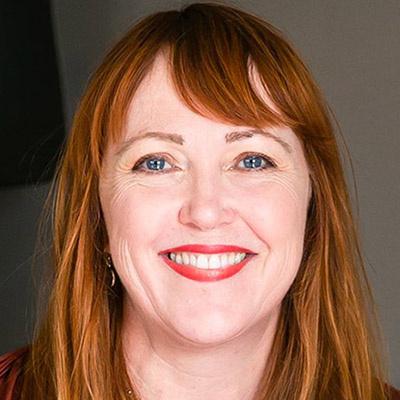
Kraeger, P., Ridzi, F., Phillips, R. & Dilworth, K. (Eds.) (2024). Placed-Based Philanthropic Institutions and Community Development. Local Development and Society: Taylor and Francis.
Dilworth, K (2023) Philanthropy and Fundraising The Encyclopedia of Libraries, Librarianship, and Information Science, Elsevier.
Zeri, H., Nunan, L., Fawn, O., Gloyeske, N., Guardado, E., Heinig, I., … Ware, J. (2024). Connecting communities through Student-led service-learning approaches: Perspectives from students in action coaches and an illustrative team case study. Local Development & Society, 1–16. https://doi.org/10.1080/26883597.2024.2337701
Dimmick, A., Walter, R., Collins, H., & Ware, J. (2024). Monon neighborhood livability study Local Development & Society, 1–33. https://doi.org/10.1080/26883597.2024.2315305
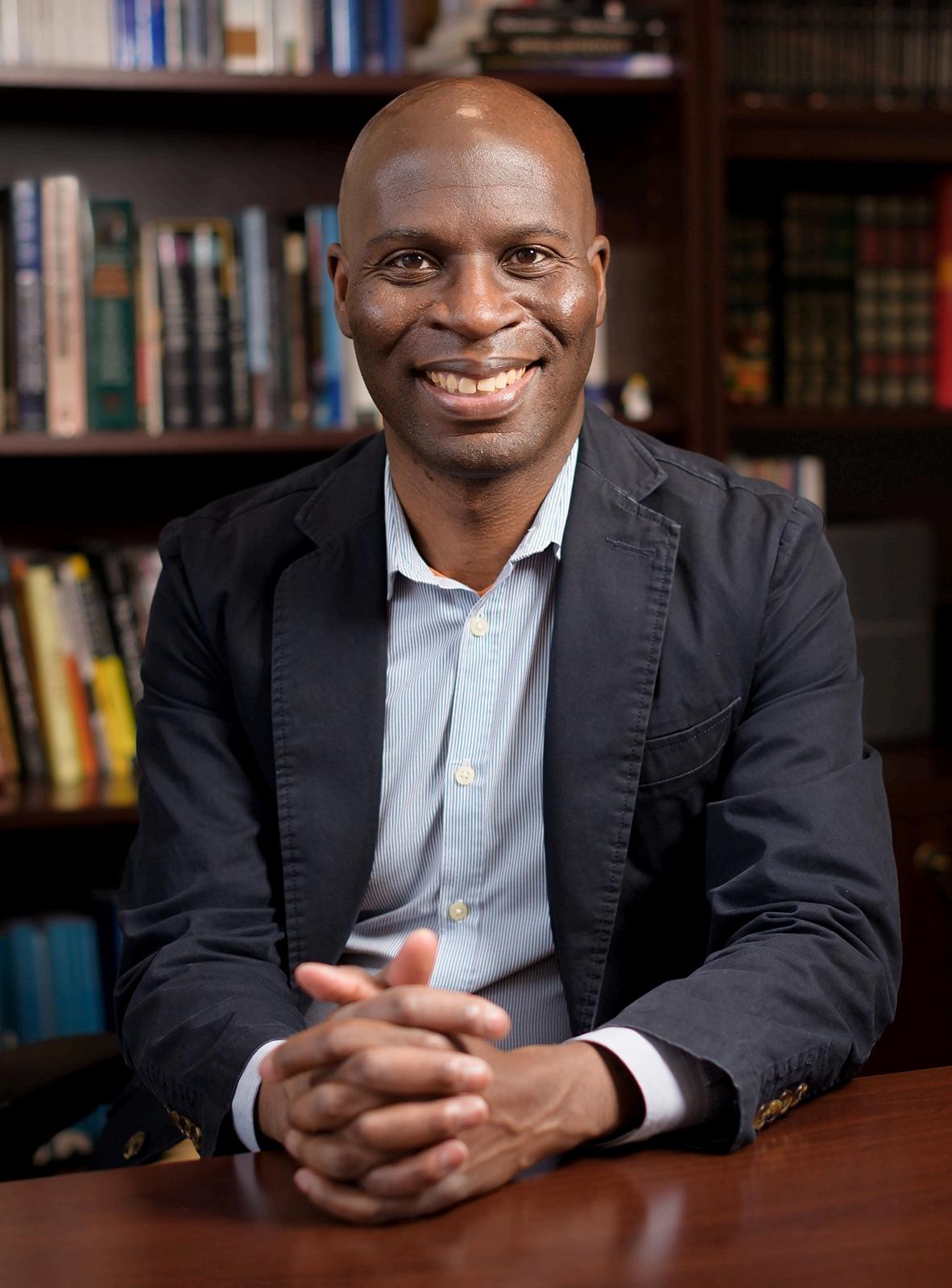
Below: Dr. Ware with his students and community members at the wall raising for a Habitat for Humanity project his team participated in. Read more here.
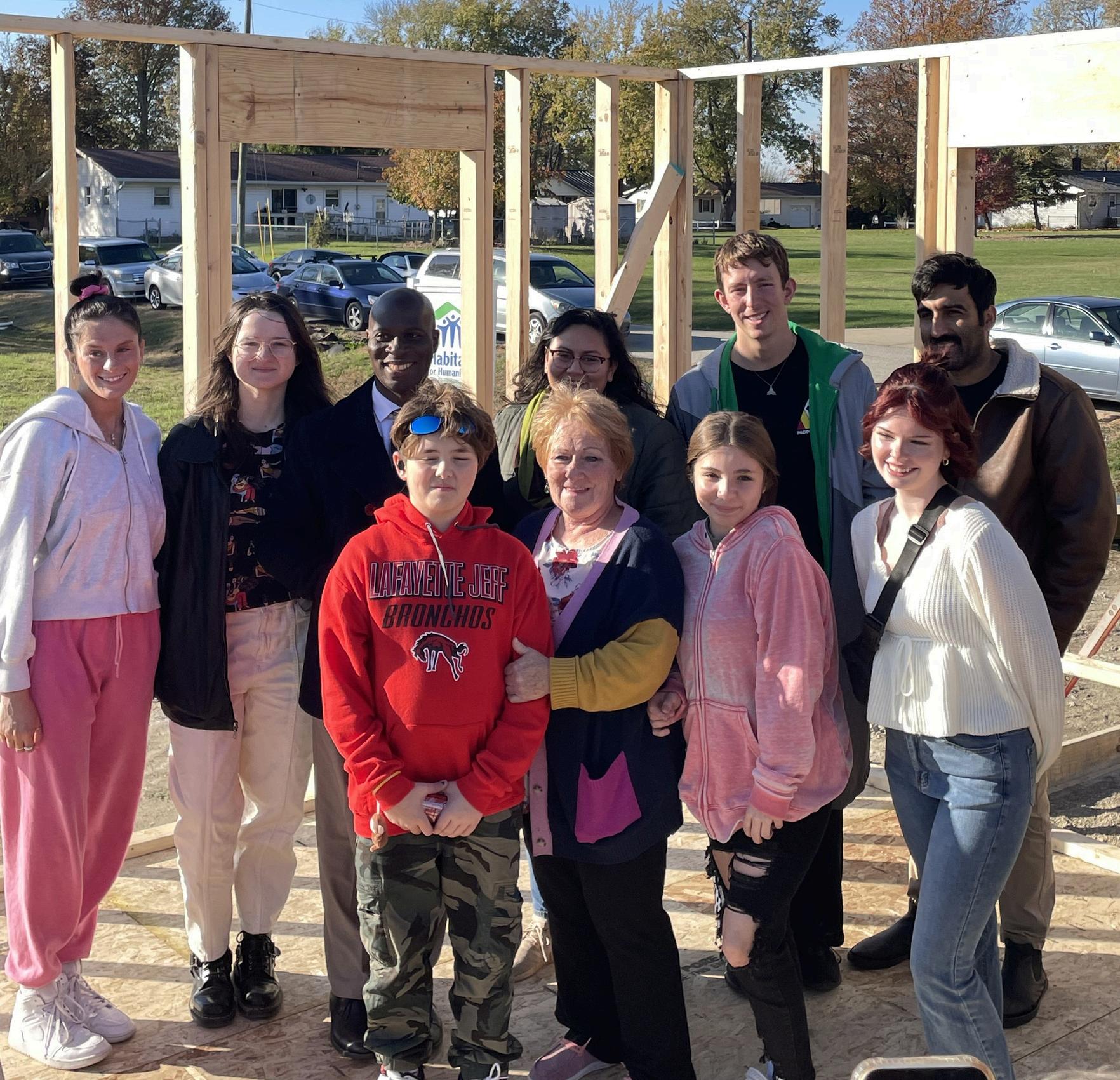
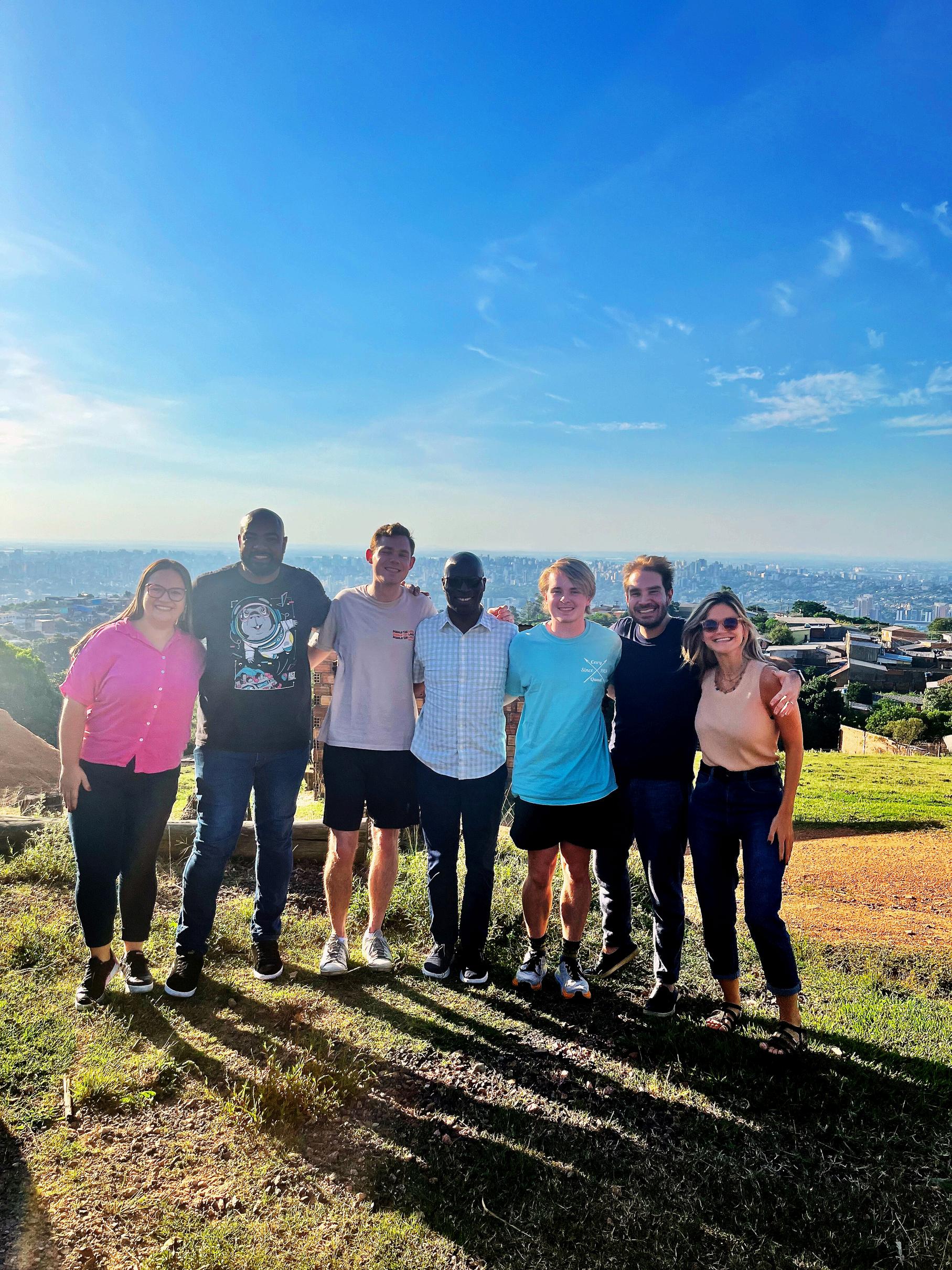
In Spring 2024 Dr. Ware traveled to Porto Alegre Brazil to crystalize a university-level partnership with Unisinos University and to establish new communitylevel partnerships between the Greater Lafayette area and Porto Alegre, and with non-profit organizations, such as the Formô Hub in the Morro da Cruz neighborhood. JMHC students, Ian Heinig and Luke Harrison co-presented with Dr. Ware at the Instituto Caldeira. These two leader-scholars discussed their roles and impact as middle and high school coaches via the Multiplying Good students in (SIA) program.
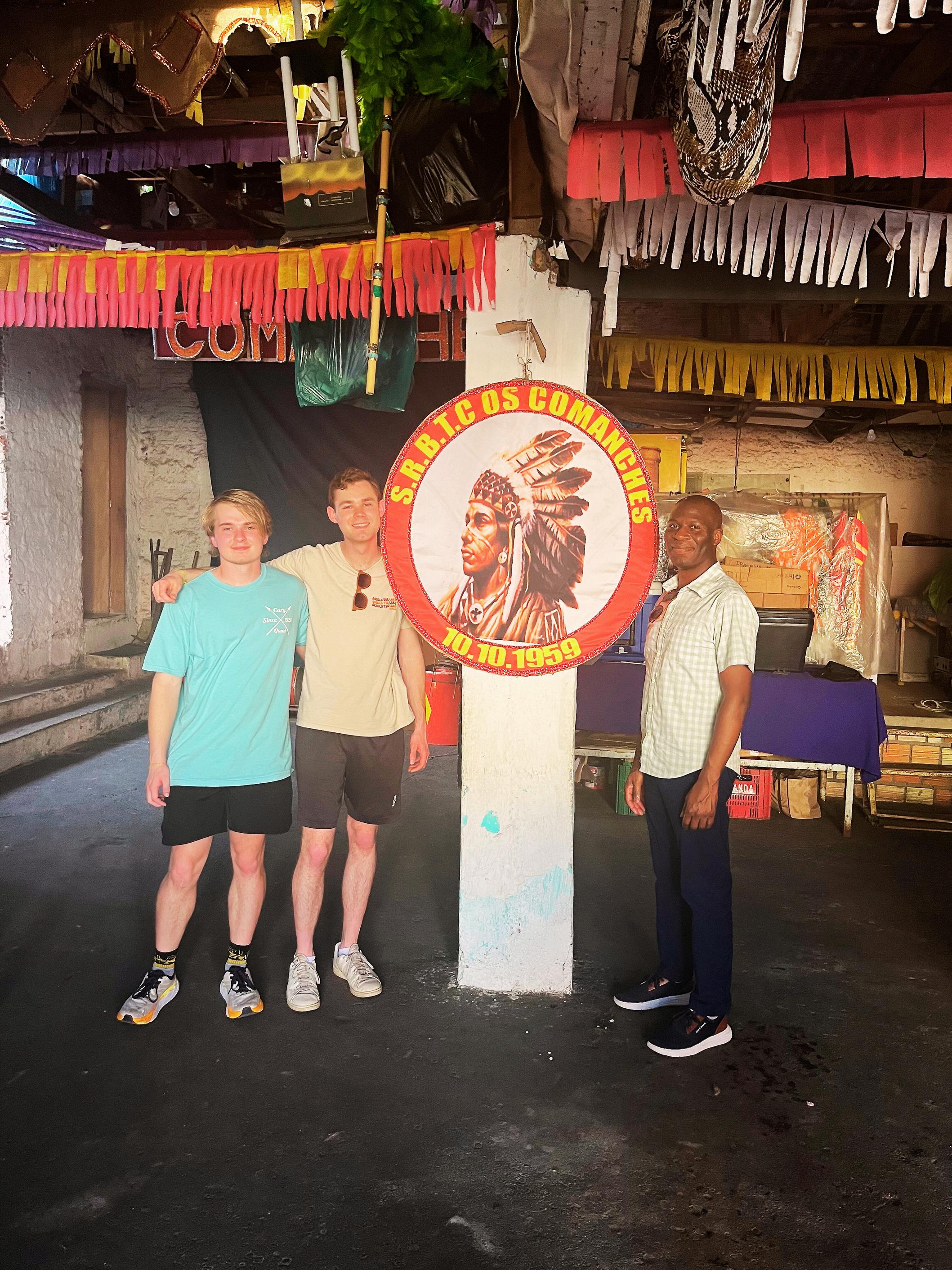
Student presentations at The National Conference on Undergraduate Research (NCUR), 2024
"Mapping Affordable Housing: Advancing Lafayette's Housing Stability through Automated Data Integration and Analysis,"
Poster presentation by Connor Underwood and Amit Manchella (College of Science – Computer Science)
"Polk Directory Indicators as Factors of Transiency in Lafayette, IN, Neighborhoods,"
Oral presentation by Alexis (Lexi) Ogrinz (College of Science, Computer Science) and Joy Gao (College of Science, Data Science and Statistics)
"Data-Driven Solutions for Community Development: Bridging the Eviction Data Gap in Lafayette, IN through Data Automation and Analysis,"
Poster presentation by Cy Logan, Vanamali Vemparala, and Vijay Vittal (College of Science, Computer Science)
"Unlocking the potential of community-based services to promote holistic life outcomes for children with autism and developmental disabilities,"
Poster presentation by Haley Zeri (Health and Human Sciences, Psychology)
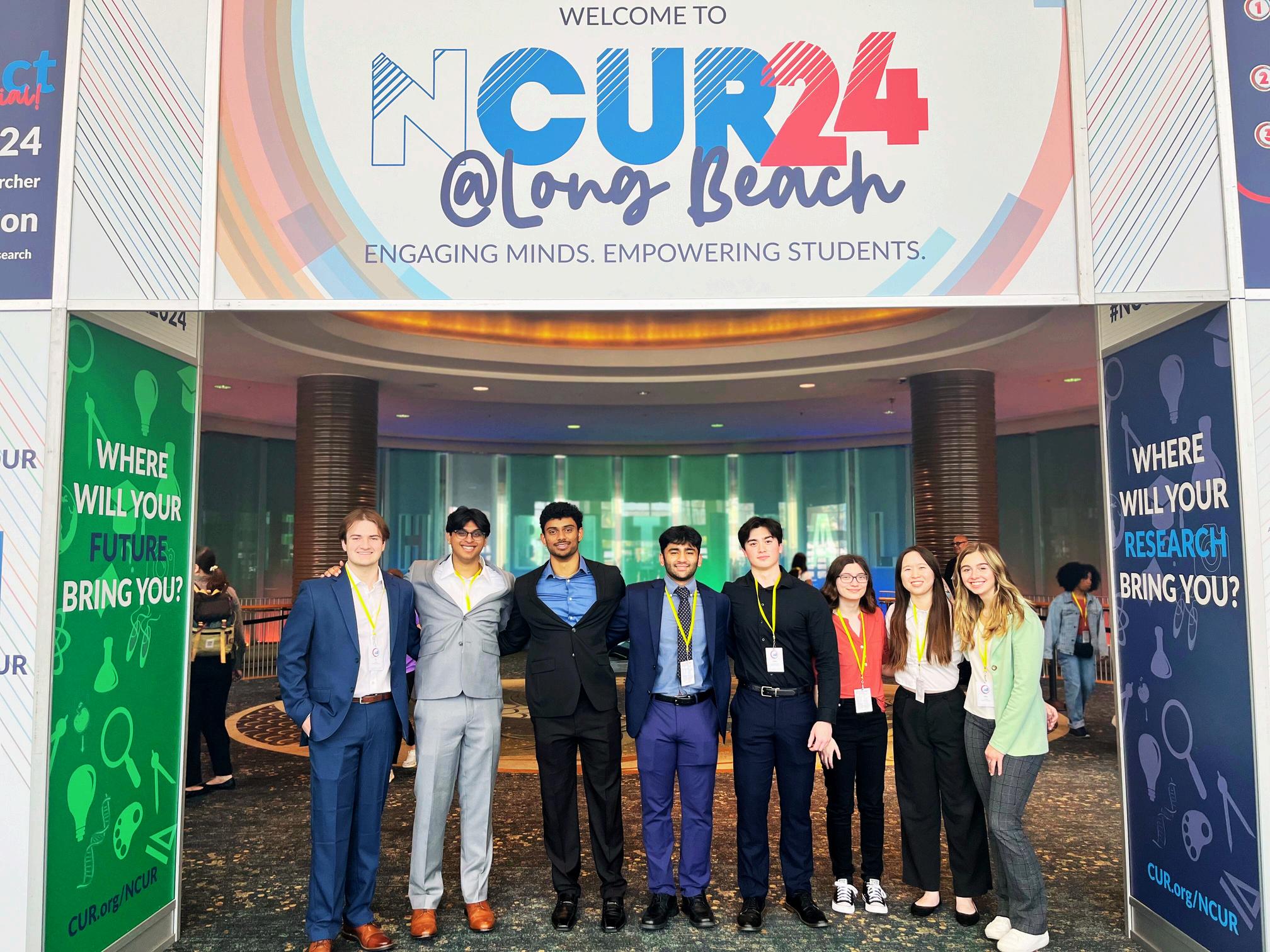

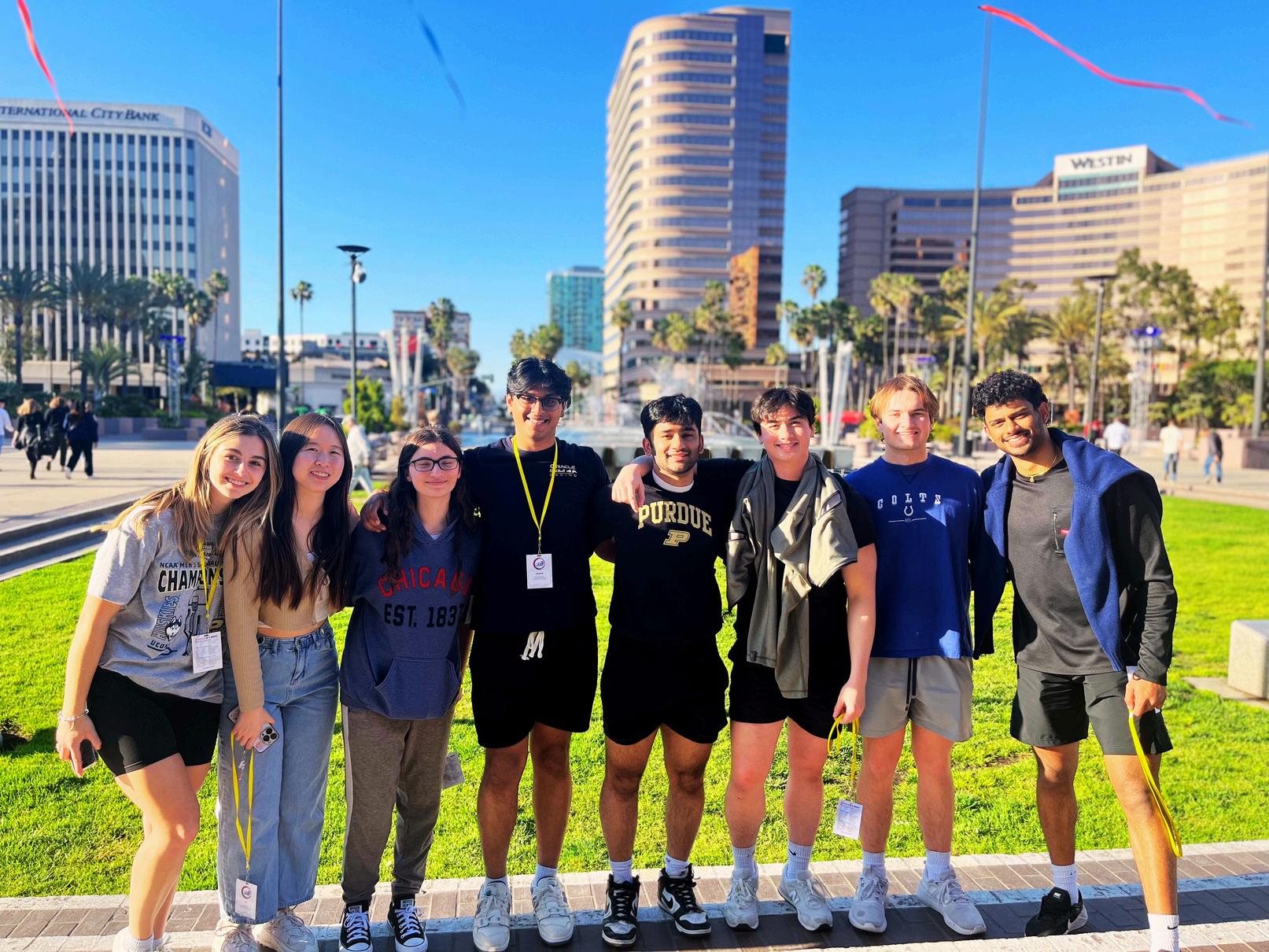
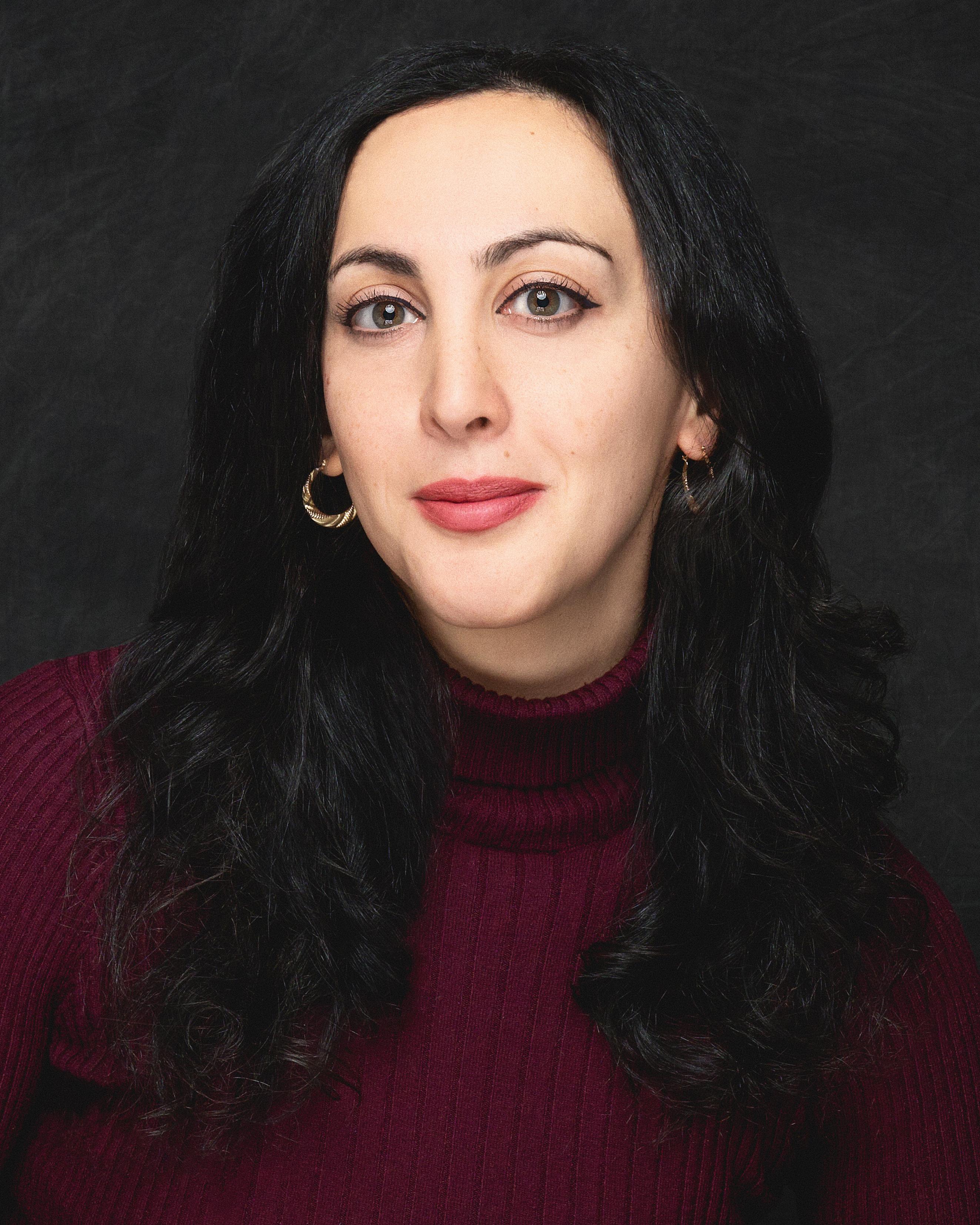
Lindsay Weinberg, “Rethinking Fairness: An Interdisciplinary Survey of Critiques of Hegemonic ML Fairness Approaches,” Journal of Artificial Intelligence Research 74 (2022): 75- 109.
Lindsay Weinberg, “From Smart Cities to Wise Cities: Studying Abroad in Digital Urban Space,” Frontiers: International Journal of Study Abroad 34, no. 2 (2022): 1126.
“Power BI and the Digitization of Danish Higher Education,” European Association for the Study of Science and Technology and the Society for Social Studies of Science, Amsterdam, the Netherlands, July 2024
“World-Readiness: DEI, Intercultural Learning, & Ethics in Student Experience” (co-presenters: Anish Vanaik, Nathan Swanson, Kathryn Dilworth; Megha Anwer), Conference on General Education, Pedagogy, and Assessments, American Association of Colleges and Universities, New Orleans, February 2023
“Mental Health and the Quantified Student,” Surveillance & Society Conference, Erasmus University Rotterdam, the Netherlands, 2022
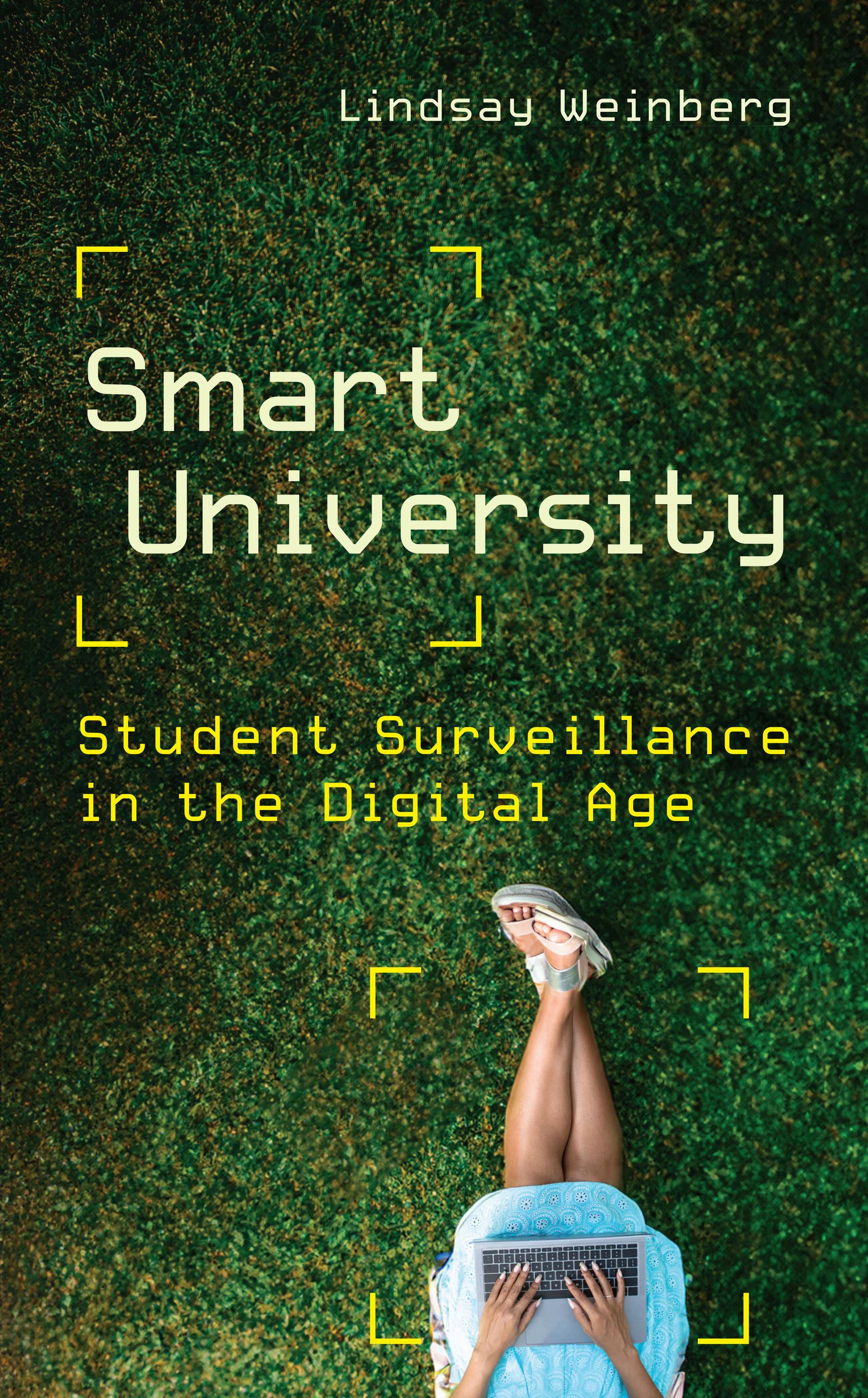
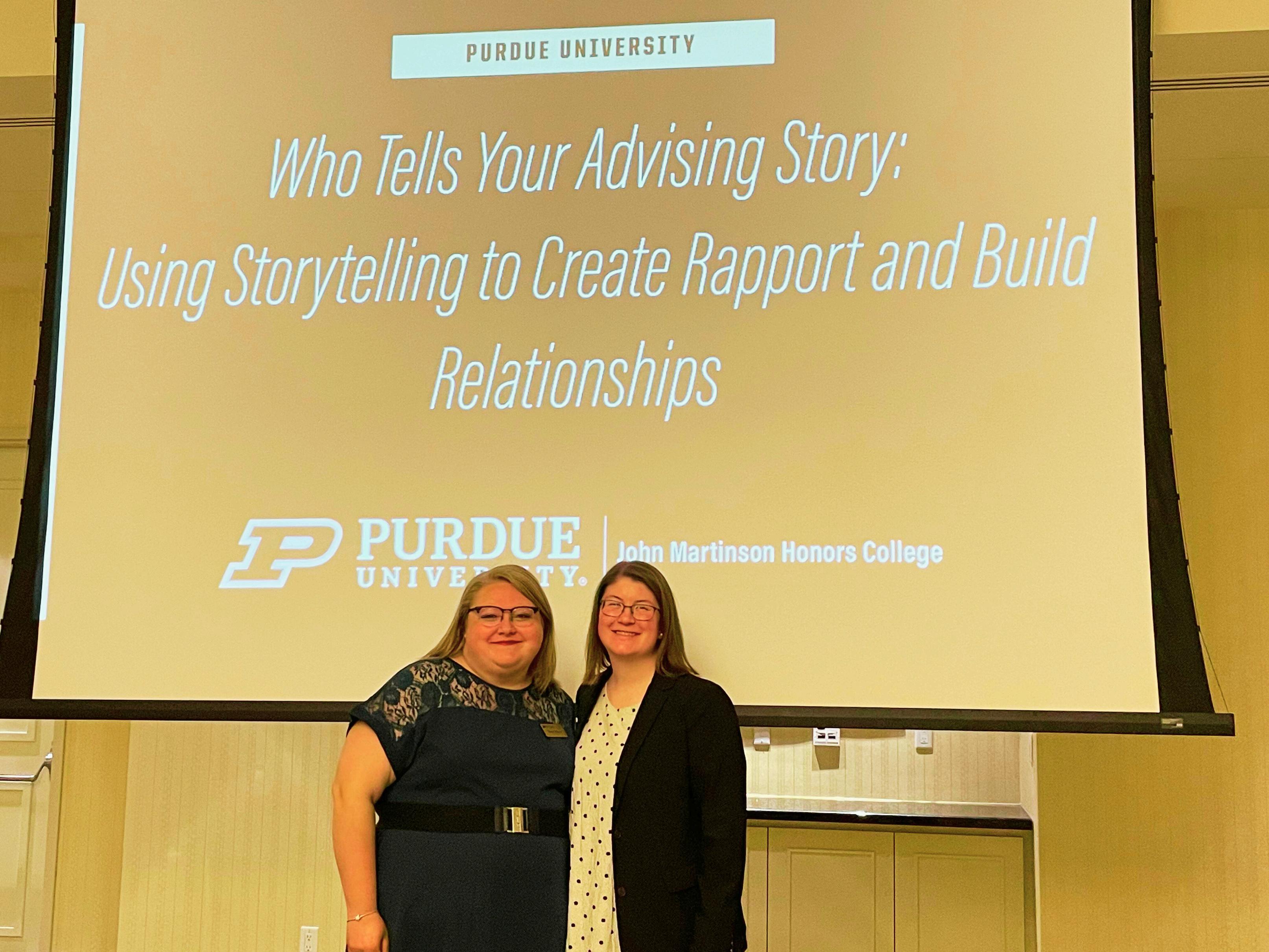
Honors Advisor
EMILYSHEETZ
Honors Advisor
Alyssa Wagner (Advisor, College of Agriculture, College of Education, and College of Engineering) and Emily Sheetz (Advisor, Purdue Polytechnic Institute, Exploratory Studies, and College of Engineering) presented “Who Tells Your Advising Story: Using Storytelling to Create Rapport and Build Relationships” at the NACADA Region 5 conference in Windsor, Ontario, Canada in April 2023. Their presentation focused on how storytelling can be helpful in advisor interactions with students and colleagues. Through examples of personal stories and by Walter Fisher’s communication theory of narrative paradigm, attendees participated in a hands-on learning experience where they learned how to help their college-aged students further their development of socialemotional learning (SEL), empathy towards others, decision making, and self-confidence. Overall, the presentation went well with Alyssa and Emily receiving tremendous positive feedback from colleagues all over the region, including Wisconsin, Illinois, Indiana, Michigan, Ohio, Ontario, and Nunavut. They also received several shout-outs during multiple other sessions throughout the rest of the conference. They have also been invited to present at the NACADA Annual Conference in Orlando, Florida and the 58th Annual NCHC Conference in Chicago, Illinois.
Honors Advisor
ONYXUZOMAH
Honors Advisor
Honors Advisor
Our presentation, “Safe House Advising”, introduces a hypothetical fourth foundation to academic advising: the Individual. It’s defined as the belief that every student is unique and requires tailored advising to get to graduation. It’s also the belief that every student enters college with pre-determined thoughts and motivations and by unpacking those pre-determined thoughts through asking questions, meeting

regularly, and showing genuine interest, we can encourage students to explore beyond their major and develop into the best version of themselves. To go beyond the academic setting, we propose using a trauma informed approach to academic advising. Dr. Dana Milakovic explains that trauma is exposure to an event, series of events, or set of circumstances that is experienced by an individual as physically or emotionally harmful or threatening. By considering those circumstances and experiences we have a better understanding of how to advise students. We challenge students to learn to their fullest potential by helping cultivate a space where they can "relax into learning" and feel safe and empowered so when they are challenged academically, they continue to seek our support and thrive.
As far as we know it was received well and folks were interested. We had a few attendees and presenters come up to us after and give really nice compliments, which made us feel like folks understood the message we were sending.

The Bravo Award Program serves to highlight the excellence that exists in all areas and job functions across the University and is designed to provide recognition and rewards for substantial accomplishments achieved by Purdue staff employees that extend well beyond regular work responsibilities. The Bravo Awards recognize excellence and exceptional job performance in 1 of 4 components established by the University: Moving the University Forward, Operational Excellence, Innovation/Creativity, Fiscal Stewardship.
This was the college’s fourth year in partnering with the Bravo Award Program to recognize staff excellence. Our previous Bravo Award recipients include Jordan Meyer, Mike Morton, Dani Parsons, Jess Ramsey, Tracy Hieatt, and Jasmine Pruitt. Today, we announce the Bravo Award recipient who was nominated in the category of ‘moving the university forward’, for their countless positive contributions and tireless efforts advance the vision and mission of the college.
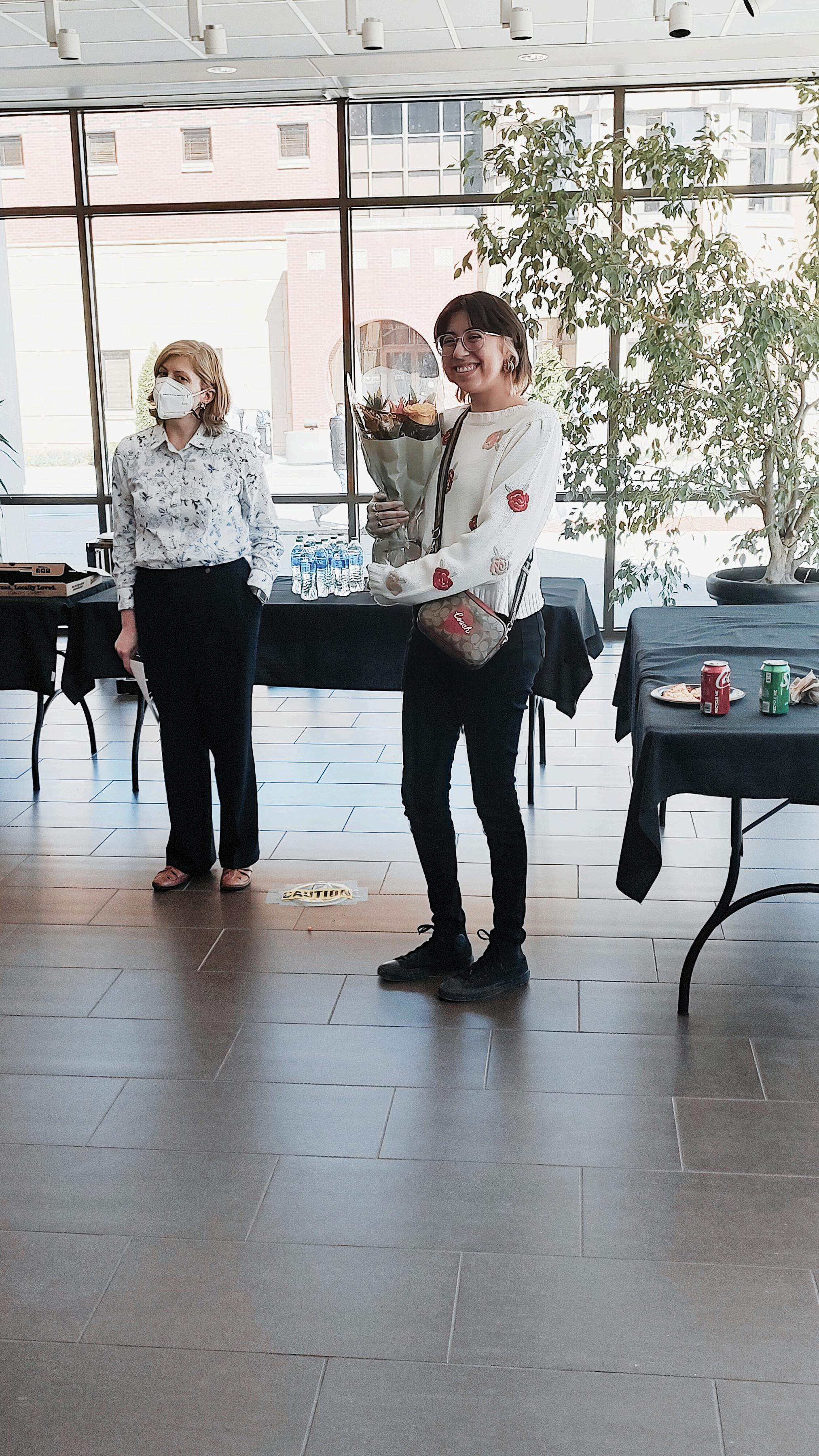
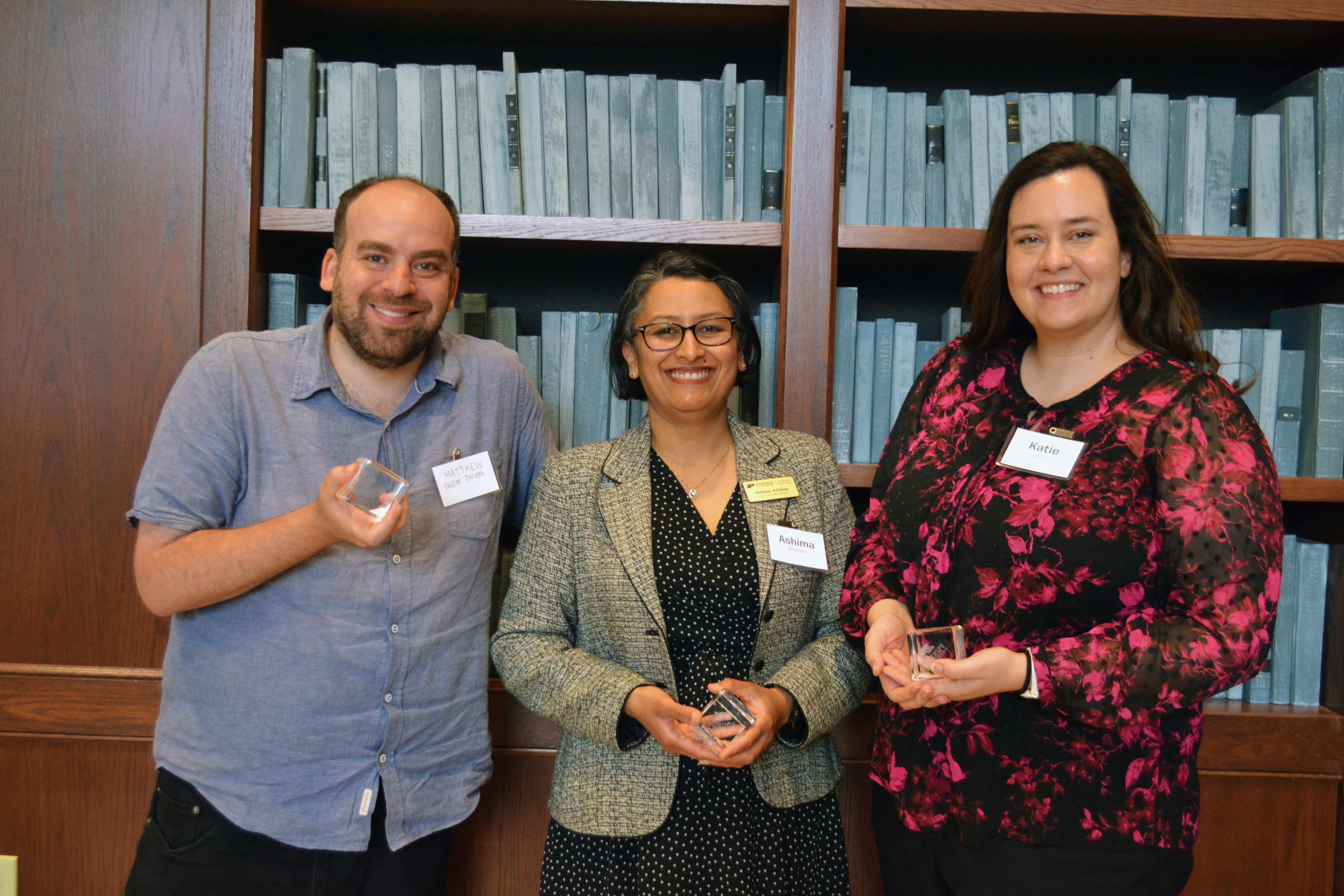
Dr. Matthew Pessar Joseph, Post-doctoral Research Fellow, was recognized for his wideranging programmatic contributions that extend the JMHC’s Belonging, Equity, and Inclusion (BEI) goals to the Greater Lafayette and Indianapolis communities. Through the “Think Local” project, supported by the NEH’s Indiana INcommon grant (2023), Dr Joseph engaged students from Purdue University, Purdue Polytechnic High School, Ivy Tech Community College, and community members in walking tours and museum visits dedicated to exploring Indiana’s often overlooked African American History. He also also supported the creation of a new JMHC course-cluster titled “Across Differences”.
Dr. Krishna was recognized for her dedication to inclusive and equitable mentorship of students through the Urban Matters Lab. Supported by two grants in 2023 (the Research Project Grant from the Butler Center and the 2023 Seed Grant from the Office of Diversity, Inclusion, and Belonging), students in the lab have produced surveys, archival images, maps, documents, and other data that help tell the story of Black heritage sites in the community. Dr. Krishna and three of her students presented their work at the 2023 Preserving Historic Places state conference in Muncie, Indiana.

Dr. Jarriel was recognized for her exceptional contribution to the redesign and improvement of the JMHC’s First-Year Experience (FYE). The FYE redesign supports the college’s mission to foster worldreadiness in its students by helping them build a love of learning, explore interdisciplinarity across diverse backgrounds, and find a community of support in honors. Beginning in fall 2022, Dr. Jarriel engaged in extensive collaboration with honors faculty to revamp the curriculum, taking on a leadership role in its revision and successful implementation. Her efforts positively impacted 927 first-year students, 128 upper-division honors mentors, and 17 Honors faculty

Second Year Leadership Development Award
Mia Schmetter
Second Year Undergraduate Research and Creative Endeavors
Leanne Alsatie
Third Year Leadership Development Award
Natalie Horgan
Outstanding Senior
Sarah Bhuiya
Second Year
Community and Global Engagement Award
John Robbins
Third Year
Belonging, Equity and Inclusion Award
Olan Sodunke
Third Year Interdisciplinary Academics Award
Abhirami Narayanan
Outstanding Senior
Natalie Penry
Second Year Interdisciplinary Academics Award
Joshua Jackson
Third Year Community and Global Engagement Award
Elsa Davis
Third Year
Undergraduate Research and Creative Endeavors Award
Elsa Davis


Outstanding Research Mentor Award
Dr. Zahra Tehrani
Third-Year Interdisciplinary Academics Pillar Award
Megan Johnson
Third-Year Leadership Development Pillar Award
Cynthia Wan
Second-Year Community and Global Experiences Pillar Award
Charlotte Yeung
Outstanding Senior Pillar Award
Outstanding Senior Pillar Award
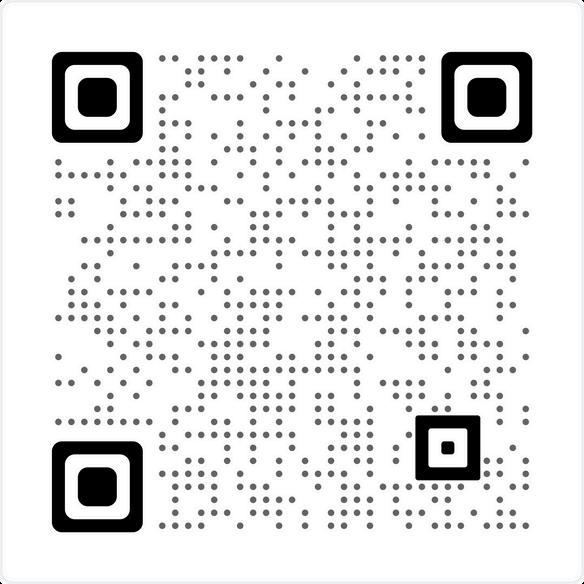
Laura Chuppe
Third-Year Community and Global Experiences Pillar Award
Sofia Hrubiak
Second-Year Leadership Development Pillar Award
Reilly Bresnahan
Second-Year Interdisciplinary Academics Pillar Award
Samuel Gray
Bianca Caminada
Third-Year Undergraduate Research or Creative Endeavors Pillar Award
Charles King
Second-Year Undergraduate Research or Creative Endeavors Pillar Award
Jenna Schoonmaker
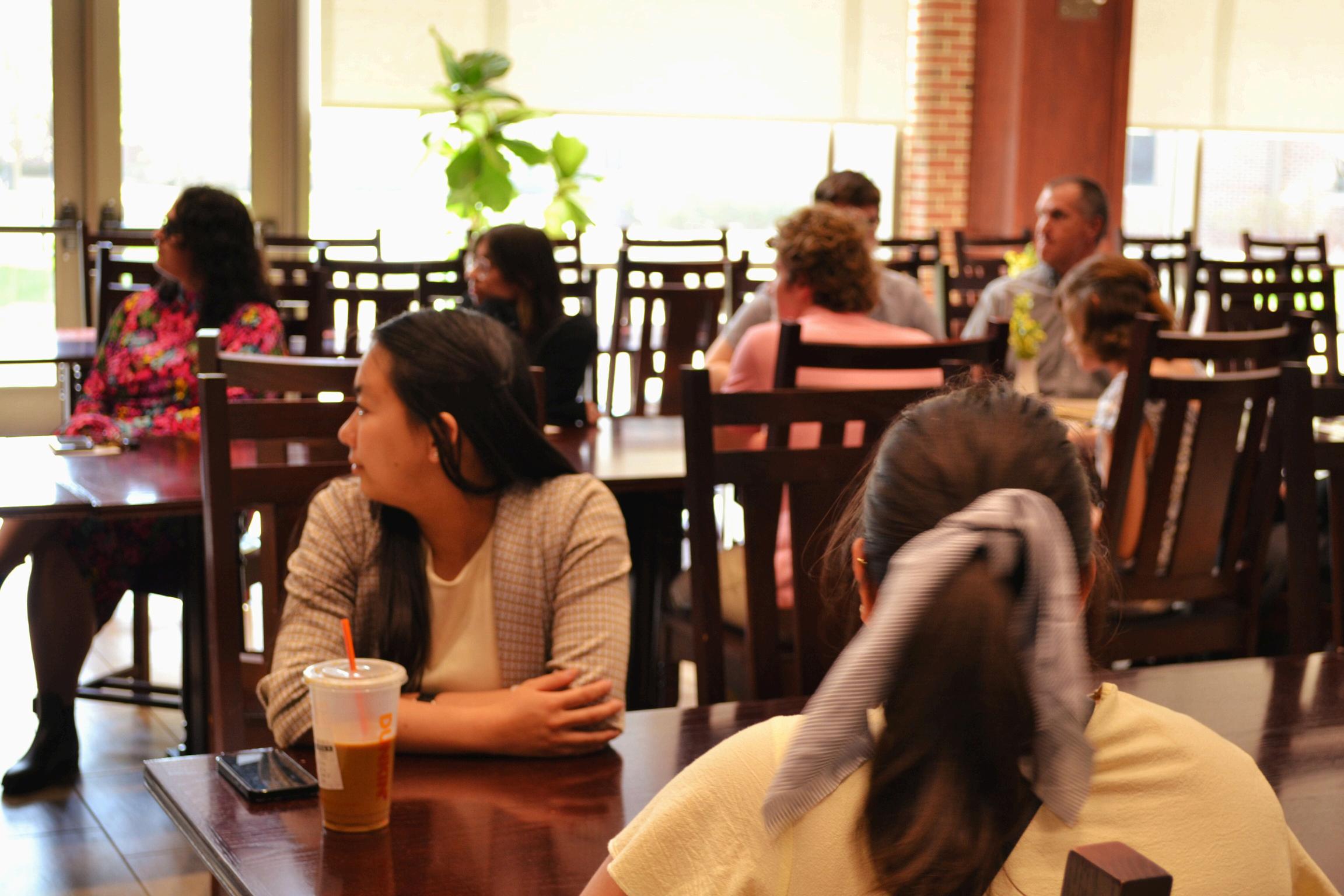


The John Martinson Honors College’s Research Breakthrough Award ($50,000-$75,000) aims to support Purdue faculty conducting high-impact research or creative projects with a team of 5-8 JMHC students In 2023, 3 teams were recipients of this award, with Dr. Katie Jarriel the only JMHC faculty recipient.
During COVID, small island communities in Oceania faced hardship as the global disruption of the supply chain meant that ships bring vital supplies were delayed or canceled. These communities also face devastating effects from climate change due to sea level rise, loss of biodiversity, and the increase of tropical storms. Community members and researchers have been working together to revitalize traditional seafaring, which has the potential to re-establish longstanding community connections via sustainable transportation. While living knowledge and oral histories provide a basis for restored seafaring practices, how did islanders in the deep past adapt to environmental disruption, and how might that help today's island communities?
That's where Project oCEANIC comes in. Project oCEANIC, which stands for Computing Environmental Adaptation and Navigation in Island Communities, uses computer modeling to understand how past seafarers navigated in different time periods and under varying environmental conditions. The team of eight undergraduate students, along with Dr. Katie Jarriel, created an agent-based model using archaeological, historical, and environmental data that can simulate voyages from different time periods. This summer, they traveled to the University of Hawai'i at Hilo to talk with traditional navigators, refine their model, and collaborate with other graduate and undergraduate students who are recording oral histories of traditional seafaring from members of island communities. The team plans to release an interactive version of the model that will allow researchers to understand seafaring patterns throughout history and may also be used by seafarers to complement traditional knowledge and adapt to the effects of climate change.

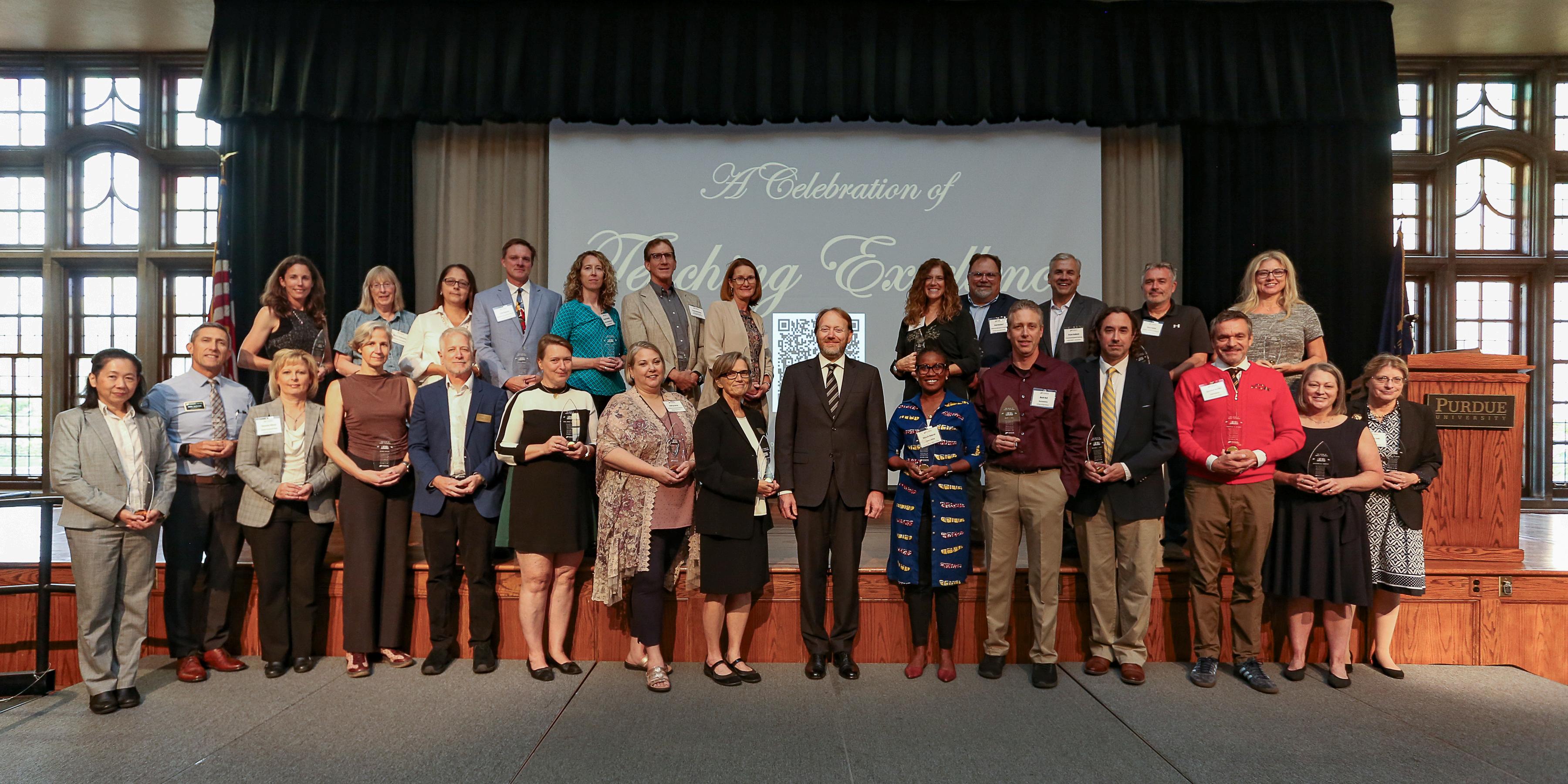
Associate Dean for Academic and International Affairs and Clinical Associate Professor
In September 2023 Purdue inducted 38 instructors into its Book of Great Teachers, which honors outstanding teaching faculty who have demonstrated sustained excellence in the classroom. The induction ceremony, conducted as part of the annual Celebration of Teaching Excellence, is held every five years. The event took place Tuesday, Sept. 26 in Purdue Memorial Union's North Ballroom. Automatically included in the Book of Great Teachers are professors with 10 years of service to the university who previously have been honored with the Charles B. Murphy Outstanding Undergraduate Teaching Award. Other inductees have at least 15 years of service to the university and were nominated by students, alumni and colleagues Everyone inducted into the Book of Great Teachers is listed on a bronze-and-walnut wall display in the west foyer of the Union. The display was first unveiled in 1999. Including the most recently inducted professors, the book includes 467 names.
Dr. Natasha Duncan is Associate Dean for Academic and International Affairs and Clinical Associate Professor in the Honors College. Dr. Duncan was a recipient of Purdue University’s prestigious Murphy Award in 2021. During the pandemic, she helped create Global House, a way for online Purdue Honors College students to interact with one another and create community while they were in locations all over the world
She earned her master’s degree and PhD from Purdue and joined the faculty in August 2016. Since then, she has designed 10 new courses for the Honors College and the College of Liberal Arts (where she held a joint appointment in 2016-18). Her research on international migration, borders and global economic relations has formed the cornerstone of her approach to educating students. In every course, she employs high-impact learning practices. values the role she plays in the holistic growth of students who enroll in the Honors College at Purdue University.
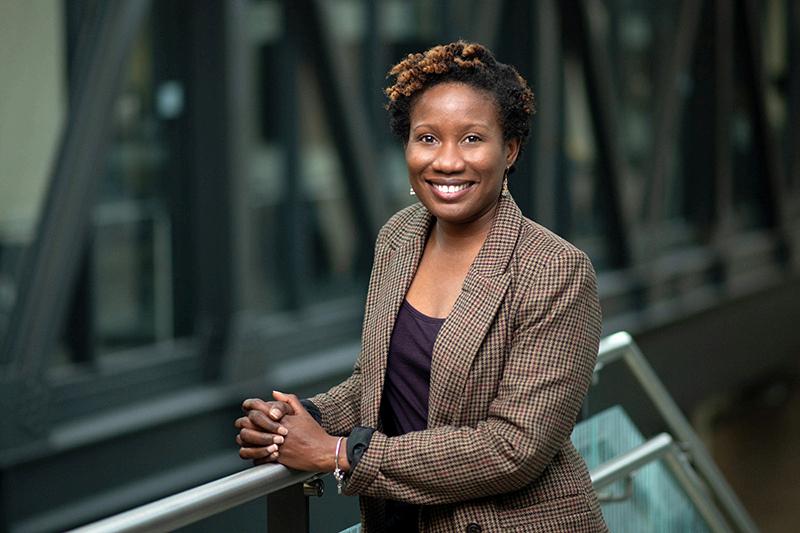
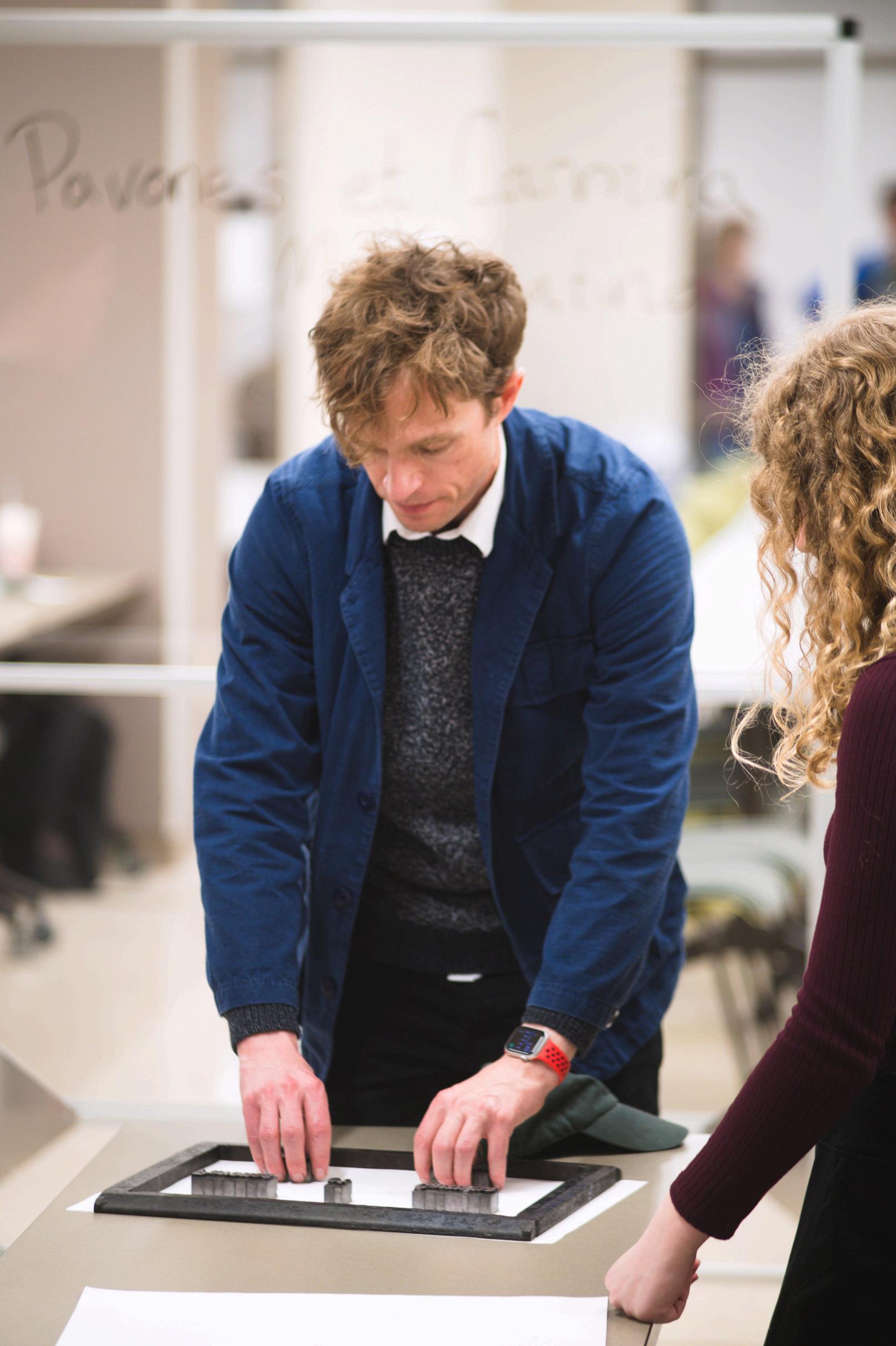
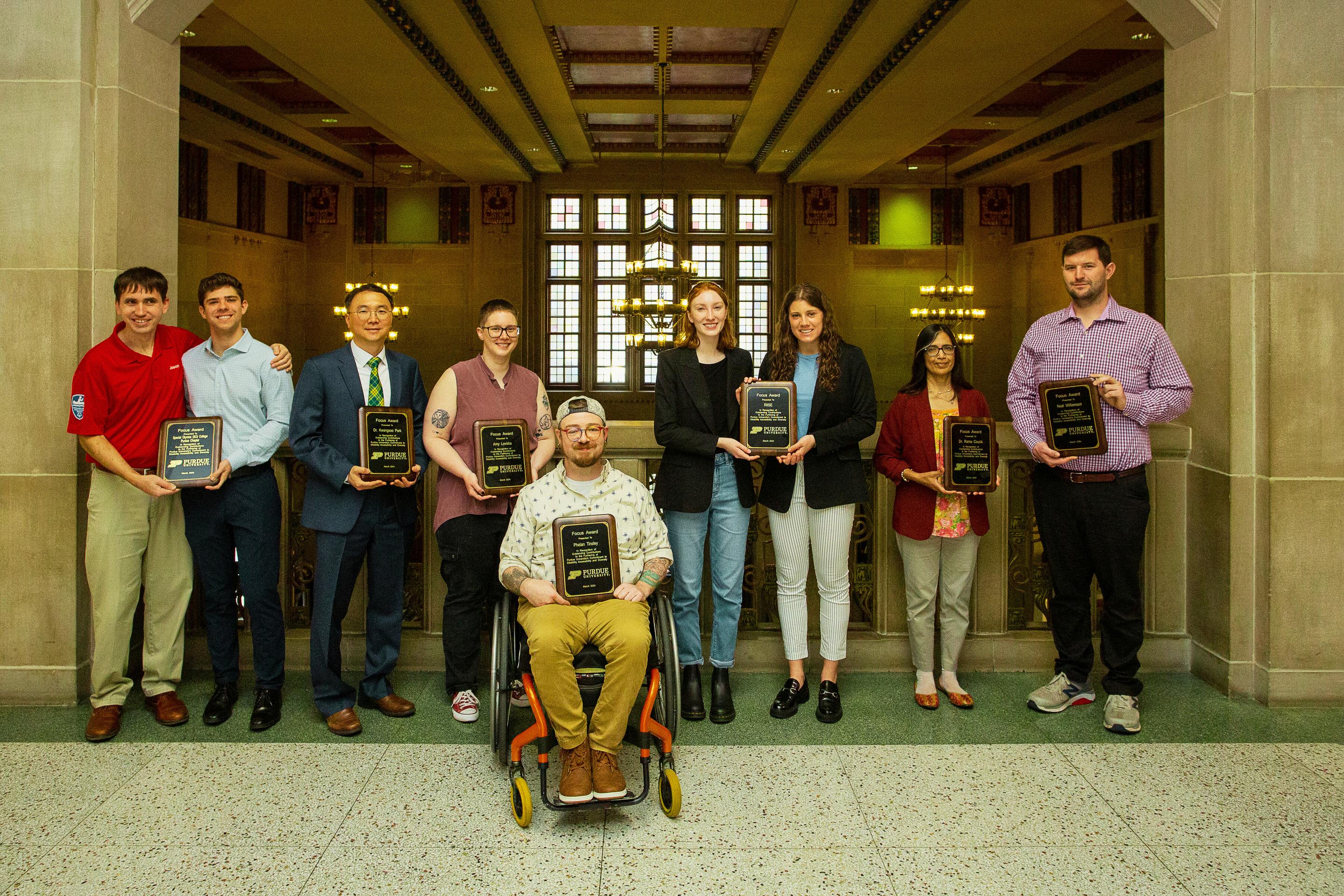
Dr. J. Peter Moore was selected to take part in an apprenticeship program at Hatch Show Print which is one of the oldest and most recognized letterpress print shops in the world. It is currently housed inside the Country Music Hall of Fame in Nashville, TN, where it is both an education center and an operating print shop.
Dr. Moore's apprenticeship ran for two weeks, Dec 4 through 15th, 2023. He was trained on their presses, and was given a client for whom he created a promotional poster.
Some of the most iconic images in the history of American popular music come from Hatch posters!
Phelan Tinsley is one of the John Martinson Honors College’s advisors. Tinsley, along with the other JMHC advisors aid students in navigating both academics and personal lives. He is also the 2024 recipient of the Focus Award.
The Focus Award is awarded annually during Indiana’s Disability Awareness Month. It recognizes those affiliated with Purdue University who have made an outstanding contribution to the furthering of Purdue’s commitment to disability accessibility and disability diversity. Tinsley has been a wheelchair user for ten years and holds a strong passion for advocating for accessibility and disability rights
During his time at Purdue, Tinsley has been a consistent voice advocating for improvements to Purdue’s campus to become more accessible. However, accessibility is something the JMHC and Purdue as a whole falls short of in many respects. For example, Tinsley works in the Honors College and Residents North building located on Third Street. Sometimes, Tinsley and his co-workers go to Starbucks on the other side of Third Street from the Honors College. Before Third Street was an all pedestrian street, it was a regular street for cars. Thus, the sidewalk is raised above the street. So, for wheelchair users like Tinsley, there is no way to cross Third Street other than at the stop light. So, there is no way wheelchair users can use the renovated pedestrian street

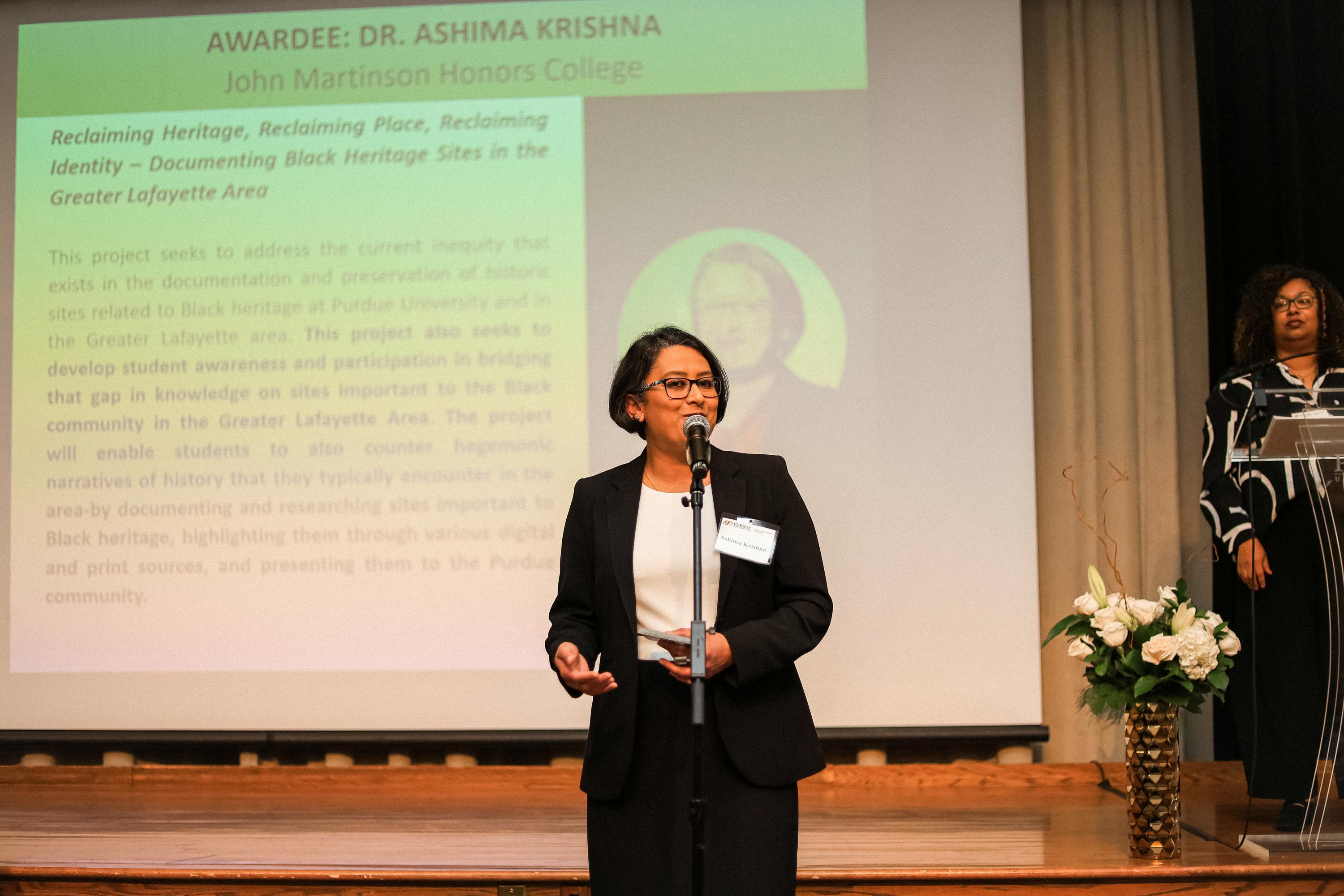
This award is a recognition from Purdue’s Center for Instructional Excellence. Dr. Ware was awarded this based on his work developing a model for performance-based experiential education (HONR 312: Jazz) impressed the judges immensely.
This award, in the amount of $1,000, is to recognize and inspire innovative teaching.
This award, a recognition from Purdue University’s Office of Diversity, Inclusion, and Belonging, recognizes a Purdue college for their advancement of the vision and mission of DEI.
This grant is a recognition of Dr Ashima Krishna’s research project titled “Reclaiming Heritage, Reclaiming Place, Reclaiming Identity: Documenting Black Heritage Sites in the Greater Lafayette Area”.
This grant is awarded by Purdue University’s Office of Diversity, Inclusion, and Belonging.
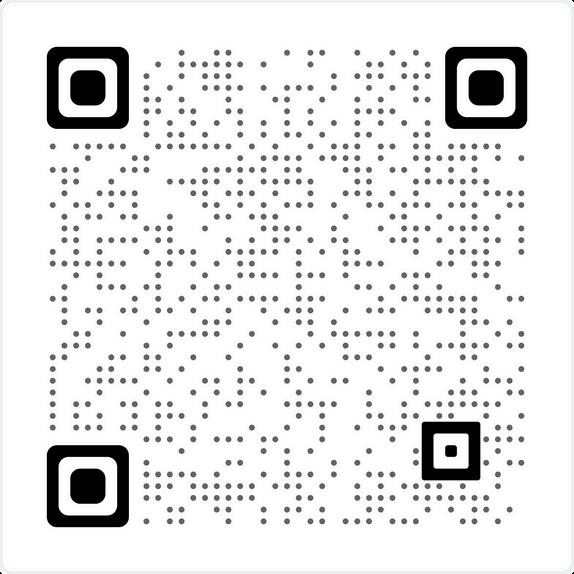



Dr Lindsay Weinberg
Dr. Ashima Krishna and Dr. Nathan Swanson
Dr. Megha Anwer
Dr. Pete Moore
Dr. Anish Vanaik and Dr. Dwaine Jengelley
Dr. Elizabeth Brite
Dr. Pete Moore
Dr. Ashima Krishna
Dr. Kristen Bellisario
Dr. Muiris MacGiollabhui
Dr. Anish Vanaik

Abigail Frank, a sophomore in Purdue's School of Aeronautical and Astronautical Engineering and the John Martinson Honors College, recently earned the highly coveted Goddard Keynote Scholarship. Abby is also a member of JMHC’s Leading Women Toward Space Careers program. Out of thousands of exceptional applicants from universities across the country, Frank was selected as the sole winner, earning her a substantial scholarship and the opportunity to deliver the keynote speech at the prestigious 67th Annual Dr. Robert H. Goddard Memorial Dinner (below).
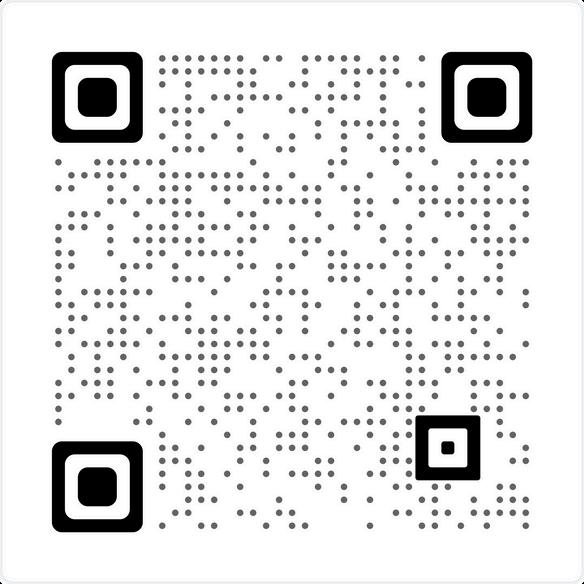

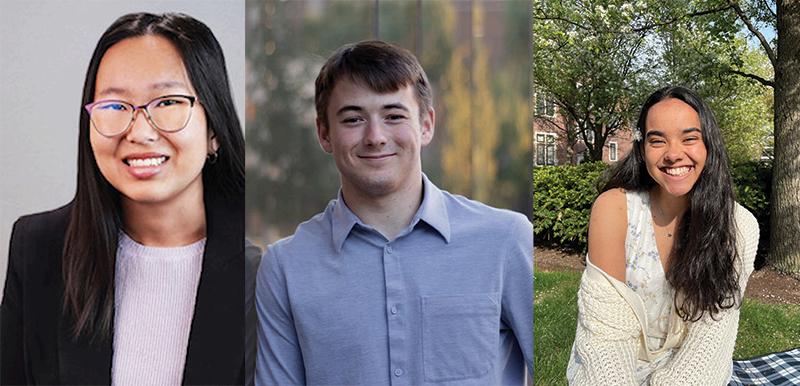

Noelle Naughton (left), Jay Fazioli (center), Abigail Soliven (right)
Purdue University juniors Jay Fazioli, Noelle Naughton, and Abigail Soliven have been named 2023 Goldwater Scholars. A thirst for research, discovering new ways to treat persistent illness, and solving problems through new knowledge is what propels these scholars and fuels their love of science. The Barry Goldwater Scholarship, which recognizes exceptional sophomores and juniors across the country, is the highest undergraduate honor of its kind. The scholarship program, in honor of Senator Barry Goldwater, was created to encourage students to pursue research careers in the natural sciences, engineering, and mathematics.
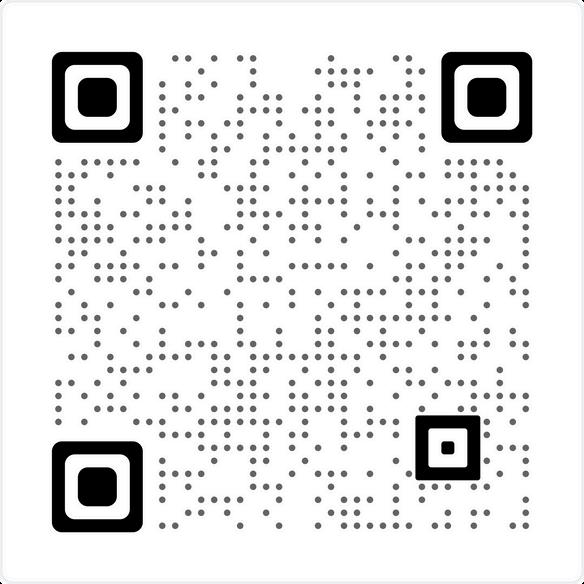
Charlotte Yeung’s resume boasts a lot of firsts: first on Amazon’s new release list for her children's book, Isabelle and the Magic Bird; founder and lead instructor for a poetry workshop series for women in Afghanistan, and the first Hongkongese American, John Martinson Honors College and Purdue student competing as a National Youth Poet Laureate finalist.

C E L E B R A T I N G 1 0 Y E A R S O F H O N O R S

Associate Professor of English and Director of Blue Sky Teaching and Learning Laboratory
The John Martinson Honors College celebrated its 10-year anniversary this past fall. Forging the Future: A History of the John Martinson Honors College: 2013-2023 commemorates this pivotal point. Dr. Emily Allen worked alongside student editors Jannine Huby and Pulkit Manchanda to lead a team of current and former Honors College students documenting the formation and history of the college. Contributors included: Mark Samuel Aronson, Elsa Davis, Isabelle Diaz, Jordyn Fink, Veronica Galles, Chole Gardner, Sean Giltmier, Kaitlyn Ming Hui Greer, Ella Hildebrand, Jannine Huby, Tanvi Inani, David Keen, Pulkit Manchanda, Jonathan E. Pfluger, Carissa Ray, Ella Stone, Kaitlin Stone, and Maria Vawter.
Forging the Future recounts the early days of the JMHC Back in the inaugural of the program, all first-year honors students were in the same HONR 19901/2 course. Each week during Fall 2013, all 556 first-year members of the Honors College would meet in Loeb Playhouse for lecture. In Spring 2014, they worked together in small project groups to produce local solutions to the global problems they learned about first semester. This structure took place before the construction of the Honors College and Residences buildings, which opened in 2016 and currently house the HONR courses.
Before coming to work for the Honors College at Purdue, Dr. Allen was already familiar with honors. In her undergrad years at UCLA, Dr. Allen was a member of the Honors Collegium, where she appreciated a close knit community that made the large university seem smaller. Years later, the opportunity arose for Dr. Allen to become the Associate Dean for Academic Affairs in Purdue’s new Honors College That is when the work really began for Dr. Allen and her colleagues, who started the task of creating what the Honors College would become at Purdue University. Forging the Future tells the story of how the many parts of the college began to form.
To create your own, choose a topic that interests you. It can be anything from fashion and beauty to travel and the news.
Dr. Allen first had the idea to create a book when the college began planning for its 10th anniversary. It is rare to start a brand-new college at an R1 institution, and Dr. Allen thought it would be meaningful for JMHC students to write the history of their own college. The book began as a Titanium House research project but quickly gained interest from students in other houses who joined the team. Forging the Future: A History of the John Martinson Honors College, 2013-2023 was published by Purdue University Press in 2024 and is available for purchase or free digital download on the press’s website: https://www.press.purdue.edu/9781612499451/forging-the-future/
Once you have your overall theme, you can start brainstorming the content. Just starting? Design a memorable masthead with an equally memorable name.
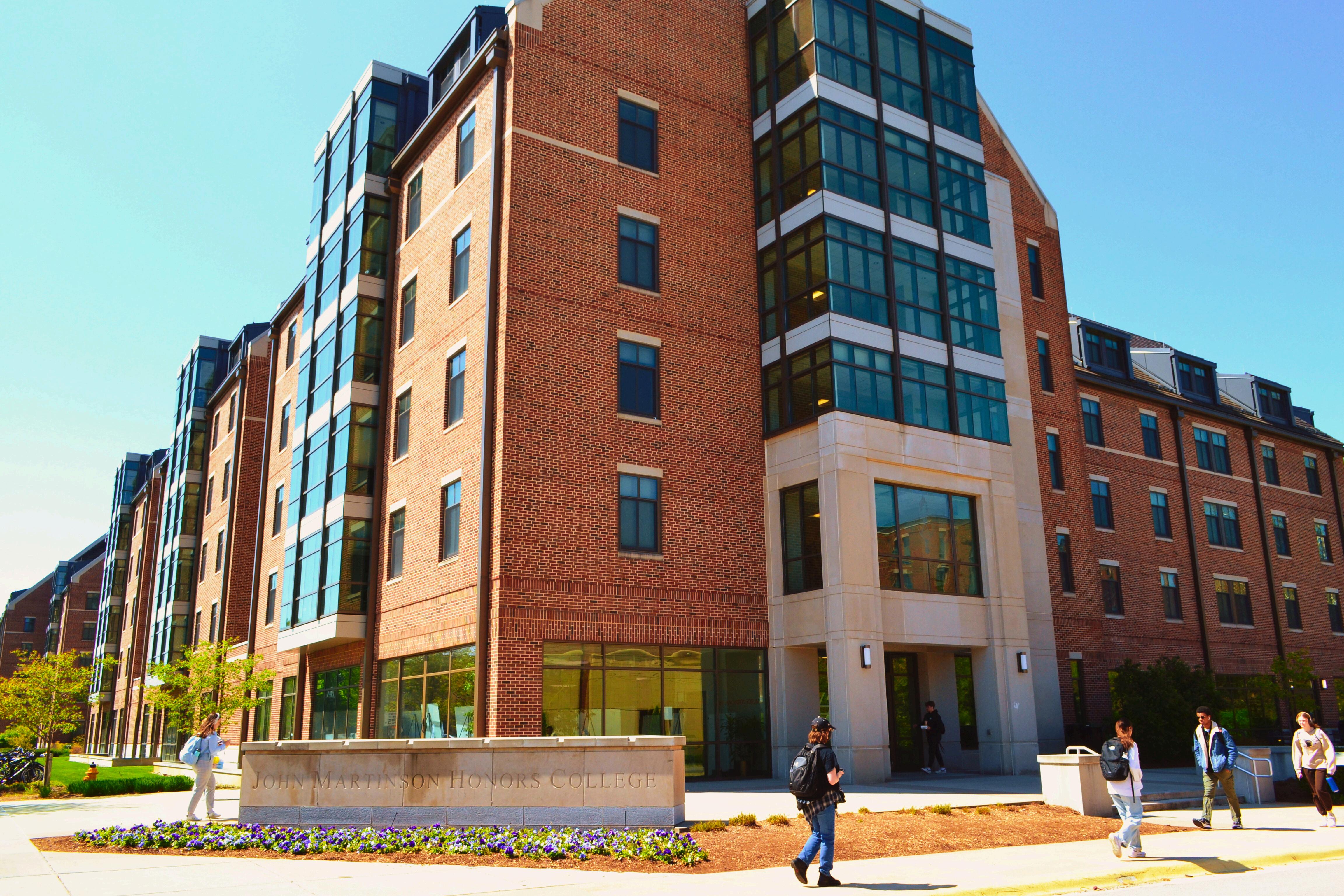

Temitope F Adeoye Olenloa, Ph D
Assistant Director of Blue Sky Lab and Clinical Assistant Professor
Megha Anwer, Ph.D.
Associate Dean for Belonging, Equity, and Inclusion and Clinical Associate Professor
Kristen Bellisario, Ph.D.
Clinical Assistant Professor; Faculty Fellow with Center for Global Soundscapes
Liz Brite, Ph.D
Clinical Associate Professor and Associate Head of Academic Affairs
Kathryn Dilworth, Ph.D.
Professor of Practice for Philanthropy and Executive Director of Strategic Relations
Natasha Duncan, Ph.D.
Associate Dean for Academic and International Affairs
Nicole Fadellin, Ph.D.
Visiting Clinical Assistant Professor
Katie Jarriel, Ph.D.
Clinical Assistant Professor
Dwaine Jengelley, Ph.D.
Clinical Assistant Professor & Director of Interdisciplinary Sports Studies Research Generator
Ashima Krishna, Ph.D.
Clinical Associate Professor, Editor, FORGE Magazine, and Director, Urban Matters Lab
Muiris MacGiollabhuí, Ph D
Clinical Assistant Professor
J. Peter Moore, Ph.D.
Clinical Assistant Professor and Director of PATTeRN Research Generator
Sanoar Rahman, Ph.D. Visiting Clinical Assistant Professor
Mayari Serrano, Ph.D. Visiting Clinical Assistant Professor
Christie Shee, Ph D Visiting Clinical Assistant Professor
Nathan Swanson, Ph.D. Clinical Assistant Professor & Director of Study Away
Zahra Tehrani, Ph.D. Clinical Assistant Professor
Anish Vanaik, Ph.D.
Clinical Associate Professor and Director of International Student Engagement
Jason Ware, Ph D
Clinical Associate Professor and Director of TREKS Research Generator
Adam Watkins, Ph.D.
Assistant Dean for Leadership Development and Clinical Associate Professor
Lindsay Weinberg, Ph.D.
Clinical Assistant Professor and Director of the Tech Justice Lab
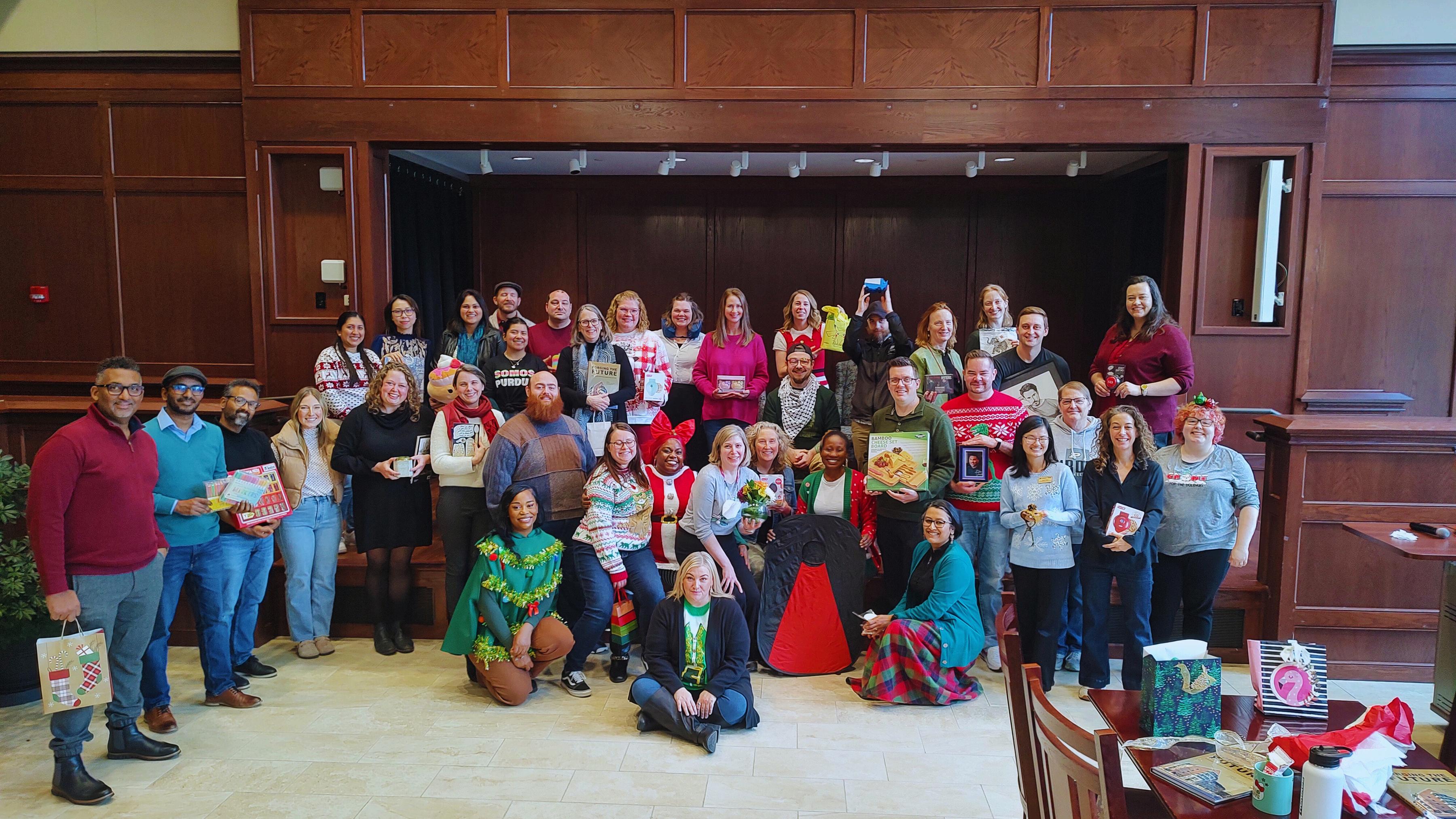
Emily Allen, Ph.D.
Director, Blue Sky Teaching & Learning Laboratory and Associate Professor of English
Kristina Bross, Ph.D.
Associate Dean of Research and Creative Endeavors, Professor of English
Andrew Archey
Matthew Church
Sara Hong
Mike Morton
Dani Parsons
Jasmine Pruitt
Jess Ramsey
Emily Sheetz
Grace Thompson
Phelan Tinsley
Onyx Uzomah
Alyssa Wagner
Leighton Buntain, PhD
Global and Intercultural Scholar-in-Residence
Matthew Joseph, PhD Postdoctoral Research Assistant in Belonging, Equity, and Inclusion
Hossein Mousazadeh, PhD Postdoctoral Research Assistant
Belonging, Equity, and Engagement Unit
Community Engagement Unit

Leadership Development Unit
Recruitment and Admissions Unit
Research Unit
For more information on the various units in the Honors College, please visit our website
